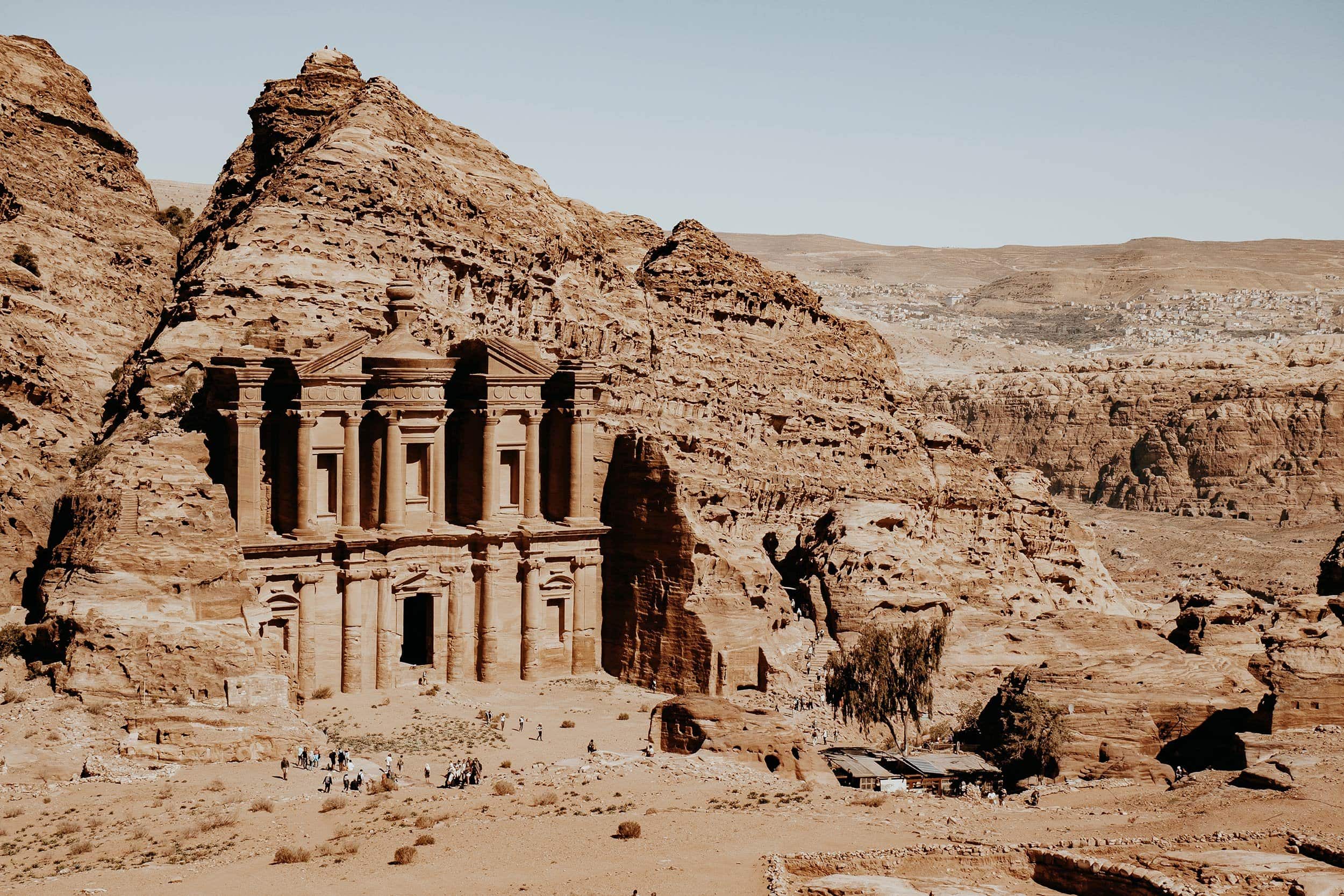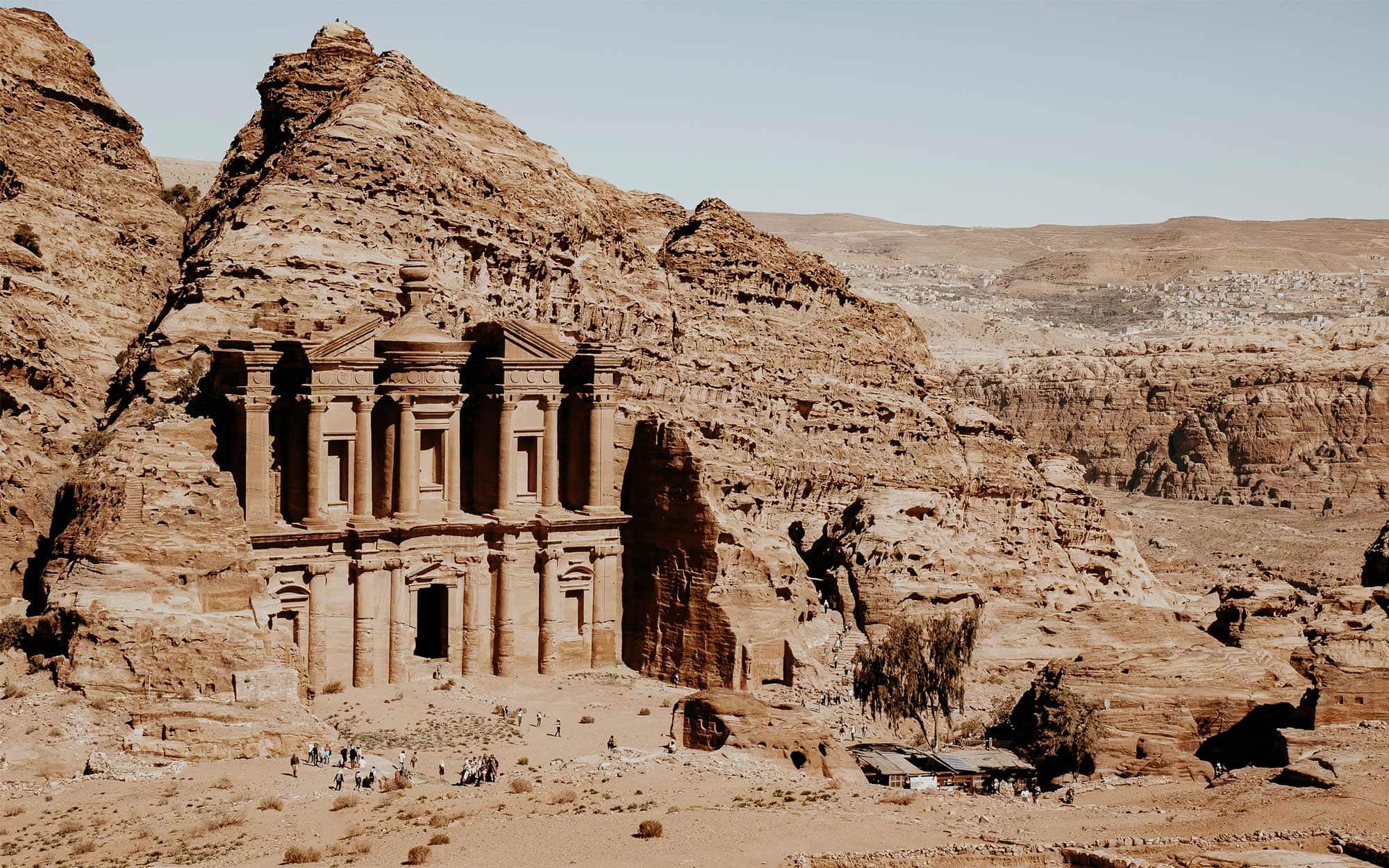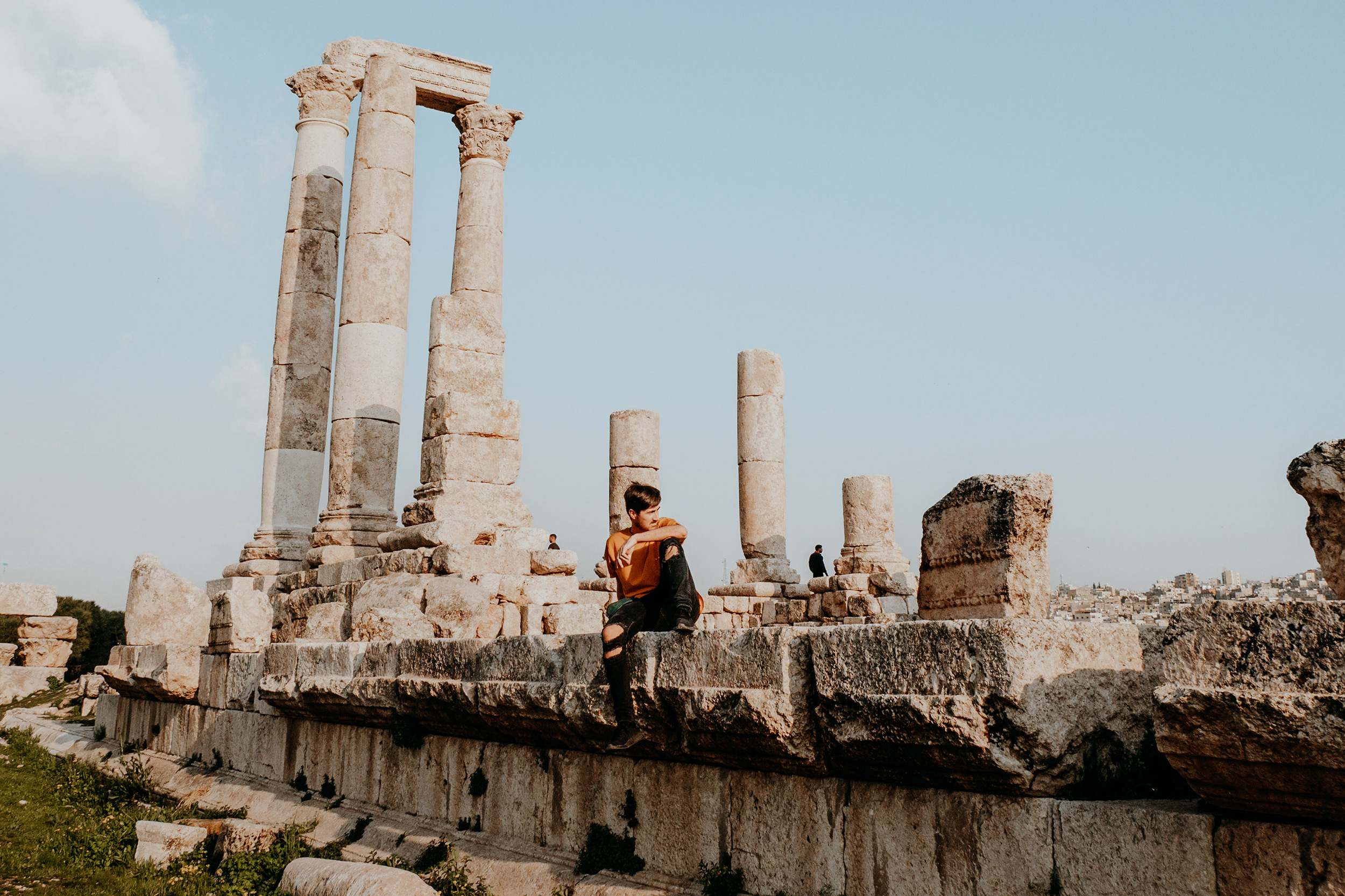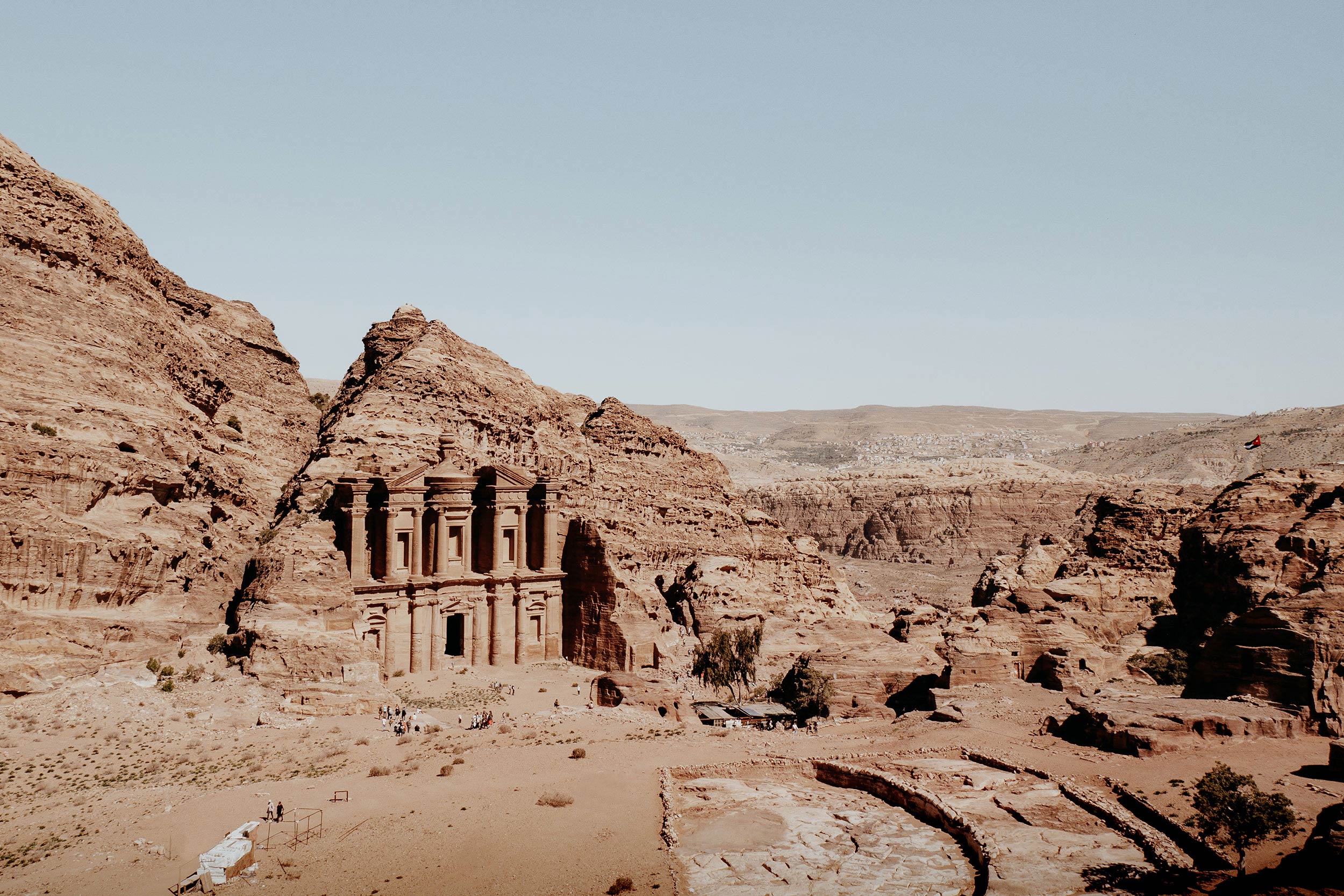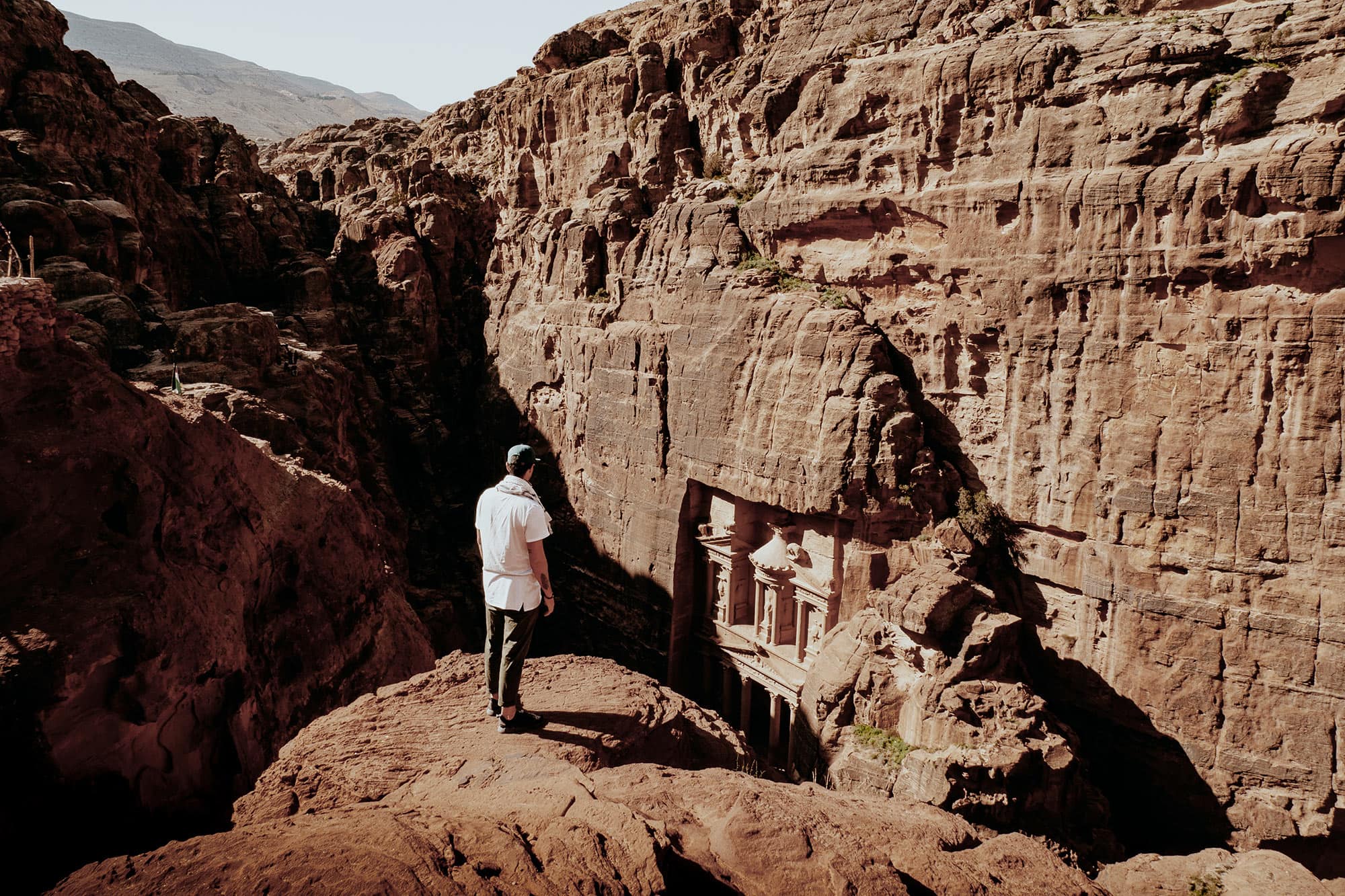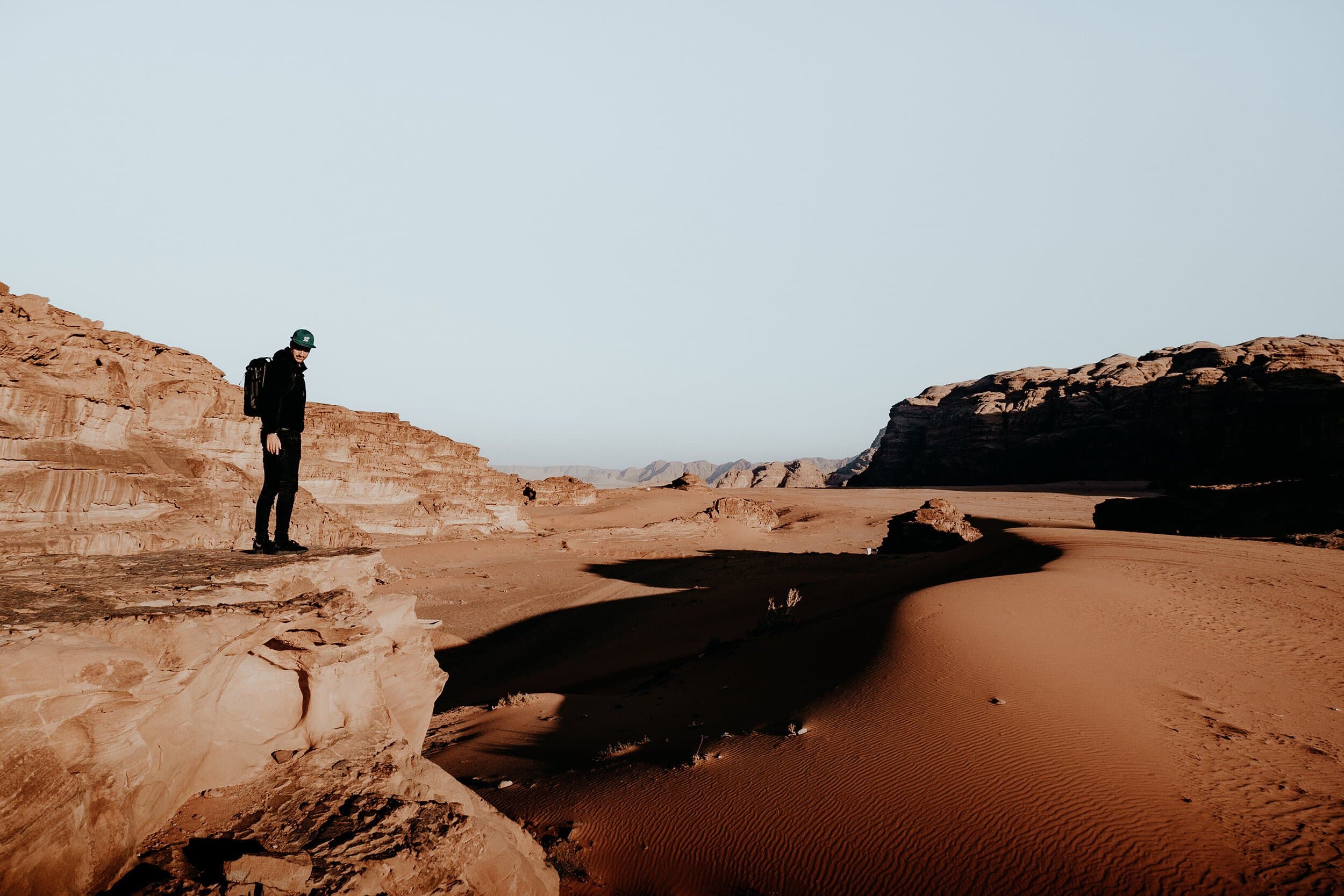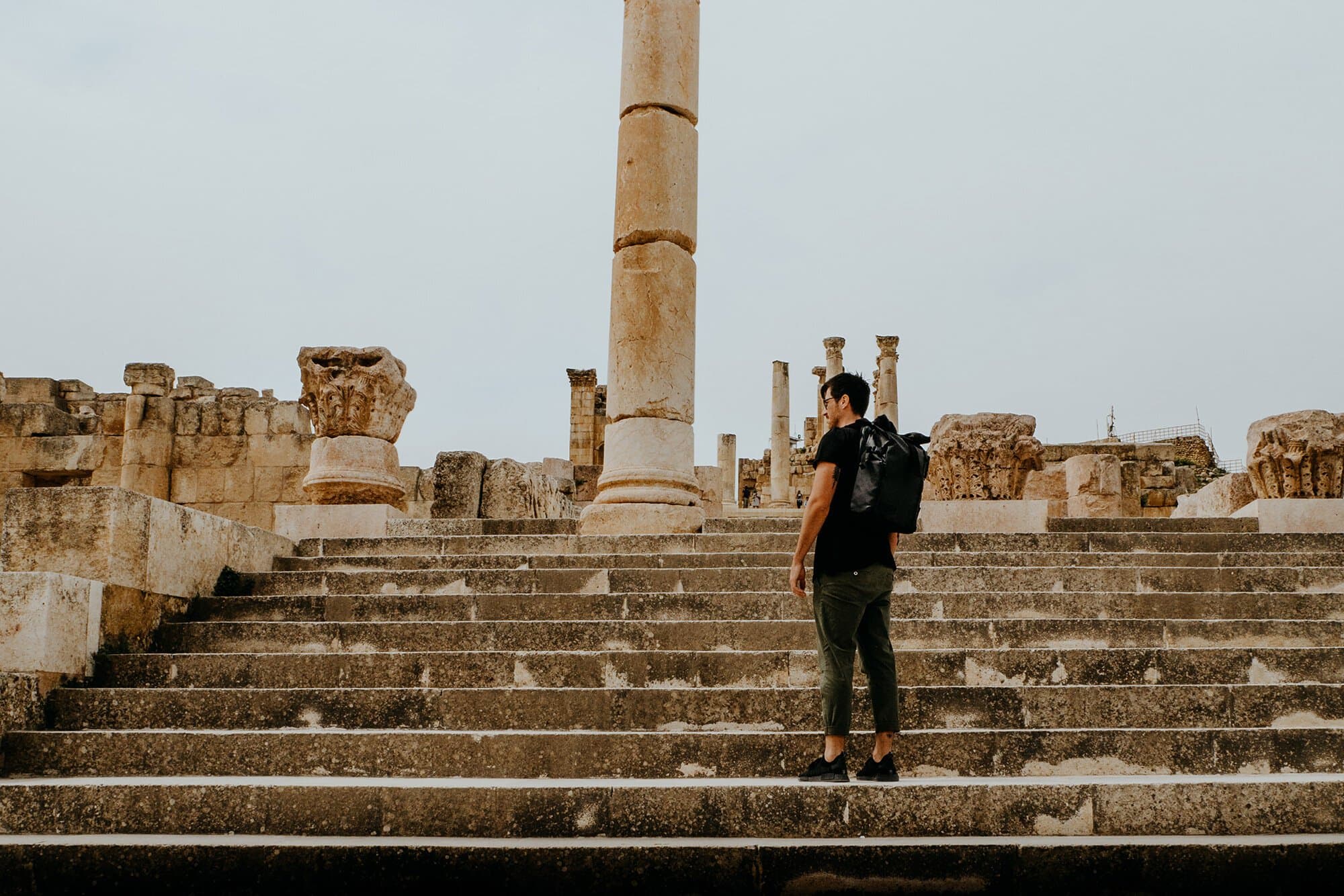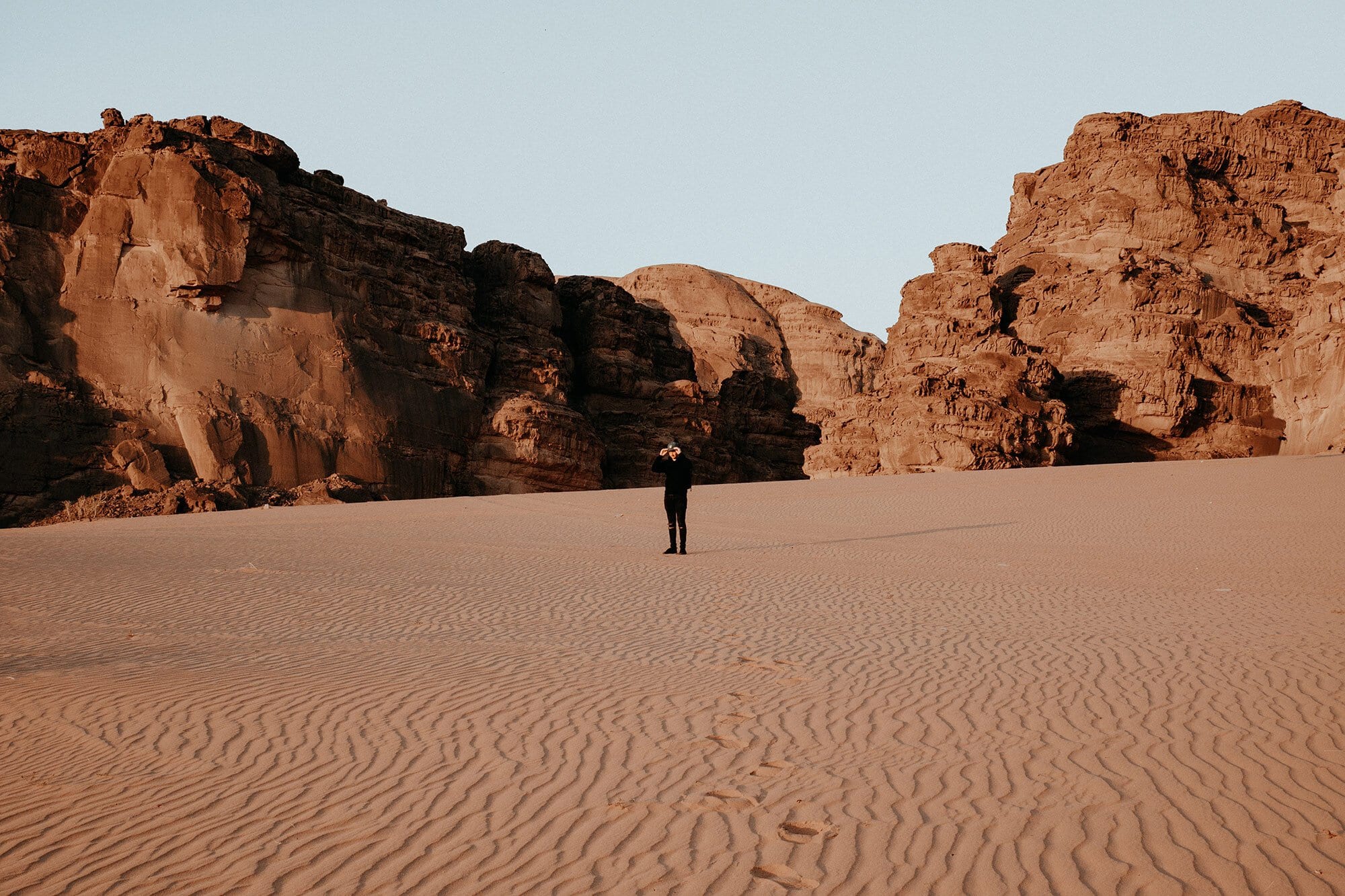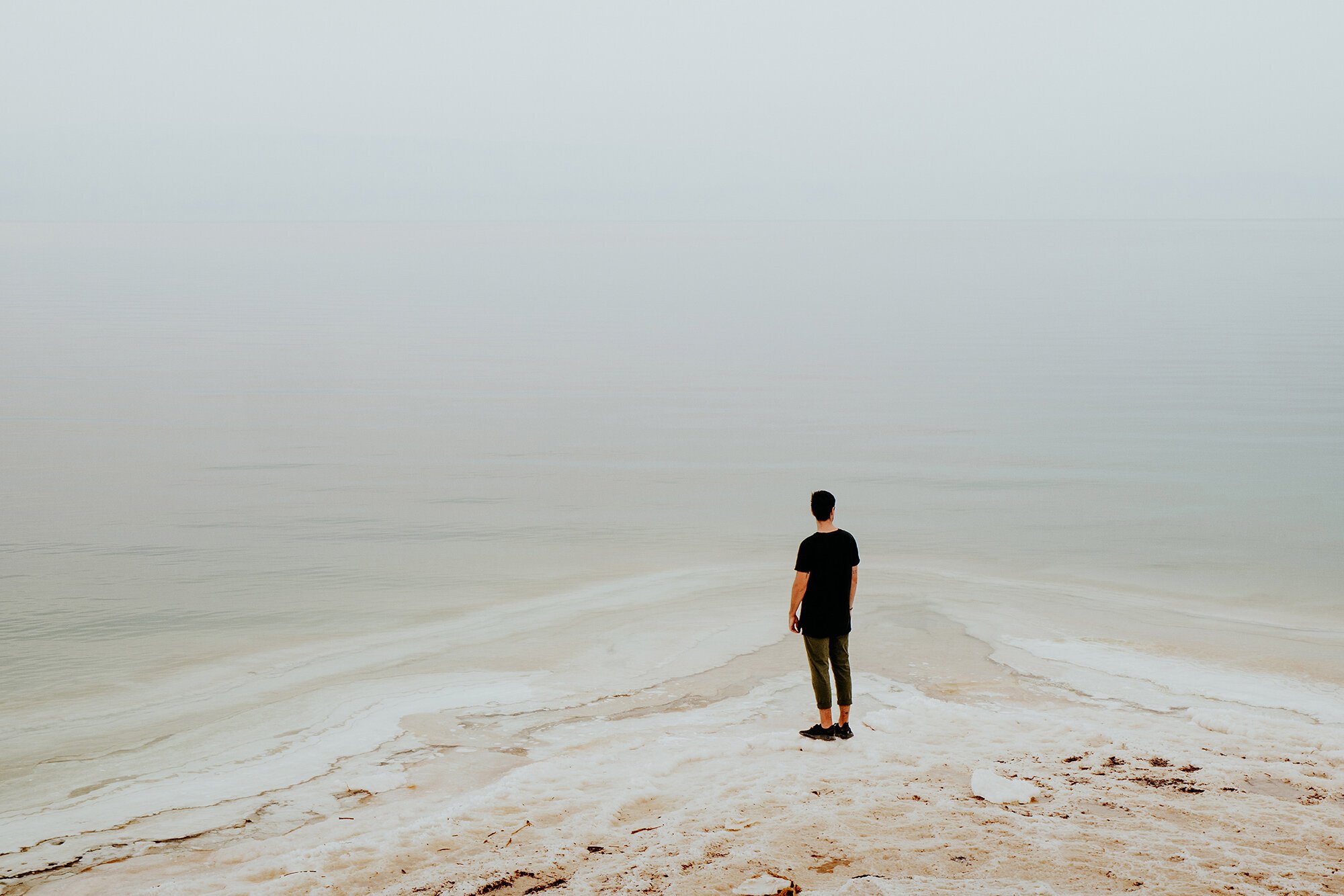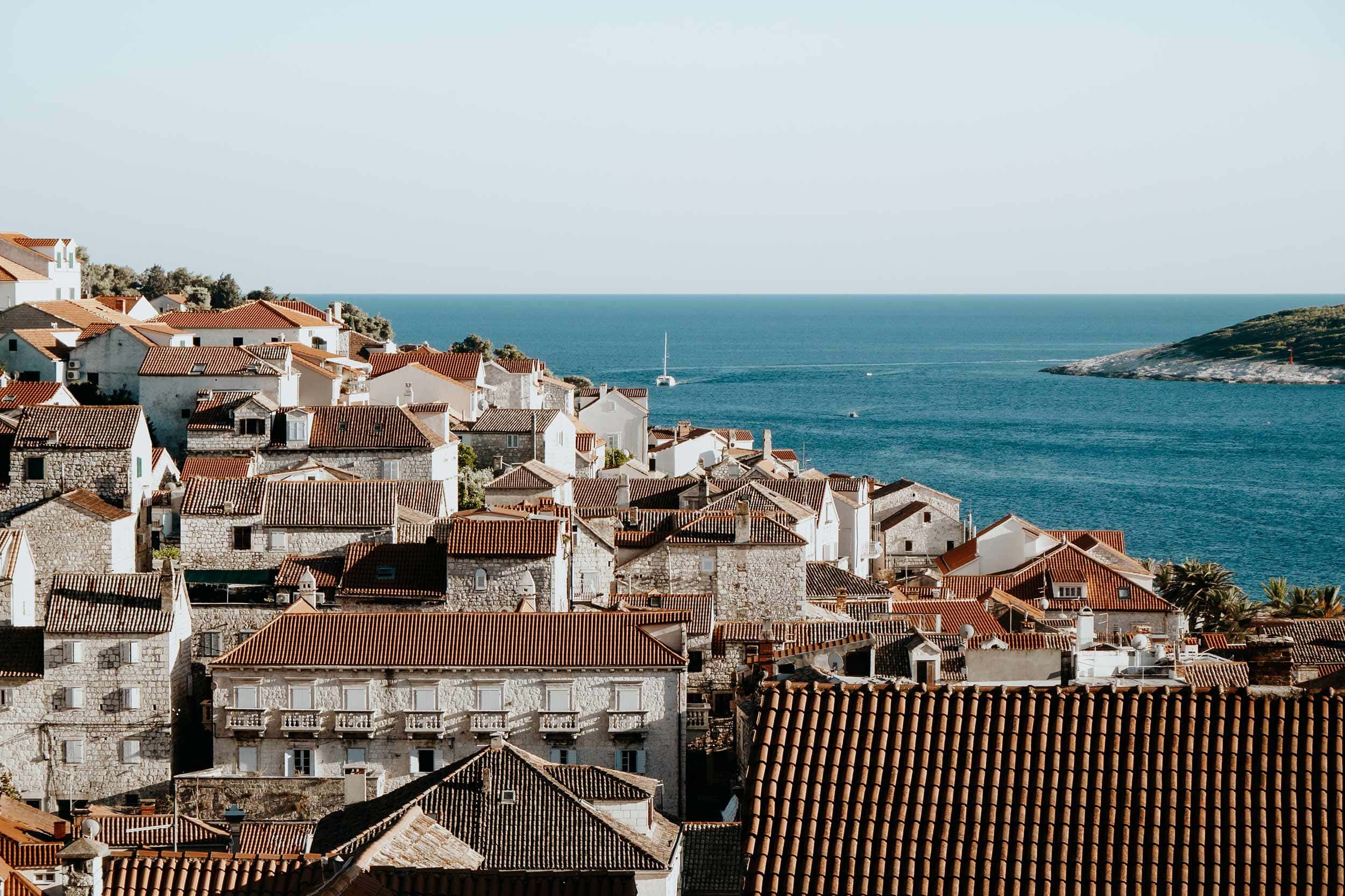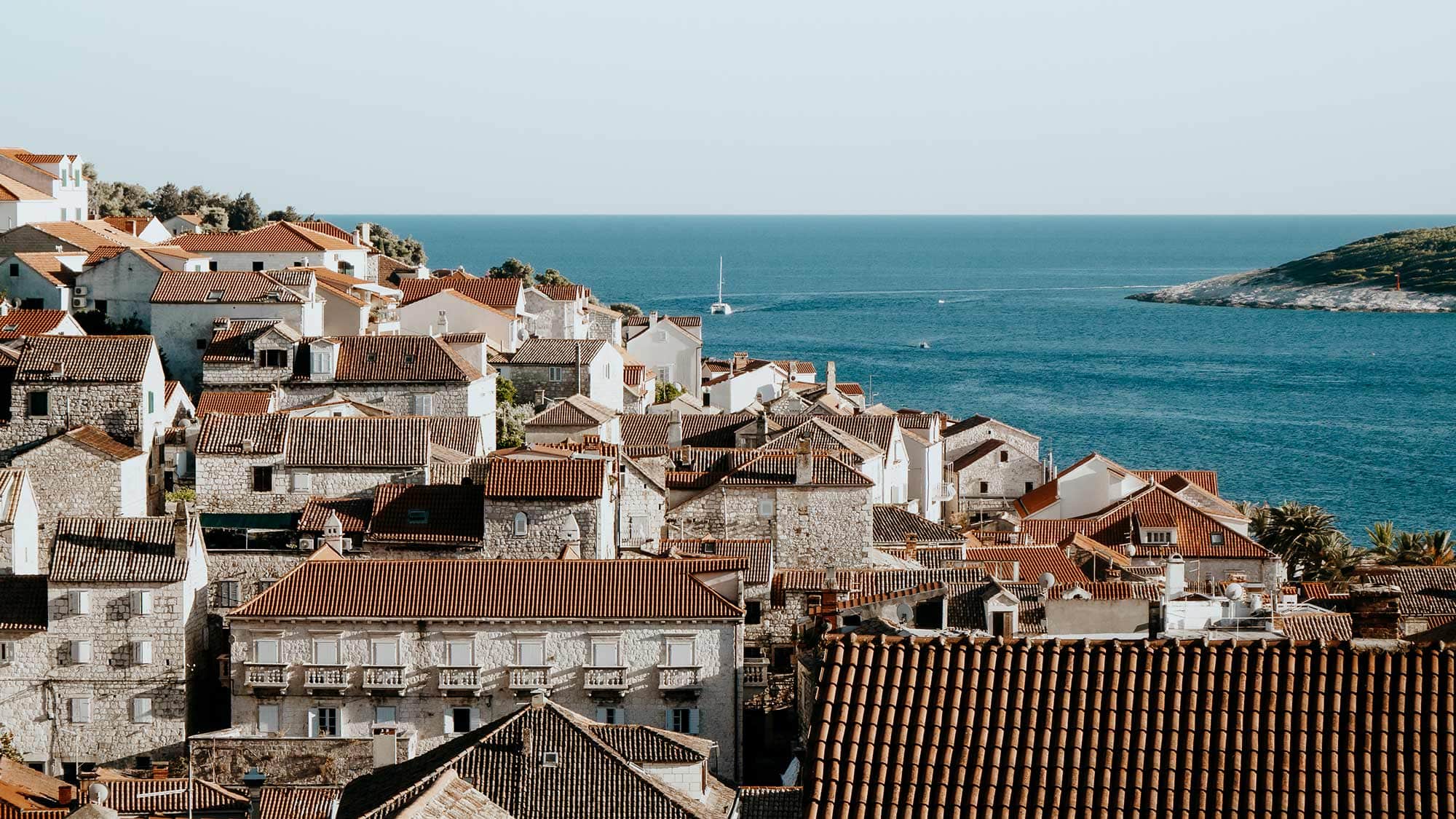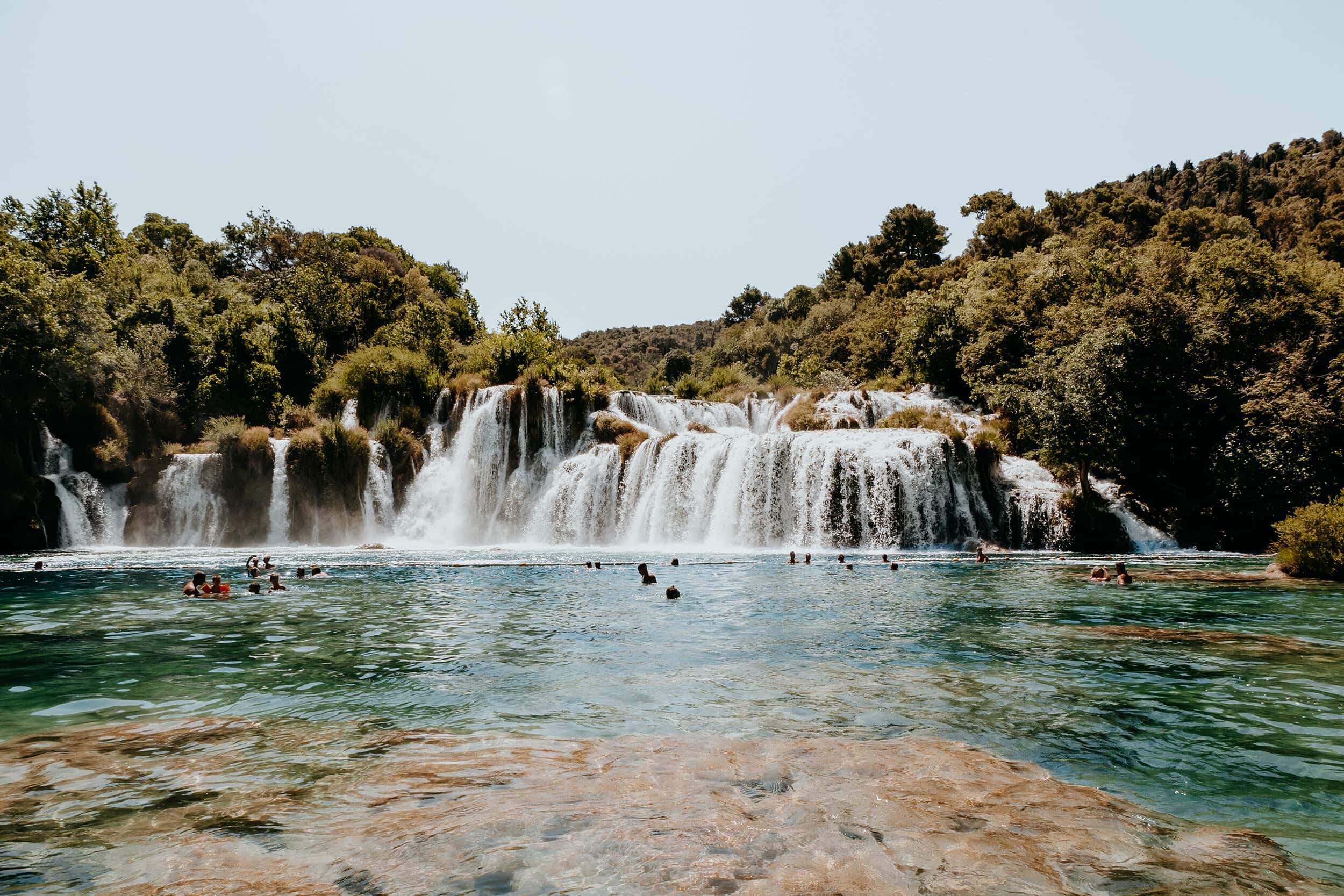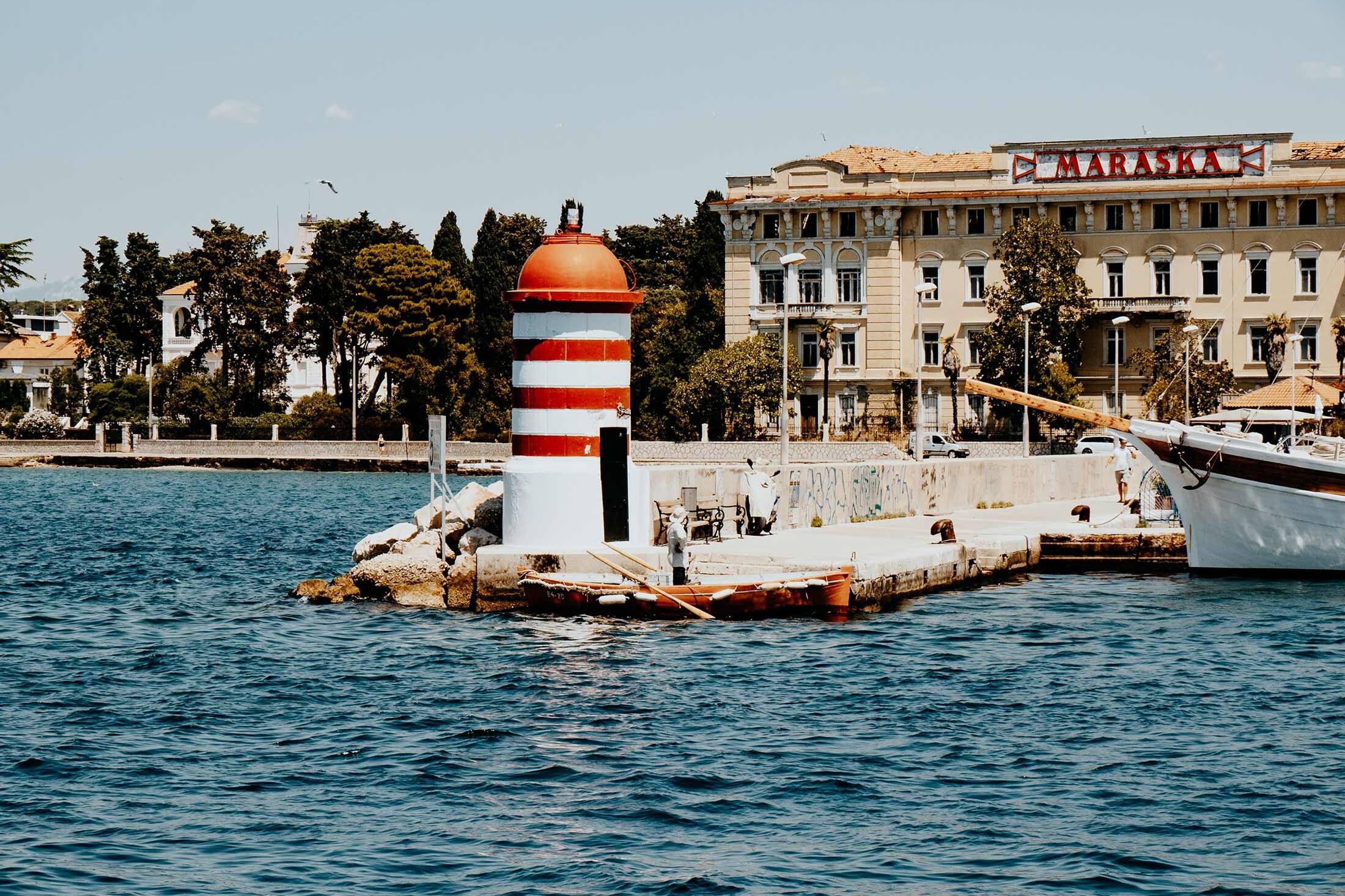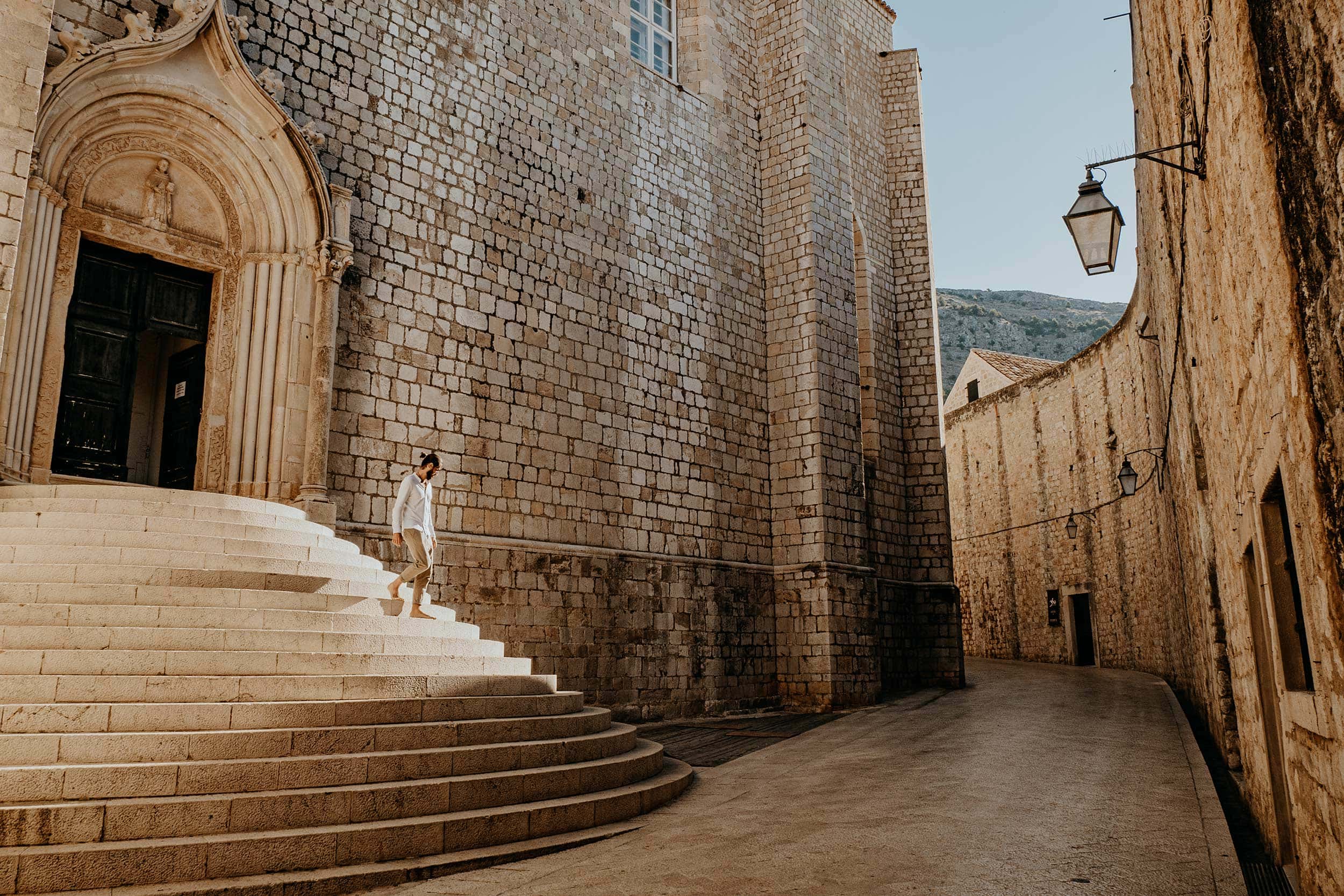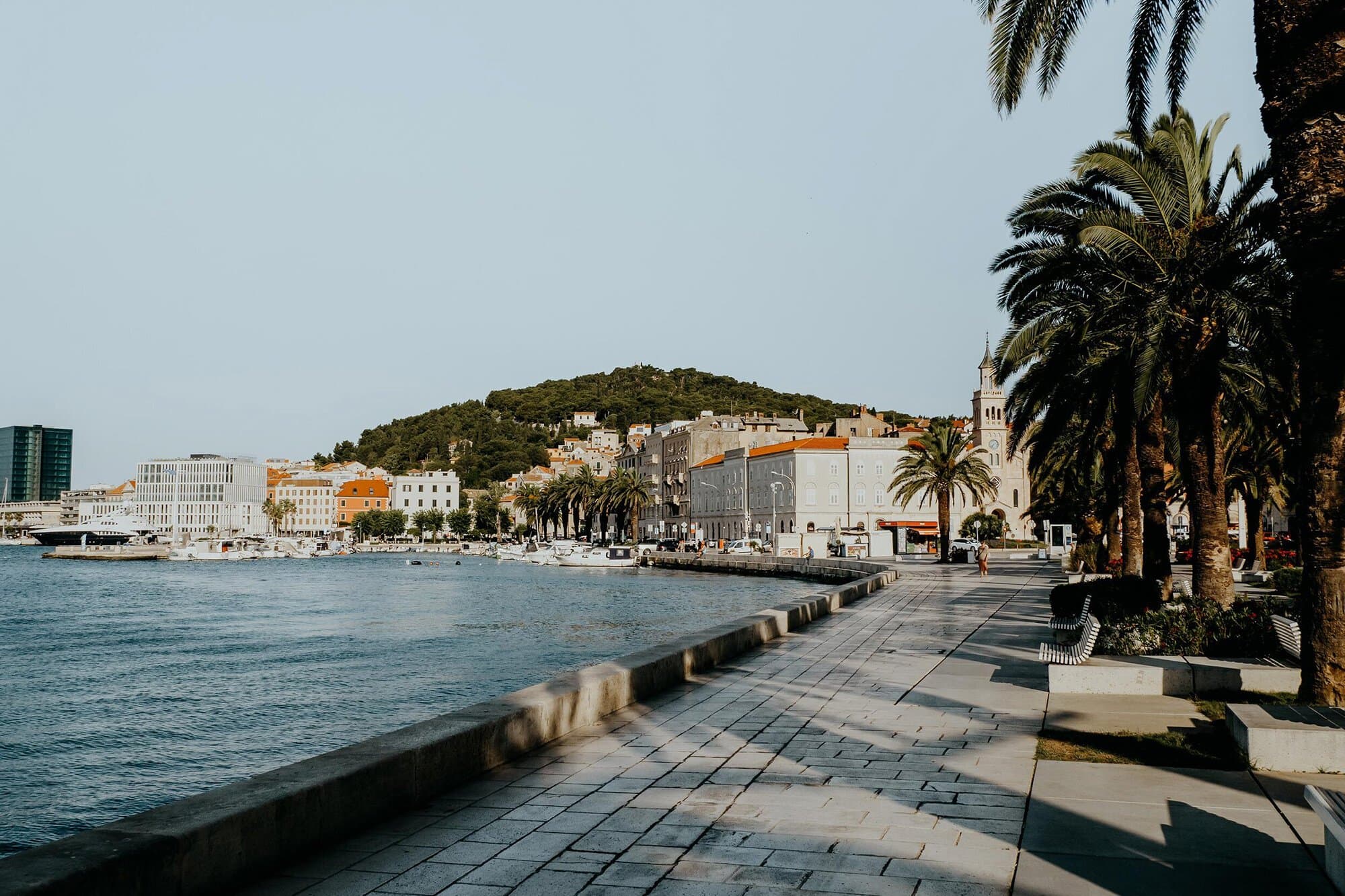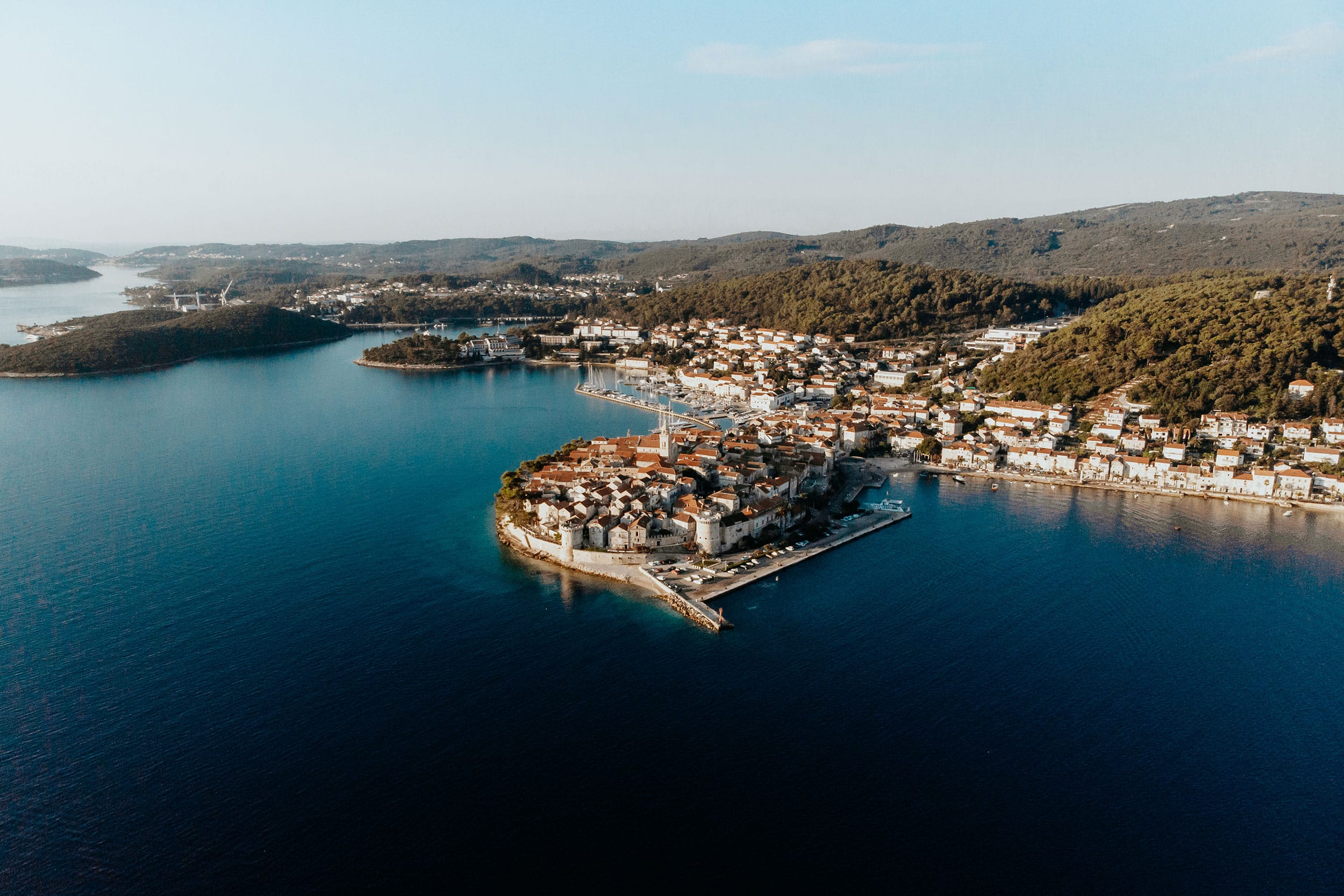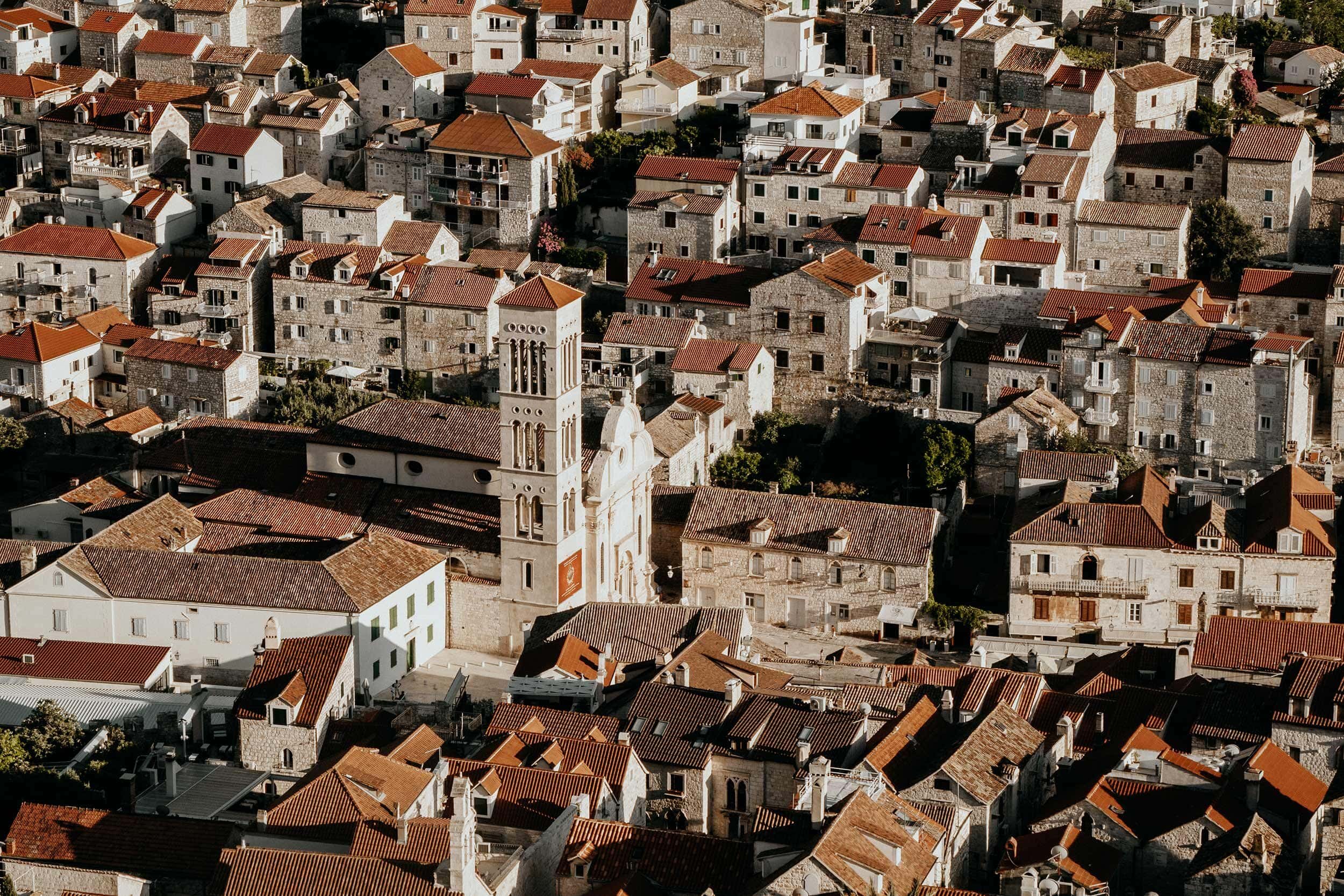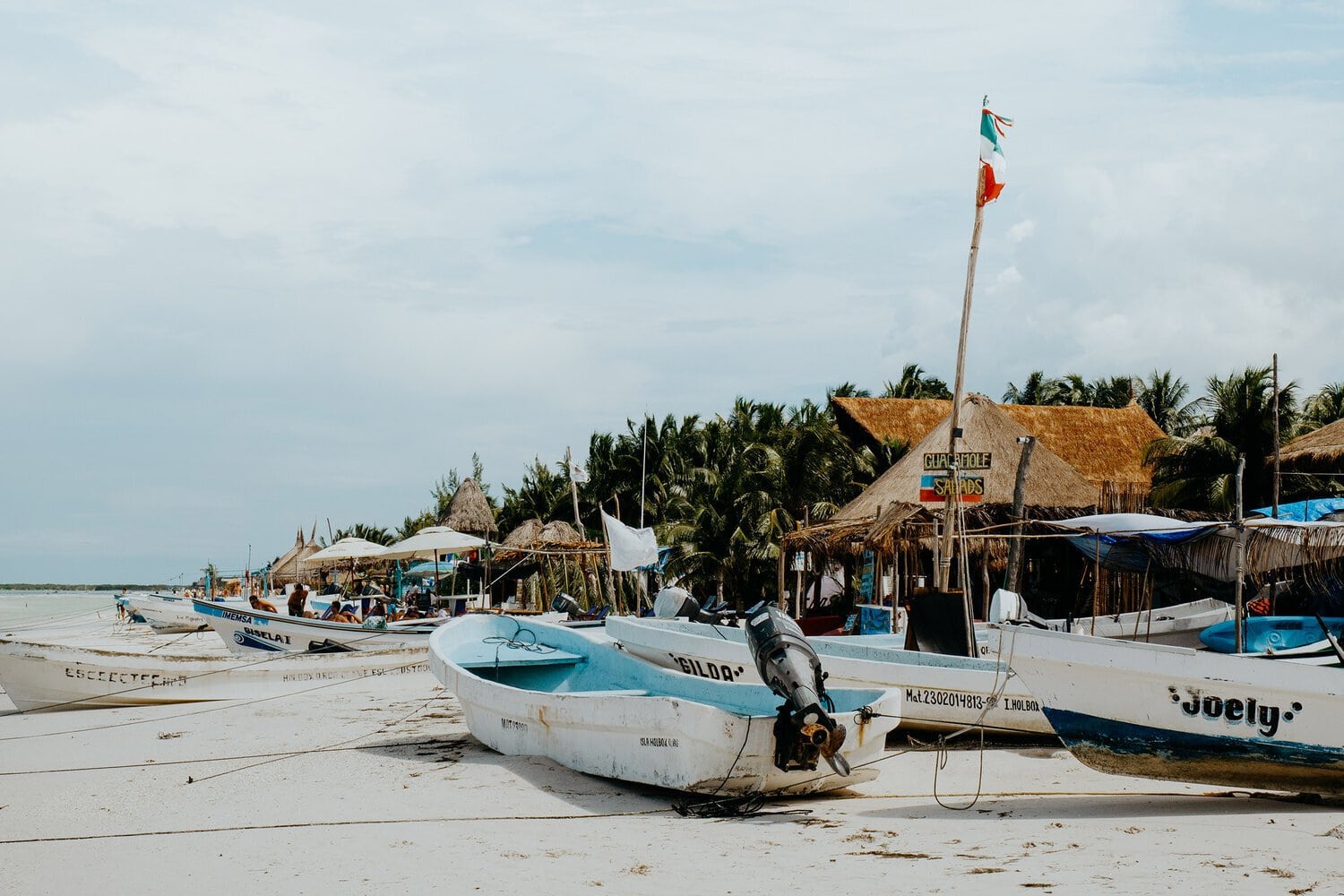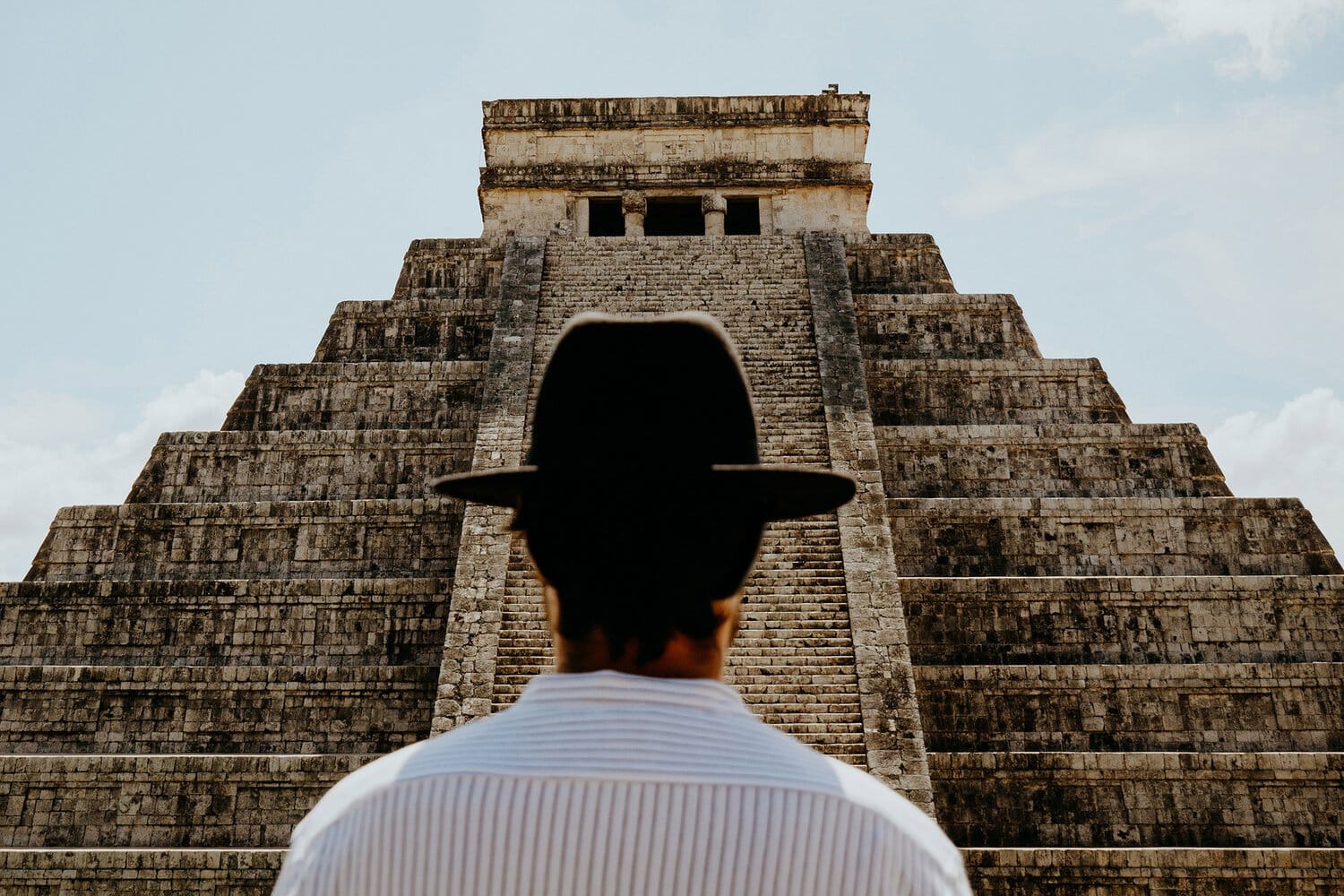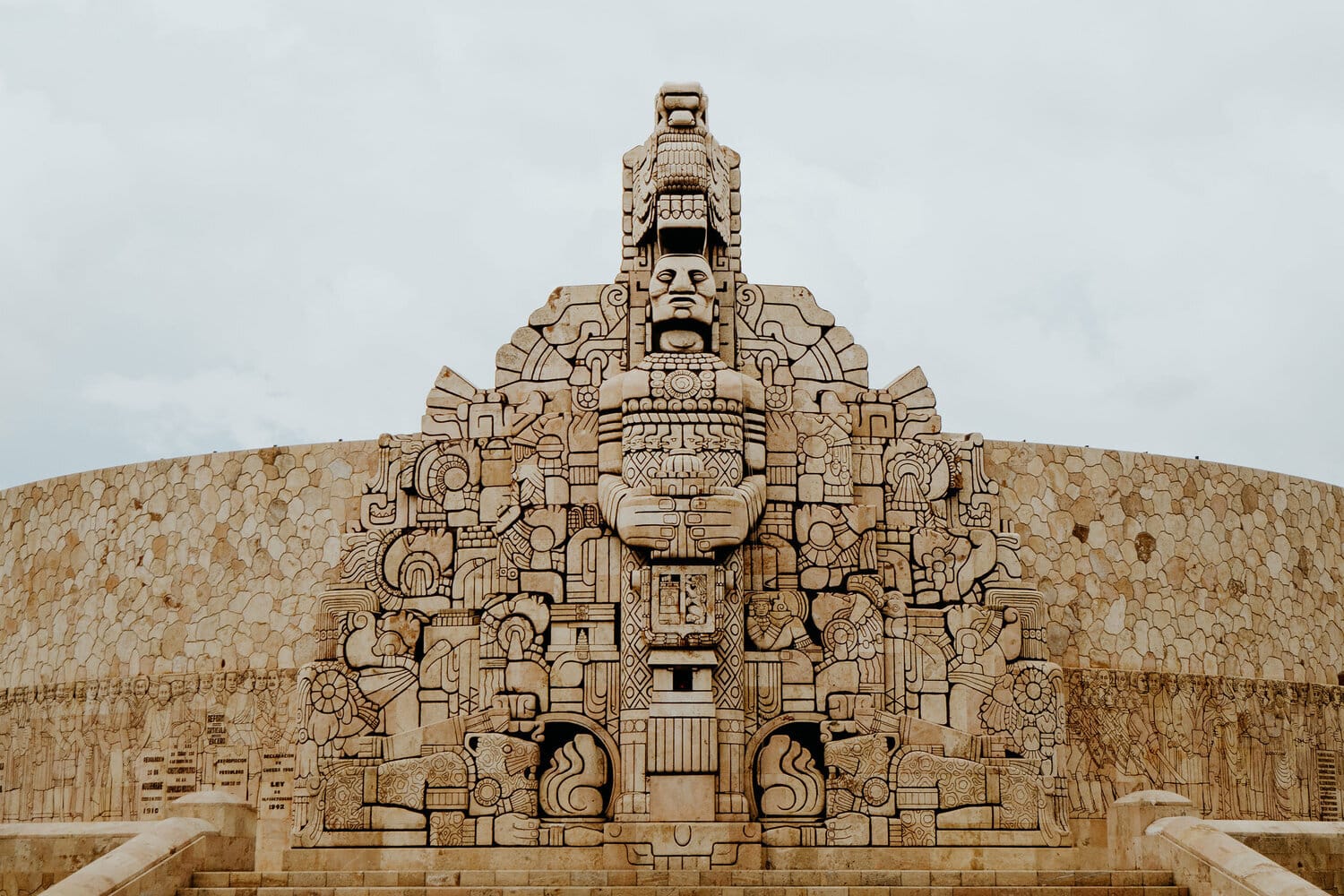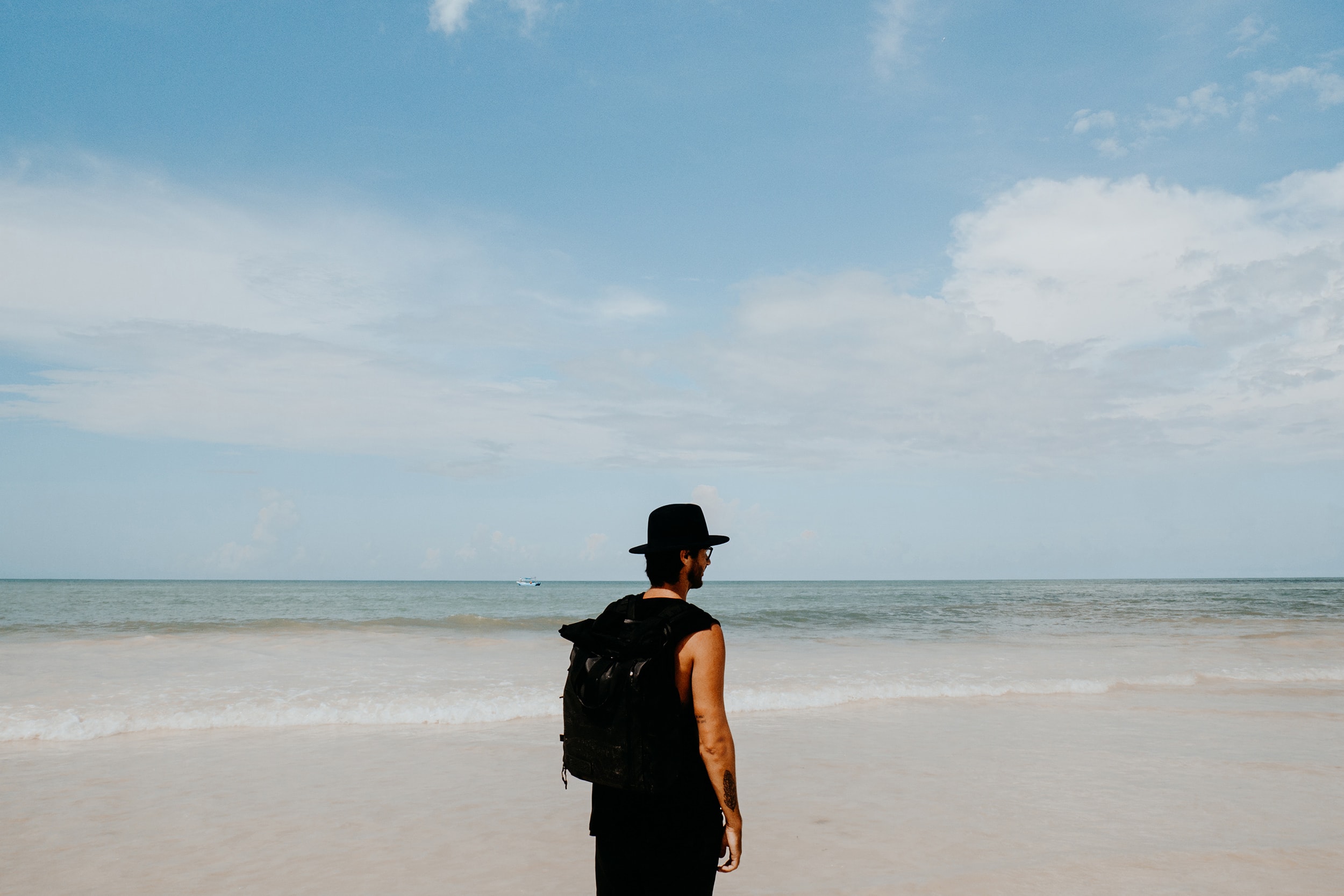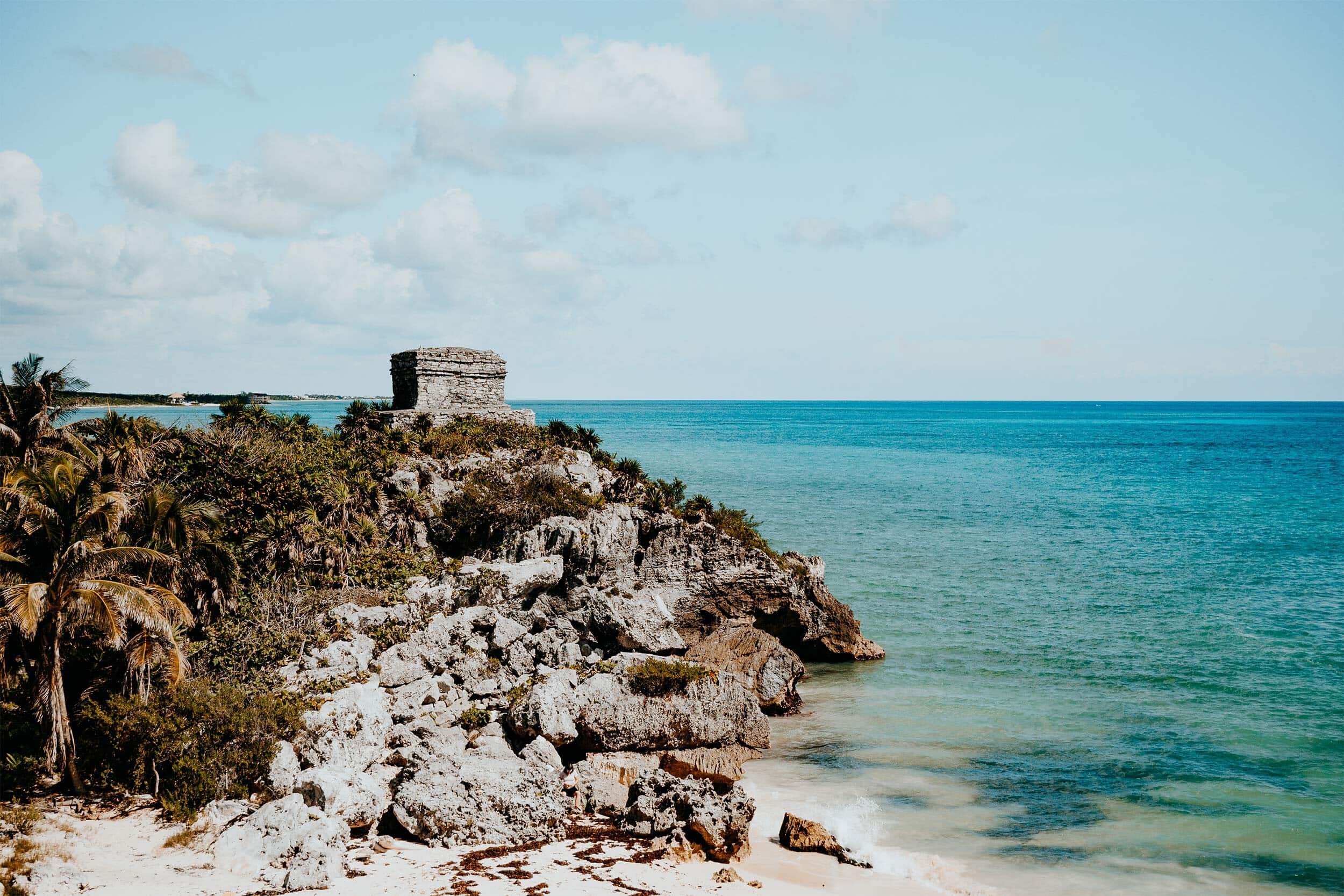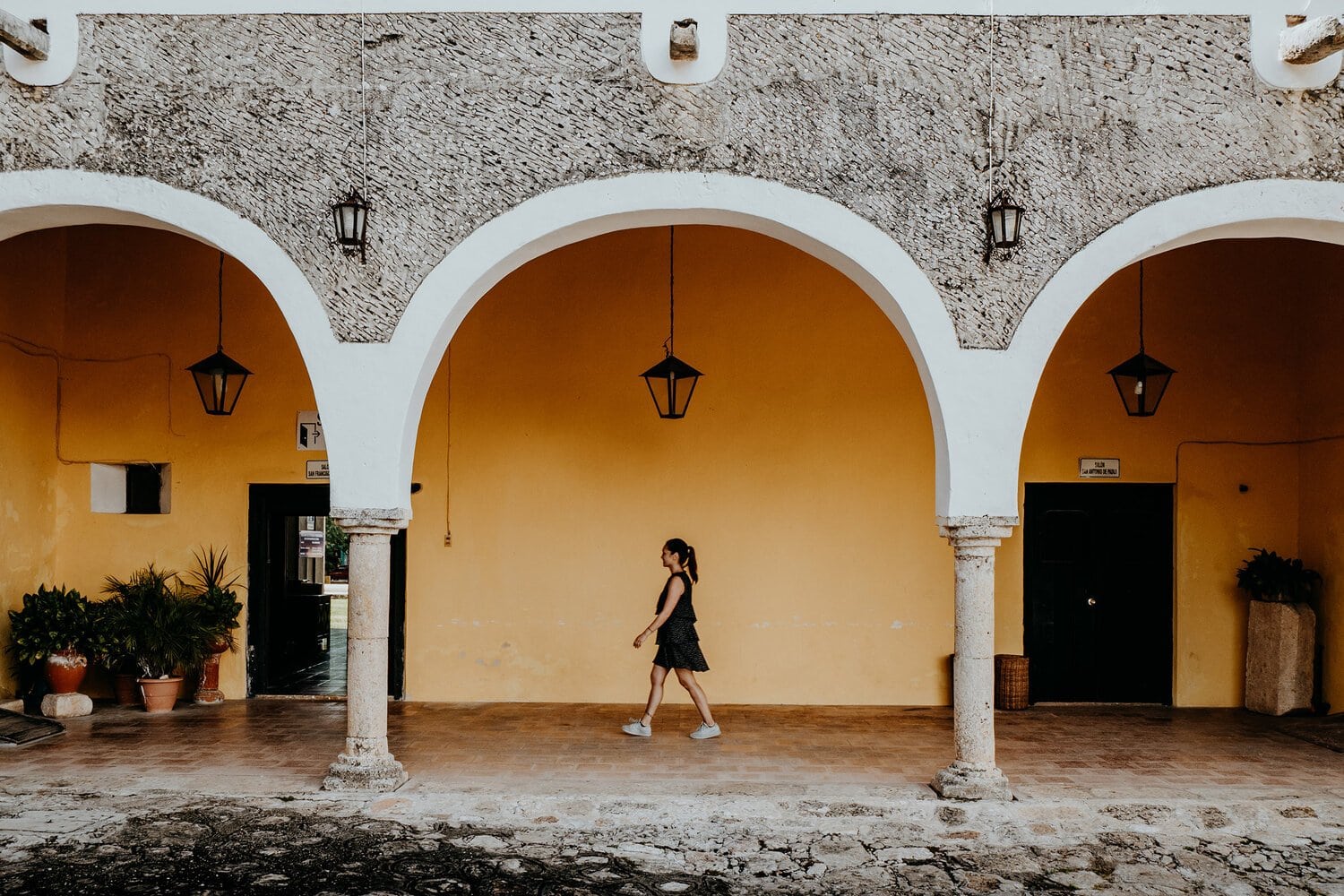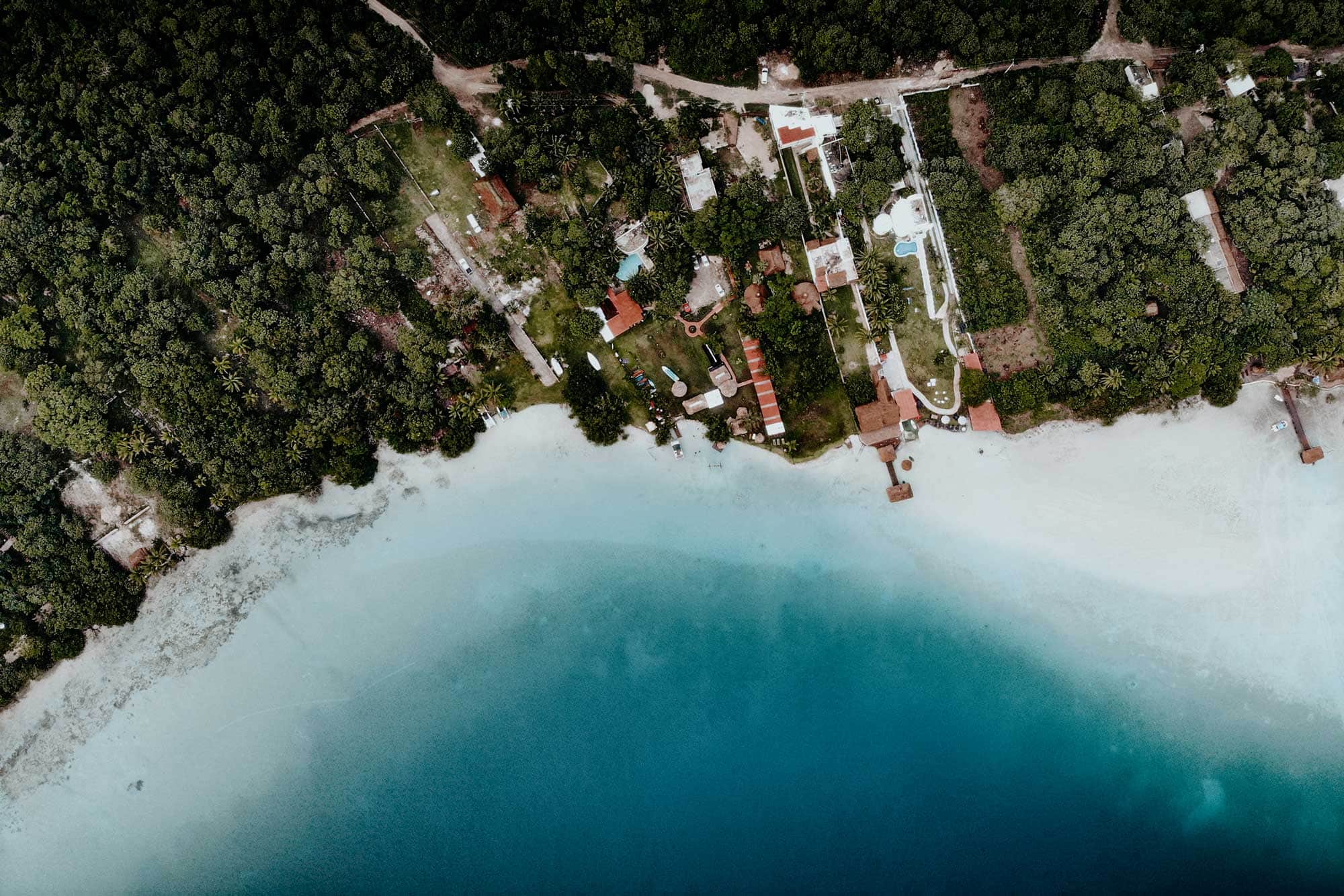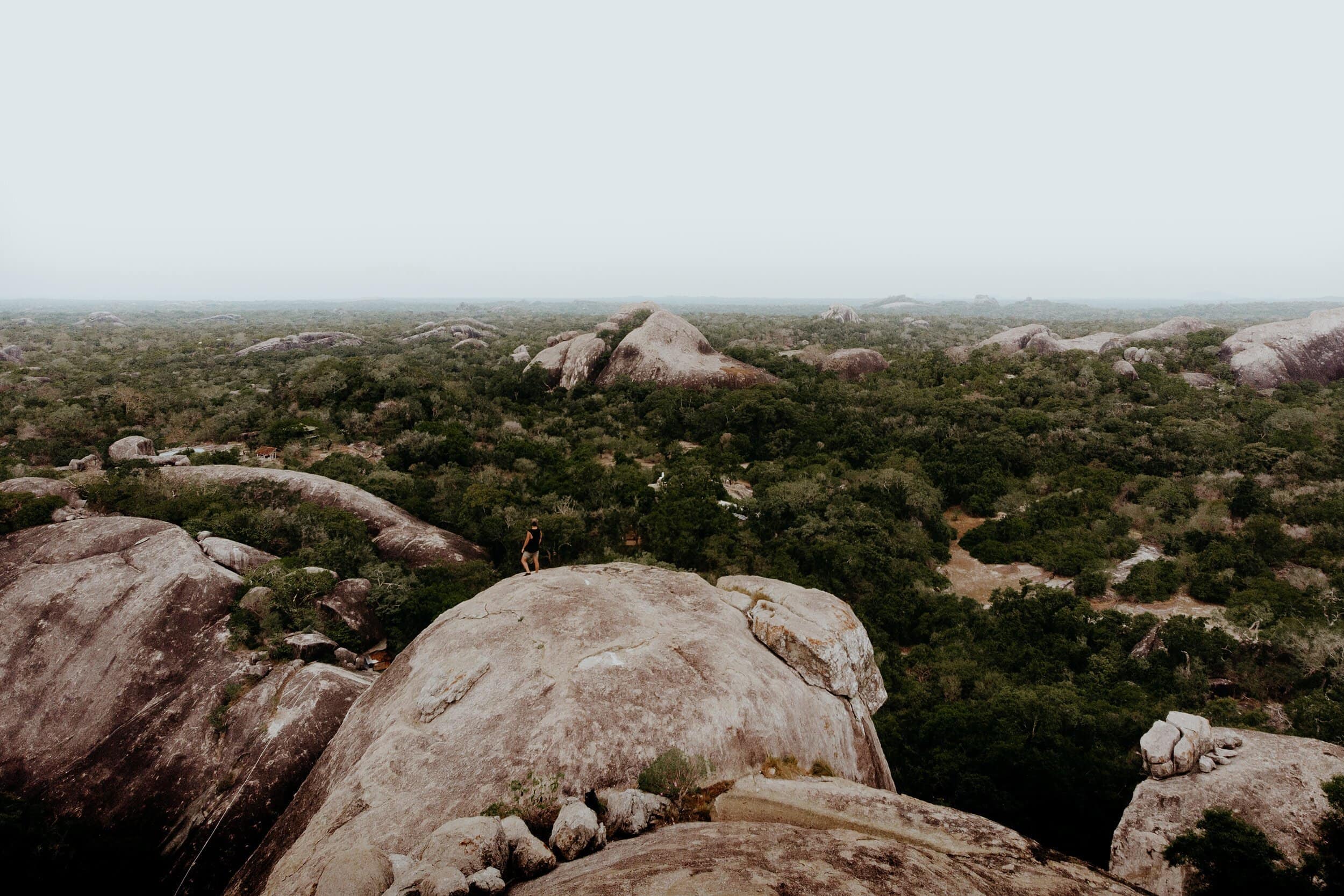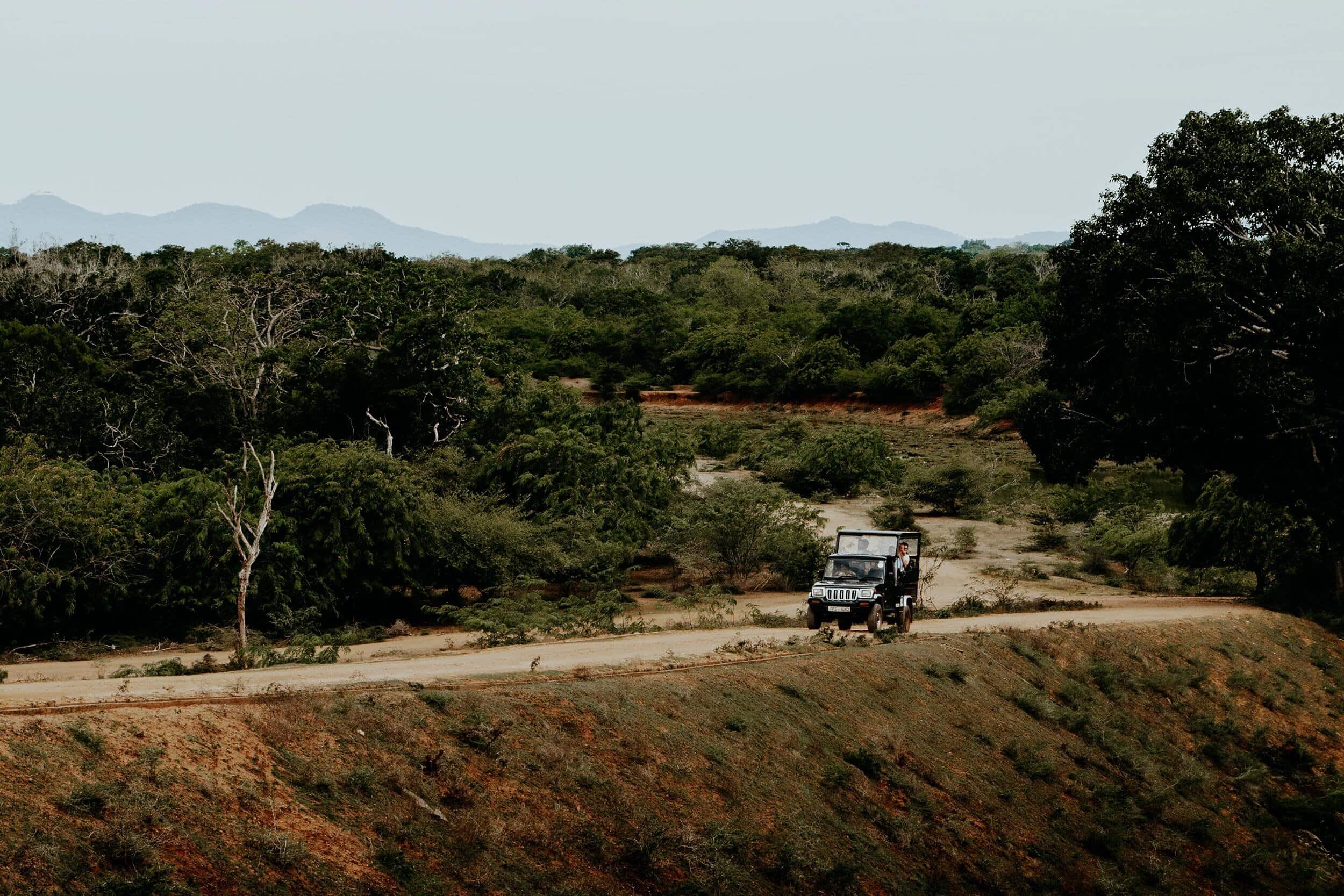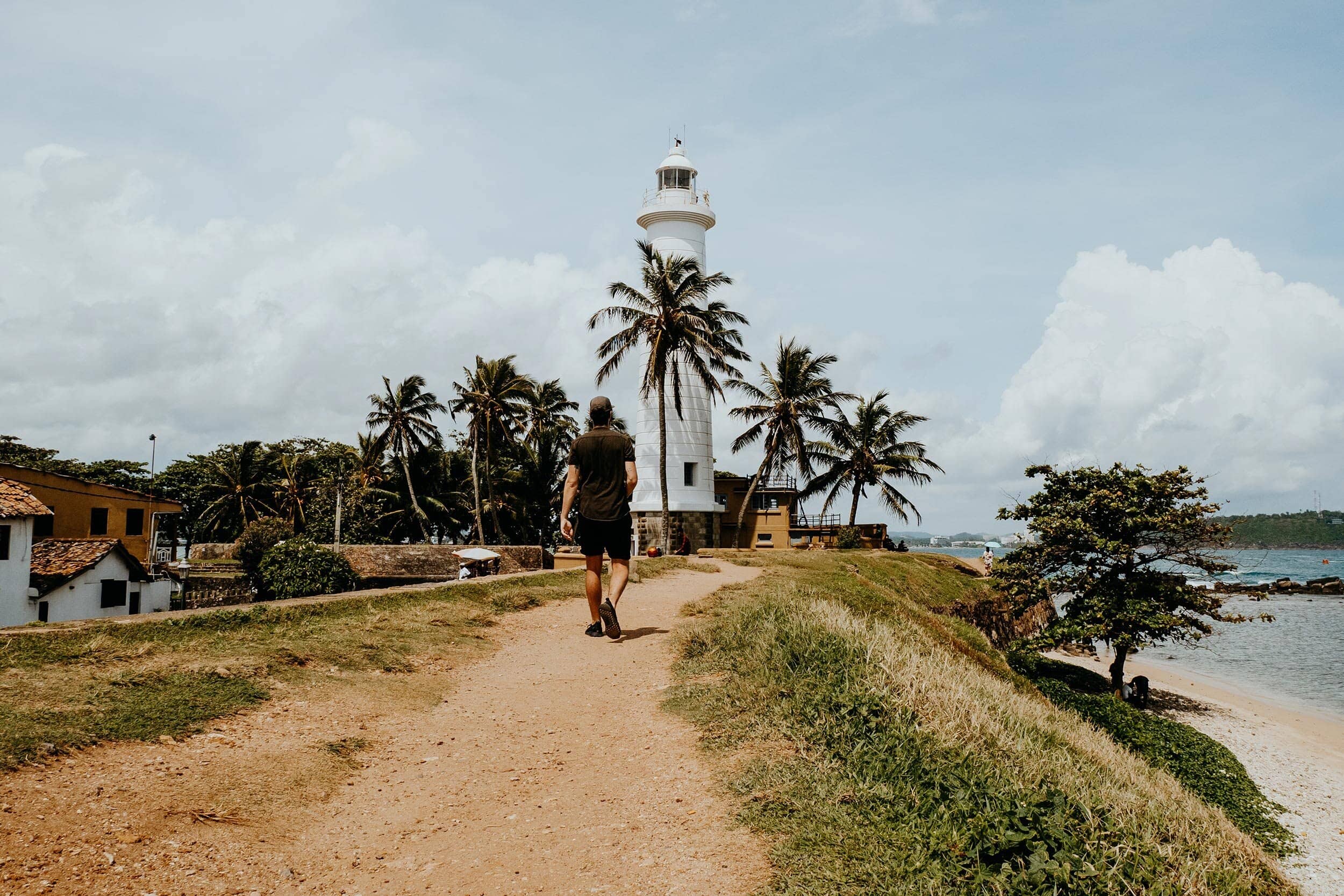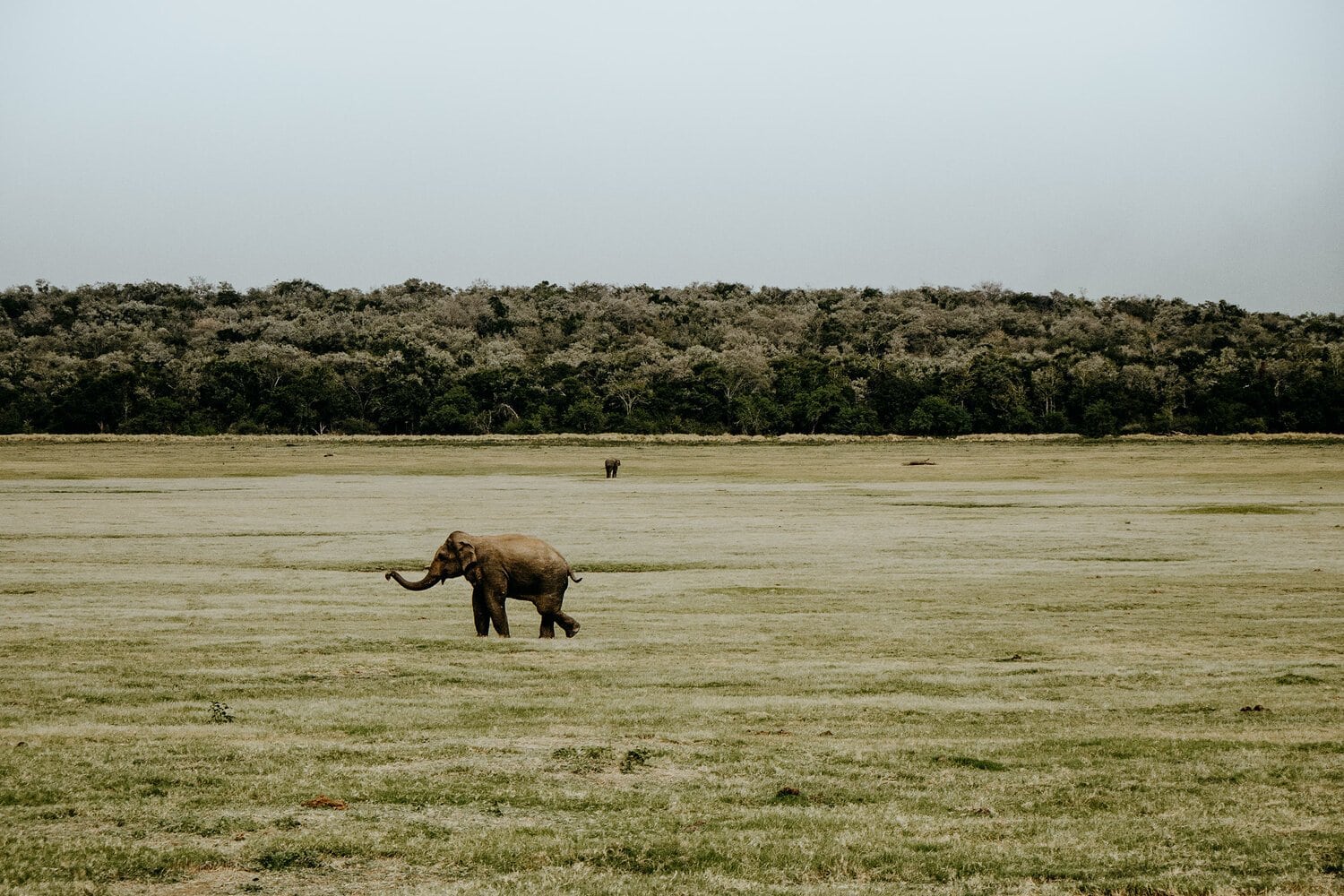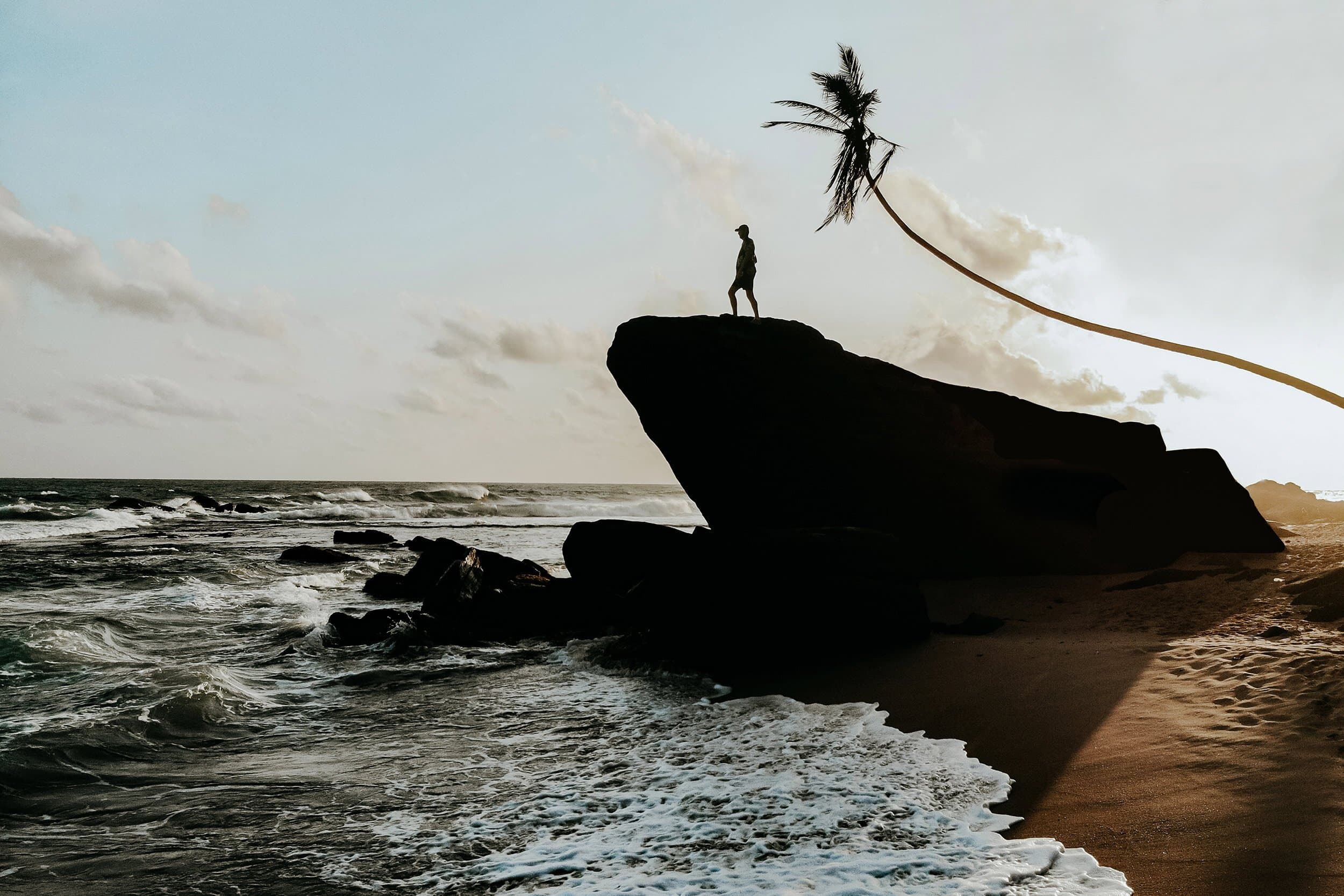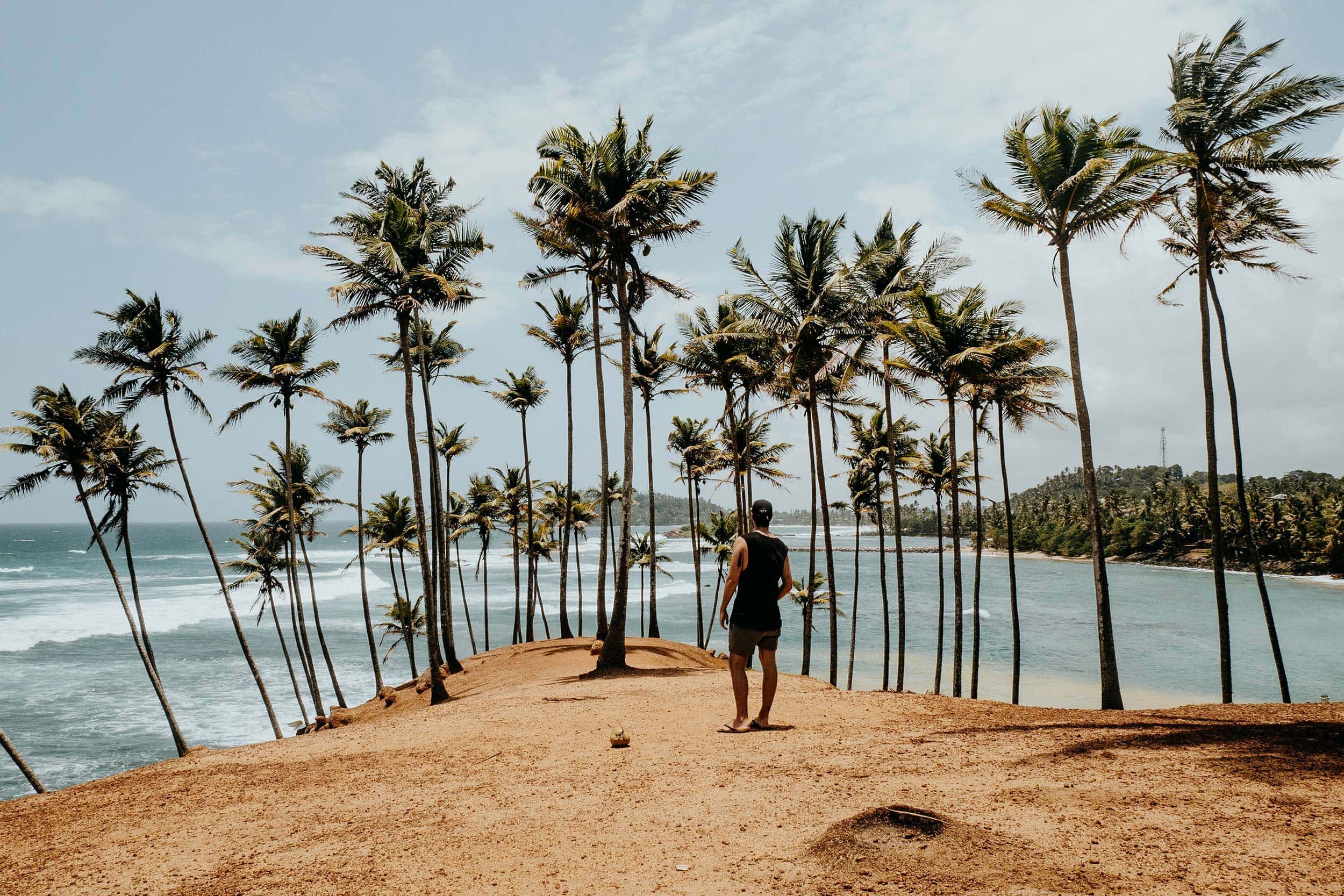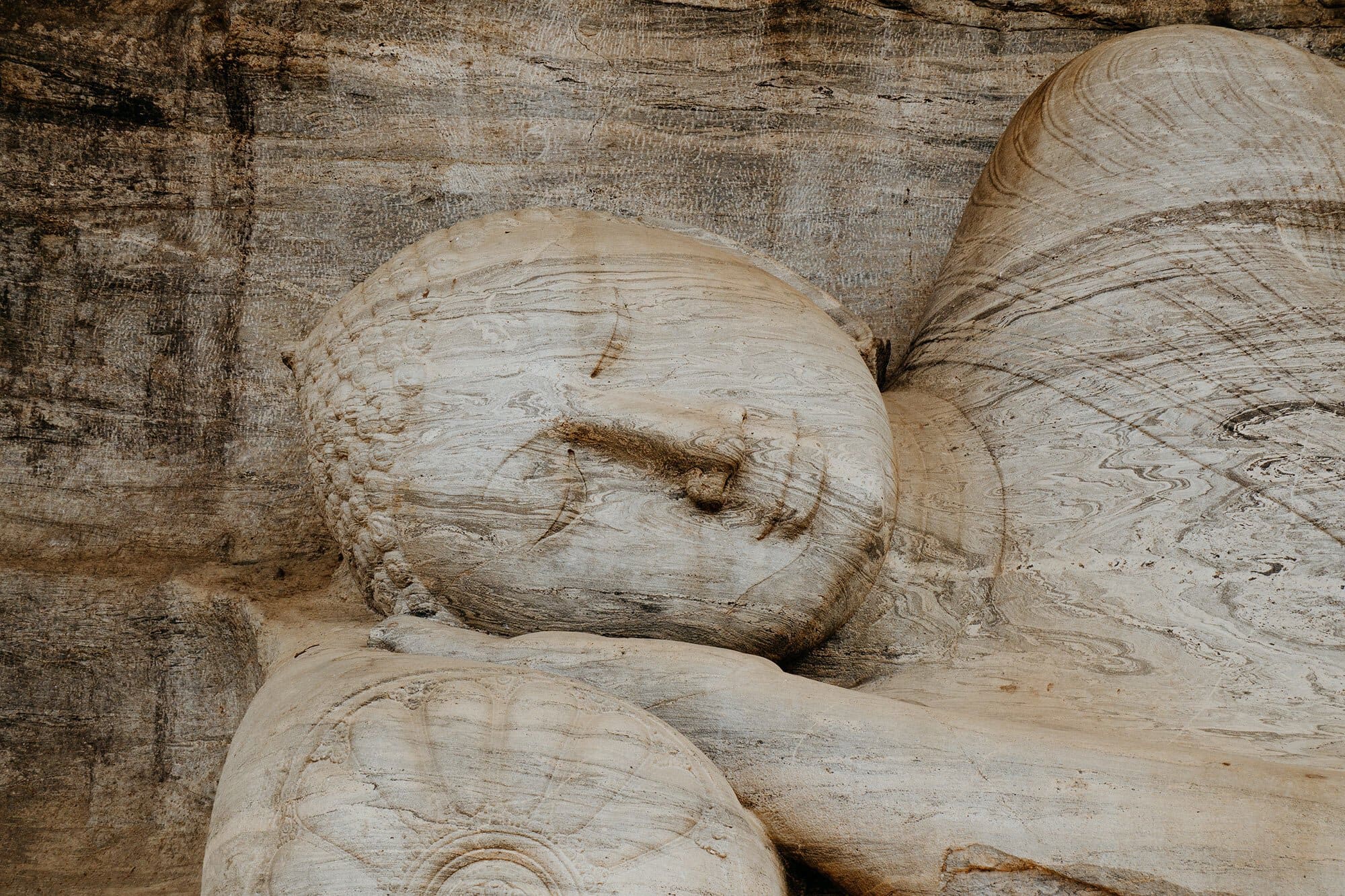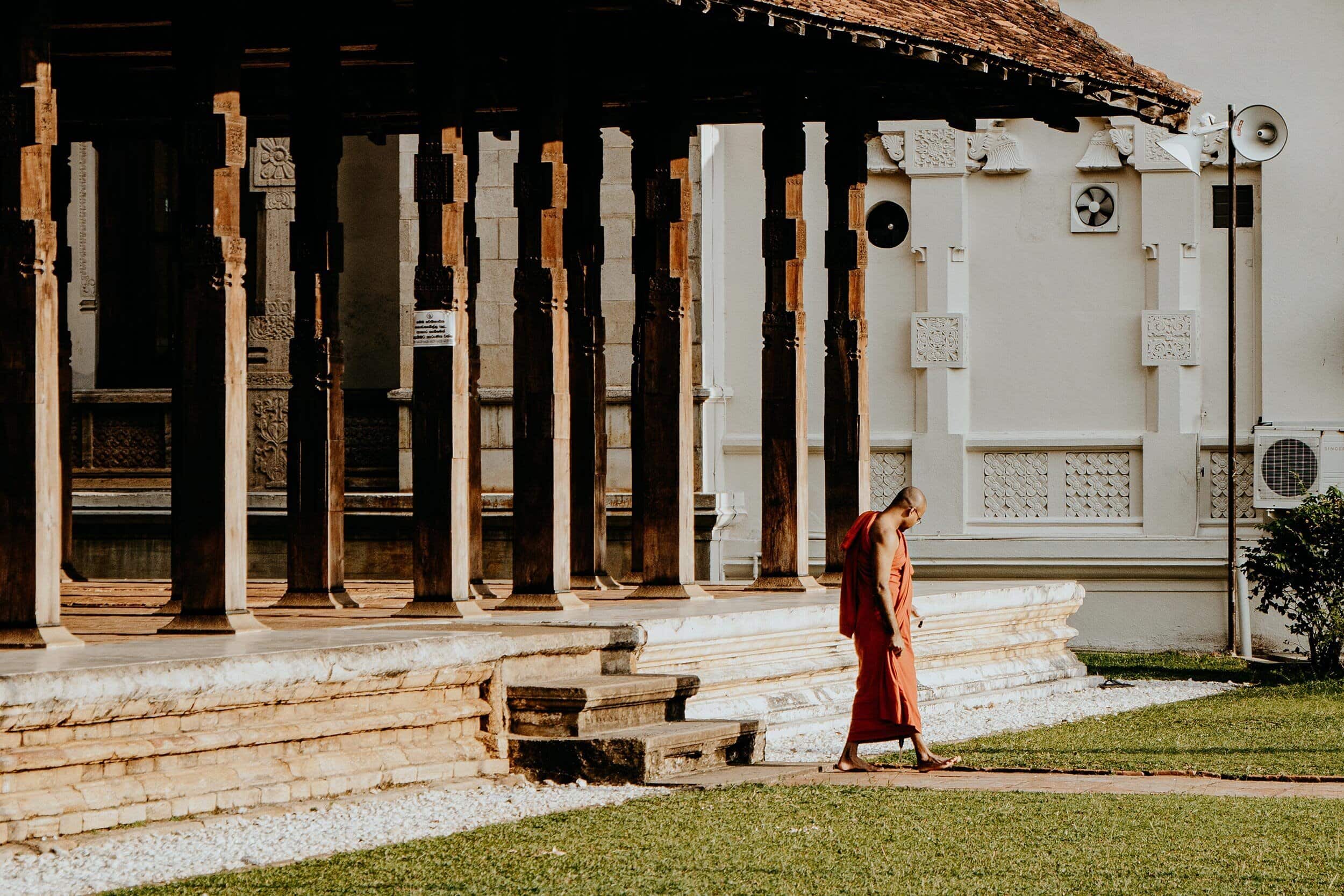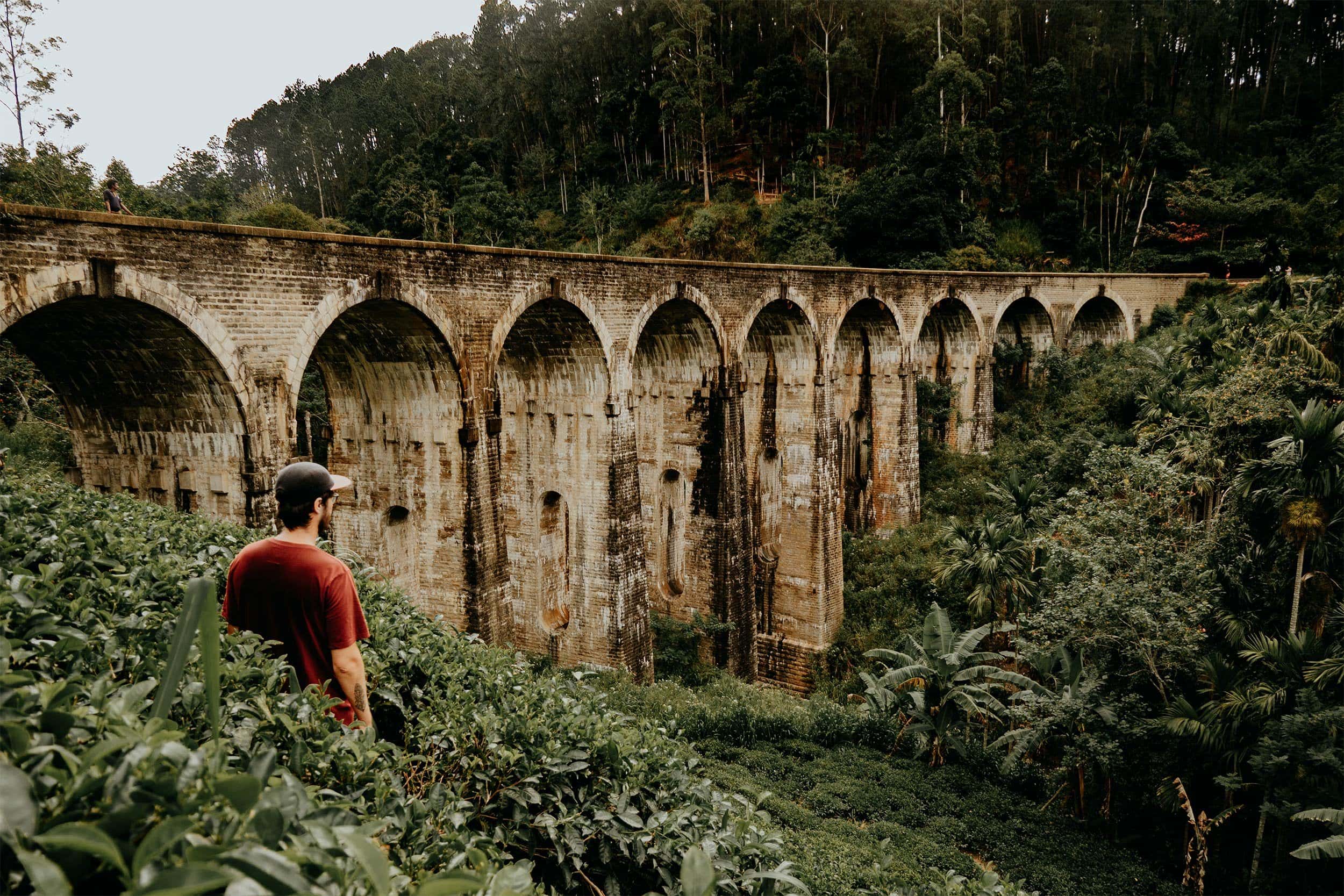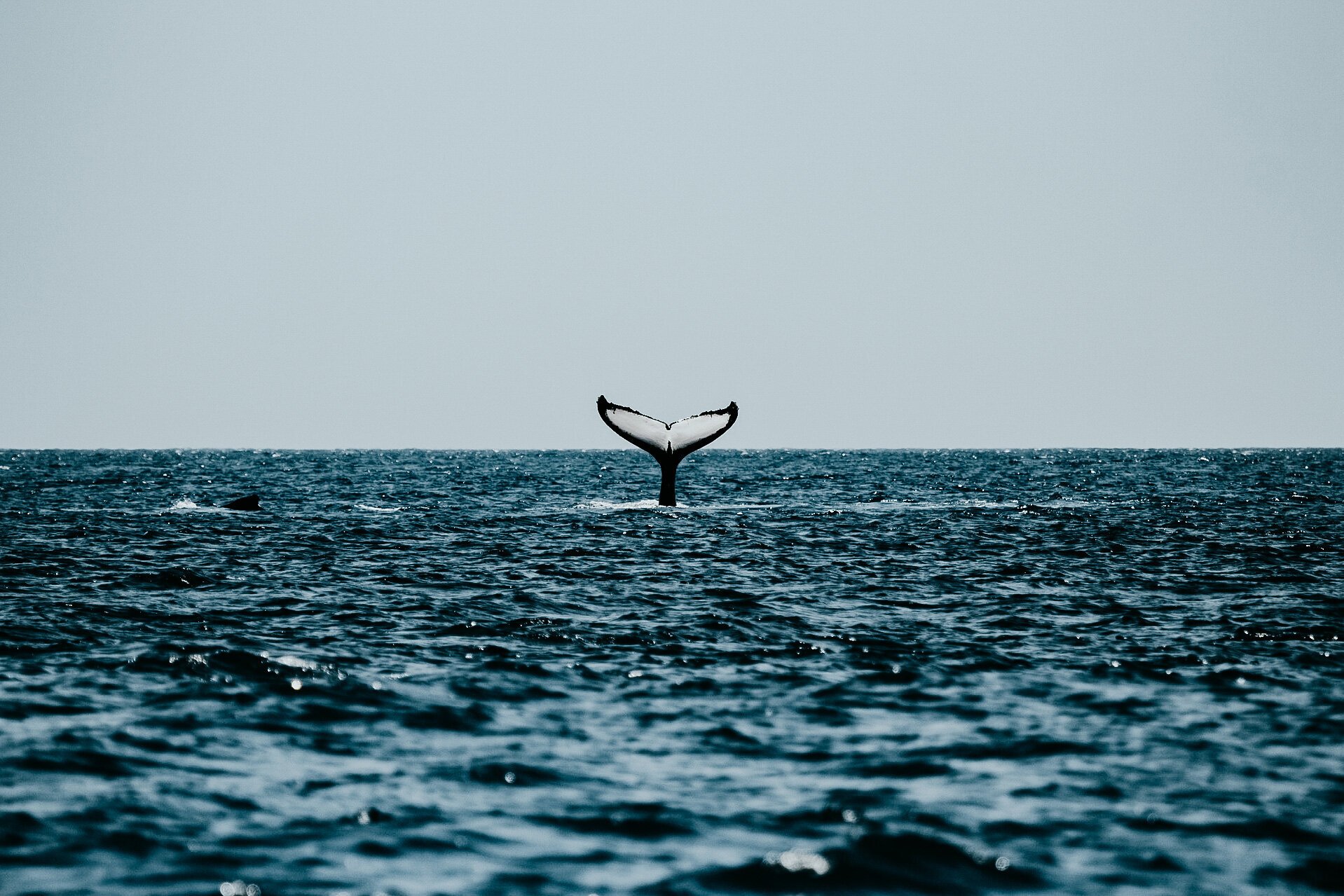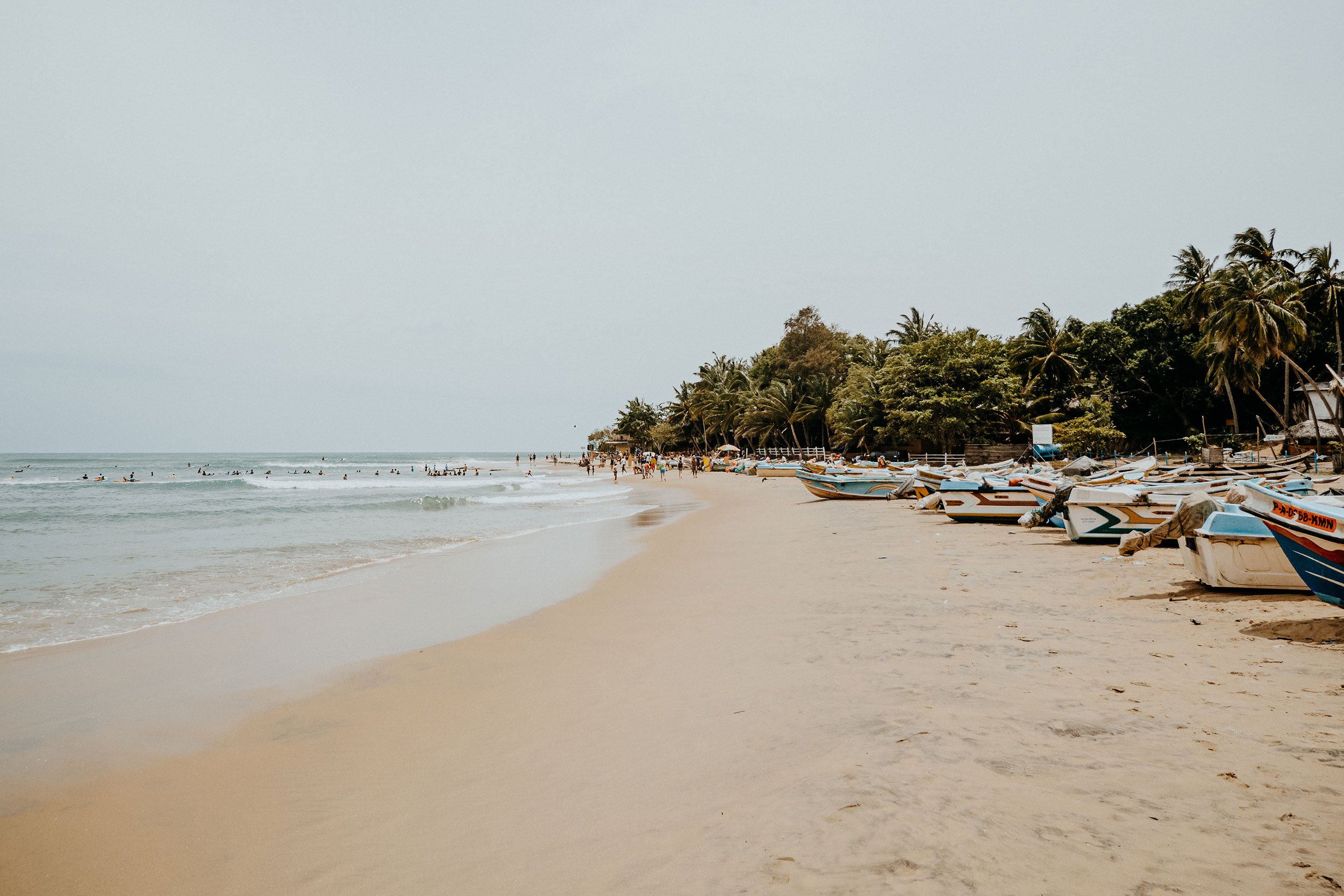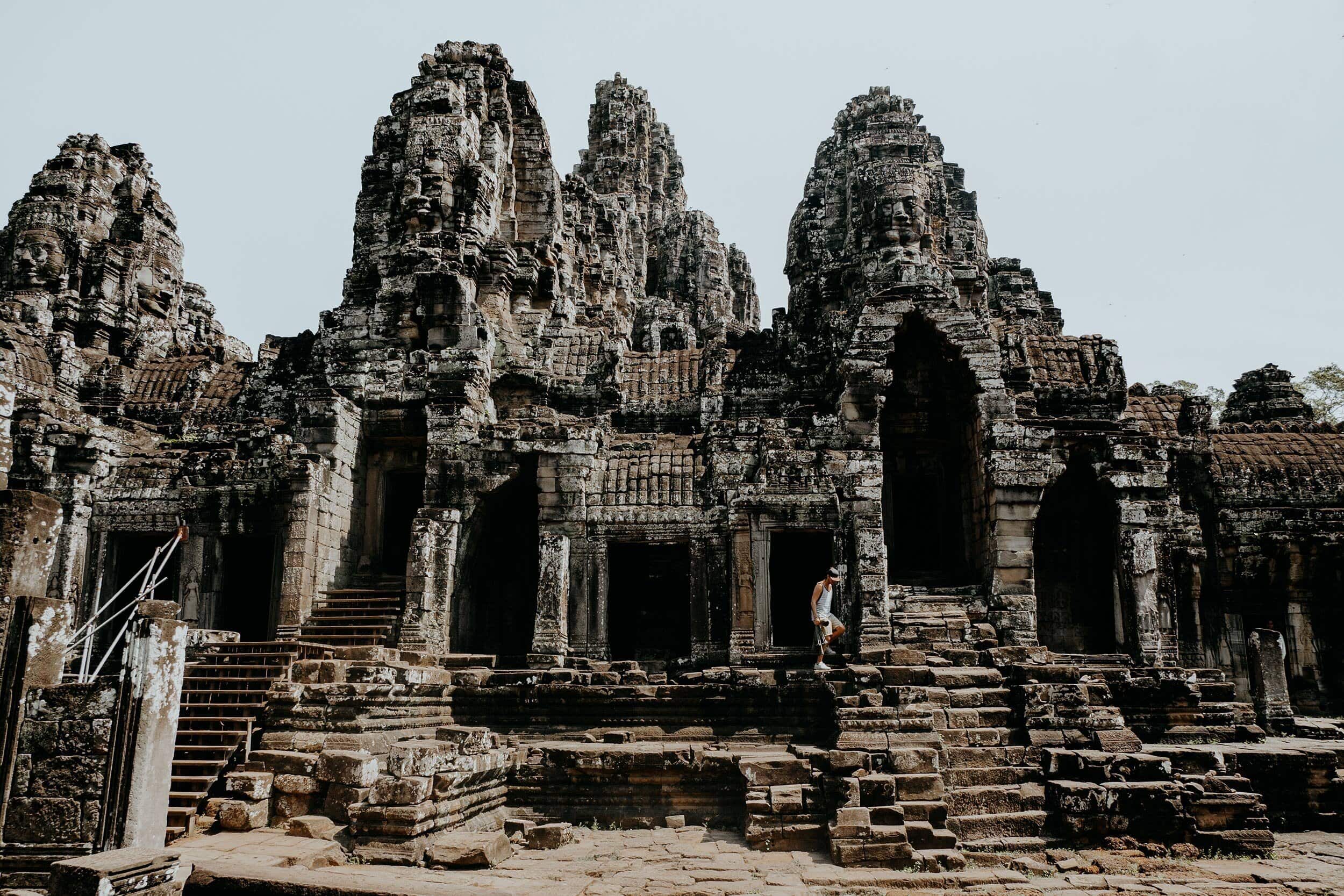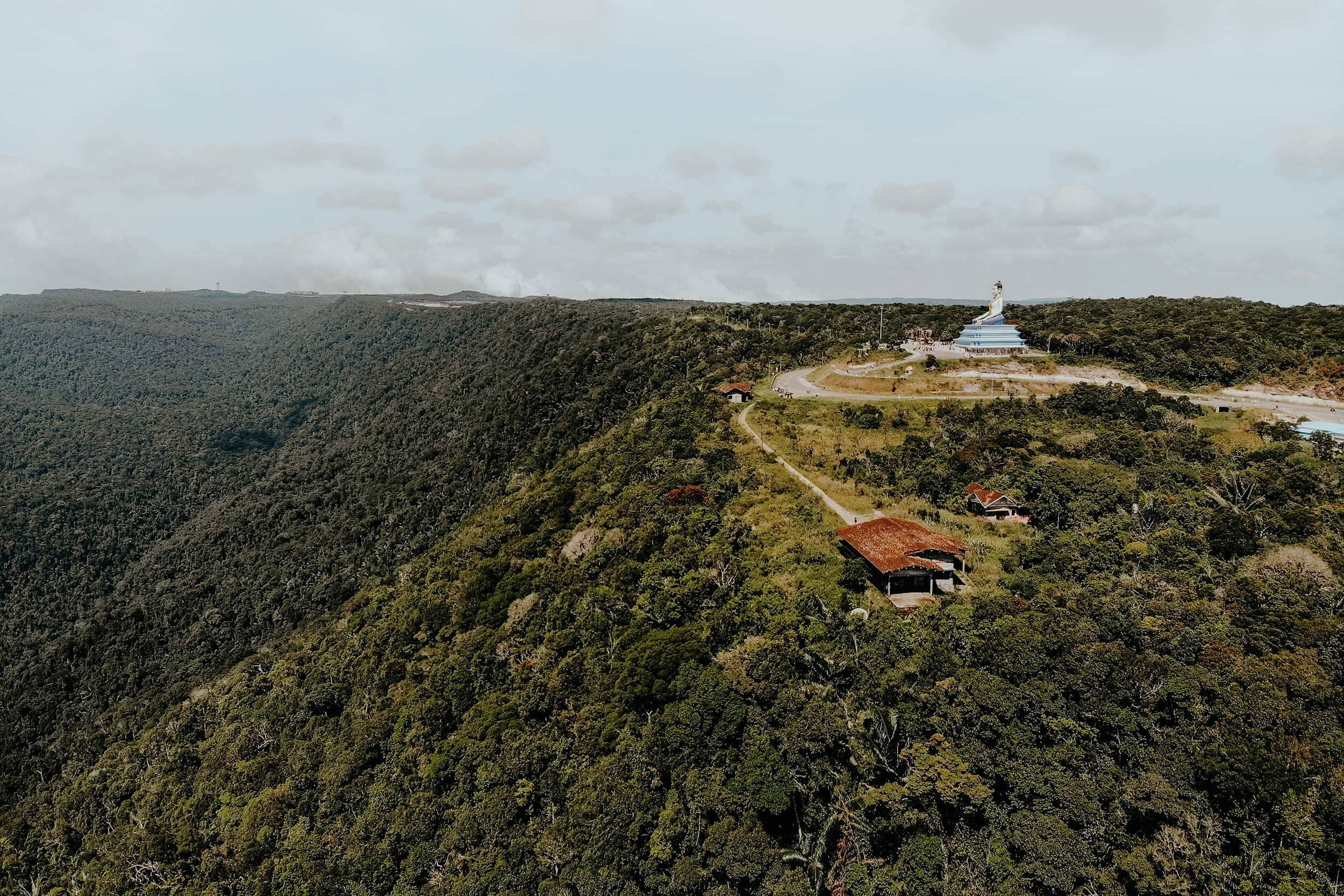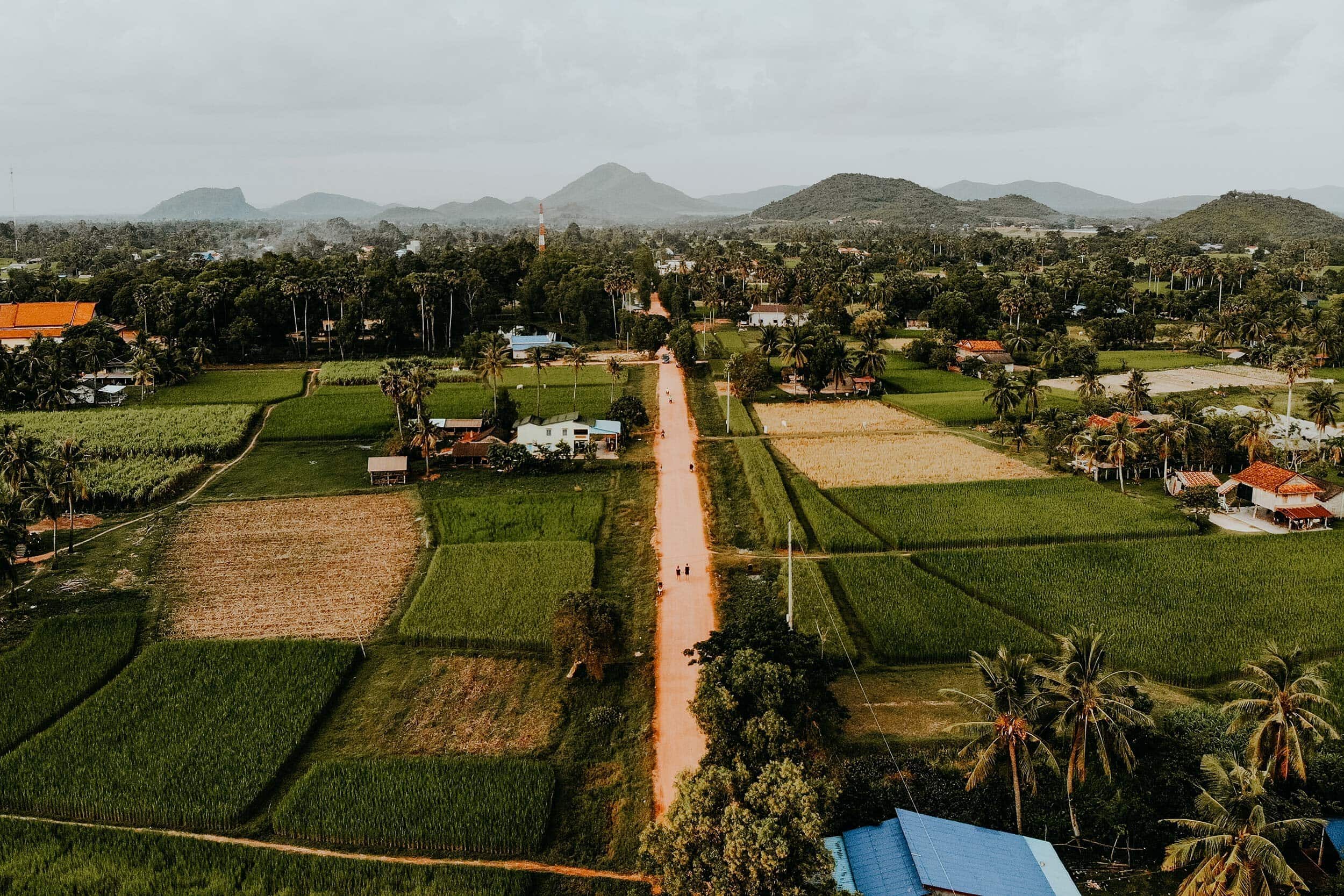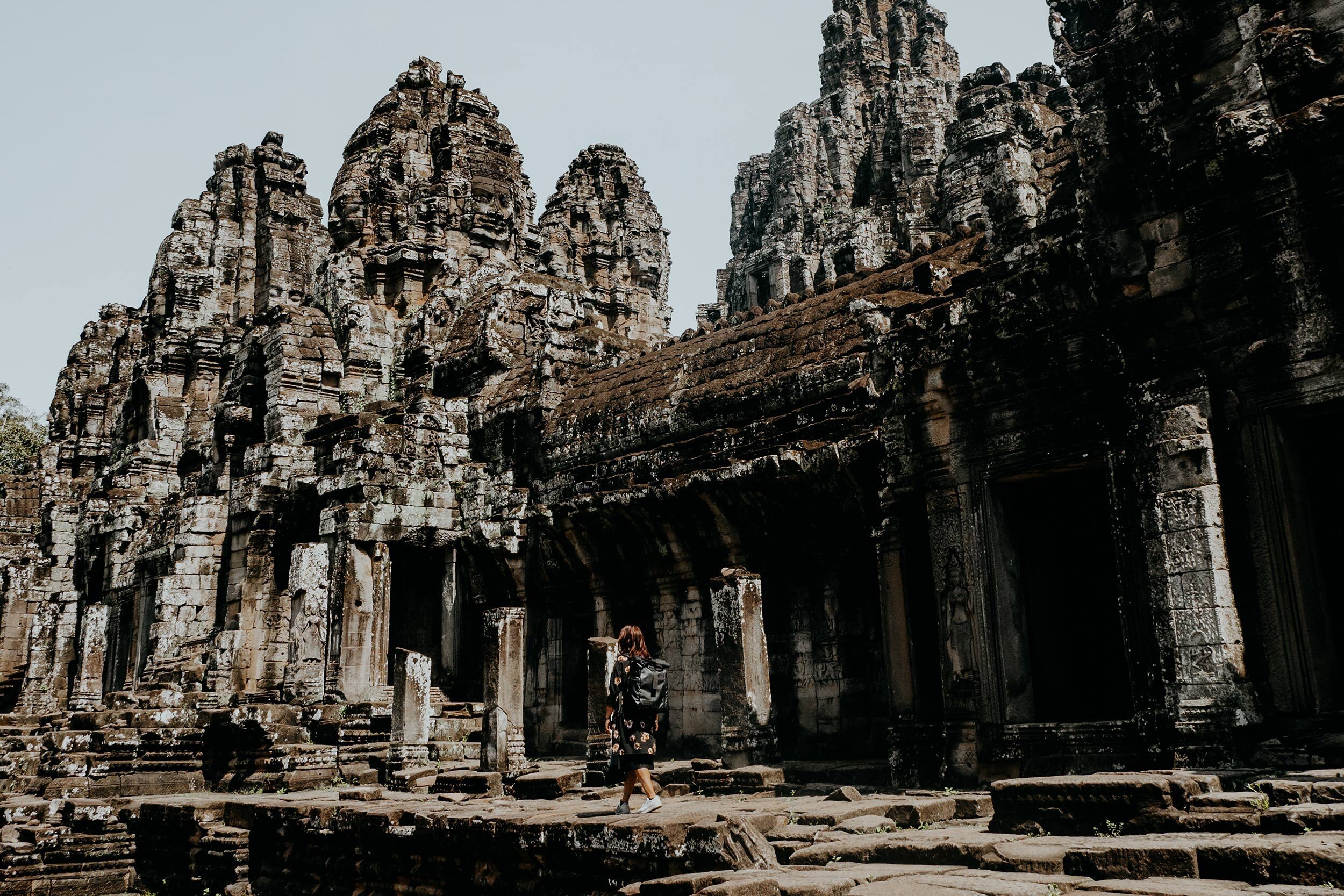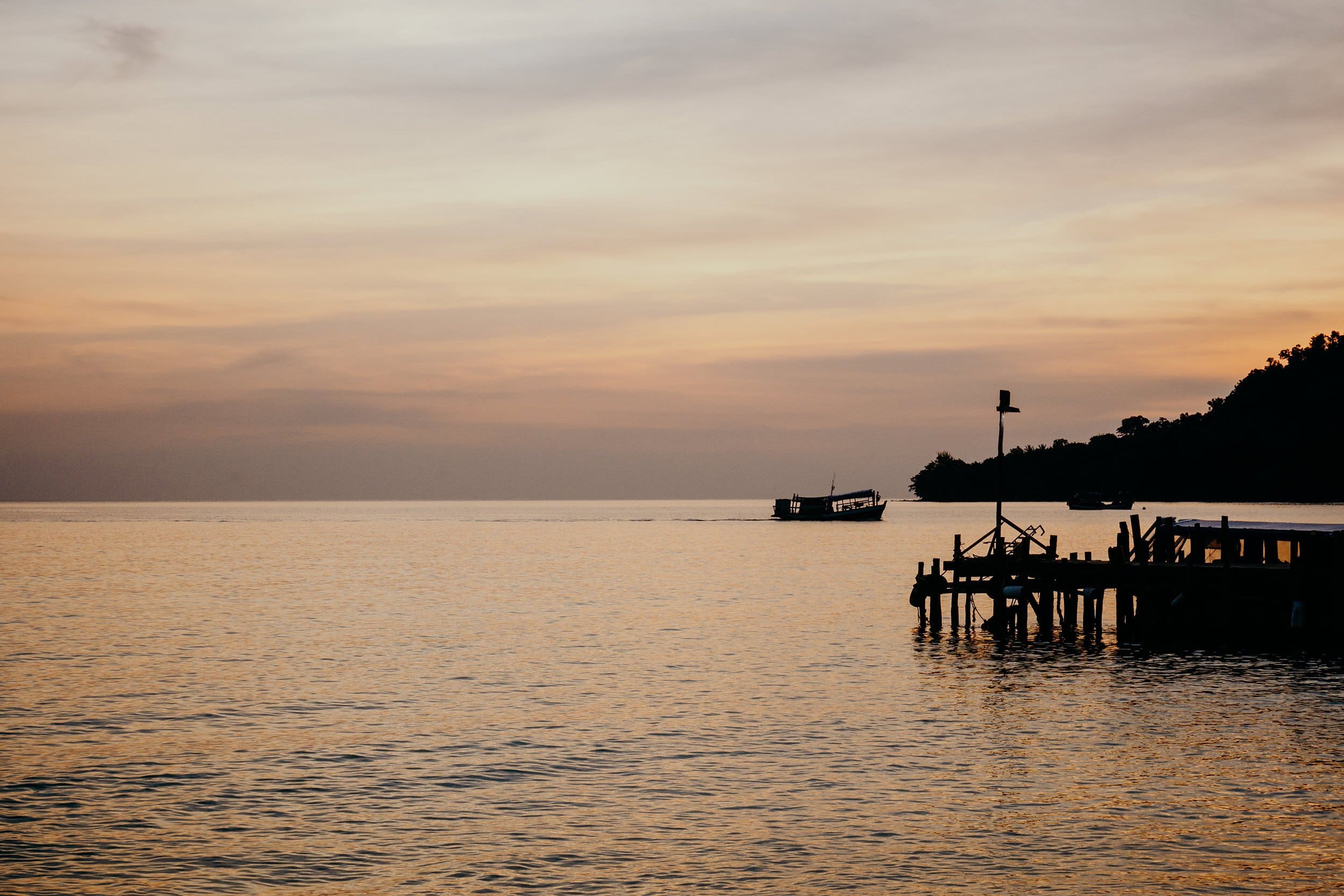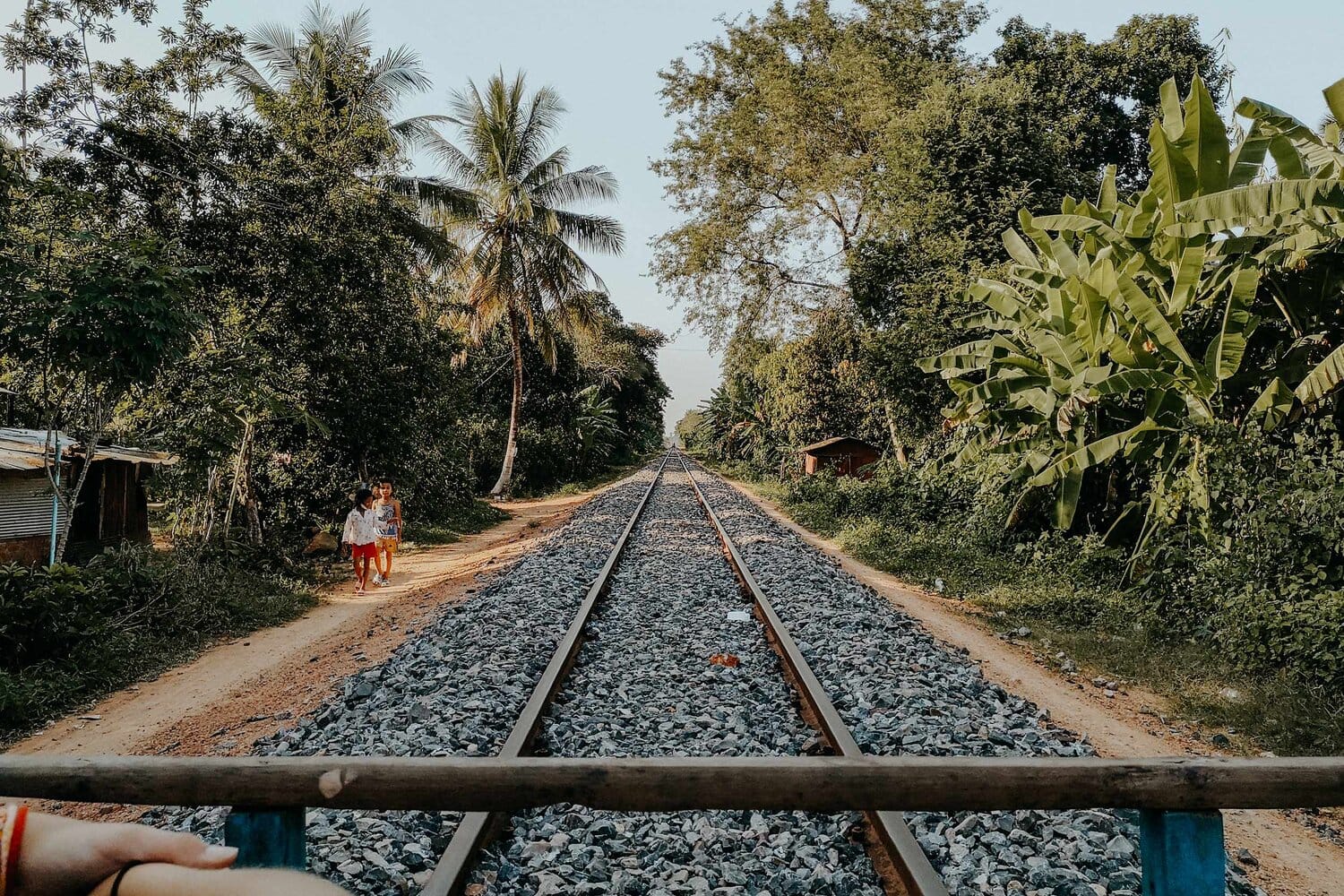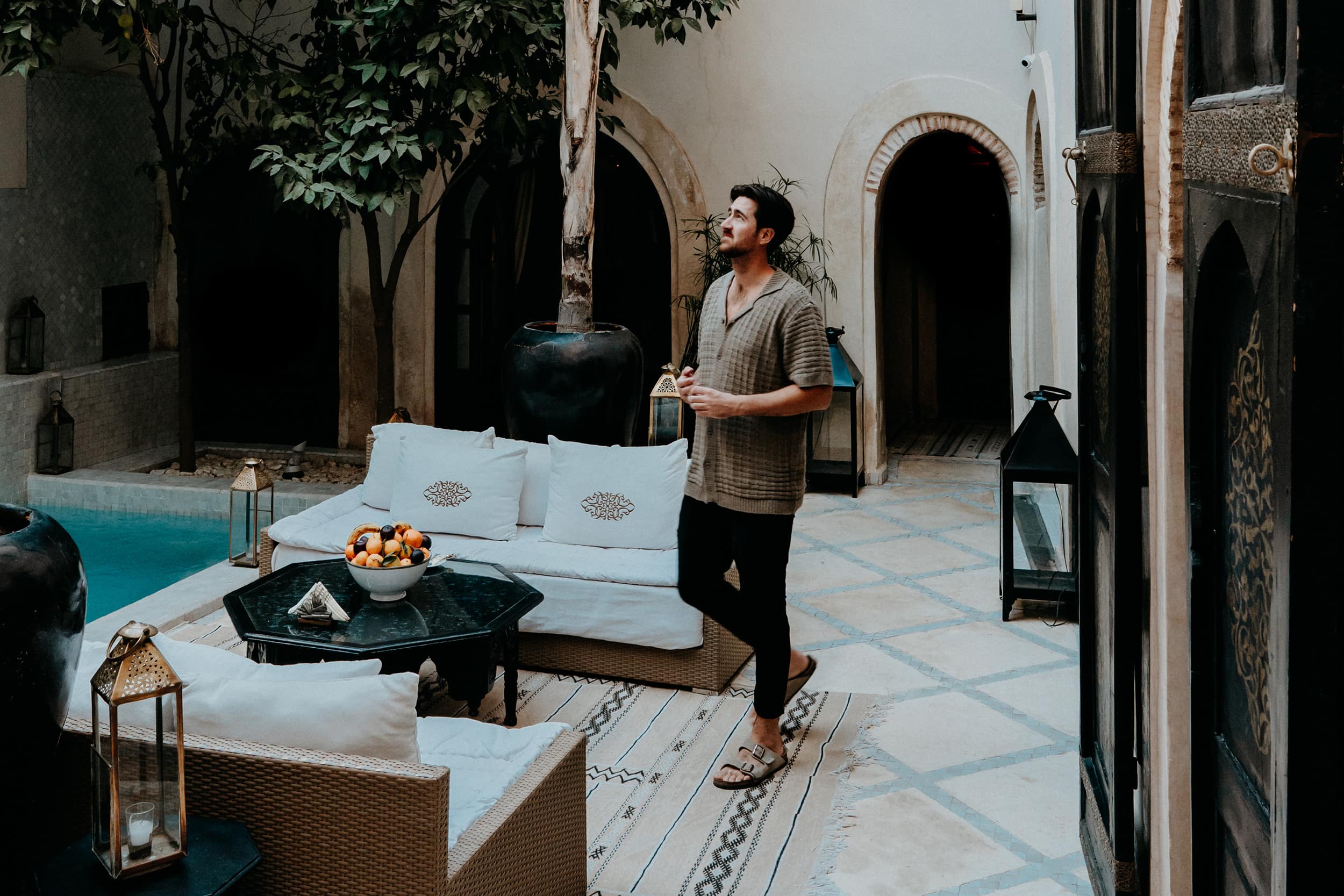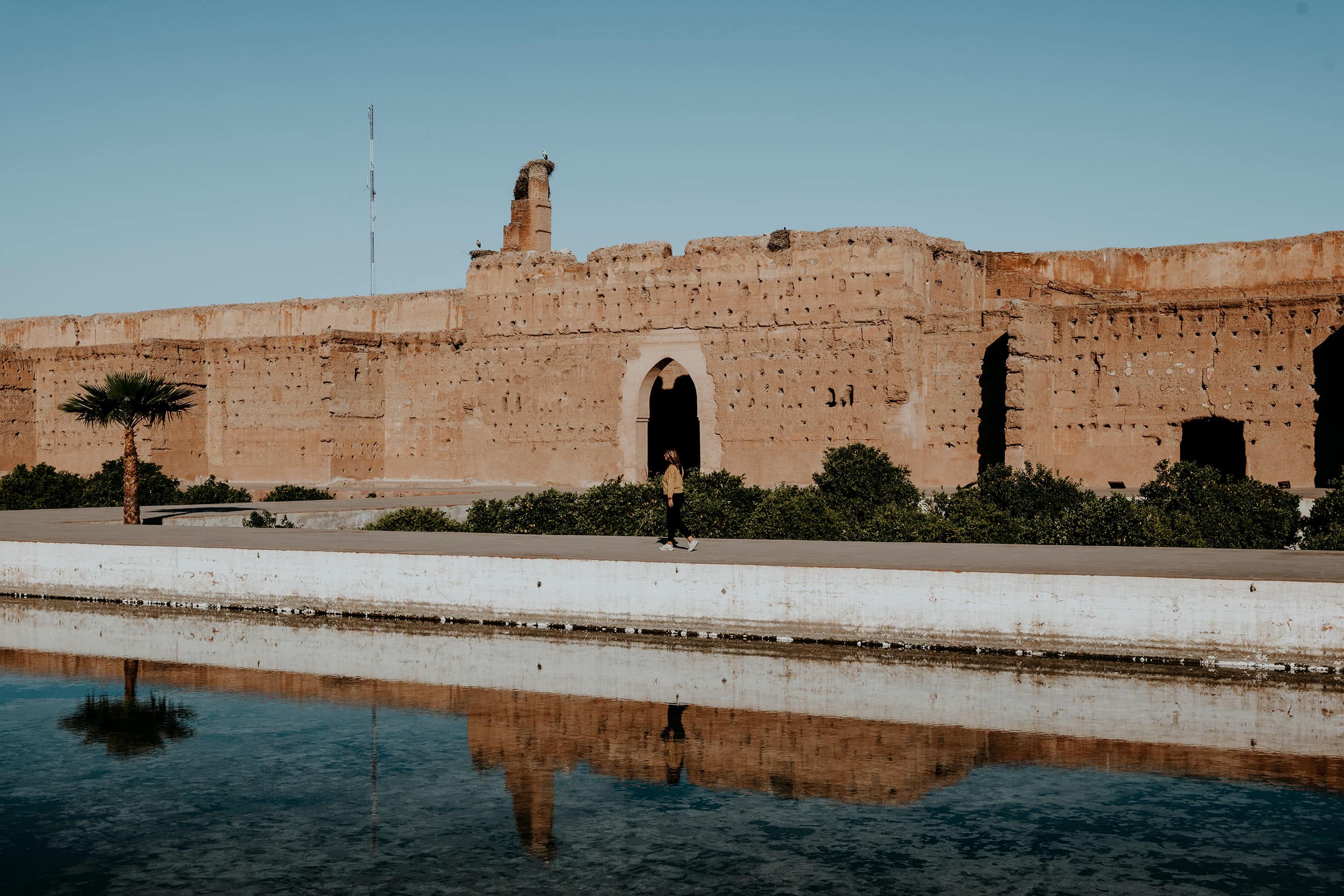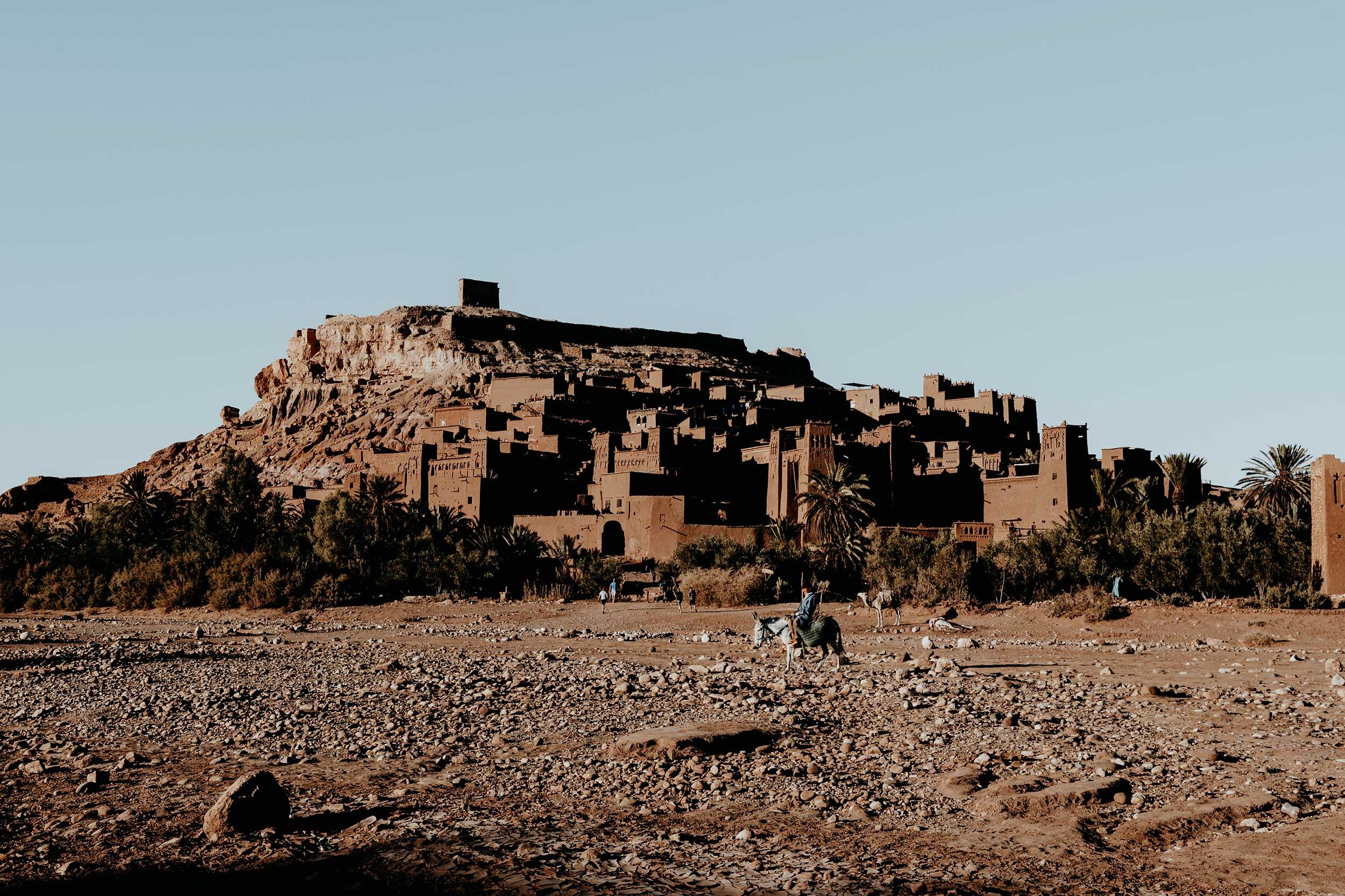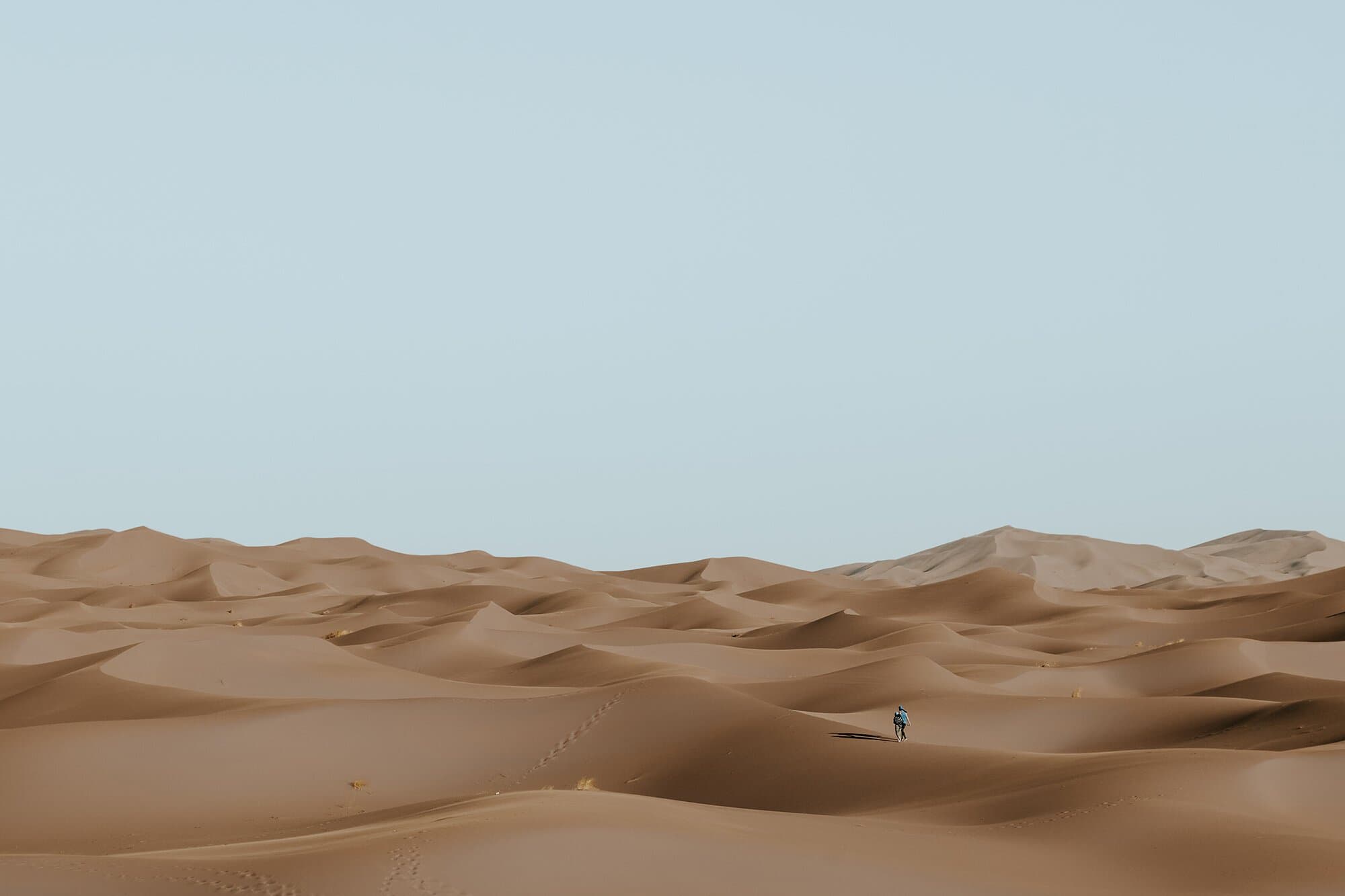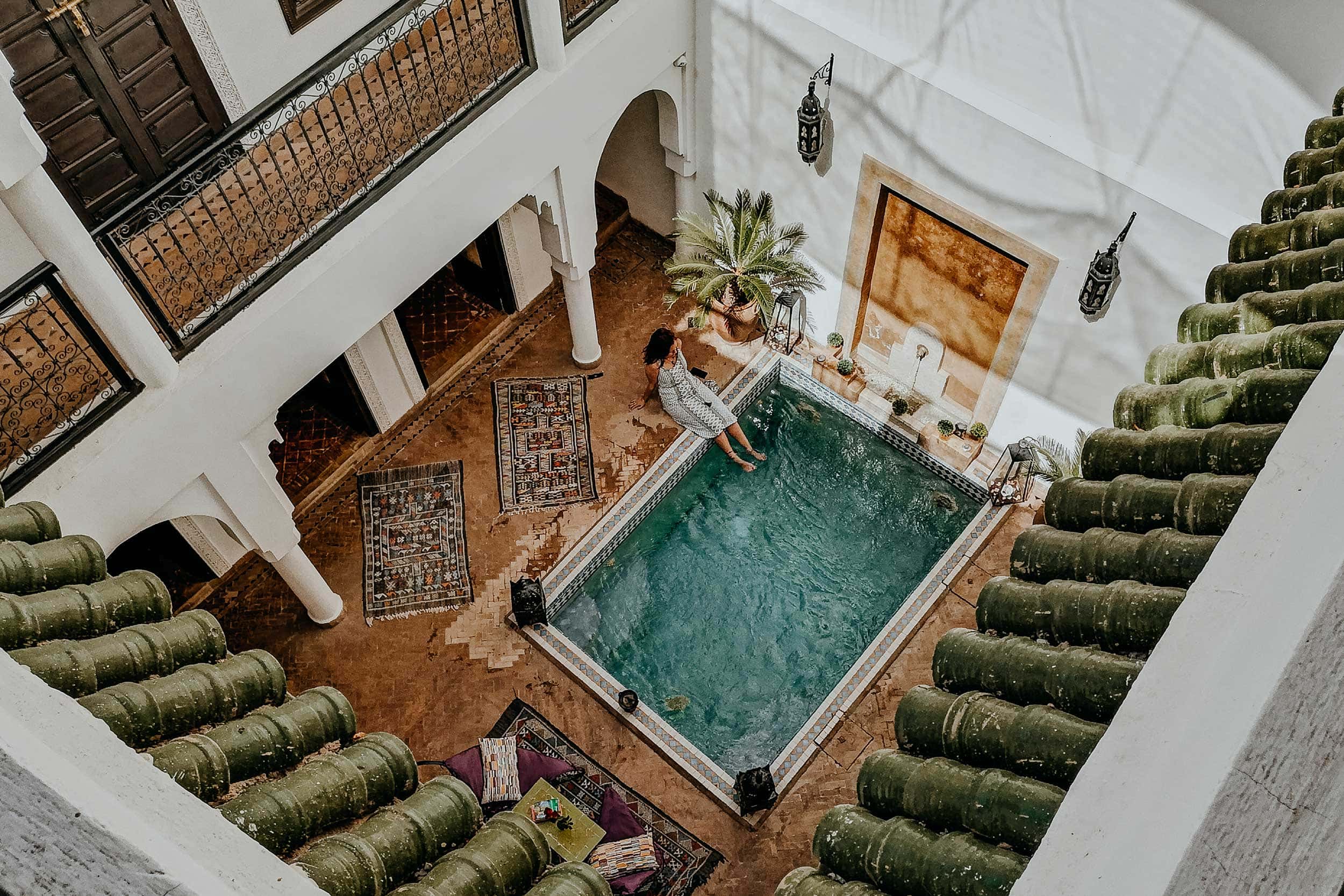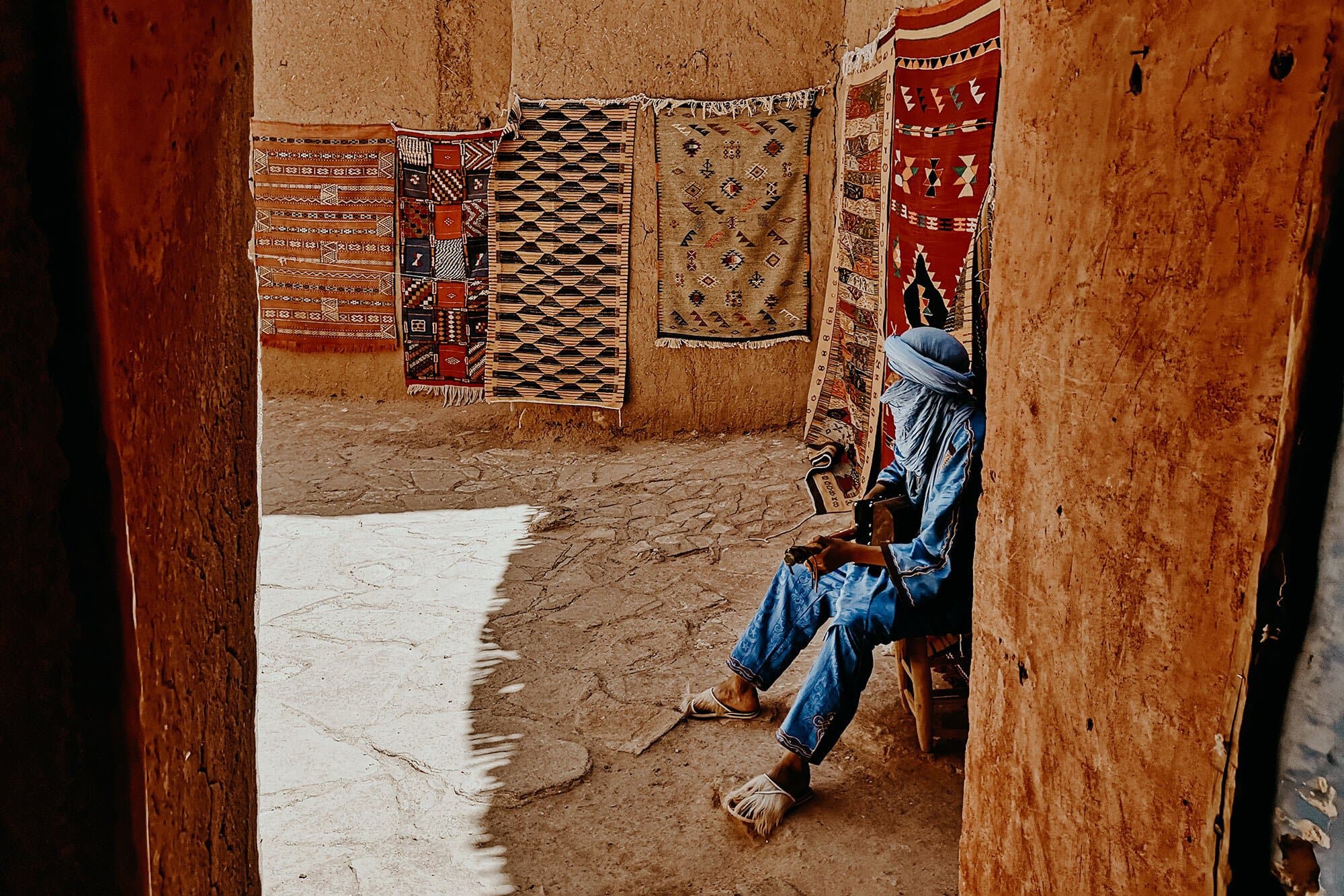My wonderful 10-day Jordan itinerary: the best of Jordan
Jordan was my first-ever trip to this corner of the world, but will certainly not be my last.
Located at the heart of the Middle East, this bit-size paradise has righteously earned its fame, and after my unforgettable road trip here, it is safe to say that Jordan has become one of my all-time favourite destinations.
There’s a myriad of reasons to add Jordan to your bucket list, and I’m not just talking about visiting the ancient city of Petra and the insanely scenic Wadi Rum desert.
Though these highlights are unmissable on any Jordan itinerary indeed, there’s a whole lot more to see and do in this exceptional country.
From the lowest point on earth – the Dead Sea, to the ancient Roman ruins of Jerash, to the amazing diving spots in Aqaba, to the lively streets of Downtown Amman – Jordan is no stranger to both exciting travel experiences and world-class cultural heritage.
This Jordan itinerary is based on my 10-day road trip and talks you through the above highlights, while it also provides all the essential information in terms of accommodation, weather, transportation and more.
Here’s my wonderful Jordan road trip itinerary – enjoy planning your trip!
MY 10-DAY JORDAN ITINERARY | WHAT TO SEE AND DO
WHERE IS JORDAN
Jordan, also known as the Hashemite Kingdom in the Middle East is located on the crossroads of Asia, Africa and Europe and borders with Israel, Iraq, Saudi Arabia and Syria, while also sharing maritime borders with Egypt.
With its compact size, and many interesting cultural and natural highlights, Jordan has rapidly become one of the most popular road trip destinations in the world.
VISA FOR JORDAN | THE JORDAN PASS
Though it is relatively easy to obtain a tourist visa upon your arrival in Jordan, I believe the better deal is to acquire a Jordan Pass before flying into the country.
Not only does the Jordan Pass saves you time at the airport, but it also grants free entrance to 40 of the country’s most famous highlights; Petra, Wadi Rum, Jerash and the Amman Citadel just to name a few.
One thing that is worth mentioning, is the fact that travellers should spend a minimum of 4 days in Jordan to waive the visa fees. Also, the Jordan Pass is equal to a single entry visa, allowing visitors a maximum of 30 days in the country.
I applied for a Jordan Pass in advance, and had an easy time exploring the country – plus the option to skip the line at most of the tourist highlights – winner!
For more information, availability, and applying, make sure you visit the iVisa website.
USEFUL GUIDES ON TRAVELLING IN JORDAN
In my opinion, a written guide is the perfect tool to fall back on, and I seriously advise you to look into one too before travelling to Jordan.
In terms of essential travel information and tips, this Lonely Planet Jordan guide helped me on several occasions during my road trip. Search your guide here.
MY 10-DAY JORDAN ITINERARY | DAILY OVERVIEW
DAY 1 | ARRIVAL IN AQABA
The coastal town of Aqaba was the perfect place to start my adventurous road trip itinerary through Jordan.
Not only is Aqaba home to the excellent King Hussein International Airport, but it is also a welcoming place to get your bearings. For that reason, I’d advise spending at least one day here to recover from your flight, before venturing deeper into Jordan’s immeasurable natural beauty.
Though I haven’t seen much of Aqaba due to late arrival, I’ve read plentiful articles that say that this coastal town is actually a great place for those into sunbathing, history and top-notch diving.
Perched next to the Red Sea, Aqaba is home to some of the world’s best scuba diving sites, with over 20 diving spots dotted along the coastline, providing a perfect setting for any level of diving.
That said, if you have more days to follow my itinerary, I’d advise taking some extra time to appreciate Aqaba’s lively underwater world and the quaint beaches adjacent – unfortunately, my time here was limited.
AQABA | THE ESSENTIALS
Where | Aqaba
Where to stay in Aqaba | DoubleTree by Hilton provides comfortable rooms at an excellent rate, perfect for those keen to unwind after a long flight. Additionally, I would recommend Jordan Seasons Hotel.
Alternatively, search for accommodation in Aqaba on Booking.com.
DAY 2 – 3 | VENTURE DEEP INTO WADI RUM
The first highlight on this Jordan road trip itinerary and by far my favourite destination in the country is the otherworldly Wadi Rum desert.
The UNESCO World Heritage-listed Wadi Rum is an utterly magnificent landscape that is home to rippled sand dunes, towering rock formations, and burnt-orange desert terrain that stretches far in all directions.
With more than 720 square kilometres, Wadi Rum is actually known as one of the largest deserts in the world, and for that reason, best explored by a 4×4 jeep.
If you’re keen to uncover Wadi Rum as part of a full-day jeep tour, make sure you’ll be driven around by an authentic Bedouin guide. By doing so, you’ll be taken along all the nitty-gritty hotspots.
After your jeep tour, it is time to pick a sand dune, sit down and watch a breathtaking sunset light up the otherworldly dunes and rock formations of Wadi Rum – this truly is a spectacle to behold.
On top of that, there’s a bunch of other great things to do within Wadi Rum, such as uncovering the dunes by foot or beholding one of the desert’s famous movie scenes, including those of The Martian and Aladdin.
But to me, the absolute highlight on any visit to Wadi Rum, is spending the night under the starry Jordanian sky in a luxurious martian dome or one of the many traditional Bedouin camps.
+ Related | Check out my Wadi Rum guide for inspiration, travel advice and all the essentials.
WADI RUM | THE ESSENTIALS
Where | Wadi Rum
Where to stay in Wadi Rum | I stayed at Hasan Zawaideh Camp and had an excellent once in a lifetime experience. Make sure you check the link to see how awesome sleeping in a martian dome actually is.
Alternatively, search for accommodation in Wadi Rum on Booking.com.
Driving time | 1 – 2 hours
Distance | 74 kilometres from Aqaba to Wadi Rum
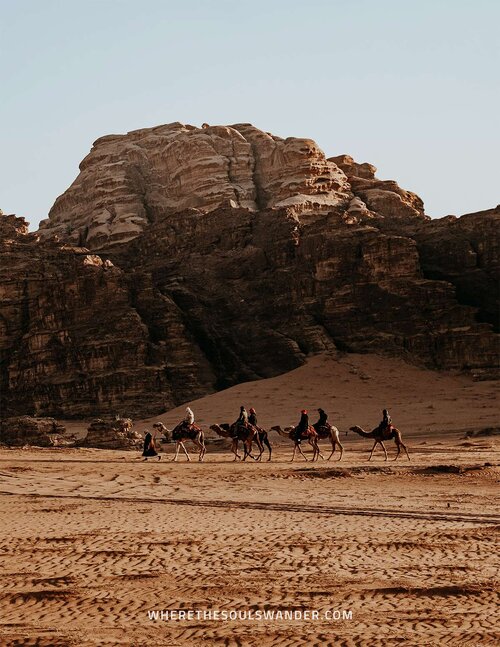
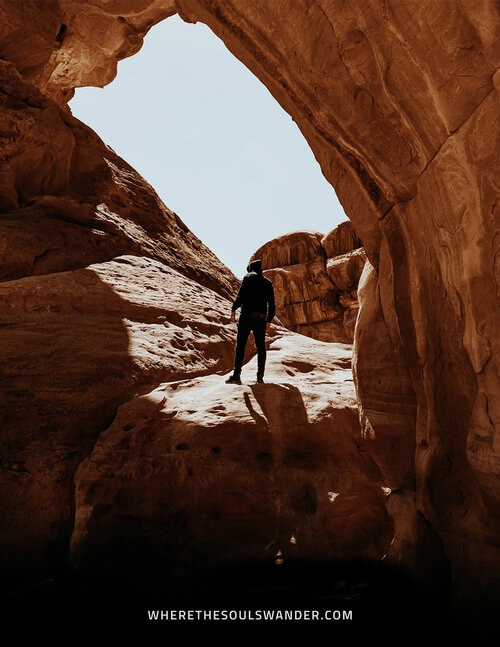
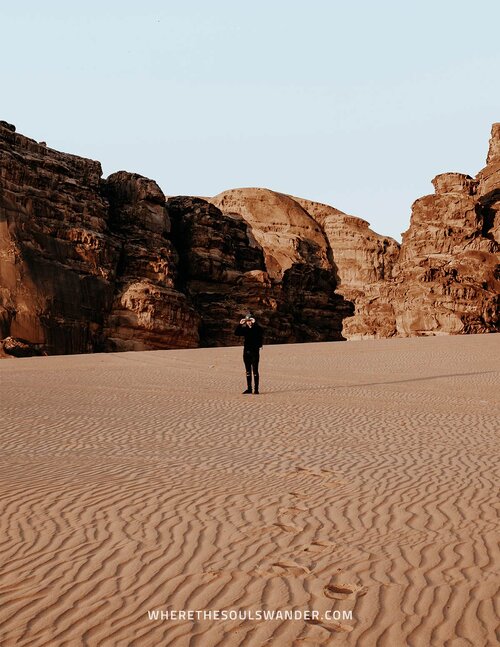
DAY 4 – 5 | THE ANCIENT NABATEAN CITY OF PETRA
I’m pretty sure that the ancient Nabatean city of Petra is one of the key reasons why you’ve planned an adventurous road trip through Jordan, and it is easy to understand why.
Hidden between the rough mountains that encircle Wadi Musa lies Petra, an exceptional ancient city that is carved directly out of the sandstone rose-red rock formations that the area holds.
After a long period of being completely hidden for the western world, the mesmerizing archaeological site was eventually rediscovered by Swiss traveller Johann Ludwig Burckhardt in 1812. For the above reason, Petra is often referred to as ‘The Lost City’.
At present, the former capital of the Nabataean empire is acknowledged as one of the new wonders of the world, and only a few words can describe how it feels when you first encounter the exquisite facade of Petra’s famous Treasury.
But it is not just the Treasury that put Petra on the map of travellers and adventure seekers alike.
Other incredible sights that are equally as impressive include the Monastery, the Royal Tombs, the Al Kubtha Trail, the Siq and the High Place of Sacrifice just to name a few.
To make the most out of your time in Petra, I’d recommend spending at least two days here to take it all in. Also, I highly advise visiting early in the morning (Petra opens at 06:00) to beat the crowds.
+ Related | Check out my Petra guide for inspiration, travel advice and all the essentials.
PETRA | THE ESSENTIALS
Where | Petra, Wadi Musa
Where to stay in Wadi Musa | I stayed at Town Season Hotel, a great budget-friendly hotel only a stone throws away from the Petra visitor centre. Prices and availability here.
Alternatively, search for accommodation in Petra on Booking.com.
How to get around Petra | Petra is best explored on foot, however, be prepared to walk a bunch. Also, please be aware to travel in a responsible and ethical manner, meaning you consider skipping transport by horse or donkey.
Driving time | 2 – 2,5 hours
Distance | 114 kilometres from Wadi Rum to Wadi Musa
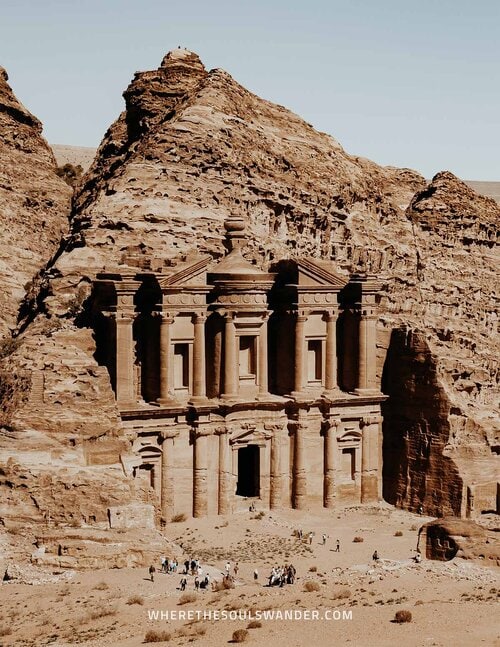
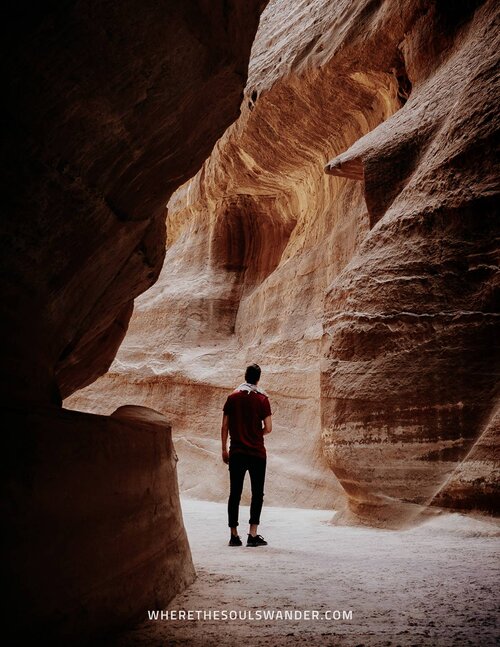
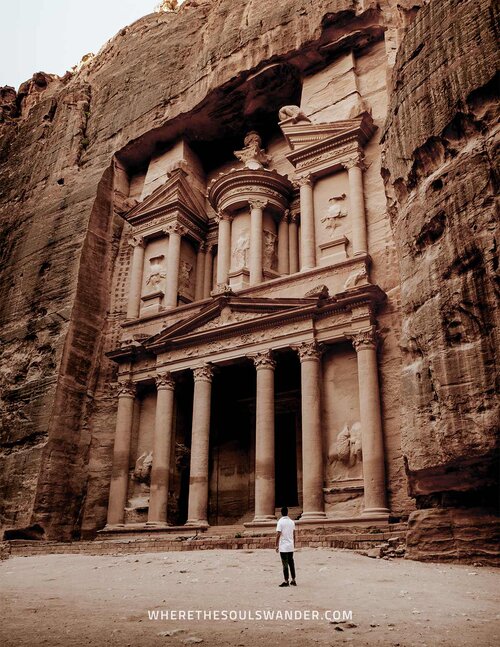
DAY 6 | UNWIND AT THE ICONIC DEAD SEA
Next up is the iconic Dead Sea, one of the most impressive natural phenomena in the country, and in my opinion an unmissable destination on any Jordan itinerary.
Unlike its name, the Dead Sea is actually more of a lake that is known for its incredibly high salinity, containing around 10 times more salt than any given ocean on earth.
As a result, it is impossible for organisms to inhabit the sea, hence its name ‘The Dead Sea’.
Also, the area is deemed to be the lowest point on earth, as it lies 400 metres below sea level.
In terms of location, the Dead Sea is perched between Jordan and Israel, at around 3,5 hours away from Wadi Musa, which is quite a drive. The good news though, it’s a damn scenic journey!
If you’re into photography, make sure you make a stop left of the Wadi Mujib Adventure Center, where you’ll find some pretty neat photography options, as well as some of the best salt formations.
Upon arrival in your hotel, I’d recommend heading straight to the beach for an unforgettable experience, namely swimming in the Dead Sea, or better said, floating in the Dead Sea.
Besides this quirky happening, there’s not much else going on around the Dead Sea, and therefore I recommend making your time here all about relaxing and sunbathing.
+ Read more | Check out my guide to the Dead Sea for inspiration, travel advice and the essentials.
THE DEAD SEA | THE ESSENTIALS
Where | The Dead Sea
Where to stay near the Dead Sea | I stayed at Ramada Resort Dead Sea, a comfortable option located directly next to the Dead Sea. Prices and availability here.
Alternatively, search for accommodation near the Dead Sea on Booking.com.
Driving time | 3 – 3,5 hours
Distance | 205 kilometres from Wadi Musa to the Dead Sea
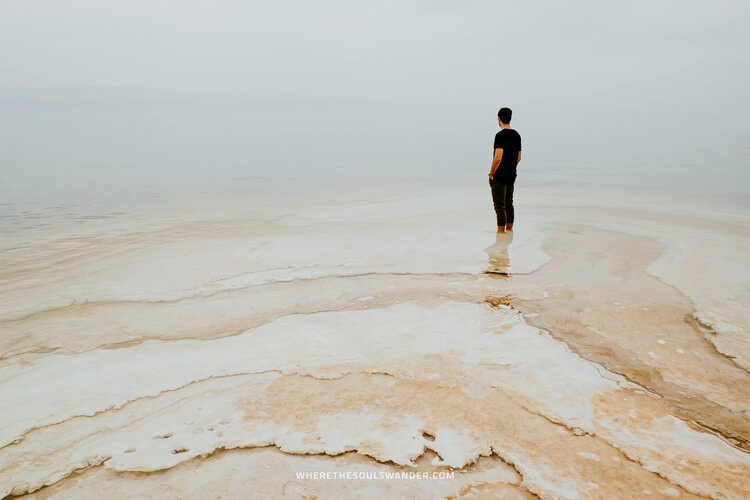
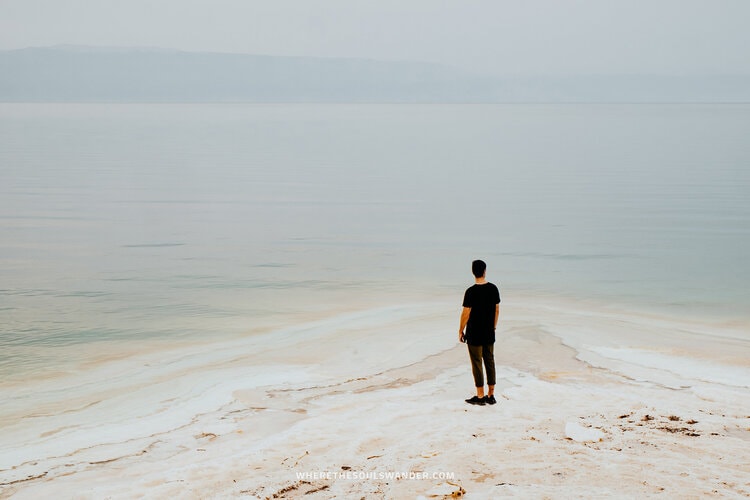
DAY 7 – 9 | AMMAN, JORDAN’S BUSTLING CAPITAL CITY
After relaxing at the Dead Sea, it is time to move further north to Amman, Jordan’s lively capital.
Although Amman is significantly more chaotic than other destinations on this itinerary, I believe it’s a city of its own accord, with many interesting things to see, do and of course, taste.
I’ve personally spent two days here, one while staying at the phenomenal W Amman Hotel (this place is unreal, and so is the food), and one to uncover the many highlights that this energetic city has to offer. A brilliant combination that worked out perfectly fine for me.
All in all, Amman is definitely worthy of your visit, and given it is pretty compact in size and easy to navigate, the city is in my opinion a great introduction for first-time travellers to the Middle East.
AMMAN | MUST-SEE ATTRACTIONS
The Amman Citadel | Situated high atop of the Jabal Al Qala’a hill is the Amman Citadel, an area rich in history that has been under the rule of many great civilizations, including the Romans, Byzantines, Persians, and Greeks. If you have time to visit only one place while in Amman, make sure it’s the city’s time-worn citadel.
King Abdullah I Mosque | Though it is located slightly outside the city centre, the ornate King Abdullah I Mosque is an absolute must-see in Amman. Recognized by its vivid blue dome, the mosque is truly mesmerizing and can house up to 7.000 worshippers at a time. It is possible for non-Muslims to enter, but make sure to follow the religious customs.
The Roman Amphitheatre | With the capacity to house roughly 6.000 people, the Roman Amphitheatre is said to be the most impressive remnant of Roman Philadelphia, and it’s easy to see why. What’s even more impressive, is the fact that it is still in use for concerts and plays at present. Additionally, if you’ve managed to acquire a Jordan Pass, you’ll have entrance to the adjacent Folklore Museum.
+ Related | Check out my guide to Amman for inspiration, travel advice and all the essentials.
AMMAN | THE ESSENTIALS
Where | Amman
Where to stay in Amman | I stayed at W Amman and it is safe to say that it is my most luxurious travel experience I’ve had to date. Make sure you check it out here.
Alternatively, search for accommodation in Amman on Booking.com.
Driving time | 1 hour
Distance | 50 kilometres from The Dead Sea to Amman
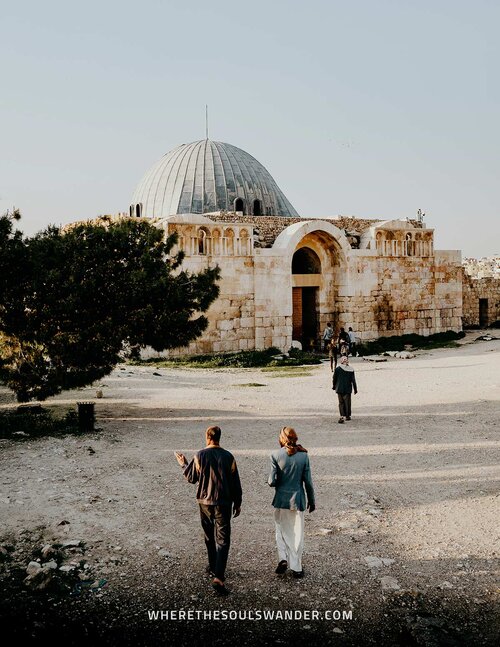
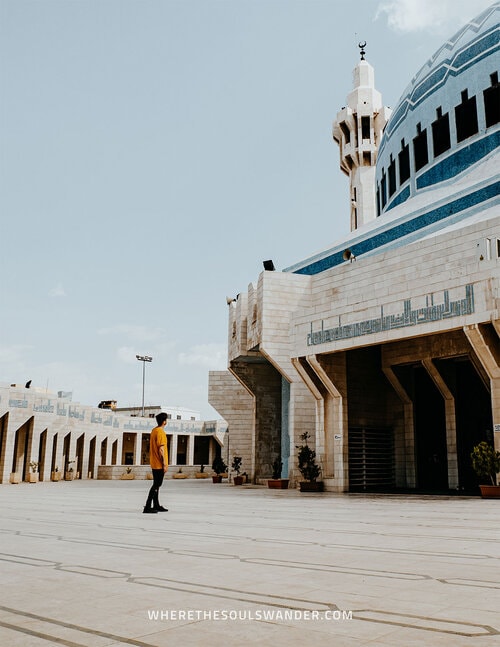
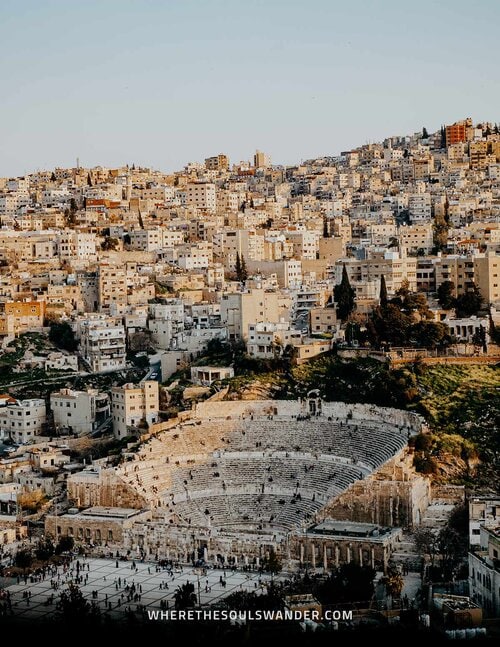
DAY TRIP | THE ROMAN RUINS OF JERASH
The Roman ruins of Jerash are located only an hour away from Amman and are therefore easily visited as part of a self-drive day trip.
Often referred to as the ‘Pompeii of the East’, Jerash is acknowledged as the best-preserved Greco-Roman city outside of Italy, and believe me, it is truly a delight to behold.
As a result, Jerash is extremely popular among travellers and locals alike, making it the second most visited tourist destination in Jordan – behind Petra, obviously!
That said, the interior of Jerash is absolutely breathtaking, and some sights that I highly suggest visiting include the Arch of Hadrian, the Temple of Artemis, Oval Square and the Northern Theatre among many others.
Though Jerash was high on my list of things to see in Jordan, I, unfortunately, planned way too little time to fully explore the extensive archaeological site. Therefore, I advise planning at least four hours to explore in a relaxing manner.
Related | Check out my guide to Jerash for inspiration, travel advice and all the essentials.
JERASH | THE ESSENTIALS
Where | Jerash
Cost | Entrance fee 10 JOD ($14,10) – free with the Jordan Pass
Driving time | 1 hour
Distance | 50 kilometres from Amman to Jerash
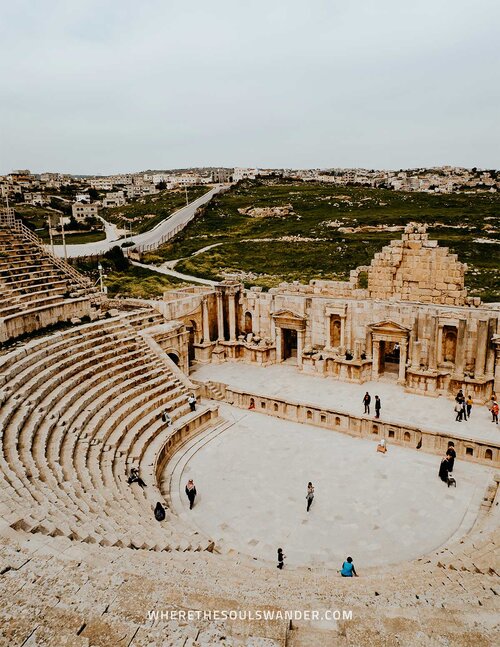
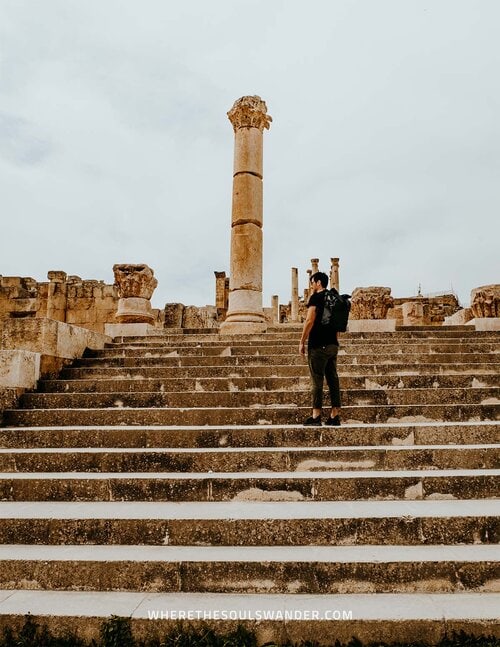
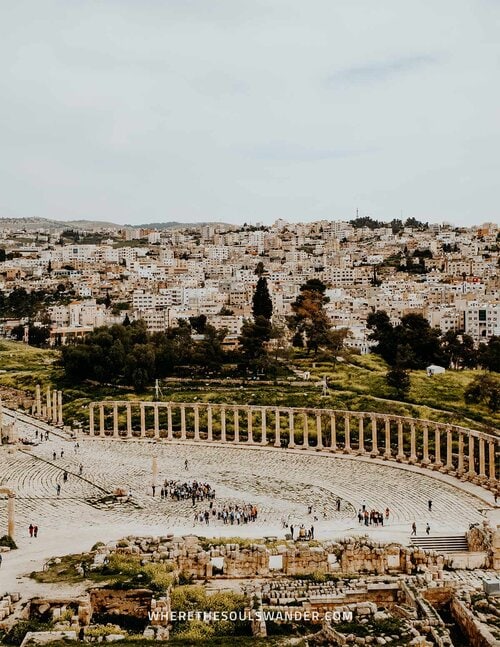
DAY 10 | TIME TO LEAVE JORDAN
After 10 incredible days in Jordan, where you’ve discovered incredible landscapes, ancient architectural masterpieces, and everything in between, it is time to pack your stuff and head for the airport.
Whether you need to drive back to Aqaba or Amman, your last moments in Jordan are all about heading home, so it is a full day of travelling anyhow.
However, one thing I like to spare you is a long exhausting drive back from Amman to Aqaba on the day of your outbound flight.
I personally opted to leave Jordan by plane from the Queen Alia International Airport in Aqaba, but would have done this part of my itinerary differently if I had to do it again – epic fail.
For that reason, I believe it is best to book separate flights, especially if spending your final 6 hours in Jordan behind the wheel isn’t your way to end this awesome road trip.
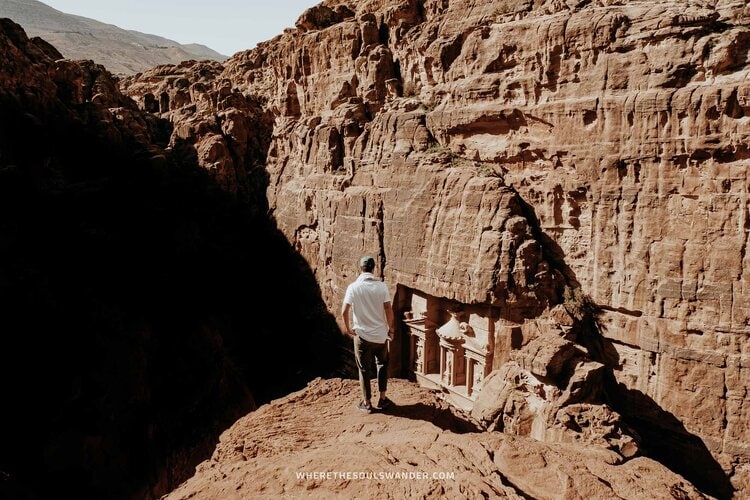
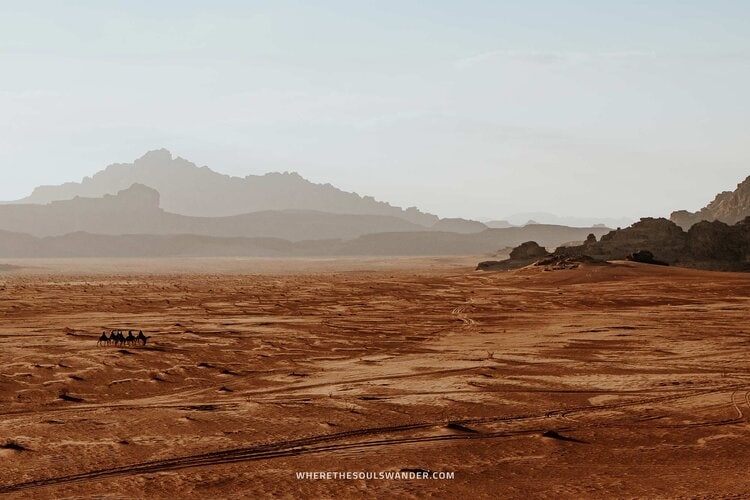
JORDAN ITINERARY | TRAVEL ESSENTIALS AND TIPS
JORDAN ITINERARY | TRAVEL ESSENTIALS AND TIPS
ACCOMMODATION | WHERE TO STAY IN JORDAN
Jordan is hands down among the most popular travel destinations of the last few years, meaning you’ll be delighted to find awesome accommodation here too.
Through the course of my Jordan itinerary, I was surprised by a broad variety of excellent accommodation options, suitable for pretty much every travel style and budget.
Whether you’re after a budget-friendly hostel, family-run apartment, authentic Bedouin tent, or luxurious high-end hotel – like this unique Martian experience in the heart of the desert, there are simply endless options available.
In terms of budget, it is completely up to you, with costs varying anywhere between €20 – €200 per night, depending on your personal requirements.
BOOKING.COM
As a solo adventure traveller, my favourite website to search for accommodation is booking.com.
Not only is it home to a broad selection of accommodation, but it’s also user-friendly, and offers options that suit any budget.
Also, you can cancel your booking at any given time, without any extra cost – perfect if you like (or dislike) a place and wish to change your travel plans accordingly.
If I made you enthusiastic to travel to Jordan, make sure you explore the many accommodation options on booking.com.
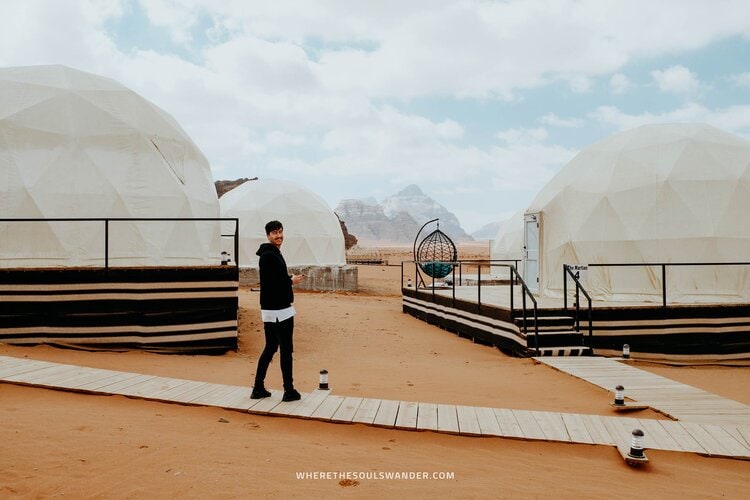
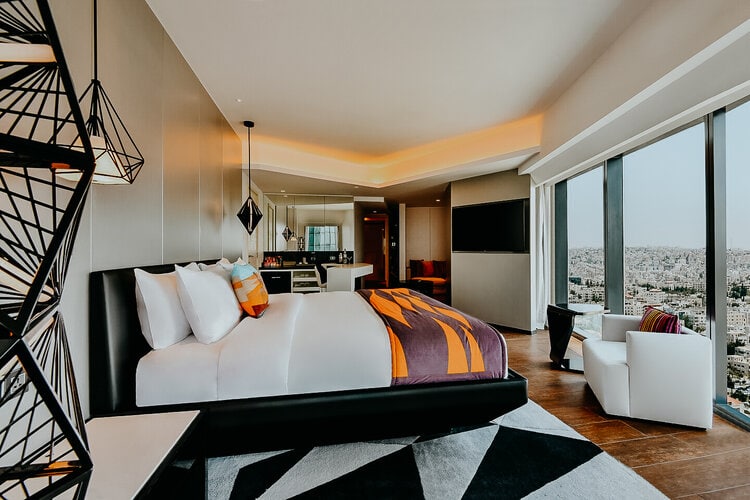
WEATHER IN JORDAN | BEST TIME TO VISIT JORDAN
Given Jordan almost entirely consists of desert landscapes, the country is rather tricky in terms of weather.
For that reason, it is good to note that Jordan can be scorching hot during the peak summer months, while at the same time, it is freezing cold during the winter months.
Depending on what you’re looking for, I believe the best time to visit Jordan is from early March to late May, especially if you’re bent on exploring Jordan’s most popular points of calls, including Petra, Wadi Rum and the Dead Sea.
However, if you wish to uncover the Red Sea’s lively underwater world, or work on your tan on a sun lounger next to it, the summer months of June to September might be the better option for you.
I followed this Jordan road trip itinerary in March and had excellent weather to tick the sights I wished to visit off my bucket list.
One thing that is worth mentioning though, is that despite the pleasant temperature during the days, the nights often become pretty chilly, specifically in the desert. So make sure you pack at least one pair of trousers and a comfy hoodie!
TRANSPORT | HOW TO GET AROUND JORDAN
CAR | HOW TO GET AROUND JORDAN
Jordan is a true spectacle in terms of rough, mystic landscapes, and by renting a car you easily experience the absolute best of this exceptional feature.
Not only is a rental the easiest way to uncover Jordan, but it also provides the ultimate freedom to travel at your own pace, not to mention that it means you’ll be driving through the most incredible landscapes too.
Another great thing about driving in Jordan is the fact that most of the roads are actually in excellent condition, plus it is pretty cheap to fill up your tank.
Meaning Jordan is made out of all the good stuff that make a road trip, a ROAD TRIP.
For car rental in Jordan, I highly recommend Rentalcars.com. They offer brilliant service, additional insurance options (which is not an unnecessary luxury in Jordan), as well as a wide selection of cars to choose from. Prices and availability here.
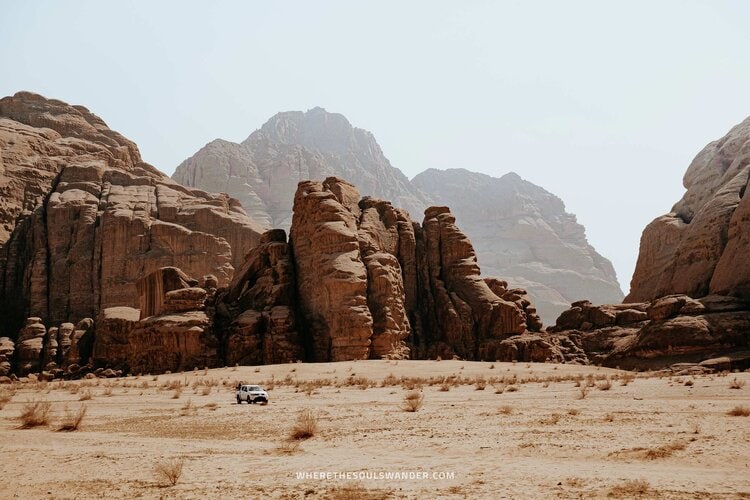
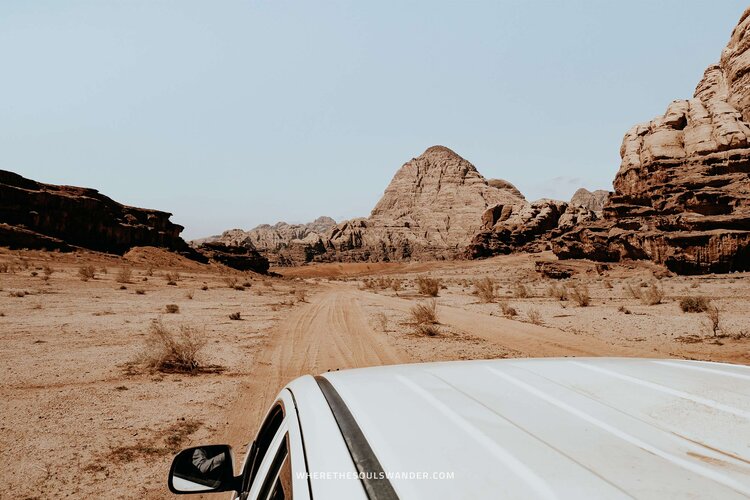
HOW TO GET TO JORDAN
FLIGHTS | HOW TO GET TO JORDAN
Though Jordan is a relatively compact country, it is home to two excellent international airports.
However, most flights arrive at the Queen Alia International Airport, situated around 30 kilometres south of Amman, the capital city of Jordan.
Alternatively, there is the King Hussein International Airport, located only a 10-minute drive away from Aqaba. I noticed that this option was significantly cheaper for flights from Europe.
Both airports are well kept and host a great variety of international flights, including those from major hubs in Europe, North Africa, North America, the Middle East, and Southeast Asia.
For flights to Jordan, I would highly advise the use of Skyscanner. Not only is their website super easy to use, but they also offer a large selection of airlines – plus the possibility to find good rates.
In my opinion, both cities are equally as good to start your Jordan road trip itinerary, as they both provide car rental pickup and dropoff services.
SAFETY IN JORDAN | TRAVEL INSURANCE
When travelling this big wide world, I never go on an adventure without my essential travel insurance sorted out, and though I felt completely safe in Jordan, I recommend anyone travelling here to do the same.
Though you rather don’t think about the things that could go wrong, there’s always a chance that it might happen, and when that’s the case, it is better to be safe than sorry.
To help you find the right policy, I’ve listed two of my favourite options below:
Heymondo | Whether you’re going on a 3-week backpacking trip, or planning a long stay somewhere abroad, Heymondo has excellent insurance options either way – plus full covid-19 coverage and a handy app with 24-hour medical assistance. Readers of WTSW receive 5% off any insurance policy, more information here.
World Nomads | If you’re an adventure seeker, backpacker, or planning your once-in-a-lifetime world trip, make sure you check out World Nomads, they designed the perfect travel insurance to help you travel safer and smarter. Do note that they’re not covering covid-19 related claims.
PLAN YOUR JORDAN ITINERARY WITH THESE ESSENTIAL GUIDES
PLAN YOUR JORDAN ITINERARY WITH THESE ESSENTIAL GUIDES
My 2-week Croatia itinerary | Uncover the best of Croatia
Ready to explore the absolute best of Croatia? I’ve got you covered! My in-depth Croatia itinerary includes the best things to see and do, awesome day trips, as well as advice on accommodation, money and transport.
It was a rare, but sunny summer day in the Netherlands when one of my long-cherished dreams spontaneously became reality; a road trip along Croatia’s incredibly picturesque coastline.
From the moment I arrived in Croatia, I felt that this road trip would exceed all of my expectations.
From the picture-perfect fortified city of Dubrovnik to the incredible beaches that are dotted along the coastline of Hvar Island, to the sheer natural beauty of both Krka and Plitvice National Park, to the many attractive medieval towns perched by the Adriatic – Croatia truly is amazing of its own accord.
And, having now travelled through Croatia for two weeks, uncovering what I believe to be Croatia’s absolute highlights, it is more than righteous to say that my intuition was bang on.
Croatia was everything I dreamed of, and more.
So, I’ve put together my in-depth Croatia (road trip) itinerary, including my day-to-day itinerary overview – plus all the travel essentials to help you make the most of your time in Croatia.
Here’s my itinerary to uncover the absolute best of Croatia in two weeks.
MY 2-WEEK CROATIA ROAD TRIP ITINERARY
WHERE IS CROATIA
Croatia, officially the Republic of Croatia is situated on the crossroads of Central and Southeast Europe and is encircled by the brilliant company of other fascinating European countries, including Slovenia, Hungary, Serbia, Bosnia and Herzegovina and Montenegro.
Given its position next to the attractive Adriatic Sea, Croatia is considered one of the best beach destinations in the Mediterranean, if not the whole of Europe.
ACCOMMODATIONS | WHERE TO STAY IN CROATIA
Croatia is up there with the best travel destinations in Europe, and I firmly believe that it’s still rising to take a shot at the title.
During my road trip, I stumbled upon a wide array of accommodation options, suiting pretty much every budget and travel preference – think budget-friendly hostels, comfy Airbnbs, and luxury hotels near the beach.
So whether you’re travelling on a tight budget, or looking to find a bit of extra comfort, accommodation in Croatia is simply brilliant.
In terms of budget, take into account that the cost varies anywhere between €20 – €50 per night.
BOOKING.COM
As a solo traveller, my favourite website to find accommodation in Croatia is booking.com.
Not only is it home to an extensive range of excellent options, but it’s also super easy-to-use, and offers options to suit any budget. On top of that, you can cancel your booking at any given time, without any cost – perfect if you suddenly decide on a change of plan.
If you’re keen to travel to Croatia, make sure you explore accommodation options and up-to-date prices on booking.com.
MY 2-WEEK CROATIA ROAD TRIP ITINERARY DAILY OVERVIEW
DAY 1 – 3 | SPLIT
The first point of interest on this Croatia itinerary is the vibrant coastal city of Split, where you most likely arrive by plane via the Resnik International Airport.
If you ask me, Split makes the perfect destination to kick off this itinerary.
Nestled on the picturesque Dalmatian coast, this vibrant coastal town has no shortage of excellent things to see and do, while it’s also a great place to get a feel for Croatian culture and its local life.
For those two reasons, I’d recommend spending at least three days here. This allows you to get your bearings – plus take in Split’s rich and captivating history.
SPLIT | MY HIGHLIGHTS
Diocletian’s Palace | Right at the heart of Split Old Town lies Diocletian’s Palace, an extraordinary palace that is among the most captivating Roman structures in the world. For the best experience, I advise walking the palace first thing in the morning, when the picturesque alleyways around the Peristyle are still ‘relatively’ empty. For those looking to join a guided tour, this 2-hour walking tour of Diocletian’s Palace takes you along all the important structures.
FIG Split | If you’re anything like me, and enjoy creative cuisine, make sure you head over to FIG, a contemporary restaurant that serves the most delicious food. Located in the vibrant streets of Split Old Town, this restaurant is an absolute must-visit. One thing I highly recommend you to try is their incredibly yum Chimichurri Potatoes.
Klis Fortress | Although the Klis Fortress is located somewhat remote, I sincerely think that this stronghold is worthy of a visit, especially if you’re keen to learn more about the area’s rich and intriguing history. One thing worth noting is that the ancient fortress doubles as slave city Meereen in HBO’s blockbuster series Game of Thrones.
Related | Check out my Split guide for inspiration, travel advice and all the essentials.
SPLIT | THE ESSENTIALS
Where | Split
Where to stay in Split | I stayed at Ciri Biri Bela and had an excellent time here. Additionally, I would recommend Grgur Ninski Rooms.
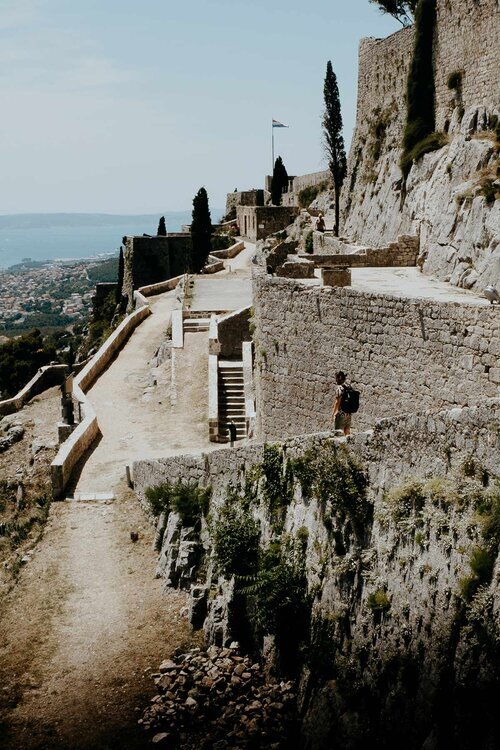
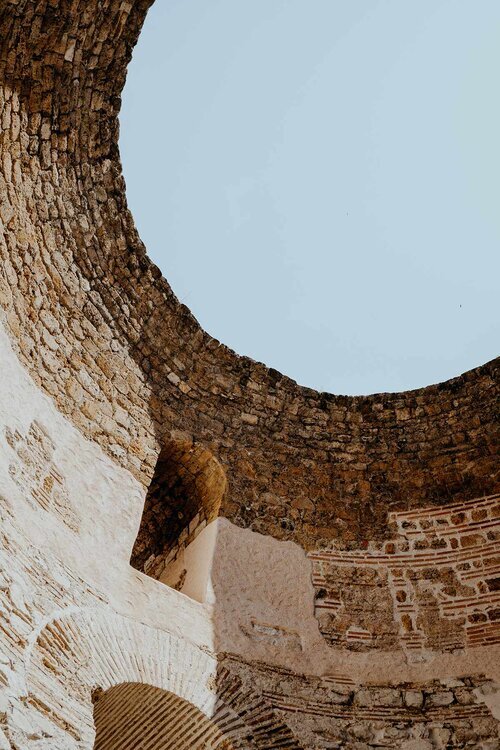
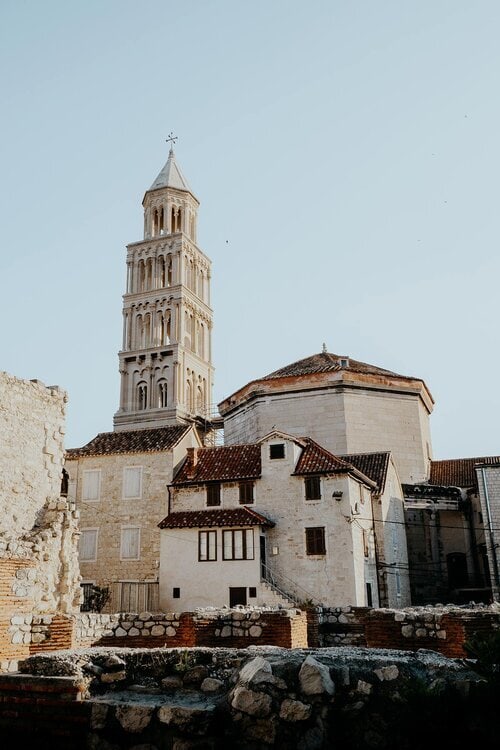
DAYTRIP | KRKA NATIONAL PARK
Croatia is home to some of the most impressive national parks in Europe, and one that I believe should be on any Croatia itinerary is the exceptional Krka National Park.
Named after the eponymous Krka river, the stunningly beautiful Krka National Park is an unaltered nature reserve that is defined by gushing waterfalls, picturesque lakes, and loads of rippling rapids and rivers.
The sheer natural beauty of the park is simply breathtaking; Roški slap, Visovac Island, and the viewpoint at the Oziđana pećina cave, just to mention a few.
With its convenient location at only 1-hour drive north-west of Split, the Krka National Park is easily, and best visited in the form of a day trip – this can be done by car or as part of an organized tour.
I took part in this full-day Krka National Park + Sibenik tour and had the most wonderful time.
Related | Check out my Krka National Park guide for inspiration and travel tips.
KRKA NATIONAL PARK | THE ESSENTIALS
Where | Krka National Park
Opening hours | Daily 08:00 – 20:00 during high season, more information here.
Cost | Entrance fee single 200 HRK (€26,50) per person | Groups 150 HRK (€20,-) per person
Recommended tour | This full-day Krka National Park tour takes you along the best waterfalls, plus a visit to the historical city of Sibenik.
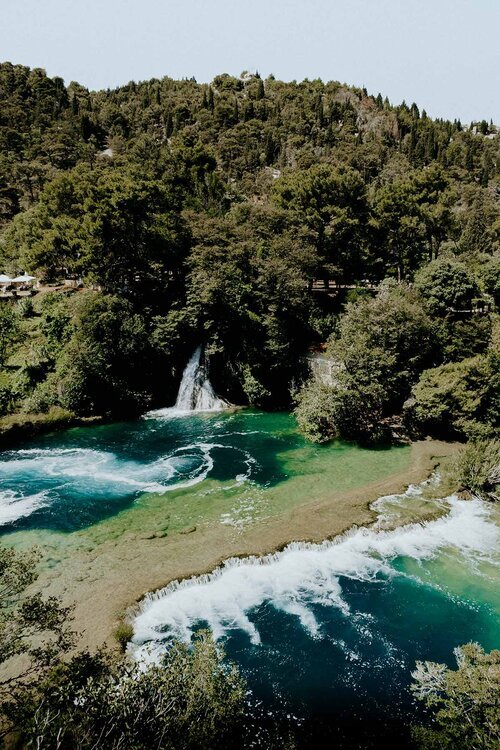
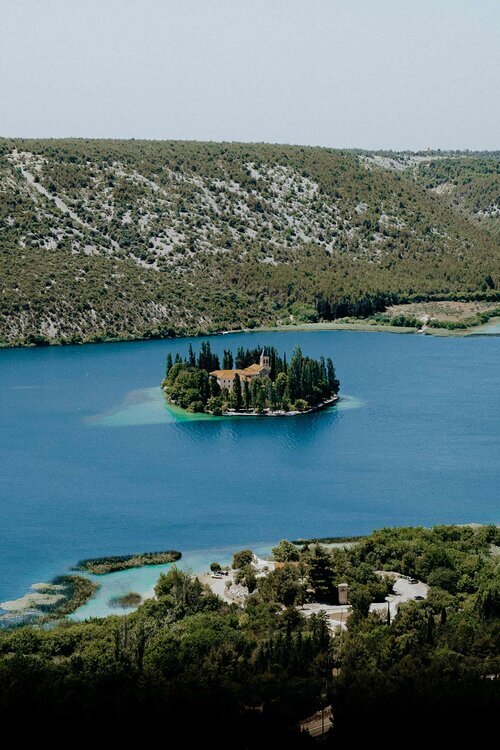
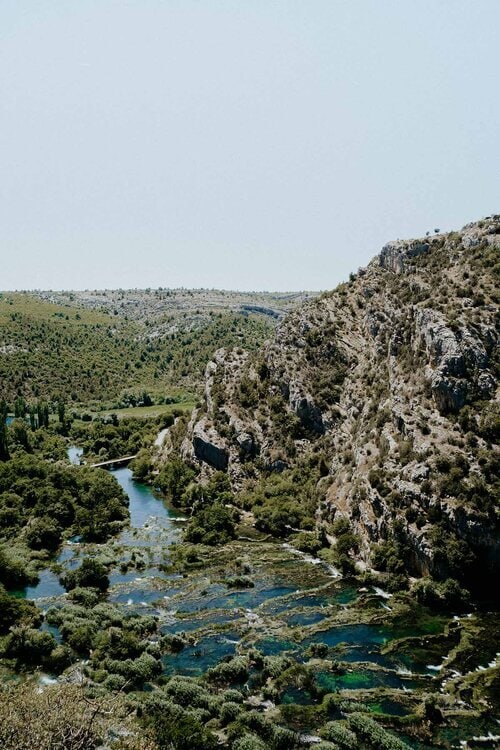
DAY 4 – 6 | ZADAR
After discovering Split and surrounds, it’s time to head further west to Zadar, a laidback coastal town that wasn’t initially included in my Croatia itinerary.
But that’s what I love most about travelling, it gives you the freedom to go with the flow – and that’s exactly what I did.
And to me, Zadar was a welcoming surprise.
Not only is it the perfect base from which to explore the ‘must-see’ Plitvice National Park, but it’s also a town that knows how to impress travellers of its own accord.
The old town showcases the rich influences of ancient Roman civilization and has a lot of interesting things to see and do – while on the other hand, you’ll have the option to take it easy in one of the many trendy bars and restaurants.
Zadar Old Town provides its visitors with an authentic Balkan summer experience, and is the perfect place to chill out for a few days – so I advise spending at least two full days to take it all in.
ZADAR | MY HIGHLIGHTS
Zadar Sea Organ | Perched on the edge of the Riva is the Zadar Sea Organ, an architectural sound art object, that is without a doubt my favourite point of interest in Zadar. The innovative art installation follows the flow of the Adriatic and creates random, yet calming sounds via the 35 organ pipes that lay beneath the marble steps of the Riva. You have to hear it to believe it.
The Roman Forum | As mentioned above, Zadar was once part of the prosperous Roman empire, and as a result, it is teeming with beautiful architecture, with the Roman Forum at the heart of it all. Situated at the epicentre of Zadar Old Town, the Roman Forum is literally and figuratively unmissable, and that’s a good thing.
Bazen Kolovare | For those after a day of relaxing, make sure you visit Bazen Kolovare, a large natural swimming pool that is the perfect cure during the sizzling summer days. If you’re considering visiting, remember to bring your swimsuit, a good book and some suncream.
Related | Check out my Zadar guide for inspiration, travel advice and all the essentials.
ZADAR | THE ESSENTIALS
Where | Zadar
Where to stay in Zadar | I stayed at Boutique Hostel Forum and Apartments & Rooms Mareta, and both exceeded my expectations.
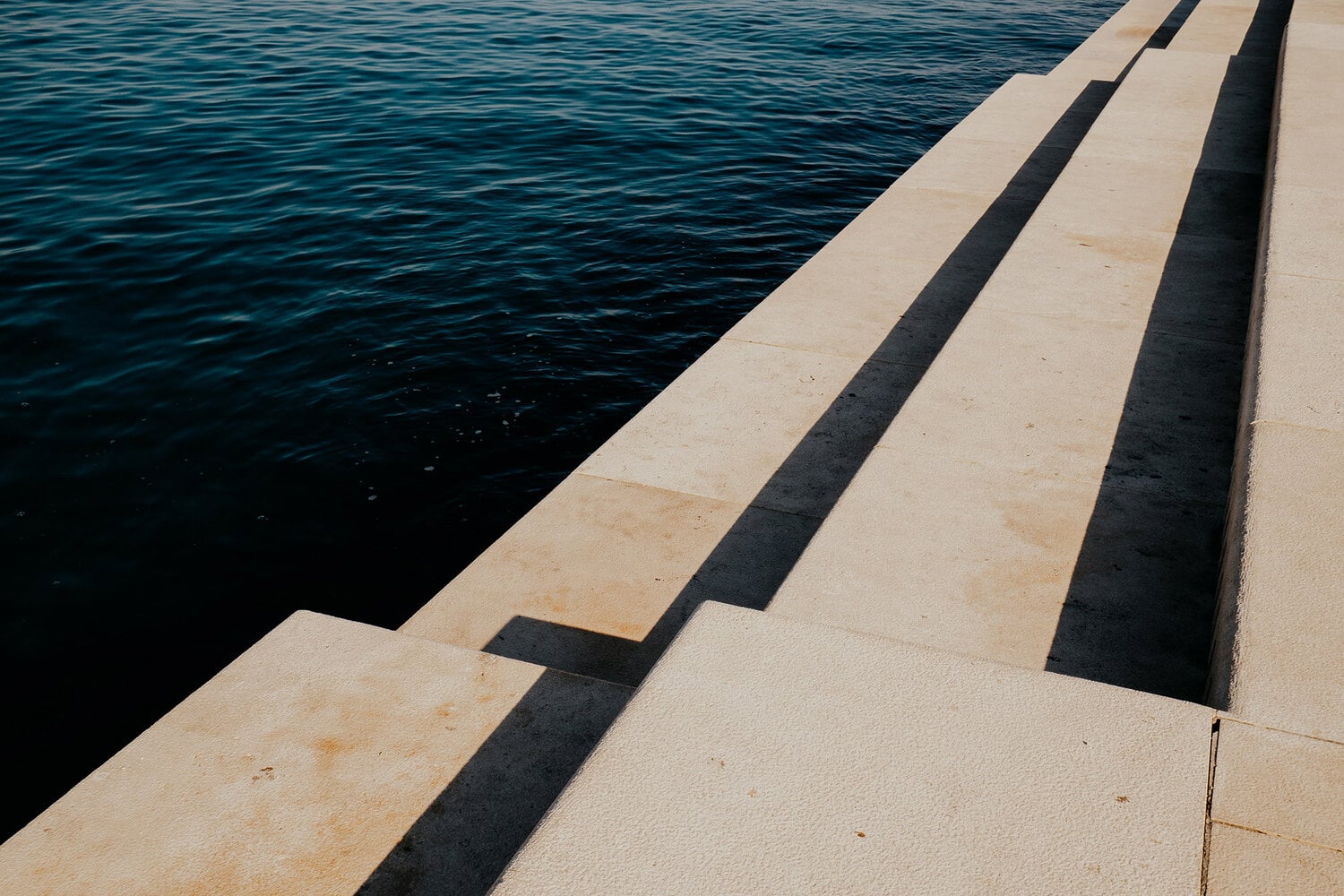
DAY TRIP | PLITVICE NATIONAL PARK
Plitvice National Park is, without question, one of the definite highlights of this two-week Croatia itinerary.
Just north of Zadar, and perfectly explored as part of a day trip lies the Plitvice National Park, an extensive forest reserve that truly is a spectacle to behold.
The UNESCO listed National Park is marked by an exceptional mix of idyllic waterfalls, large interconnected lakes, and lush greenery all around.
That said, the extensive Plitvice National Park is divided into two sections – the Upper lakes (Gornja Jezera) and the Lower Lakes (Donja Jezera), both equally beautiful and worthy of a visit.
Also, there is no shortage of adventurous walking trails, which makes it perfect for those after an active day among Croatia’s untouched nature.
Though you’ve probably seen it pass by on your Instagram feed over a thousand times, I’m here to say that it is even more beautiful up close and personal.
Related | Check out my Plitvice National Park guide (coming soon) for more inspiration and advice on how to visit responsibly.
PLITVICE NATIONAL PARK | THE ESSENTIALS
Where | Plitvice National Park
Opening hours | Daily 07:00 – 20:00 during the high season, more information here.
Cost | Entrance fee 300 HRK (€39,70) per person
Recommended tour | This full-day Plitvice National Park tour from Zadar uncovers all the highlights of the unique Plitvice National Park.
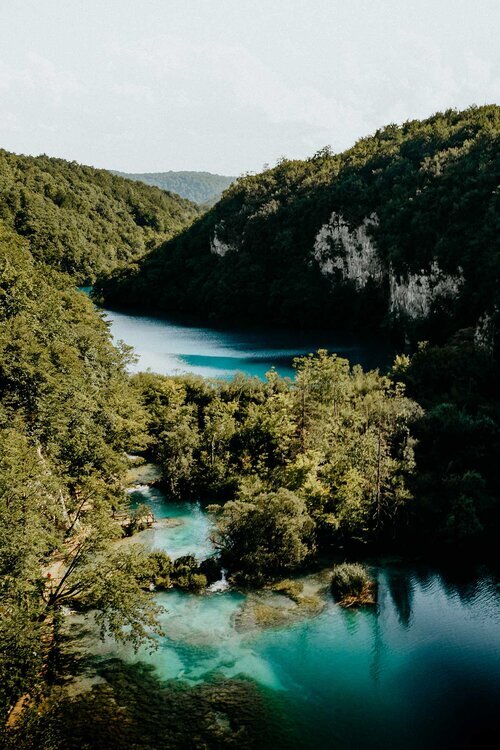
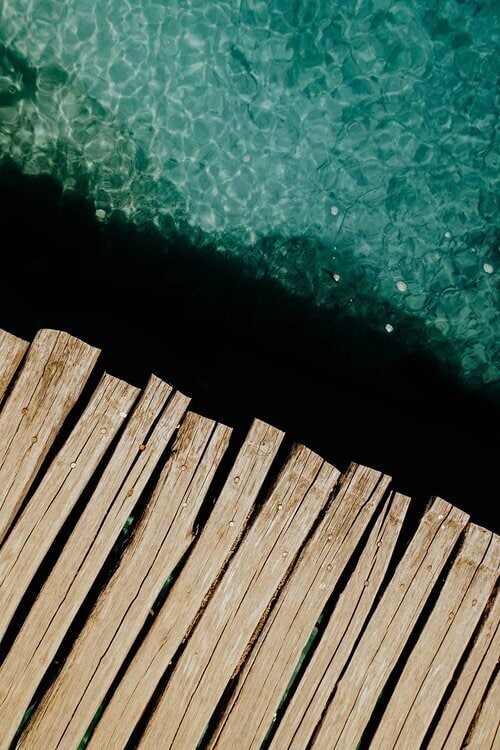
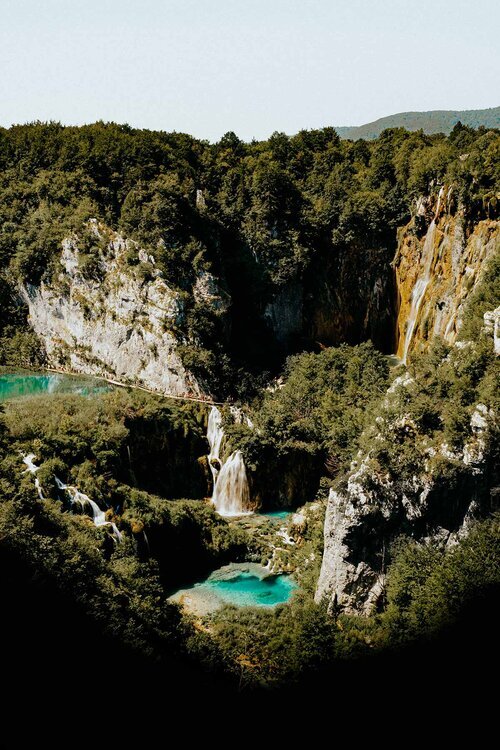
DAY 7 – 10 | HVAR ISLAND
Following a pleasant few days in Zadar, and an awesome day trip to the Plitvice National Park, the time has come to head for the next stop on this Croatia itinerary, the enchanting island of Hvar.
And as soon as I’d set foot on Hvar, the postcard-perfect island captured me with its charm.
Situated amid the Adriatic, off Croatia’s Dalmatian coast, lies the island of Hvar, a paradisiac island that is among the most popular destinations in Croatia, if not the most popular.
Like most places in Croatia, the old town is beautiful as ever – think intriguing Venetian architecture, narrow cobblestone streets, and well-preserved ancient fortresses.
Also, Hvar is home to some of the most idyllic beaches in the whole of Croatia. Add the mouth-watering Dalmatian cuisine, and Hvar turns into the island you’ve always dreamed of.
Be warned though, the laidback island life is pretty damn tempting, inviting you to spend all your time here. Look, it’s not a punishment – not at all, but there’s more of the good stuff waiting for you in the remainder of this itinerary.
For that reason, I recommend spending three to four days on Hvar. By doing so, you have all the time to explore the island, while there’s also enough time for sunbathing and swimming.
HVAR | MY HIGHLIGHTS
Hvar Beaches | Woohoo, the beach is part of your daily routine when on Hvar Island, and that’s an absolute good thing if you ask me! With no shortage of picture-perfect beaches, Hvar is easily one of the best beach destinations on this Croatia itinerary, making it perfect for lazy days full of sunbathing and swimming. If you’re looking to uncover the best beaches of Hvar, make sure you check out my in-depth Hvar guide.
Hvar Fortress | Settled high above Hvar Town is the Hvar Fortress, a former stronghold that provides the most dazzling views of Hvar’s harbour and the stunning Pakleni Islands in the distance. The rustic fortress dates back as far as the 13th century, and a visit gives you an understanding of its eventful history. I’d highly recommend visiting just before sunset, especially if you’re into photography.
Franciscan Monastery | The ancient Franciscan Monastery is in my opinion the most iconic point of interest in Hvar. Luckily for you, this impressive monastery is easily admired on a relaxing morning walk on its adjacent promenade. For those into history, the monastery doubles as a museum, so make sure to have a look inside, it is worth it.
Related | Check out my Hvar guide for inspiration, travel advice and all the essentials.
HVAR | THE ESSENTIALS
Where | Hvar
Where to stay in Hvar Town | I stayed at Villa San Marco and White Rabbit Hostel.
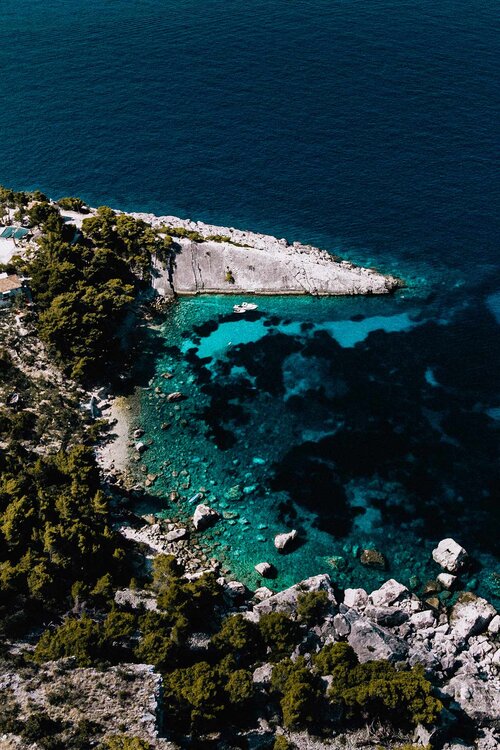
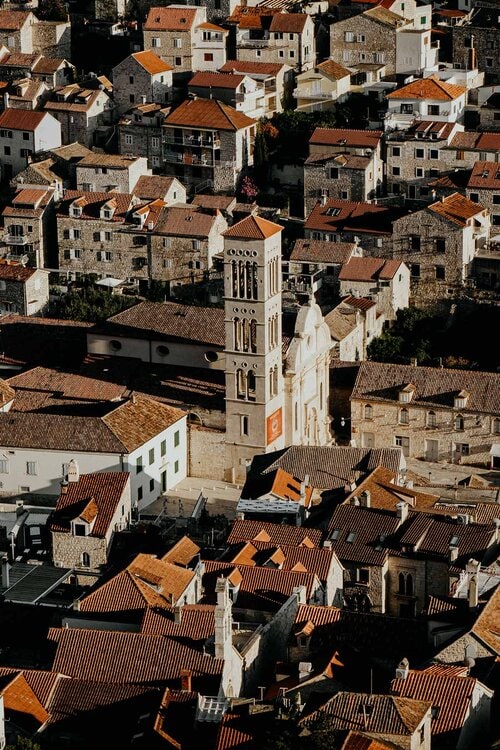
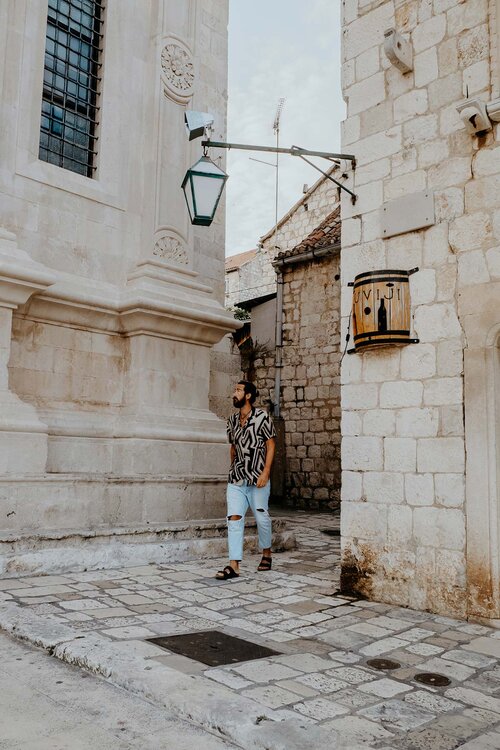
DAY 11 – 12 | KORCULA
After uncovering just about every square inch of Hvar, it is time to grab a ferry to the next destination on this itinerary; the island of Korcula, a scenic island that is all about local life and its traditions.
Even though Korcula is fairly compact, the eponymous old town isn’t inferior to other destinations included in this itinerary. It is in fact, one of the most authentic places that I visited during my two weeks in Croatia.
The historical old town is encircled by towering fortifications and is defined by charming little laneways, ornate time-worn buildings and a well-balanced mix of ‘real’ local eateries and bars.
It is, therefore, no wonder that Korcula is recognised as one of the best-preserved medieval towns in the Mediterranean, and believe me, it’s more than deserved.
It’s a town where life slows down a tad, and to me, that was as a welcome surprise after several days of exploring and creating.
For the best experience, I advise spending at least one day in Korcula, allowing you to get a feel for the town and the magical ambience that prevails here.
KORCULA | MY HIGHLIGHTS
The Marco Polo House | One of the undisputed highlights on a visit to Korcula is the house of Marco Polo. Although we’ll never know for sure, local legend has it that famous world traveller Marco Polo was born in Korcula. Whether you believe it or not, the time-worn house is quite appealing, and therefore worthy of a visit.
St. Mark’s Cathedral | Situated in the heart of Korcula Old Town is the impressive St. Mark’s Cathedral, a towering church that is marked by locally obtained limestone, intriguing details, and an ornate Gothic-Renaissance style. For those looking to see Korcula from above, make sure you visit the bell tower, which is considered the highest point of the old town.
Related | Check out my Korcula guide for inspiration, travel advice and all the essentials.
KORCULA | THE ESSENTIALS
Where | Korcula
Where to stay in Korcula | I stayed at White House Apartments and B&B Ghetto.
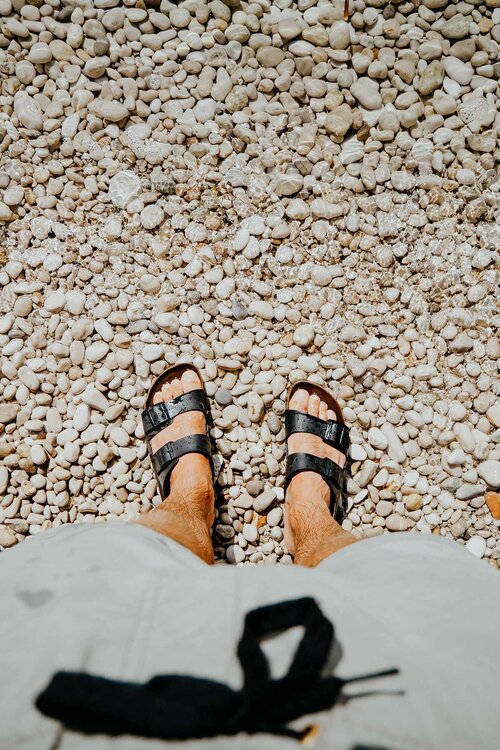
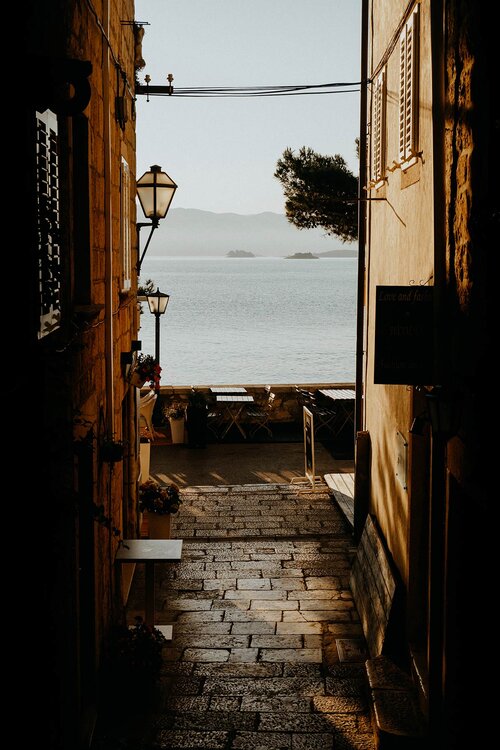
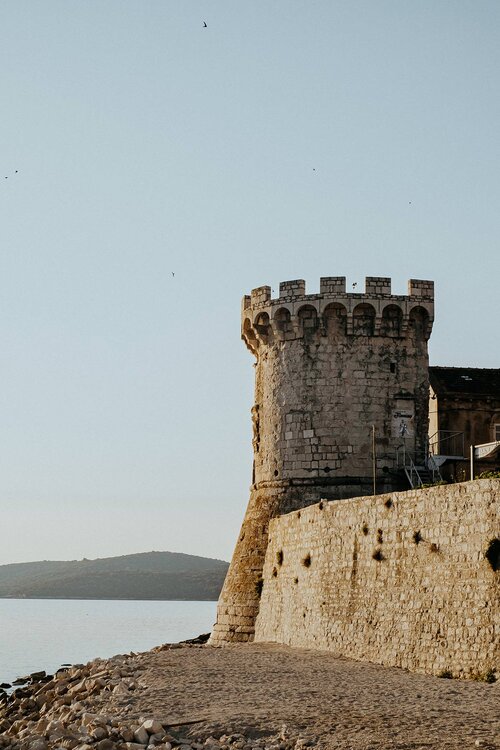
DAY 12 – 14 | DUBROVNIK
I often hear the saying, save the best for last, and this is clearly also the case with this itinerary.
That brings us to Dubrovnik, one of the places that I’ve dreamed of visiting, long before I planned this spontaneous road trip within Croatia.
The picture-perfect fortified city next to the turquoise waters of the Adriatic – internationally known as Kings Landing in HBO’s blockbuster series Game of Thrones, is without question the most appealing old town I’ve ever set foot in.
But it’s not just a pleasure for the eye – the medieval town is a vibe on its own.
To tick off the best things to see and do, and appreciate Dubrovnik fully, I believe you should stay at least two days here – you might even want to stay longer than planned – yes, it’s that awesome.
As with all destinations on this itinerary, Dubrovnik is best explored at a slower pace. If you somehow wish to squeeze it in a shorter visit, make sure you check out my Dubrovnik guide.
DUBROVNIK | MY HIGHLIGHTS
Dubrovnik City Walls | I believe it’s right to say that a visit to Dubrovnik isn’t complete without a walk atop of the town’s intriguing city walls. The two-hour walk provides the most fascinating vistas of Dubrovnik’s scenic time-worn buildings, with the shimmering Adriatic as its backdrop.
Mount Srd | Talking about views, another great point of call is Mount Srd, an extraordinary vantage point that rises high above Dubrovnik. From the summit, you’ll be welcomed by striking views of Dubrovnik’s iconic terracotta roofs, as well as Lokrum Island in the distance. All in all, Mount Srd makes the ideal place to watch a stunning Croatian sunset unfold.
Walk the old town | Any trip to Dubrovnik should obviously involve at least one full day to behold the ornate historical buildings that are dotted throughout the old-fashioned streets of the old town. However, as one of Croatia’s most visited destinations, it is wise to wake up early for this one, especially during the peak summer months. For those looking to join a guided tour, this 1.5-hour walking tour of Dubrovnik Old Town includes the most important structures.
Related | Check out my Dubrovnik guide for inspiration, travel advice and all the essentials.
DUBROVNIK | THE ESSENTIALS
Where | Dubrovnik
Where to stay in Dubrovnik | I stayed at Hostel Angelina Old Town and Guesthouse Rustico, and had a wonderful time.
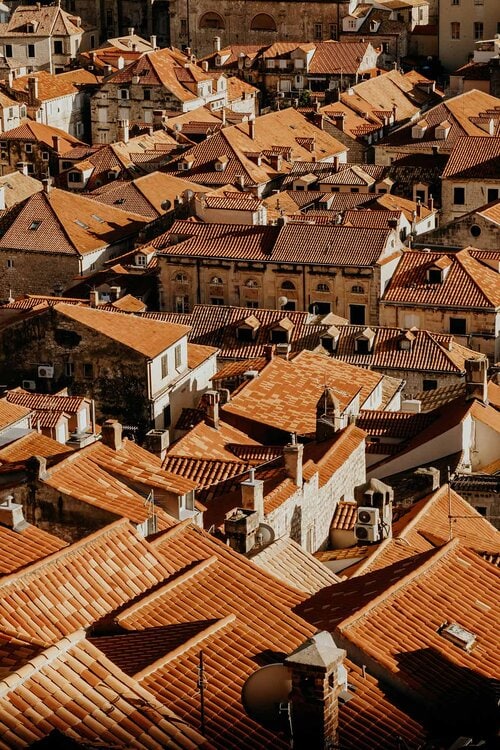
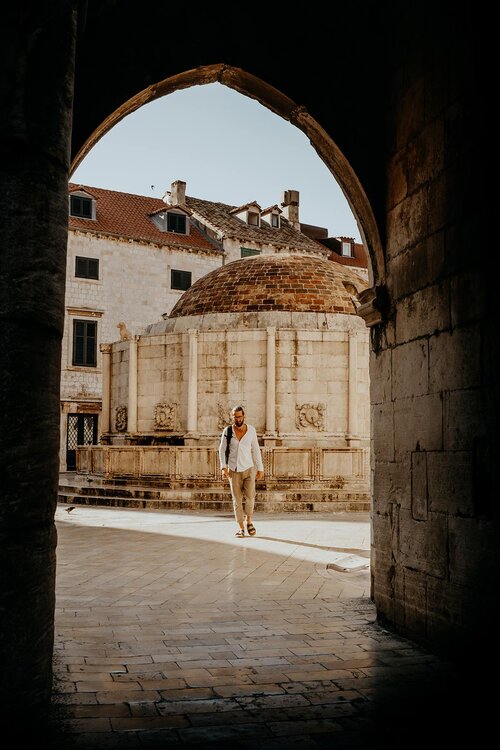
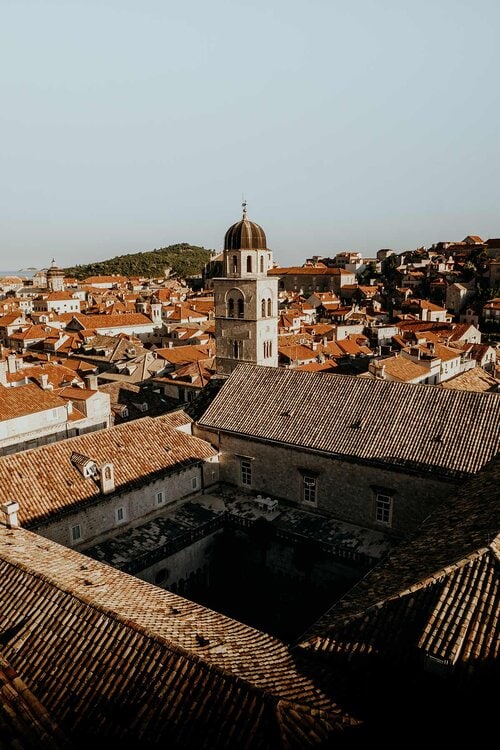
DAY 15 | TIME TO LEAVE CROATIA
It’s a wrap! After roughly 2 weeks in Croatia, exploring what I believe to be the country’s most stunning places, this itinerary sadly has to come to an end.
From here, the possibilities are endless, so the next step is entirely up to you.
But whether you’re heading home, or continue to travel the rest of Europe as part of a massive road trip, I’m pretty sure that you’ll leave Croatia with a bunch of awesome, new memories.
I personally opted to leave Croatia via plane from the Resnik Airport in Split – this is one of the cheapest options for travellers from Europe.
One word of attention, if you decide to follow the above option, make sure you arrive in Split well before your flight, especially if you need to return your rental car.
Alternatively, and if spending extra money isn’t a problem, you also have the option to catch a flight from Dubrovnik Airport.
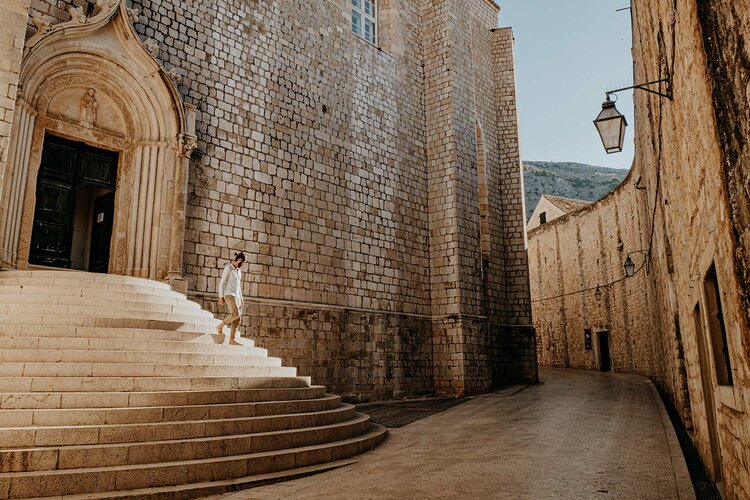
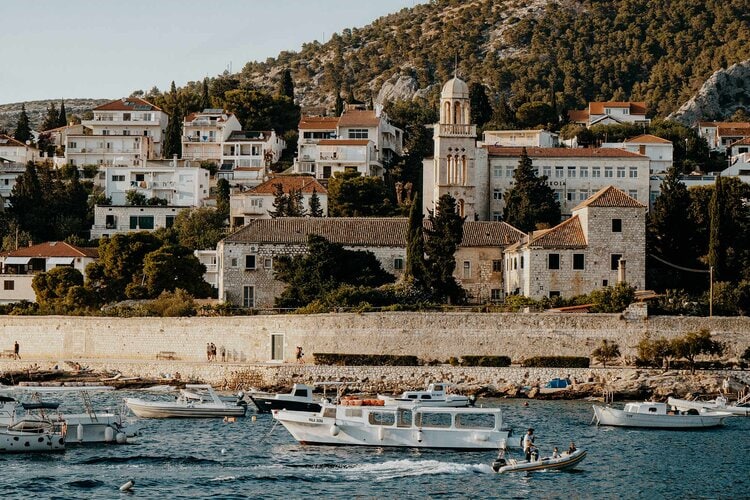
WEATHER IN CROATIA | BEST TIME TO VISIT CROATIA
Croatia is situated in the Mediterranean and generally enjoys a warm and comfortable climate.
That said, the most popular time that travellers flock to Croatia is during the European summer months of June, July, August and September.
And while the weather is absolutely stunning during these peak summer months, I firmly believe that it’s better to plan your trip is for the off-season months of April, May and October.
By doing so, you’ll have excellent weather for beach days and sightseeing adventures alike, while you also reap the benefits of the somewhat lower prices that come with travelling offseason.
I followed this Croatia road trip itinerary in June, and I couldn’t wish for better circumstances to discover the beauty that this incredible country holds.
TRANSPORT | HOW TO GET AROUND CROATIA
This road trip itinerary wouldn’t be complete without informing you about the ins and outs in terms of transport options in Croatia.
Croatia is pretty compact in size, and therefore easy to navigate by rental or public transport.
CAR | HOW TO GET AROUND CROATIA
If you’re keen to explore Croatia more freely, I believe that renting a car is the better deal here.
Not only does it provide the flexibility to travel at your own pace, but it’s also slightly comfier, and significantly easier planning day trips.
For car rental in Croatia, I highly recommend Rentalcars.com. They offer brilliant service, additional insurance options, and a wide array of cars, all at an affordable rate. Prices and availability here.
BUS | HOW TO GET AROUND CROATIA
For those not comfortable with driving a car, that’s all right – Croatia is home to great public transport options.
My favourite of these options is Flixbus, a company that is excellent in terms of comfort and punctuality, not to mention that it operates between all the major cities in Croatia, including Zadar, Split and Dubrovnik.
One small hint though, make sure you book your tickets in advance online.
For information on availability, departures and additional information, visit the Flixbus website.
FERRY | HOW TO GET AROUND CROATIA
If you’re planning to set foot on some of the astonishingly beautiful islands of Croatia (I bet you will), it is essential to know the basics as concerns transport with Croatia’s ferries.
There are two ferry companies that service the islands, Krilo for foot passengers, and Jadrolinija for car and foot passengers alike.
Both ferries are affordable, comfortable, and punctual – plus they operate frequently during the day.
Just make sure you book your tickets in advance, especially during the peak summer months – this can be done online or at the ticket booth in the harbours.
SAFETY IN CROATIA | TRAVEL INSURANCE
While Croatia is completely safe for travellers, I always aim to enter a foreign country with my travel insurance sorted out, and I highly advise anyone else to do the same.
Where we prefer to assume that everything runs smoothly during our travels, the reality is often that something can go wrong at any given moment – when that happens, it is better to be safe than sorry.
Heymondo | Whether you’re going on a 3-week backpacking trip, or planning a long stay somewhere abroad, Heymondo has excellent insurance options either way – plus full covid-19 coverage and a handy app with 24-hour medical assistance. Readers of WTSW receive 5% off any insurance policy, more information here.
World Nomads | If you’re an adventure seeker, backpacker, or planning your once-in-a-lifetime world trip, make sure you check out World Nomads, they designed the perfect travel insurance to help you travel safer and smarter. Do note that they’re not covering covid-19 related claims.
PLAN YOUR CROATIA ITINERARY WITH THESE ESSENTIAL GUIDES
My 3-week Mexico itinerary: uncover the absolute best of Yucatán
Uncover the best of Yucatán with my 3-week Mexico itinerary, including what to see and do, the best day trips, where to stay, and the best time to visit – plus all the essentials to help you have an incredible time.
Mexico is, without a doubt, the best possible introduction to travelling in Latin America.
At the moment, the Yucatán Peninsula in Mexico is among the most popular travel destinations in the world, and that is for a good reason.
From the well-preserved ancient Mayan ruins, to the mysterious underworld-ish cenotes, the paradisiac stretches of palm-fringed beaches, to the bright coloured streets of authentic colonial towns, Yucatán is absolutely superb.
In addition to all this beauty, there is the most mouth-watering local food, excellent weather year-round, and the captivating and ever-present Maya culture, that was way ahead of their time.
After spending 3 weeks in Yucatán, I’ve crafted together my detailed Mexico itinerary – all based on my personal travel experiences, to ensure you’ll uncover the absolute best things to see and do in Yucatán.
On top of that, you’ll find advice on where to stay, how to get around – plus travel essentials and helpful tips, to help you make the most out of your time in Yucatán, Mexico.
Love my photos? I’ve just launched my first ever print collection – receive 15% discount until the 1st of September using code; PRINT.
WHERE IS THE YUCATÁN PENINSULA, MEXICO
Yucatán is an incredibly picturesque region situated on the eponymous Yucatán Peninsula in the most southern part of Mexico, and is encircled by the Gulf of Mexico and the Caribbean Sea.
This particular part of Mexico was once home of the famous Maya civilization and shares borders with both Guatemala and Belize.
The popular Yucatán region is split into three states, including Yucatán, Campeche, and Quintana Roo, and is considered one of the best destinations in the Caribbean.
ACCOMMODATION | WHERE TO STAY IN YUCATÁN, MEXICO
The popular Yucatán Peninsula is continually claiming its name as one of the best travel destinations in the Caribbean, and accordingly, accommodation to fit any budget can be found here.
Think backpacker-friendly hostels, homey Airbnbs, and luxury hotels – but also some of the most progressive Eco-resort with your private slice of beach next to the mesmerizing Caribbean Sea.
When planning your trip, bear in mind that the cost of accommodation ranges anywhere between $20 – $250 a night.
BOOKING.COM
As a solo traveller, my favourite website to find accommodation is booking.com.
Not only is it home to an extensive range of great accommodation, but it’s also super easy-to-use, not to mention that options to fit any budget are found here.
On top of that, you can cancel your booking at any given time, without any cost – perfect if you’re suddenly willing to change your itinerary.
That said, if you’re looking for a hostel, apartment or hotel, make sure to search for an option that fit your requirements on booking.com. Prices and availability here.
AIRBNB
It is no secret that Airbnb has taken off in the last couple of years, and as a consequence, there’s a wide array of brilliant Airbnb options dotted throughout Yucatán.
If you’re curious to explore these options, the cost, and availability, have a look at the Airbnb website.

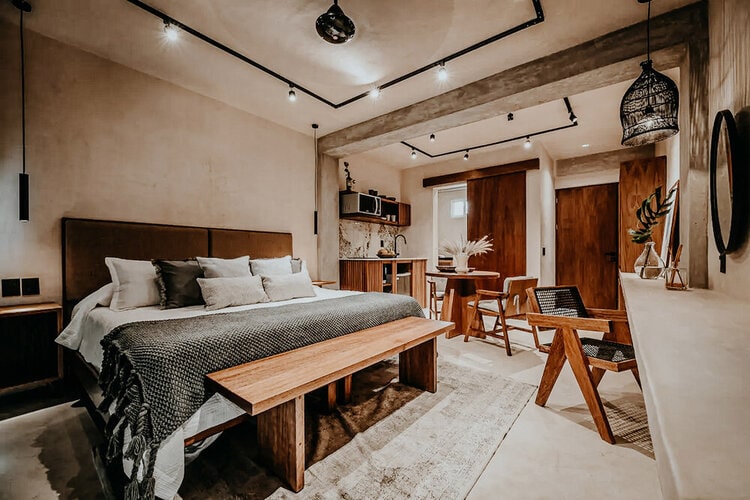
MY 3-WEEK MEXICO ITINERARY DAILY OVERVIEW
DAY 1 | ARRIVAL IN CANCÚN
When you’re planning a road trip through the Yucatán Peninsula, it is almost inevitable that your flight won’t arrive at the Cancún International Airport. It is, therefore, no surprise that Cancún will be the first stop on this Mexico itinerary.
To me, Cancún felt a bit too inauthentic, which doesn’t necessarily match my travel preferences. However, due to my late arrival, I decided to spend one night here, before moving to Isla Holbox.
For that reason, I can’t give my honest opinion on Cancún. What I do know, is the fact that it’s a great city to relax and get your bearings after a long and exhausting flight.
Even though there’s a lot of negative words spoken when it comes to Cancún, it simply wouldn’t be fair to go with the masses and put a negative stamp on it.
CANCÚN | ESSENTIALS
Where | Cancún, Quintana Roo
Where to stay in Cancún | After a long flight, I always try to search for the most comfortable, budget-friendly accommodation possible. For Cancún, this was Terracaribe Hotel Boutique, which I highly recommend.
Alternatively, use booking.com to find accommodations in Cancún.
How to get around Cancún | Cancún is easily explored by foot. Alternatively, take a local bus or taxi.
DAY 2 – 4 | ISLA HOLBOX, MEXICO’S IDYLLIC ISLAND
After acclimating to the tropical heat in Cancun, it’s time to unwind at the pristine beaches of Isla Holbox, one of the few places in Yucatán that are still largely untouched by upscale tourism.
Although I think it won’t be a hidden gem much longer, the island is developing at a rapid pace, which will eventually result in greater popularity among locals and backpackers alike.
But for now, Isla Holbox is everything you expect a tropical island to be.
Think beautiful stretches of white-sanded beach, family-run cafés & beach clubs, a tranquil atmosphere, and a booming street art scene. Not to mention that it’s completely car-free and inhabited by a great variety of tropical wildlife.
Isla Holbox is surely one of the most paradisiac islands I’ve ever set foot on
All this makes Holbox an excellent place to start off your Mexico adventures. But be warned, the laidback island vibes will seduce you to spend 3 weeks here. I strongly recommend spending three days on Holbox, this is perfect to explore the best of the island and its tropical surroundings.
ISLA HOLBOX | MUST-SEE ATTRACTIONS
Punta Mosquito | At only a 20-minutes bike ride away from Holbox town lies Punta Mosquito, a widely stretched sandbar that is defined by its pearl-white sand and absurdly clear water. To me, Punta Mosquito is without question the most idyllic place on the island. For your own safety, I’d recommend visiting during ebb tide, once the water level rises you may not be able to walk back to the beach.
Holbox’s street art scene | Isla Holbox is well-known for its booming street art scene, which illuminates almost the entire town. Bright-coloured murals pop up on about every corner, and walking through the streets to admire them is one of the best things to do on Holbox.
Curious about all the things to see and do in Isla Holbox – check out my detailed guide here.
ISLA HOLBOX | ESSENTIALS
Where | Isla Holbox, Quintana Roo
Where to stay in Isla Holbox | I stayed at Alcobas Del Mar and Hotel El Pueblito. Additionally, I would recommend staying at Maria Carlota.
Alternatively, use booking.com to find accommodations in Isla Holbox.
How to get from Cancun to Isla Holbox | Jump aboard a direct ADO bus from Cancun to Chiquilà (departs at 08:15, 10:30 and 14:15), before taking the ferry from Chiquilà to Isla Holbox. The journey takes around 3 hours.
How to get around Isla Holbox | Isla Holbox is completely car-free and is most-fun explored by bicycle. Alternatively, take a walk or hire a golf cart taxi.
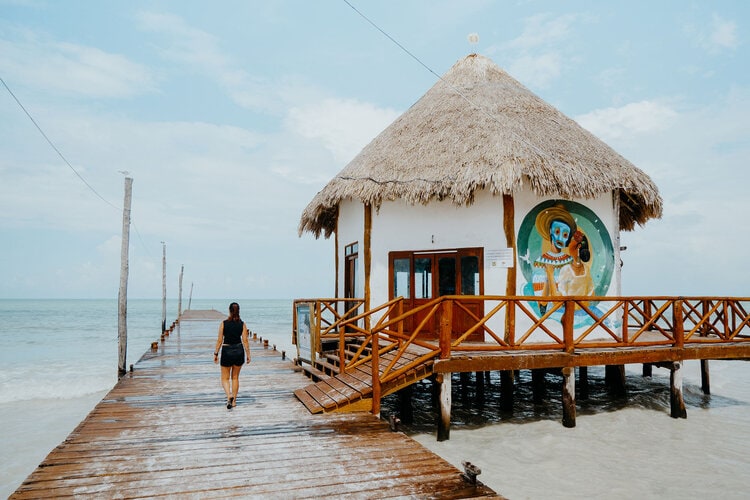
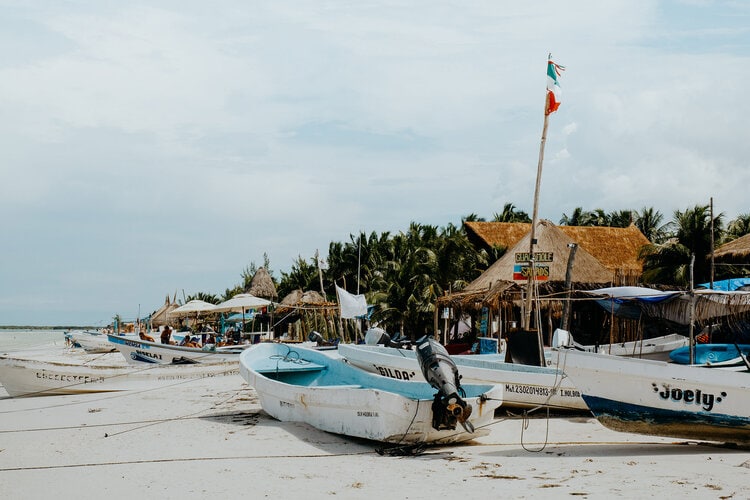
DAY 5 – 8 | VALLADOLID, YUCATÁN’S COLOURFUL COLONIAL TOWN
Just west of Isla Holbox lies Valladolid, a sleepy town that stole my heart from the moment I arrived.
Charmed by its authentic atmosphere, enchanting colonial architecture, and bright pastel-coloured laneways, Valladolid is easily my favourite stop on this 3-week Mexico itinerary.
But it is definitely not only the picturesque town and its lovely colonial streets that make Valladolid so popular among travellers.
Valladolid makes an excellent base to explore some of the best cenotes in Yucatán, not to mention that it is located at only a 45-minute drive from Chichen Itza, Mexico’s most significant Mayan ruin.
This charming colonial town makes you feel at home away from home – plus there is plenty to see and do, both in and around Valladolid. This is exactly why I would recommend spending at least three days here, allowing you to see the best of Valladolid and its surrounds.
VALLADOLID | MUST-SEE ATTRACTIONS
The cathedral of San Gervasio | Directly at the heart of Plaza e Parque Francisco Canton is the enchanting cathedral of San Gervasio, Valladolid’s most iconic landmark. The centuries-old church is a delight for the eye and adds to the Valladolid’s rich colonial atmosphere. If you ask me, a must-see in Valladolid.
Calzada de Los Frailes | Walk among the cobblestone alleys of Calzada de Los Frailes and discover ornate doorways, colonial architecture, and a vibrant colour palette. This Insta-famous street is probably the most picturesque street that you’ll come across in Yucatán.
Cenote Suytun | Cenote Suytun is by far the most mysterious scenery you’ll find in this Mexico itinerary. The picturesque cave-like cenote houses a mystical underworld-ish vibe, and is a dream for every photographer. If like me, you take your photography seriously, I’d highly recommend visiting first thing in the morning.
Keen to read about all the things to see and do in Valladolid – check out my detailed guide here.
VALLADOLID | ESSENTIALS
Where | Valladolid, Yucatán
Where to stay in Valladolid | Valladolid has a broad selection of excellent accommodations and I would highly recommend Hostal Tunich Naj, Hotel Casa Bamboo, and Hotel & Suites Country.
Alternatively, use booking.com to find accommodations in Valladolid.
How to get from Isla Holbox to Valladolid | Take a ferry from Isla Holbox to Chiquilà (departs every 30 minutes from 05:00 till 20:40). Once arrived in Chiquilà, take the direct bus to Valladolid, which departs once daily at 17:45. Expect the journey to take around 4 hours.
How to get around Valladolid | Valladolid has a small city centre that is effortlessly navigated by bicycle or foot. For day trips around Valladolid, I recommend making use of cheap Colectivo taxi-busses.
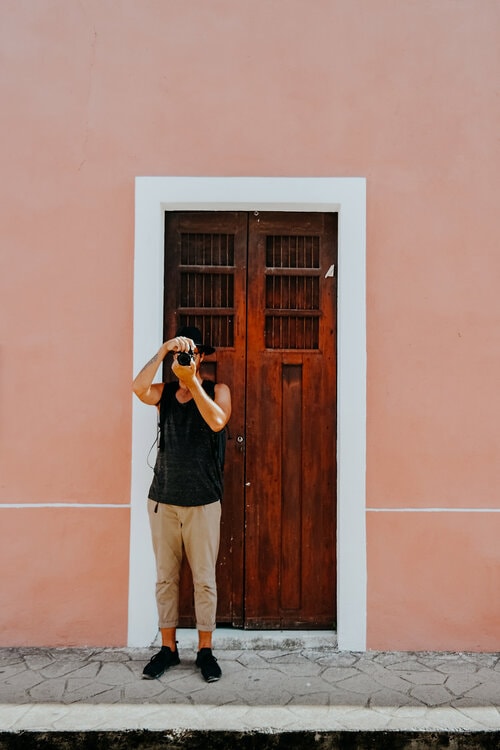
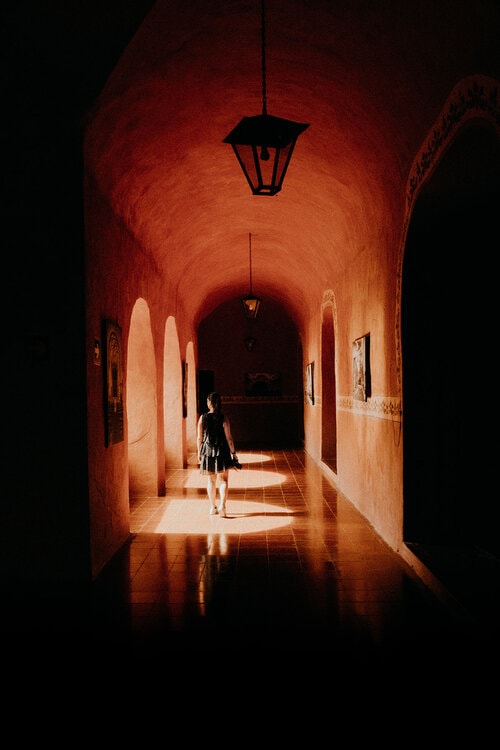
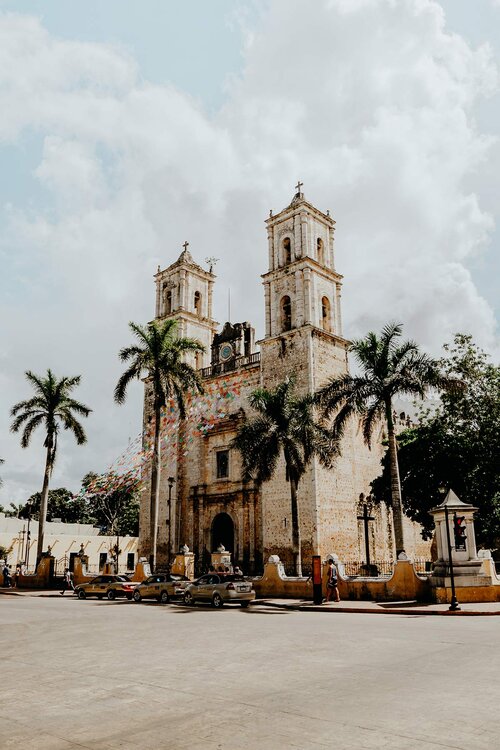
DAY TRIP | CHICHÉN ITZÁ, MEXICO’S MOST IMPORTANT MAYAN RUIN
I’m sure it won’t come as a surprise to see the phenomenal ruins of Chichén Itzá on this itinerary. And let’s be real, a trip to this ancient Mayan city is an absolute must when travelling through Yucatán.
Chichén Itzá was once the bustling epicentre of Mayan civilization. At present, the ruins are restored in the same manner as the cities glorious past. For those two reasons, Chichén Itzá is acknowledged to be one of the most important ancient ruins in the whole of Mexico.
Every day, thousands of travellers visit to catch a glimpse of the complex’s magnificent structures, among which you’ll discover ornate stepped pyramids, majestic temples, columned arcades, and various other structures & shrines.
If you’re keen on a chance to have the marvellous El Castilo all to yourself, I highly recommend visiting Chichén Itzá as a day trip from Valladolid. The town’s strategic position makes it easy to visit Chichén Itzá at sunrise, which ensures that you’ll be one of the first to enter the complex.
That said, you might also want to double your advantage by combining the above tips with a skip the line ticket.
CHICHÉN ITZÁ | ESSENTIALS
Where | Chichén Itzá
Entrance fee | 481 MXN, ($25) per person
Opening hours | Daily 08:00 – 16:30
How to get from Valladolid to Chichén Itzá | Colectivo’s leave Calle 46 every 30 minutes from 07:00 till 18:00. The journey from Valladolid to Chichén Itzá takes roughly 45 minutes.
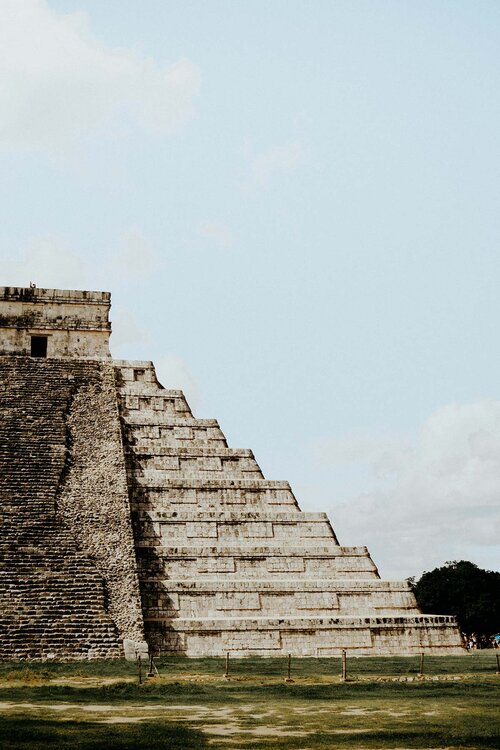
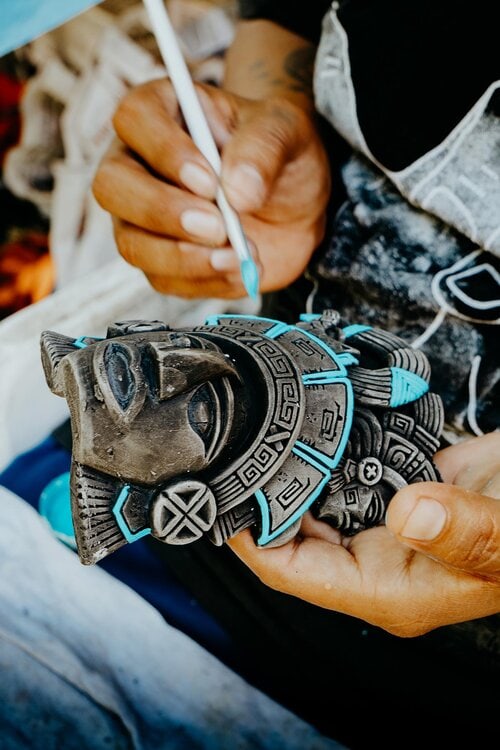
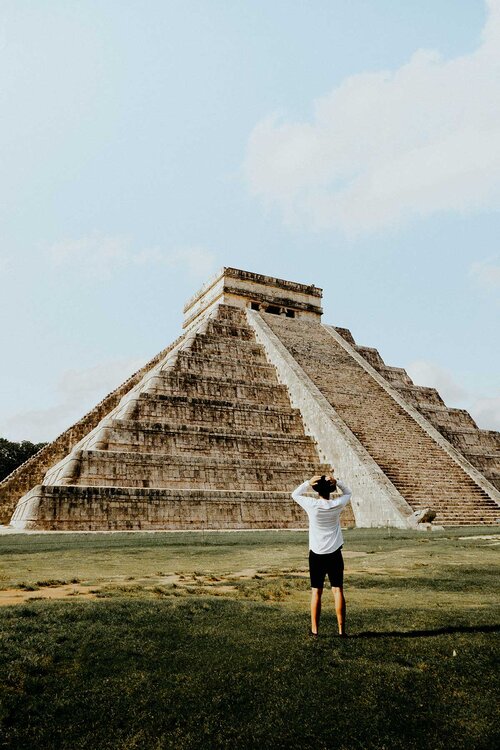
DAY 9 – 12 | MÉRIDA, YUCATÁN’S CAPITAL OF CULTURE
Following an adventurous day trip to the ruins of Chichen Itzá, its time to leave Valladolid and embark on a short bus ride to Mérida, Yucatán’s capital of culture.
Once you arrive in Mérida, you’ll intuitively notice that the city has a pretty unique feel to it. The city’s historic centre houses a vibrant yet serene atmosphere, is home to the most friendly people, and the fascinating Maya culture is still ever-present, which is a delight to witness.
As a result, there are enough great things to see and do in Mérida, including some of the best things to do in Yucatán. Think lively local markets, historical monuments, and broad central plazas, just to mention a few.
Although Mérida wasn’t my favourite place in Yucatán, it is still an interesting city to learn about the region’s rich and captivating culture.
However, I would recommend spending at least three days here. This will allow you to see all the best places in Mérida – plus you have a spare day to visit the ruins of Uxmal.
MÉRIDA | MUST-SEE ATTRACTIONS
Paseo de Montejo | You can’t visit Mérida without taking a stroll along the scenic avenue of Paseo de Montejo. The famed avenue is often referred to as the Champs-Élysées of Mérida, and is home to a bunch of vibrant restaurants, inviting boutique stores, and two outstanding museums, which are Casa Museo Montes Molina and Palacio Canton.
Monumento a la Patria | At the end of the renowned Paseo de Montejo avenue lies the iconic Monumento a la Patria. A walk around this impressive monument reveals more than 300 hand-carved figures that reflect the story of Mexico from the creation of Tenochtitlán all the way to the mid 20th century. If you’re curious about history like me, Monumento a la Patria is a must-see in this Yucatán itinerary.
Plaza Grande | Taking a break at one of Mexico’s many plazas is one of my favourite things to do in Yucatán. What’s even better is the fact that Plaza Grande is considered one of the most charming Plazas in Mexico. Simply sit down, take in the authentic ambience, and watch the world go by, sounds excellent right?
Curious about all the things to see and do in Mérida – check out my detailed guide here.
MÉRIDA | ESSENTIALS
Where | Mérida, Yucatán
Where to stay in Mérida | Mérida has no shortage of great accommodations and I would recommend Casona 61, Hotel Colon Mérida, and Hotel Maya Yucatán.
Alternatively, use booking.com to find accommodations in Mérida.
How to get from Valladolid to Mérida | Take a direct bus from Valladolid to Mérida. The journey takes around 2 hours. For up to date timetables, visit the ADO website.
How to get around Mérida | The easiest way to navigate Mérida is on foot. Alternatively, rent a bicycle.
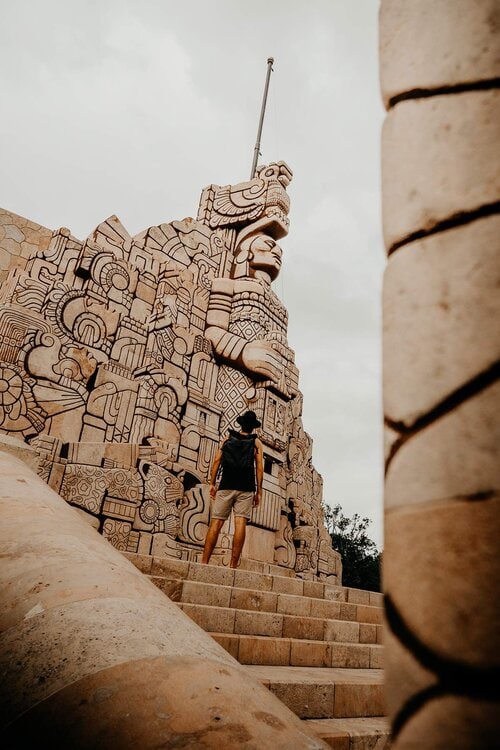
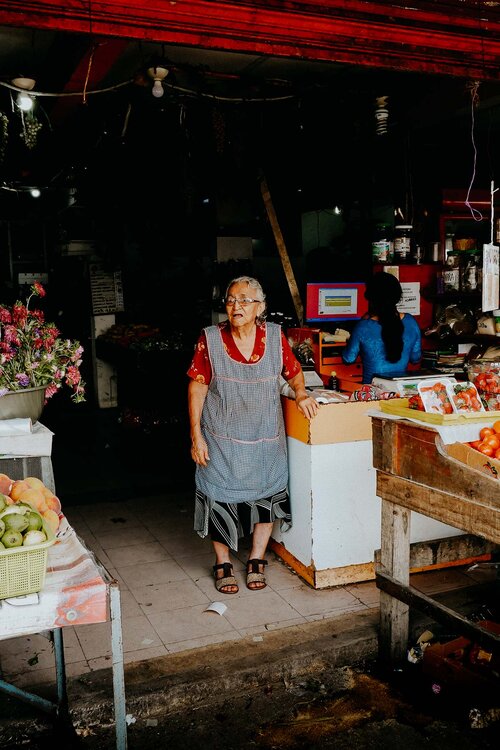
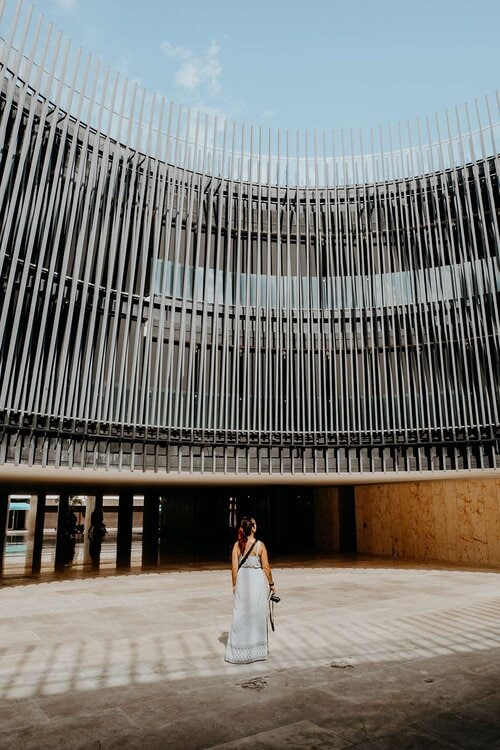
DAY TRIP | UXMAL, THE BEST MAYAN RUINS IN YUCATÁN
With an excellent geographical location, Mérida makes the perfect base for an adventurous day trip to the well-preserved ruins of Uxmal.
Situated only just south of Mérida and surrounded by a dense jungle lies Uxmal, an ancient Mayan city that is arguably one of the best-preserved archaeological sites in Yucatán.
Made up of a bundle of imposing structures, Uxmal is a broad complex that was once amongst the largest cities in Mayan civilization. Legend has it that the city housed around 15,000 inhabitants at its peak.
At present, the city continues to live up to its former and well-deserved reputation, which is no wonder to me.
The structures at Uxmal are absolutely breathtaking; the Pyramid of the Magician, the Governor’s Palace, and the Great Pyramid, just to mention a few. At Uxmal, It is even possible to climb the last-mentioned, resulting in a panoramic view of the entire complex.
Even though Chichen Itzá is the most popular ancient Mayan ruin in Yucatán, it is the ruins of Uxmal that appealed to me the most, for that reason I highly recommend visiting.
UXMAL | ESSENTIALS
Where | Uxmal Ruins, Yucatán
Entrance fee | 413 MXN, ($18.85) per person
Opening hours | Daily 08:00 – 17:00
How to get from Mérida to Uxmal | The cheapest option is by bus. Jump aboard a direct bus (Autobuses Sur Mexico) to Uxmal, leaving at the Tame Bus Station in Mérida. I highly recommend booking a round trip at a cost of 152 MXN ($6,85) per person. The journey should take around 1.5 hours.
Bus times from Mérida to Uxmal | 09:05, 10:40, 12:05, 14:00 and 17:05.
Bus times from Uxmal to Mérida | 09:20, 12:30, 15:15, 17:40 and 20:15.
For up to date timetables, visit the Rome2Rio website
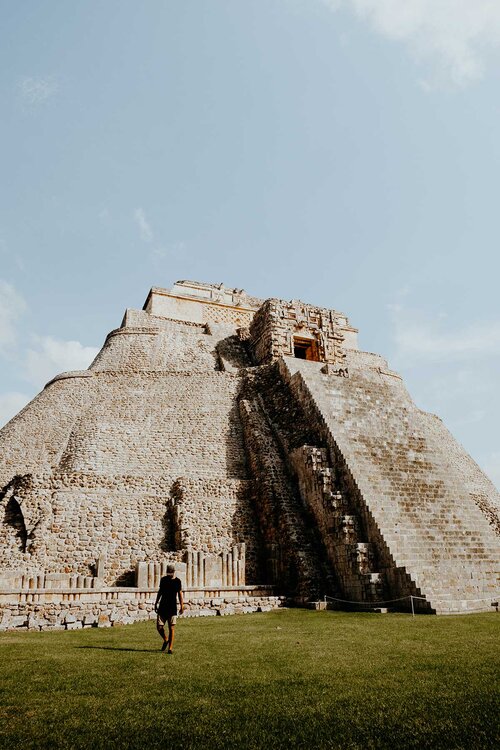
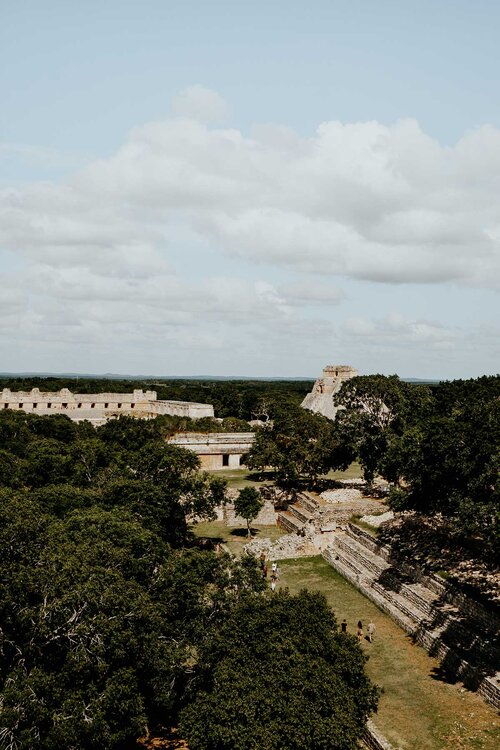
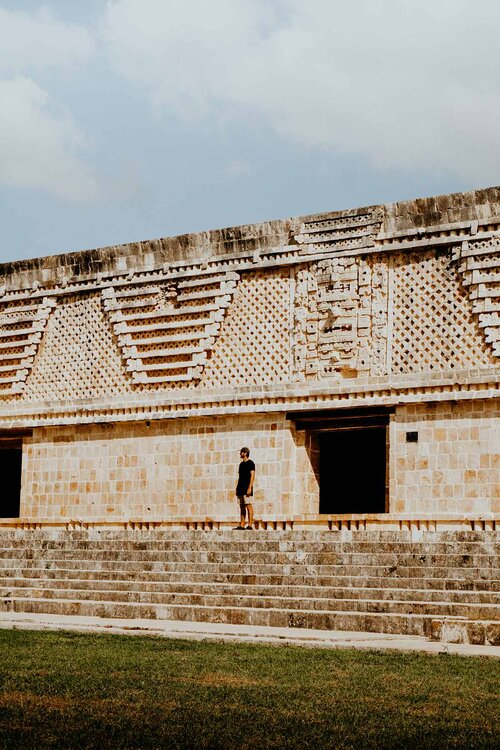
DAY 13 – 15 | BACALAR, MEXICO’S UNIQUE LAGOON
After experiencing the charming colonial cities of Valladolid and Merida, it is time to venture to Bacalar, a sleepy town that is perched on the edge of a pristine lagoon in the very south of Quintana Roo.
The picturesque Bacalar Lagoon is one of Mexico’s best-kept secrets, and clearly the heart of all action for backpackers that travel to Bacalar. In this magical waterfront town, it is all about the lagoon and the activities that take place on it.
Whether you visit Bacalar to take part in the amusing activities that take place on the lagoon, or simply to relax and admire its charm, I can assure you it will be a great time either way.
I would recommend spending at least two days in Bacalar. By doing so you have all the time to unwind and feel the magic the lagoon has to offer. For me, Bacalar was easily one of my favourite places on this Yucatán itinerary.
BACALAR | MUST-SEE ATTRACTIONS
Sailing on Laguna de Bacalar | If you’re keen on exploring the beautiful Bacalar Lagoon, I would highly recommend joining a sailing tour. And for that matter, Bacalar Sailing is hands down your best option. During a 3-hour tour, there is plenty of time for swimming and snorkelling, you learn a bunch of interesting facts about the lagoon – plus you’ll get guided to some of the most fascinating corners of the lagoon by a passionate captain.
Bacalar Rapids | Only 5 minutes away from Bacalar, it is possible to try a unique and adventurous activity. The Bacalar Rapids is well-known for its natural current, allowing guests to exercise drift snorkelling. The Rapids is a 300-metre long maze-like stream that is characterized by crystal clear water and exquisite stromatolites. Once you’re done being active, grab a hammock, sit back, and enjoy the stunning scenery around you.
Keen to read about all the things to see and do in Bacalar – check out my detailed guide here.
BACALAR | ESSENTIALS
Where | Bacalar, Quintana Roo
Where to stay in Bacalar | I stayed at Yaxche Centro Hostal and would additionally recommend Kulu Tubohostel Bacalar and Hotel Vlandré Bacalar.
Alternatively, use booking.com to find accommodations in Bacalar.
How to get from Mérida to Bacalar | Take a direct Ado bus from Mérida to Bacalar. Yucatán Peninsula has great public transport that is both punctual and reliable. Expect this journey to take around 4.5 hours.
How to get around Bacalar | Navigating Bacalar by foot is your best option, as the distances are quite short. If you’re interested in visiting the Bacalar Rapids or Bacalar Lagoon, I recommend grabbing a taxi.
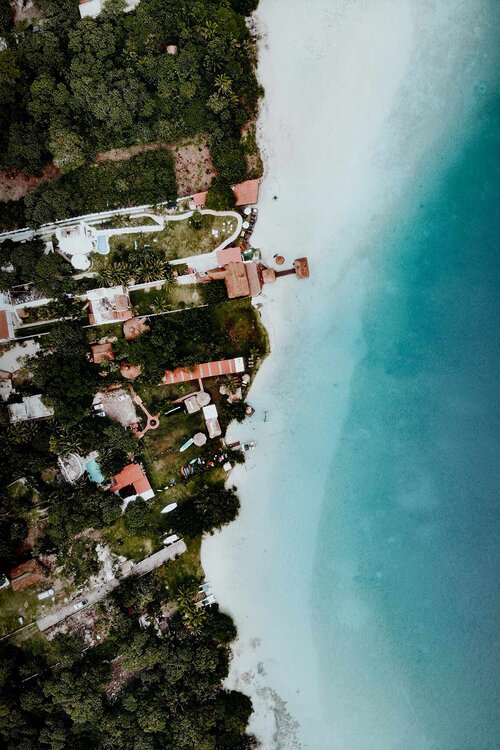
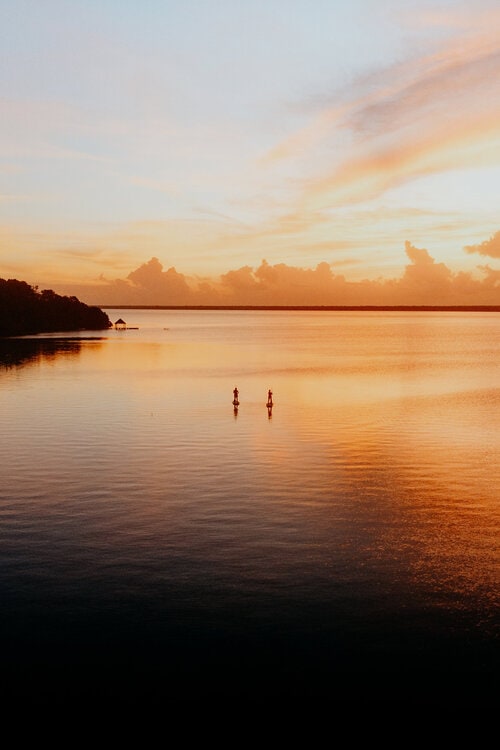
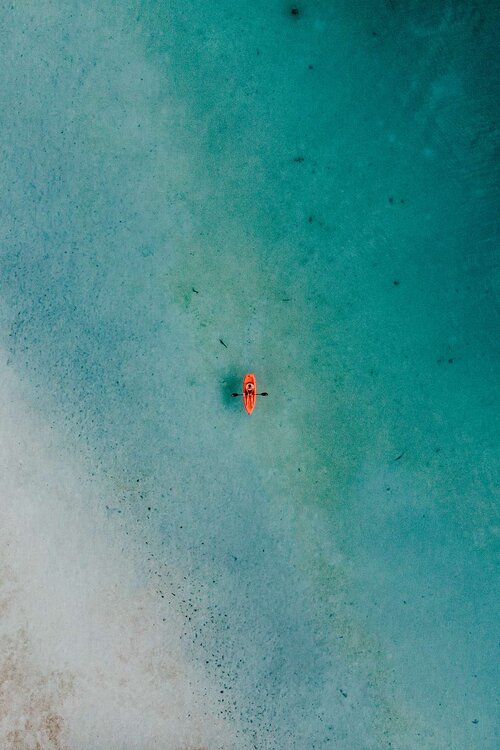
DAY 16 – 20 | TULUM, YUCATÁN’S TRENDY BEACH TOWN
Think of Yucatán and you’ll unquestionably think of Tulum, Mexico’s most popular seaside town, and arguably one the most trendy places to sit down, relax and work on your tan in Mexico.
Defined by the most picturesque stretches of beach, a charming Mayan ruin, and a laidback tropical vibe, Tulum made the perfect destination to end my three weeks in Mexico.
The spirited town has a lot to see and do – it is home to some of the best cenotes in Yucatán, holds a great variety of contemporary cafés & restaurants – plus there’s a booming party scene going on here.
Although Tulum often felt a bit too commercial for my liking, it is absolutely worthy of your visit.
I recommend spending three days here, allowing you to fully relax and explore Tulum and its enchanting surrounds.
TULUM | MUST-SEE ATTRACTIONS
Tulum Ruins | Nestled atop a steep rocky cliff, overlooking the turquoise Caribbean sea are the incredibly scenic ruins of Tulum. The intriguing ruins are one of the best-preserved coastal Mayan ruins in Mexico, and easily the number-one tourist attraction in Tulum. For that reason and Tulum’s sizzling heat, I strongly recommend visiting the ruins first thing in the morning.
Ven a La Luz Tulum | Tulum is well-known as a breeding ground for progressive contemporary artists and their inspiring art installations. One of them is the ornate Ven a La Luz, a towering wooden sculpture that was originally designed to raise awareness for Tulum’s sensitive ecosystem. Located at the entrance of Raw Love and AHAU Tulum, and the perfect backdrop for your next Instagram post.
Gran Cenote | It is safe to say that the Gran Cenote is among the most attractive cenotes in Tulum. Located at only a 10-minute bike ride from the Tulum city centre, Gran Cenote is a large open-air cenote that is characterized by its crystal clear groundwater, and a mysterious cave-like ambience. Be warned though, it is insanely busy during the day, therefore I recommend visiting early in the morning or late afternoon.
Curious about all the things to see and do in Tulum – check out my detailed traveller’s guide here.
TULUM | ESSENTIALS
Where | Tulum, Quintana Roo
Where to stay in Tulum | Tulum has some of Yucatán’s finest accommodations and I would highly recommend Aruma Hotel & Boutique, Elements Tulum Boutique Hotel, and Habitas Tulum.
Alternatively, use booking.com to find accommodations in Tulum.
How to get from Bacalar to Tulum | Take a direct bus from Bacalar to Tulum, this is by far the easiest option. The journey takes around 2 hours.
How to get around Tulum | The city centre of Tulum is easily navigated by foot, but it’s way more fun to explore Tulum by bicycle. Alternatively, grab a taxi to bring you up and down to the Tulum Beach area.
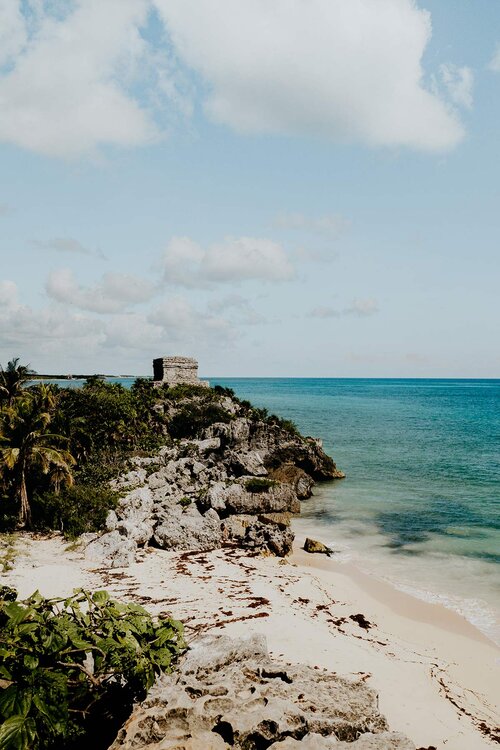
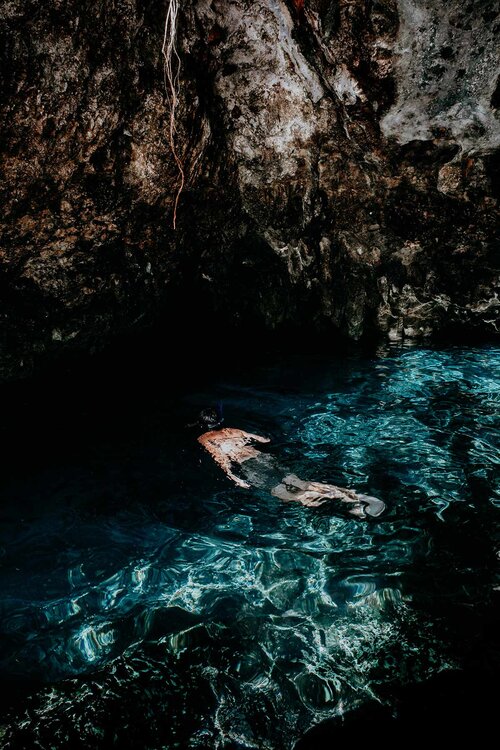
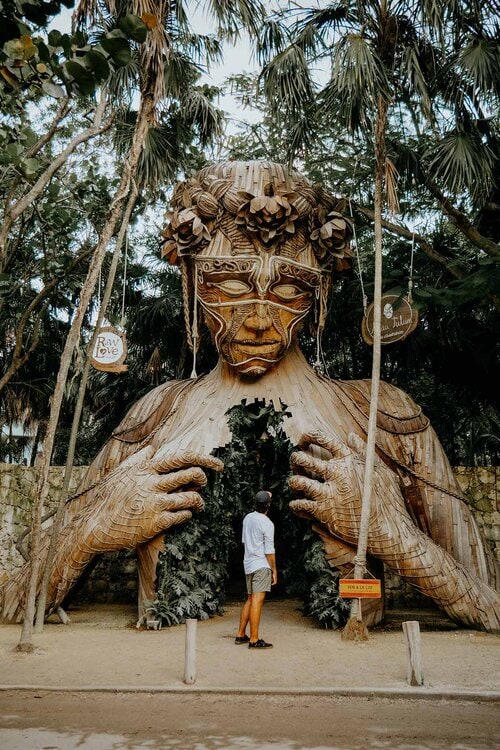
DAY 21 | PLAYA DEL CARMEN, TIME TO LEAVE MEXICO
After 3 weeks, exploring just about every corner of Yucatán, it is time to head for Playa Del Carmen, the last stop on this itinerary, before heading to the airport.
Playa Del Carmen’s excellent location, make it a lot more convenient to travel to Cancún airport than let’s say Tulum, especially if you have an early morning flight to catch.
To prevent unnecessary difficulties regarding your return journey, make sure you arrive in Playa Del Carmen one day before your flight.
Since you have one day left to spend in Playa Del Carmen, make sure you have a relaxing day at the beach, soaking up the last rays of the Caribbean sun, with a cold Corona in hand.
The next day it is, unfortunately, time to head to the airport and wave goodbye to Mexico.
How to get from Playa Del Carmen to Cancún airport | Jump aboard a direct bus from Playa Del Carmen to Cancún airport, departing every 30 minutes. The journey takes around one hour.
For up to date timetables, visit the ADO website.
PLAYA DEL CARMEN | ESSENTIALS
Where | Playa del Carmen, Quintana Roo
Where to stay in Playa del Carmen | The last night before a flight, I always try to pick the most comfortable, budget-friendly accommodation possible. For Playa del Carmen, I would highly recommend Hotel Colibri Beach.
Alternatively, use booking.com to find accommodations in Playa del Carmen.
How to get from Tulum to Playa del Carmen | The direct bus from Tulum to Playa del Carmen departs every hour. The journey takes an hour.
How to get around Playa del Carmen | Playa del Carmen is best navigated on foot.
MEXICO ITINERARY | TRAVEL ESSENTIALS AND TIPS
WEATHER IN MEXICO | BEST TIME TO VISIT YUCATÁN, MEXICO
Like most countries in the Caribbean, Mexico has great weather year-round, resulting in an average temperature of around 25°C.
Although the temperature is pleasant nearly every day, there is a season that is considered the high season. For that reason, the best time to visit Yucatán is between November and April, with November providing the best weather to explore Mexico’s must-see attractions.
Keep in mind to avoid visiting during March and April – when Spring Break occurs, and Yucatán is packed with US college students that come solely to indulge on alcohol and parties.
A Mexican holiday you do want to be aware of is Día De Los Muertos (Day of the Dead), which takes place from October 31 till November 2.
I’ve followed this Mexico itinerary from late October till November and had the fortune to experience Día De Los Muertos, had great weather throughout my entire trip, and noticed that the prices were slightly lower than in the high season.
That said, do be aware that good weather is not guaranteed during this period.
TRANSPORT | HOW TO GET AROUND YUCATÁN, MEXICO
Yucatán Peninsula is easily the most popular destination in Mexico, and that is partly due to the fact that it makes an excellent destination for a road trip.
If you’re keen to uncover all the best destinations in the Yucatán area, renting a car gives you all the flexibility to do so, while it is also far more easier to plan day trips.
For car rental in Yucatán, Mexico, I would recommend Rentalcars.com. They offer excellent service, additional insurance, and a broad selection of cars, all at an affordable price.
MONEY ESSENTIALS | CURRENCY IN MEXICO
Mexico’s official currency is the Mexican peso, a currency that is indicated by MXN and MX$. The notes that are currently in circulation include 20, 50, 100, 200, 500 and 1,000 pesos.
Make sure you have a fairly amount of notes in lower denominations, especially if you’re keen to buy souvenirs at local traders, or plan to use local busses, colectivos, and taxis.
Exchanging currency in Mexico | I would highly discourage buying Mexican pesos either ahead of time or at the airport. I can tell from personal experience that I perpetually end up getting a bad exchange rate, both in the country of departure and at the airport.
The exchange rate at the time of writing | $1 equals 22.64 MXN, and €1 equals 25.31 MXN.
For up to date exchange rates, visit the XE website.
ATM’s in Mexico | ATM services are found widespread across Mexico and are largely reliable. As per usual, I’d highly recommend withdrawing the local currency to avoid unnecessary costs.
STAY SAFE IN MEXICO | TRAVEL INSURANCE
While Mexico is perfectly safe for travellers, I always strive to sort out my travel insurance before arriving in a foreign country, and I highly advise anyone else to do the same.
Where we prefer that everything goes smoothly during our travels, something unfortunate can happen at any moment, whether it’s an injury or an accident on the road. When that happens, it is better to be safe than sorry.
Heymondo | Whether you’re going on a 3-week backpacking trip, or planning a long stay somewhere abroad, Heymondo has excellent insurance options either way – plus full covid-19 coverage and a handy app with 24-hour medical assistance. Readers of WTSW receive 5% off any insurance policy, more information here.
World Nomads | If you’re an adventure seeker, backpacker, or planning your once-in-a-lifetime world trip, make sure you check out World Nomads, they designed the perfect travel insurance to help you travel safer and smarter. Do note that they’re not covering covid-19 related claims.
KEEP ON READING WITH THESE IN-DEPTH MEXICO GUIDES
After spending nearly a month in Mexico, I created plenty of in-depth guides that might interest you too.
11 Wonderful things to do in Tulum
11 Awesome things to do in Valladolid
7 Incredible things to do in Bacalar
11 Incredible things to do in Mérida
A traveller’s guide to Chichen Itza
A complete guide to Uxmal (Coming soon)
PLAN YOUR MEXICO ITINERARY WITH THESE ESSENTIAL GUIDES
The ultimate 3-week Sri Lanka itinerary | The best of Sri Lanka
The ultimate 3-week Sri Lanka itinerary | The best of Sri Lanka
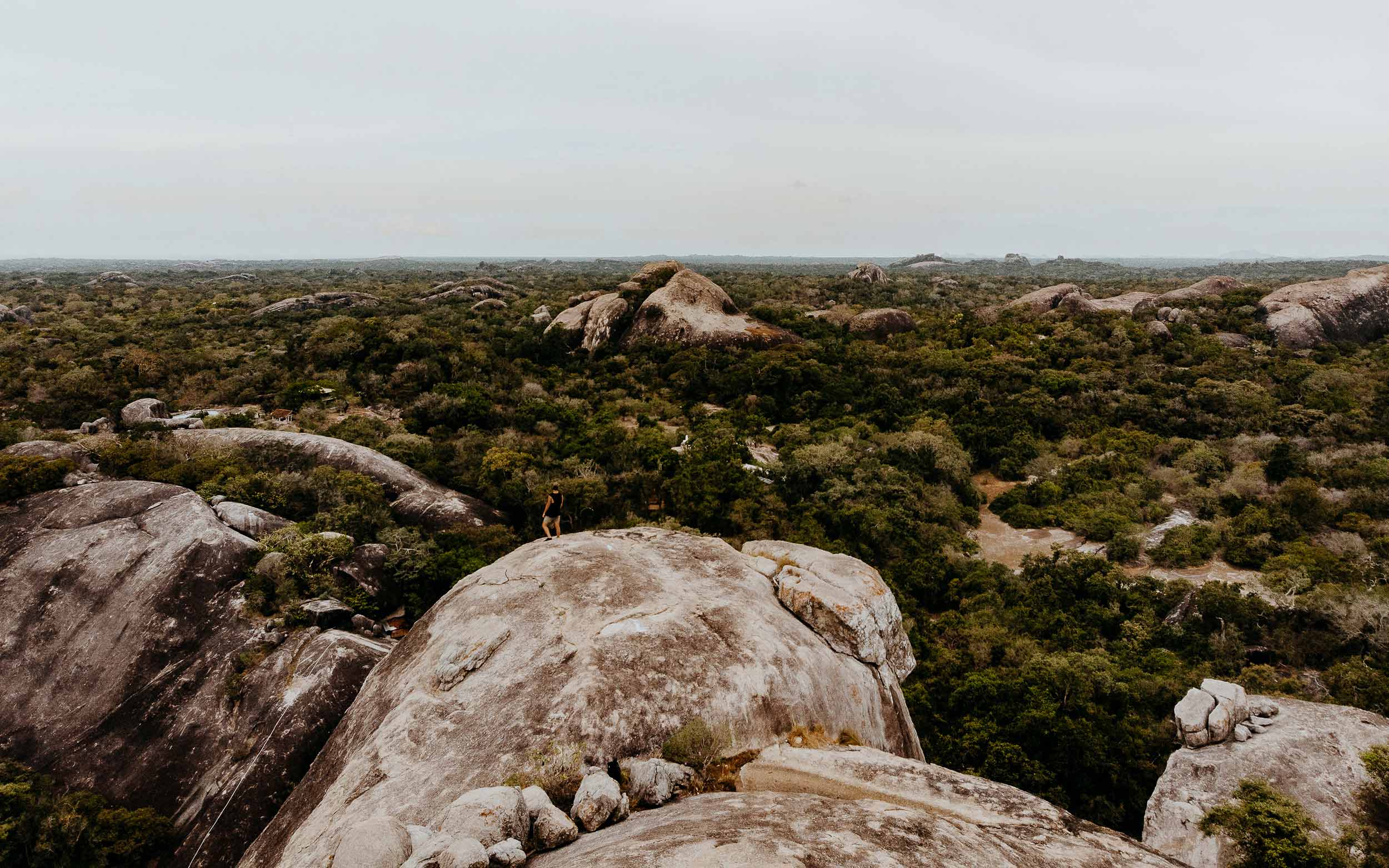
Uncover the absolute best of Sri Lanka with this detailed 3-week itinerary. This itinerary covers all the best things to see and do – including the best beaches & surf breaks, must-see attractions, and impressive ancient World Heritage Sites.
You’ll be hard-pressed to find an island that amazes travellers as much as Sri Lanka.
Sri Lanka’s natural beauty is unrivalled – from the beloved gold-sanded beaches on the southern coast to mysterious mountain towns in the idyllic hill country to the dense, wildlife-rich jungles of Yala National Park.
There is simply a myriad of reasons to travel to Sri Lanka, and the world’s most scenic train ride is absolutely one of them. Not to mention that Sri Lanka occupies some of the most vibrant cultural heritage sites, including a colonial seaside fortress, lush tea plantations, and multiple ancient cities which include Kandy, Polonnaruwa and Sigiriya.
You could easily say that Sri Lanka’s unique experiences and breathtaking landscapes go hand in hand, and it’s my intention to help you plan, and make the most out of your journey. I’ve put together the best possible itinerary to spend 3 weeks in Sri Lanka.
My 3-week Sri Lanka itinerary is a detailed introduction and covers all the best things to see and do – plus additional guides that help you throughout your trip. Now the only thing left for you to do, is soaking up beautiful Sri Lanka and its magical experiences.
3-WEEK SRI LANKA ITINERARY | WHAT TO DO IN SRI LANKA
Day 1 | Colombo, Sri Lanka’s somewhat chaotic capital
Sri Lanka’s vibrant capital makes an excellent first destination in your Sri Lanka itinerary, especially if you look at the fact that it is located just 45 minutes from the Bandaranaike International Airport.
With nearly 620,000 inhabitants, Colombo is considered Sri Lanka’s biggest city. Unfortunately, this comes with the side note that the city is rather intoxicating, and often too overwhelming to fully enjoy.
Although Colombo isn’t the most captivating city in terms of must-see attractions, I think you shouldn’t just skip over it. I would recommend spending at least one day here to experience the hustle and bustle of Sri Lankan everyday life.
COLOMBO | MUST-SEE ATTRACTIONS
The Red Mosque (Jami Ul-Alfar Mosque) | Located in the narrow streets of Pettah, Jami Ul-Alfar Mosque is one of the few must-see attractions in Colombo. The mesmerising mosque is charmed by a distinct colour pattern, towering minarets, and ornate domes that can be seen from quite a distance. It’s utterly breathtaking to see the towering mosque appear while strolling through the lively streets of Pettah.
Barefoot | Barefoot is an iconic shop, gallery, bookshop, and courtyard café in the heart of Colombo’s spirited fort area. The vibrant café is tucked away in a garden of calm and serves a wide variety of delicious dishes, while the shop sells traditional artisan crafts like fabrics, linen, clothes and gifts. Barefoot also houses a unique bookstore that offers a great selection of books on art, architecture, photography and spirituality.
The streets of Pettah | Pettah is considered one of the oldest districts in Colombo and a stroll through its narrow streets is quite the experience. The Pettah market is an excellent area to get a feel for the country and its people. While you’re there, make sure to grab a bite at one of the many street food stalls. Bear in mind that these streets are very chaotic and overwhelming, therefore it is best to give in, and go with the flow.
COLOMBO | THE ESSENTIALS
Where | Colombo
Where to stay in Colombo | I recommend Lavonca Boutique Hotel, a small, comfortable hotel in the heart of Colombo. Alternatively, use booking.com to find accommodations in Colombo.
How to get around Colombo | Colombo is quite an extensive city and somewhat challenging to navigate by foot. The easiest way to get around is by making use of the famous tuk tuks, which are found at about every corner. To avoid unnecessary costs, use the PickMe app, or arrange a price with your tuk tuk driver in advance.
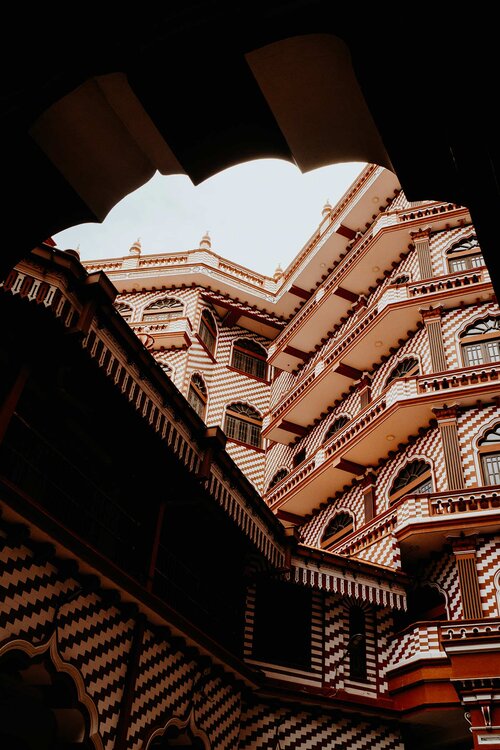
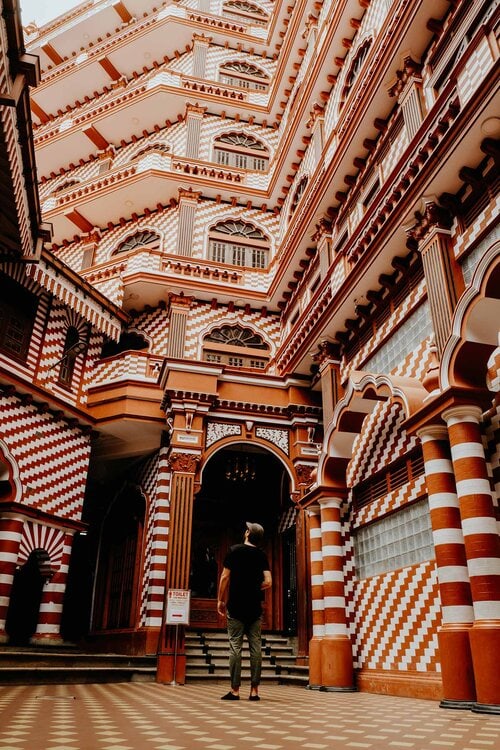
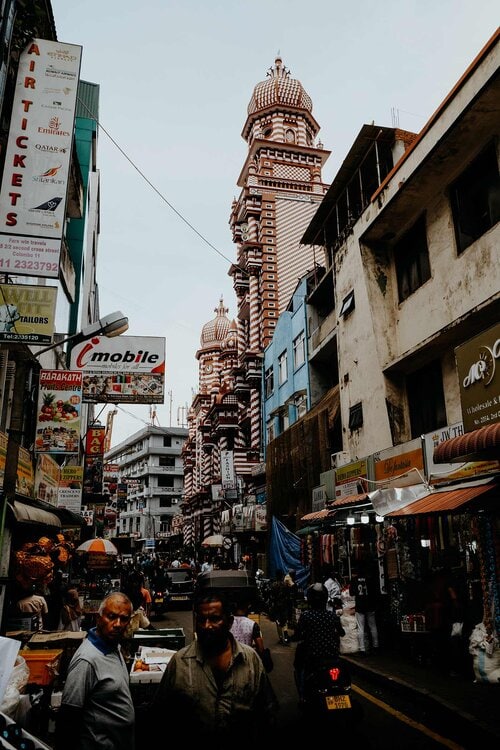
DAY 2 – 3 | GALLE FORT, A COLONIAL SEASIDE FORTRESS
After experiencing the hustle and bustle in Colombo, its time to embark on a scenic train journey in the direction of Sri Lanka’s spirited south coast.
During this 3-hour journey from Colombo Fort to Galle, you’ll get spoiled by views of vivid sceneries, as well as authentic local villages and the island’s golden-sanded coastline.
Once you arrive in Galle, you’ll quickly come to realize why it is such a beloved destination. The seaside town was once of significant importance and is still largely visited for its historical Galle Fort, a UNESCO World Heritage site that continues to amaze travellers.
The Dutch Colonial fort in Galle has a rich and captivating character. With lively, narrow streets, decaying colonial buildings, trendy contemporary cafés, and an appealing, tropical ambience, Galle Fort is, in my opinion, a must-see in any Sri Lanka itinerary.
GALLE FORT | MUST-SEE ATTRACTIONS
Galle Fort Lighthouse | The Galle Fort Lighthouse is framed by tropical palm trees and is one of the many picture-perfect scenes in Sri Lanka. For that reason alone, it’s one of the things that shouldn’t be missed within the ramparts of the historical Galle Fort.
The Galle Markets | Just outside Galle Fort, you’ll notice several authentic markets that sell a wide variety of fruit, fish and spices. By visiting these local markets you have an excellent chance to taste delicious tropical fruits, stock up on high-quality spices – plus you become familiar with Sri Lankan culture.
Galle Fort interior | Taking a stroll through the narrow, colonial streets of the fort was by far one of the best things I did during my time in the Galle Fort. By doing so, you come along a collection of decaying colonial buildings, which makes it seem as if you’re living during the VOC era.
GALLE FORT | THE ESSENTIALS
Where | Galle Fort, Galle
Where to stay in Galle Fort | Galle has no shortage of good accommodations, both in and outside the fort. I would highly recommend Yoho White House Apartment and The Bungalow – Galle Fort. Alternatively, use booking.com to find accommodations in Galle.
How to get from Colombo to Galle Fort | The easiest and most scenic travel option is from Colombo Fort to Galle by train. The direct train operates frequently (about 10 times a day) and takes around 2.5 – 3 hours.
How to get around Galle Fort | Galle Fort is easily explored by foot. If your accommodation is slightly remote, make usage of the accessible tuk-tuks.
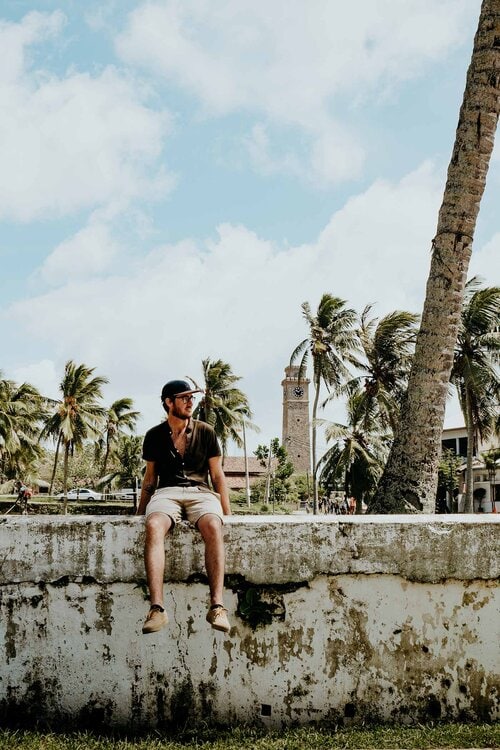
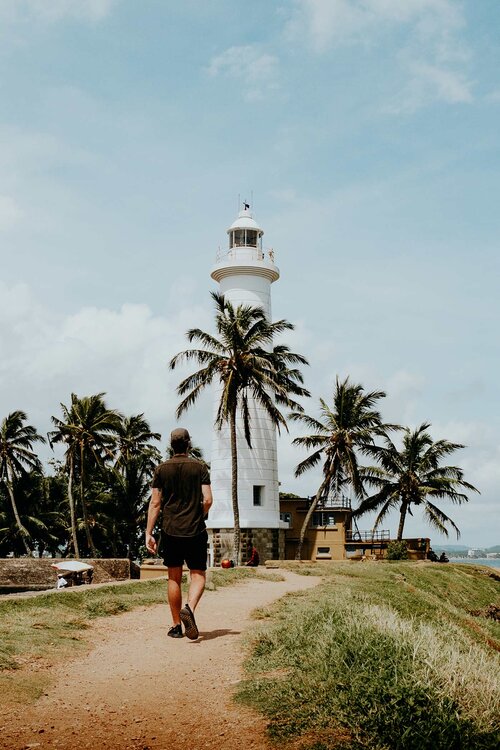
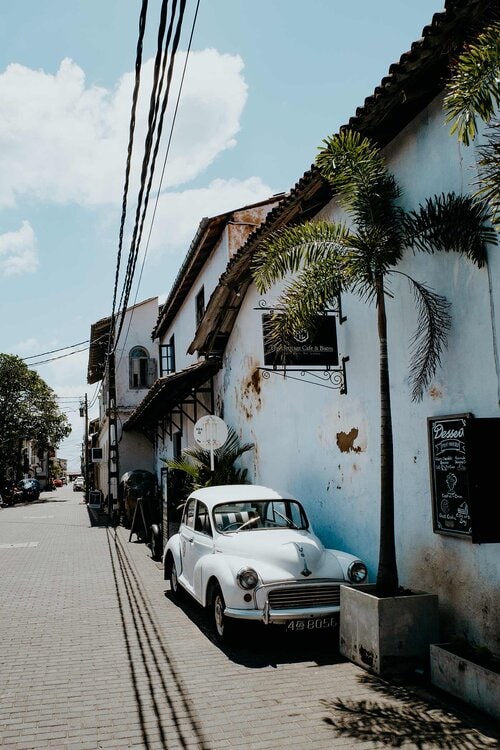
DAY 4 – 5 | UNAWATUNA, SRI LANKA’S BACKPACKER BEACH TOWN
Situated at only a 10-minute drive from Galle lies Unawatuna, one of Sri Lanka’s most popular coastal towns and the first proper beach destination in this itinerary.
Unawatuna has rapidly become a fixture for travellers that visit Sri Lanka, and trust me, that’s for a good reason. The trendy beach town is home to a laidback backpacker vibe and has no shortage of palm-fringed beaches, contemporary cafés, and irresistible beachfront restaurants.
Accordingly, I would recommend spending a few nights here, it has some of the island’s most beautiful beaches after all.
UNAWATUNA | MUST-SEE ATTRACTIONS
Dalawella Beach | Dalawella Beach is an extremely picturesque stretch of beach and without doubt one of my favourite beaches in Sri Lanka. The charm that defines Dalawella Beach is realized by a scenic rock formation, exciting beach swings and plenty of low bending palm trees. Make sure you visit early morning or during sunset.
Skinny Tom’s Deli | Only head over to Skinny Tom’s Deli, if you’re keen on tasting the best brunch in town. This European-style café has a great reputation on the southern coast and serves life-changing bacon, dhal & egg hoppers, fresh eggs benedict toast, and delicious artisanal cakes and desserts.
Jungle Beach | Although its located slightly off the beaten path, Jungle beach is an exceptional place for an afternoon of relaxing, swimming and tanning. Make sure you take a look at the Japanese Peace Pagoda, which is situated in the lush jungle right above the secluded beach.
UNAWATUNA | THE ESSENTIALS
Where | Unawatuna
Where to stay in Unawatuna | Unawatuna has great accommodations in every price range and I would highly recommend Bedspace Beach and Cantaloupe Levels. Alternatively, use booking.com to find accommodations in Unawatuna.
How to get from Galle Fort to Unawatuna | Take a 10-minute drive by local bus from Galle Fort to Unawatuna. Alternatively, take a tuk-tuk.
How to get around Unawatuna | Unawatuna is easily navigated by foot. If you’re keen to explore the surrounding towns, make use of the affordable tuk-tuks, or rent a scooter.
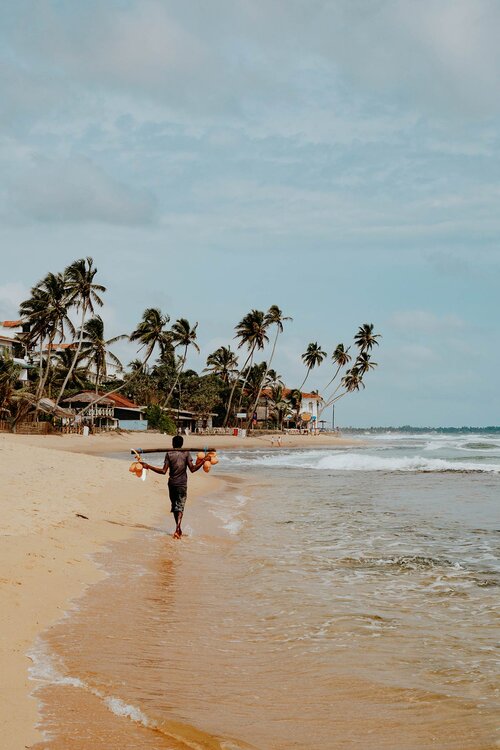
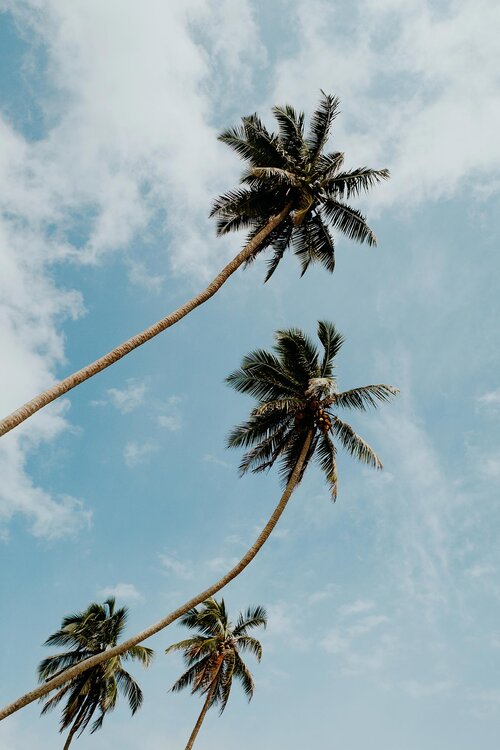
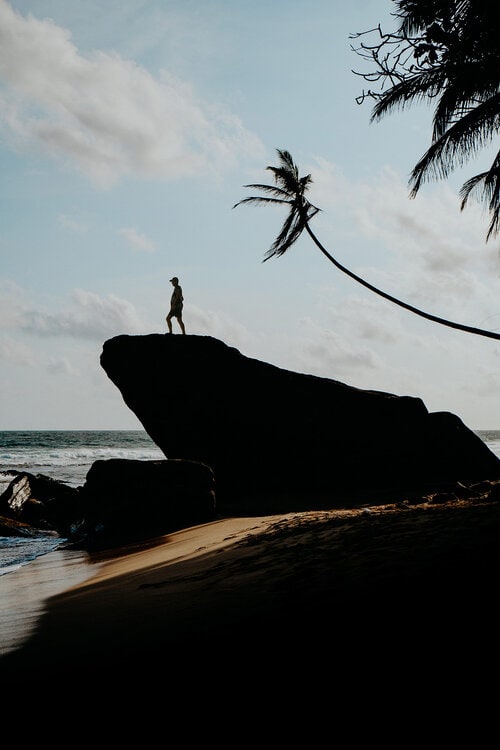
DAY 6 – 7 | MIRISSA, A TRANQUIL BEACHSIDE PARADISE
After unwinding at one of the tropical beaches in Unawatuna, it is time to continue your journey along the island’s beloved south coast.
Mirissa is an energetic beach town that has not gone unnoticed to backpackers and travellers alike. It has, in fact, become quite an unmissable destination in Sri Lanka itineraries.
The beach town is all about riding waves, paradisiac stretches of beach, trendy cafés and the tranquil ambience that characterizes it. But what really highlights Mirissa is that it’s deemed to be one of Sri Lanka’s best places to get up close and personal with Blue Whales.
MIRISSA | MUST-SEE ATTRACTIONS
Coconut Tree Hill | Coconut Tree Hill is without a doubt among the most iconic things to see in Sri Lanka. The tangerine-coloured cliff is extremely popular and well-known for its sea of swaying palms and views over the shimmering Indian Ocean. I’d recommend stopping by earlier in the day or during a glorious sunset.
Parrot Rock | Only just of Mirissa’s main beach is Parrot Rock, a small secluded rock-island that provides the most stunning views over the town’s golden-sanded shoreline. Make sure you climb to the summit, it’s one of Mirissa’s best spots to sit and watch the world go by.
Surfing in Weligama | With decent waves rolling in year-round, Mirissa is one of the leading surf destinations on Sri Lanka’s south coast. The vibrant town is home to excellent surf schools that provide lessons and board rental. The waves in Mirissa are perfect for beginners, intermediate and advanced surfers.
MIRISSA | THE ESSENTIALS
Where | Mirissa
Where to stay in Mirissa | Mirissa has many excellent accommodations and I would highly recommend Satori Beach Hostel, Triple O Six and Mirissa Heights. Alternatively, use booking.com to find accommodations in Mirissa.
How to get from Unawatuna to Mirissa | Jump aboard a direct train from Unawatuna to Mirissa that operates frequently (about 5 times a day). Expect the journey to take around 0.5 – 1 hour.
How to get around Mirissa | Walking around town is your best option as the distances are quite short. For surfing in Weligama, I would recommend taking a tuk-tuk.
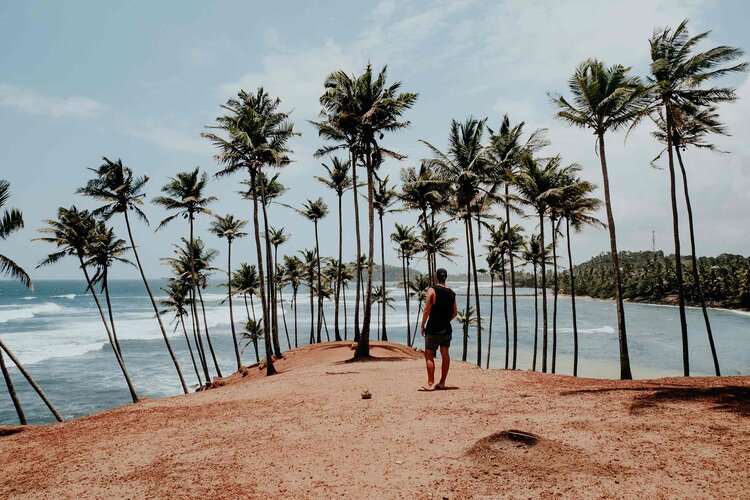
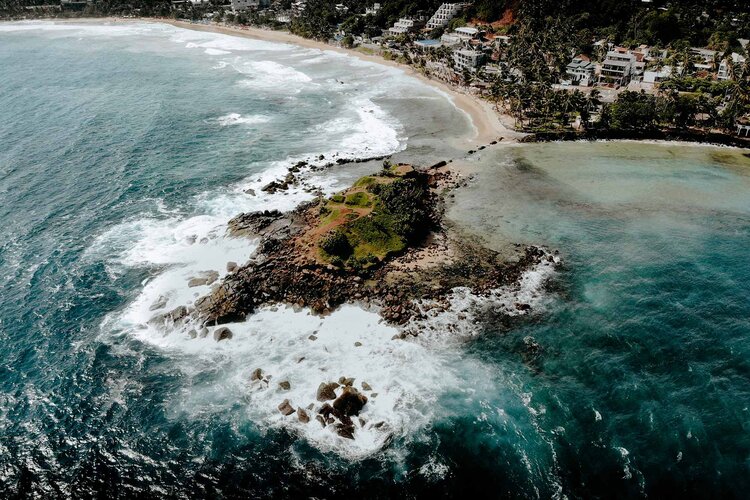
DAY 8 | YALA NATIONAL PARK, SRI LANKA’S BEST SAFARI DESTINATION
From the moment I booked my flight to Colombo, I was excited about one specific thing, travelling to the wildlife-rich jungles of the Yala National Park to experience my first ever safari.
The incredible Yala National Park, situated on the island’s south-eastern coastline, is famed as Sri Lanka’s most popular national park and is unquestionably a must-see on any Sri Lanka itinerary.
The park is home to dense jungles, sandy dunes, wide stretched grasslands and several lakes and lagoons. This distinct landscape is the perfect habitat for a great variety and density of wildlife, which results in the potential sighting of leopards, elephants, Black Sloth bears, Fishing cats, Red Slender loris and crocodiles.
In totality, the national park is home to 44 species of mammals, 215 species of birds and 46 species of reptiles, which makes an excellent reason to jump aboard a jeep and roam around the jungles of the park. Believe me, it’s one of the most fulfilling adventures in Sri Lanka.
It’s easy to book your Yala National Park safari through your accommodation in Tissamaharama. I would recommend joining a morning safari, this increases the potential of leopard sightings.
YALA NATIONAL PARK | THE ESSENTIALS
Where | Yala National Park
Where to stay in Yala National Park | Tissamaharama has great accommodations (both in and outside the park) and I would highly recommend Hotel River Front, Thaulle Resort and Cinnamon Wild Yala. Alternatively, use booking.com to find accommodations in Yala National Park or Tissamaharama.
How to get from Mirissa to Yala National Park | For this journey, the local bus is the easiest and cheapest option. Head to Matara, here change to a direct bus to Tissamaharama. The journey can be quite intense and takes around 3.5 hours.
Entrance fee | 4.000 LKR ($21.50).
Half-day jeep safari costs | 5.000 – 6.000 LKR ($24,00 – 32,25) per jeep, with a maxi of 6 people.
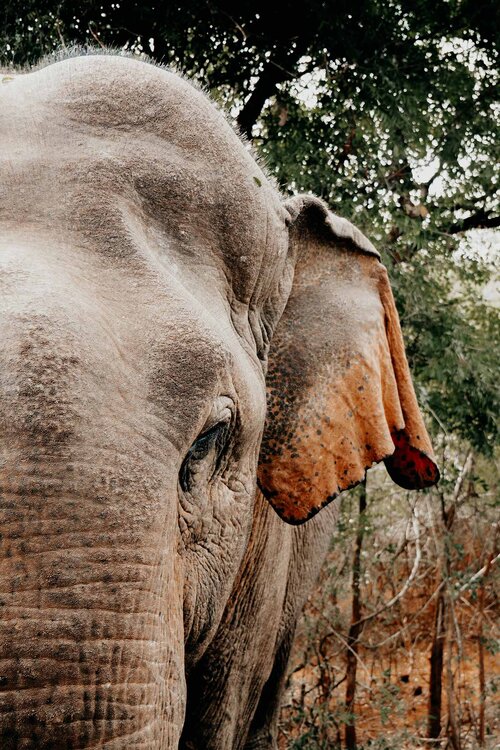
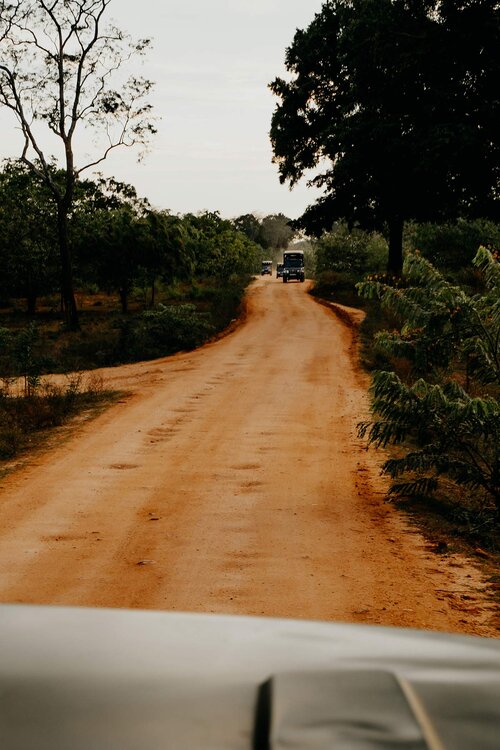
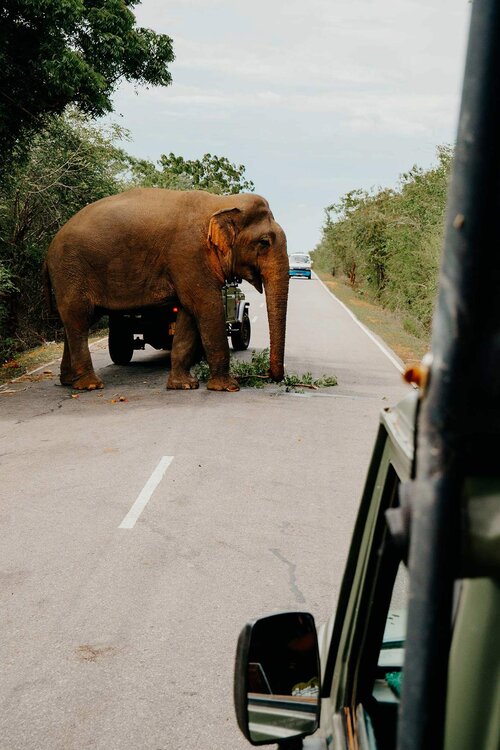
DAY 9 – 10 | ARUGAM BAY, A LAIDBACK SURFER TOWN
Travelling to Arugam Bay requires quite a long and exhausting journey, as it is pretty off the beaten path compared to other destinations on this Sri Lanka itinerary. That being said, I truly believe that the detour is worth every minute of it.
Slightly hidden on Sri Lanka’s untouched east coast, with Yala National Park as its neighbour, lies Arugam Bay: one of the island’s leading surf destinations. With great bays, excellent surf breaks, stunning natural sceneries, and trendy cafés, there’s enough to see and do in Arugam Bay, therefore, I would recommend staying at least two days.
ARUGAM BAY | MUST-SEE ATTRACTIONS
Kudumbigala Monastery | Just 45 minutes of Arugam Bay’s spirited main street is the Kudumbigala monastery, a sacred place where locals come to practise deep meditation techniques. In addition to those mysterious, spiritual vibrations, you’ll find a viewpoint that provides the most stunning panoramic views of the entire region.
Muhudu Maha Viharaya | Known as the temple of the ocean, Muhudu Maha Viharaya is a charming white Buddhist stupa, overlooking Pottuvil’s sandy dunes and shimmering ocean. Fortunately, the temple is out of range of the regular tourist area, so it gives an authentic glimpse of Sri Lanka’s daily life. As always, follow religious customs and visit in a respectful manner.
Elephant Rock | Acknowledged as one of the best surfing breaks in the area, and a great place to sit and watch the world go by, especially during the golden hour. Elephant Rock gives a marvellous view over the bay and its wave riding surfers, certainly a must-see in Arugam Bay.
ARUGAM BAY | THE ESSENTIALS
Where | Arugam Bay
Where to stay in Arugam Bay | Arugam Bay has no shortage of great accommodations. For surfing, I’d highly recommend Upali Beach Surf Resort – other excellent options are The Spice Trail and Arugam Bay Roccos. Alternatively, use booking.com to find accommodations in Arugam Bay.
How to get from Yala National Park to Arugam Bay | Local bus is the cheapest option. Do keep in mind that this is one of the most exhausting bus journeys in Sri Lanka – plus it requires changing bus up to three times. Alternatively, hire a tuk-tuk or arrange a taxi with the PickMe app. The journey can take up to 6.5 hours.
How to get around Arugam Bay | If you’re looking to explore the surrounding area, I would highly recommend renting a scooter. Alternatively, walk or make use of tuk-tuks.
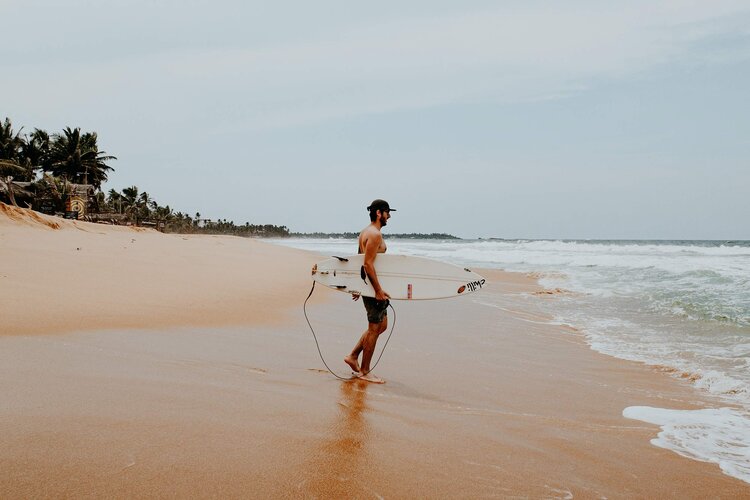
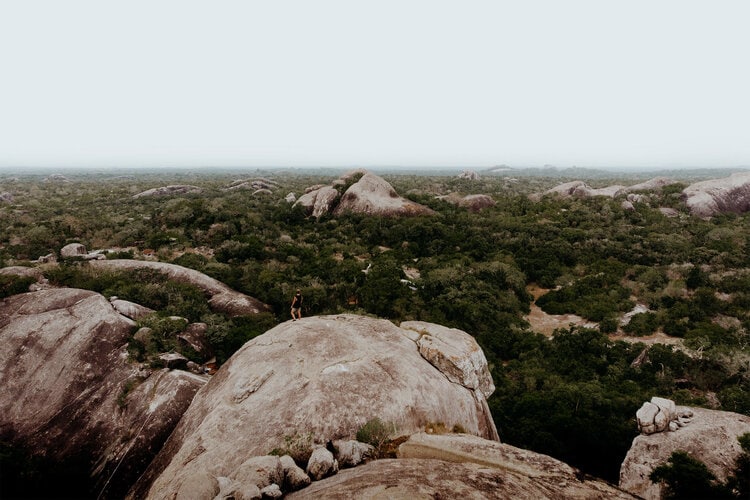
DAY 11 – 13 | ELLA, SRI LANKA’S EXTRAORDINARY HILL COUNTRY
After learning to ride the waves in Arugam Bay, it’s time to head for Sri Lanka’s mysterious mountains and one of my favourite places in the country, the sleepy town of Ella.
Around 1,041 metres above sea level and hidden in Sri Lanka’s peaceful hill country is Ella: a small town that is encircled by charming tea plantations, towering mountains and rushing waterfalls.
If you’re a nature & adventure enthusiast like me, Ella’s incredible sceneries will surely blow your mind. I enjoyed this town so much, that I’ve ended up staying slightly longer than initially planned. Therefore I’d always recommend adding some flexibility to your Sri Lanka itinerary.
ELLA | MUST-SEE ATTRACTIONS
Ella Rock | It is no surprise that Ella Rock is one of the must-see attractions in Ella as it provides breathtaking views of Little Adam’s Peak, Ella Gap and the mysterious hill country of Ella. If you’re a seasoned hiker, you certainly feel hyped for the somewhat challenging Ella Rock hike. Do bear in mind that the best time to hike up Ella Rock is around sunrise.
Nine Arch Bridge | The now-famous Nine Arch Bridge is single-handedly responsible for the largest part of travellers that come and visit Ella. Tucked away between the dense jungle and tea plantations; this stunning piece of architecture impresses both travellers and locals on a daily basis. The scene becomes even more remarkable when the famous blue train slowly navigates its way across the bridge.
Little Adam’s Peak | As the name implies, Little Adam’s Peak is named after its taller and better-known brother, Adam’s Peak. The hike to the summit of Little Adam’s Peak guarantees the most excellent overview of both Ella Rock and the infinite-looking Ella Gap. It’s therefore little wonder that it’s such a popular attraction in Ella.
ELLA | THE ESSENTIALS
Where | Ella
Where to stay in Ella | Ella has some of Sri Lanka’s finest accommodations and I would recommend Rawana Den, 98 Acres & Spa and Mountain Heavens. Alternatively, use booking.com to find accommodations in Ella.
How to get from Arugam Bay to Ella | Take a bus to Monoragala, before changing to the bus that heads for Wellawaya. Here take the bus to Ella. If you’re fortunate, you may catch a direct bus between Arugam Bay and Wellawaya. Since the journey is quite chaotic, alternatively hire a tuk-tuk or arrange a taxi with PickMe. The journey can take up to 4.5 hours.
How to get around Ella | Ella is an easy town to navigate by foot. Alternatively, jump aboard one of the many tuk-tuks.
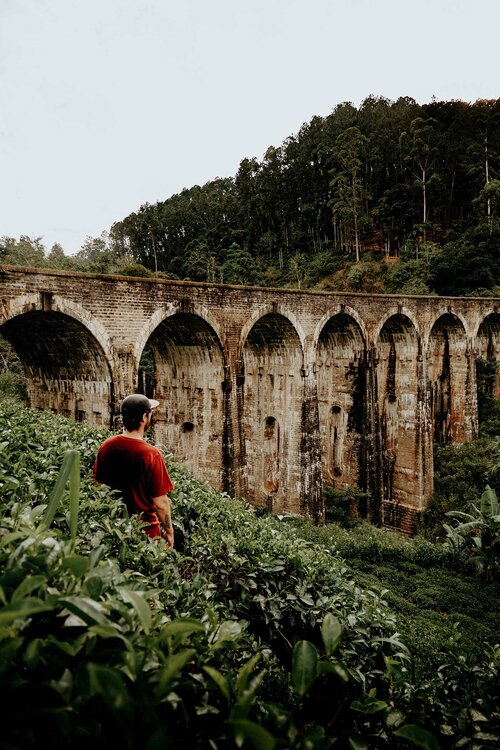
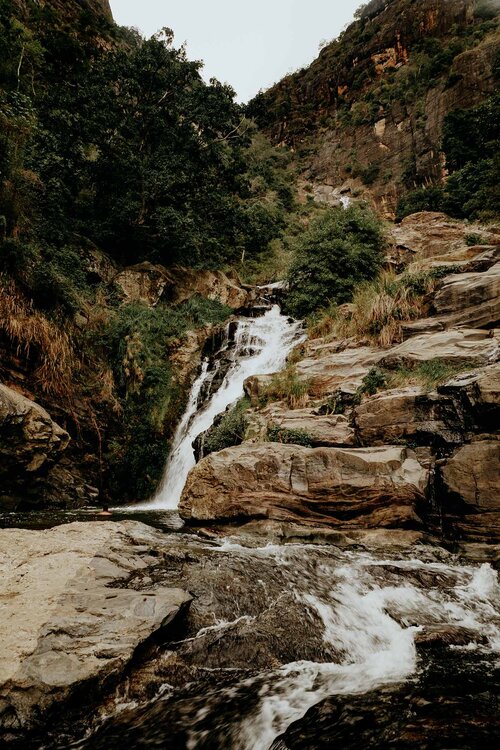
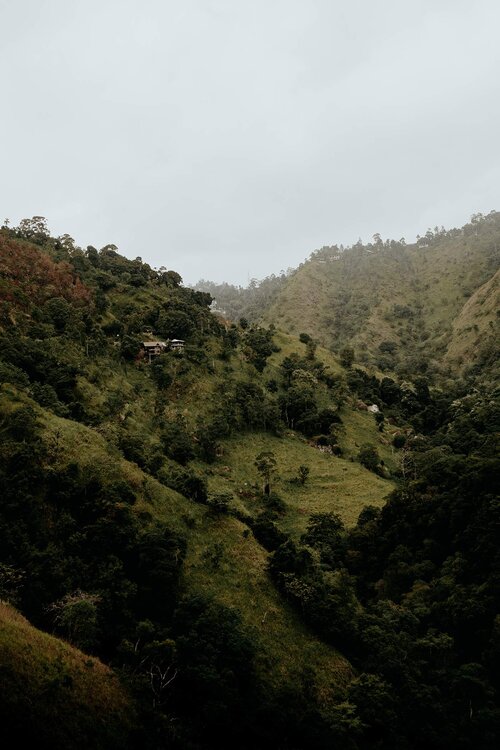
ELLA TO KANDY, THE MOST SCENIC TRAIN RIDE IN THE WORLD
Ask anyone that jumped aboard the famous Ella to Kandy train and they all answer the same – this scenic train journey is one of the absolute highlights in any Sri Lanka itinerary.
Secure yourself a window seat and witness the train meandering through mysterious woodlands, authentic local towns and leafy tea plantations. This seven-hour journey is one of the most spectacular train rides in the world, so make sure you enjoy every moment of it.
ELLA TO KANDY TRAIN JOURNEY | THE ESSENTIALS
Where | Ella Railway Station
Costs | 2nd class: 270 LKR ($1.50), 3rd class: 180 LKR ($1). If you prefer to book your ticket in advance, visit 12go.asia.
Train times from Kandy to Ella | 06:40, 09:24, 10:57 and 12:48. For up to date timetables, visit the Seat61 website.
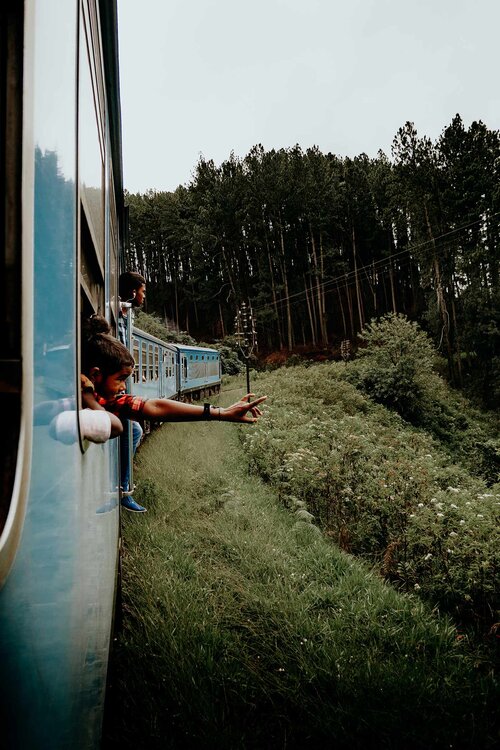
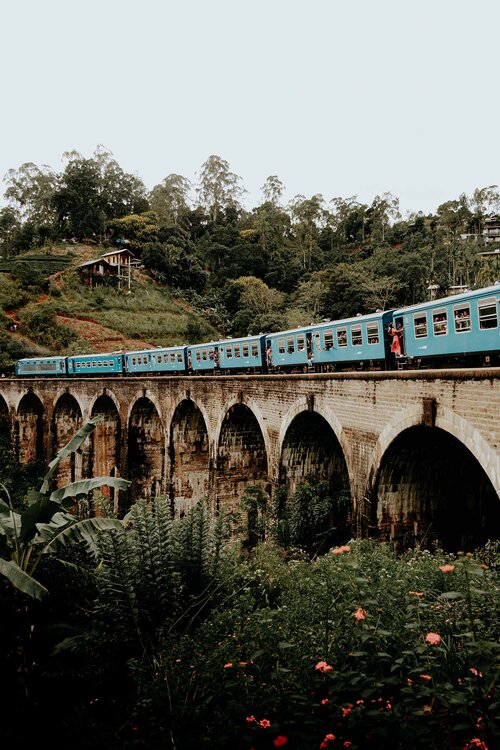
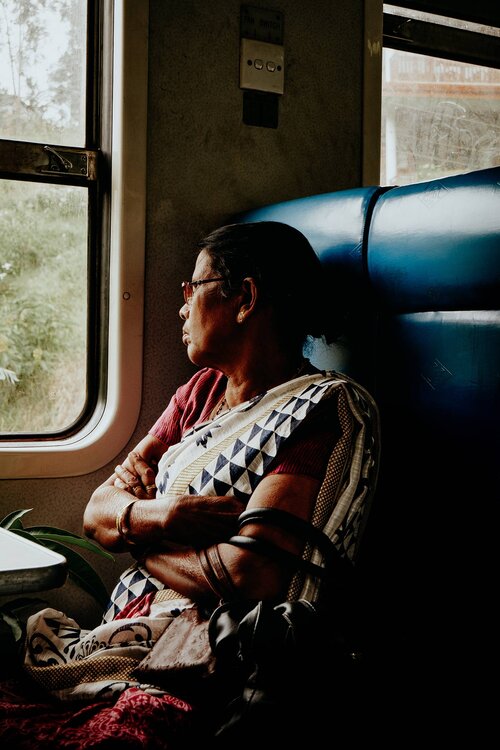
DAY 14 – 15 | KANDY, THE CITY OF KINGS
Following the breathtaking train journey, you’ll arrive in Kandy, a vibrant city that is of major significance to Sri Lanka’s rich, captivating culture and history. It is, therefore, more than rightly so named, the city of kings by its locals.
Sri Lanka’s second-largest city is famed for its most important spiritual site, the Temple of the Sacred Tooth Relic; which according to Sri Lankan legends houses a tooth of the Buddha.
Although many travellers tend to visit Kandy in a hurry, I think there are quite a few fascinating places to see and appreciate in Kandy. I would highly recommend spending at least two days exploring the lively city and surrounds.
KANDY | MUST-SEE ATTRACTIONS
Temple of the Sacred Tooth Relic | Right at the heart Kandy and next to the Kandy Lake is the Temple of the Tooth Relic, Sri Lanka’s most important Buddhist shrine. The best time to visit is during a Buddha Puja ceremony, when pilgrims from all over the world reflect, sing and bring offerings to deepen the appreciation of the Buddha and his teachings.
Royal Botanical Gardens of Peradeniya | For me, it’s always impressive to see a large urban city park in the midst of a lively city, the Royal Botanic Gardens of Peradeniya are exactly that. The verdant gardens are home to over 4,000 species of plants, including palm trees, medicinal plants, orchids and spices. A peaceful morning walk is a perfect activity to escape the sizzling heat and chaos of Kandy.
Bahirawakanda Temple | Located atop of the Bahirawa Kanda hill and to be seen from the whole of Kandy lies the majestic Bahirawakanda Temple. The towering Buddha reaches a height of 27 metres and is considered one of the largest Buddha statues in Sri Lanka. Make sure you snap some shots of the panoramic views of Kandy.
KANDY | THE ESSENTIALS
Where | Kandy
Where to stay in Kandy | I stayed at Range Hotel Kandy and Cafe Aroma Inn. Additionally, I would recommend Dumbara Peak Residence. Alternatively, use booking.com to find accommodations in Kandy.
How to get from Ella to Kandy | Jump aboard the famous Ella to Kandy train. It’s cheap and considered the most scenic train ride in the world – 2nd class: 270 LKR ($1.50), 3rd class: 180 LKR ($1). If you prefer to book your ticket in advance, visit the 12go.asia website.
How to get around Kandy | Kandy is easily explored by foot. I’d recommend grabbing a tuk-tuk for attractions that are situated just outside the town.
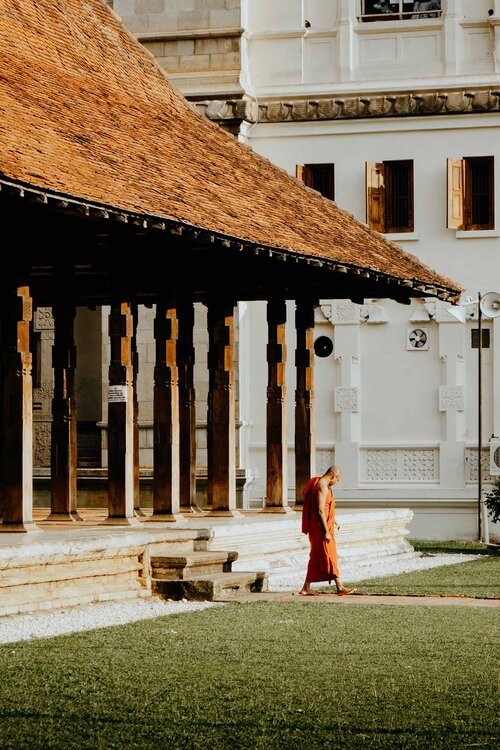
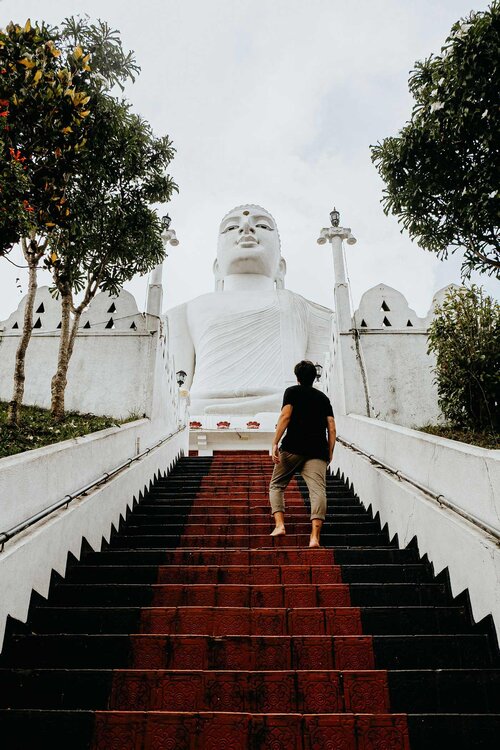
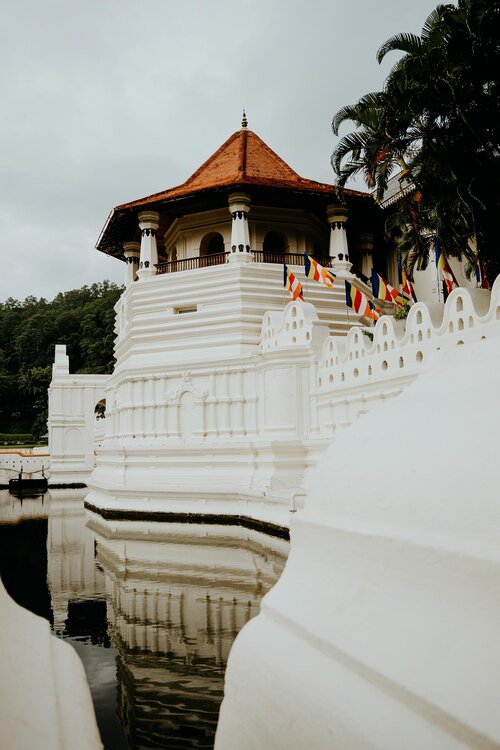
DAY 16 – 17 | SIGIRYA, SRI LANKA’S EIGHT WONDER OF THE WORLD
It’s time to head further North to the Ancient City of Sigiriya, one of my all-time favourite places in Sri Lanka, and an unmissable destination on this itinerary.
It is little surprise that Sigiriya is loved by so many, it has essentially everything a traveller yearns for. The town is surrounded by nature, has no shortage of breathtaking sceneries and houses the authentic ambience of a local village.
The real draw though is the Ancient Sigiriya Rock Fortress, one of the country’s most famous landmarks, and often stated as the eighth wonder of the world.
It is safe to say that being surrounded by Sigiriya’s idyllic nature has a therapeutic effect on both body and mind. Therefore, I’d recommend spending a few days to explore and unwind in this magnificent area.
SIGIRIYA | MUST-SEE ATTRACTIONS
Sigiriya Rock Fortress | Sigiriya’s natural beauty is unrivalled – and that is largely by means of the Sigiriya Rock Fortress. Witnessing this unique, ancient fortress, should be on every Sri Lanka bucket list, whether viewed from Pidurangala Rock or up close and personal.
Pidurangala Rock | The Sigiriya Rock Fortress might be the number one attraction in Sigiriya, it’s the incredible view from Pidurangala Rock that stole my heart. Hiking the summit of Pidurangala Rock has rapidly become a must-do activity for travellers and locals alike. To experience the mesmerizing view in full potential, make sure to visit with sunrise or sunset.
SIGIRIYA | THE ESSENTIALS
Where | Sigiriya
Where to stay in Sigiriya | I stayed at Wali Kukula Nest multiple times and I felt at home every single time. If you’re a creative like me, this is an inspiring place where you surely want to stay. Alternatively, use booking.com to find accommodations in Sigiriya.
How to get from Kandy to Sigiriya | Take a bus to Dambulla, where you change for the bus that heads to Sigiriya. Alternatively, hire a tuk-tuk from Dambulla to Sigiriya (1,000 LKR – $5.50). The journey takes around 2.5 hours.
How to get around Sigiriya | Walking around town is your best options as the distances are quite short. Do be aware that elephants often roam around the jungles. Alternatively, hire a bicycle to explore the stunning surrounds.
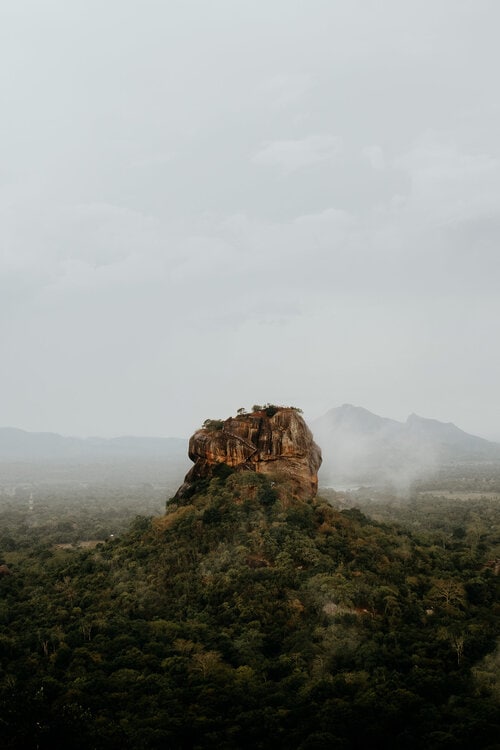
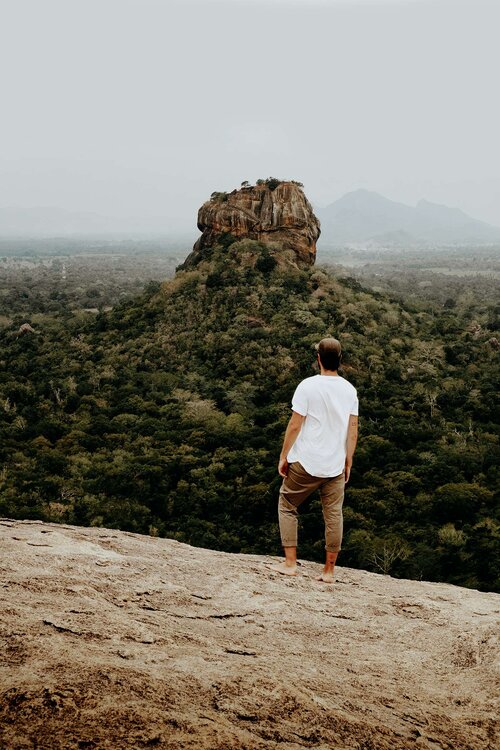
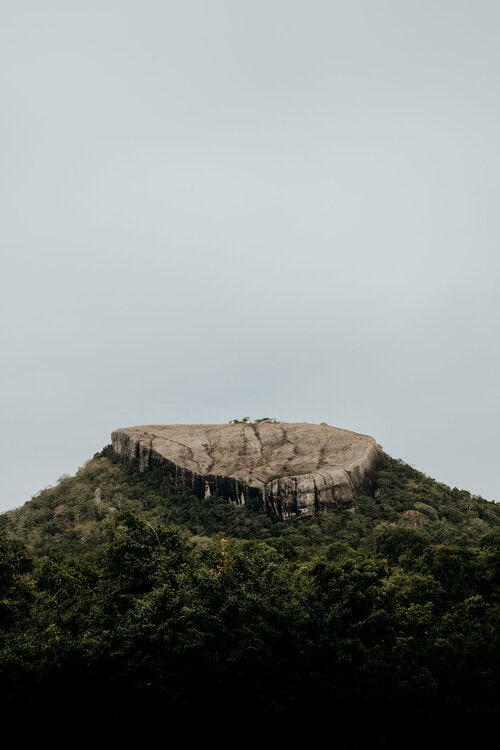
DAY TRIP | KAUDULLA NATIONAL PARK, THE GATHERING OF ELEPHANTS
Sigiriya is conveniently located and makes the perfect base for an exciting day trip: a jeep safari in Kaudulla National Park.
Poised between Sigiriya and Trincomalee, Kaudulla National Park is one of Sri Lanka’s best national parks, and home to over 200 wild elephants, including a newborn. The extensive wildlife park is often referred to as; The Gathering, world’s largest gathering of Asian elephants.
It’s easy to book your Kaudulla National Park safari through your accommodation in Sigiriya. I would recommend joining an afternoon safari, right after you spend the morning to visit Sigiriya Rock Fortress or Pidurangala Rock.
KAUDULLA NATIONAL PARK | THE ESSENTIALS
Where | Kaudulla National Park
How to get from Sigiriya to Kaudulla National Park | By safari jeep. A safari tour is always including pick-up and drop-off at your accommodation.
Entrance fee | 4,090 LKR ($22).
Half-day jeep safari costs | 6,000 – 7,000 LKR ($32.50 – 37.50) per jeep, with a max of 6 people.
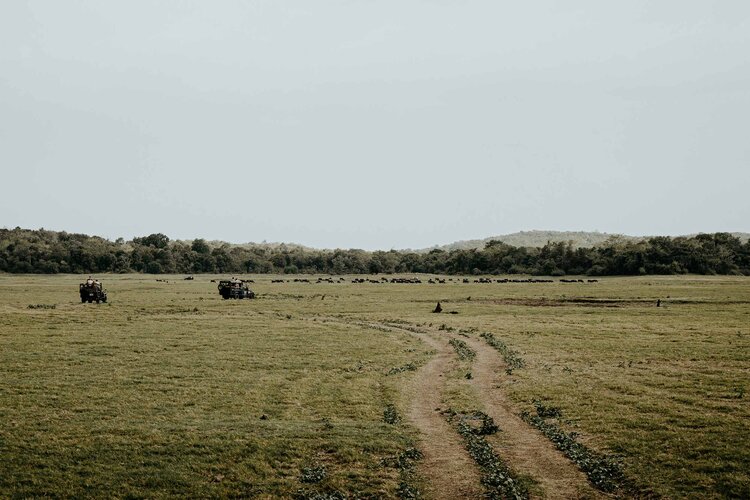
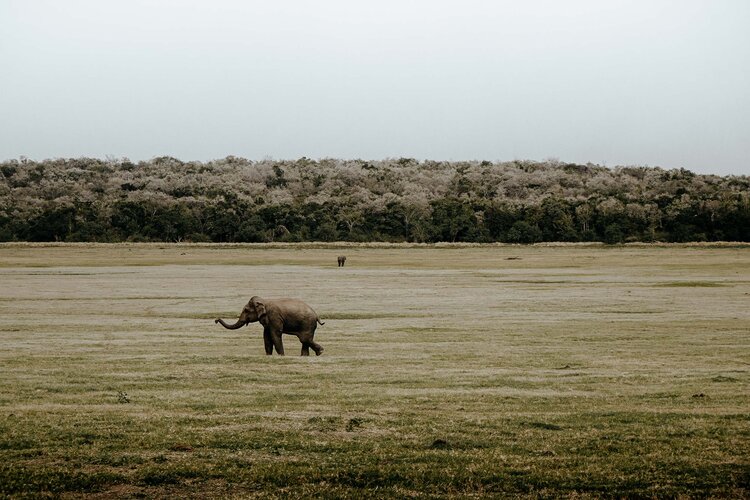
DAY 18 | POLONNARUWA, SRI LANKA’S ANCIENT CAPITAL CITY
Part of Sri Lanka’s glorious cultural triangle and only an hour away from Sigiriya is the ancient city of Polonnaruwa, an impressive UNESCO World Heritage site that was once a thriving kingdom.
Present-day, this ancient city has no shortage of grandeur, whether it’s the remainings of temples and religious buildings, impressive shrines, or elegant Buddha statues. The ancient city of Polonnaruwa features some of the most impressive ruins in Sri Lanka – which is a true pleasure to seasoned travellers.
I’ve heard many backpackers that experienced difficulties when choosing between Anuradhapura and Polonnaruwa. When I followed my intuition and chose Polonnaruwa, it felt like the right decision, and up until this day, I’m still delighted with it – even after visiting the Angkor temples in Cambodia.
POLONNARUWA | THE ESSENTIALS
Where | Polonnaruwa
Entrance fee | Adult 4,550 LKR ($25), children 2,275 LKR ($12.50).
Opening hours | 07:00 – 18:30 daily.
Where to stay in Polonnaruwa | I stayed at Singha Guest House and would additionally recommend Pharo Lake and Mahanuge Hotel Polonnaruwa. Alternatively, use booking.com to find accommodations in Polonnaruwa.
How to get from Sigiriya to Polonnaruwa | Take the local bus to Inamaluwa, before changing to a direct bus that heads for Polonnaruwa. The journey should take no longer than 1.5 hours.
How to get around Polonnaruwa | The most fun way to explore Polonnaruwa is by bicycle. Alternatively, hire a tuk-tuk that guides you around the complex.
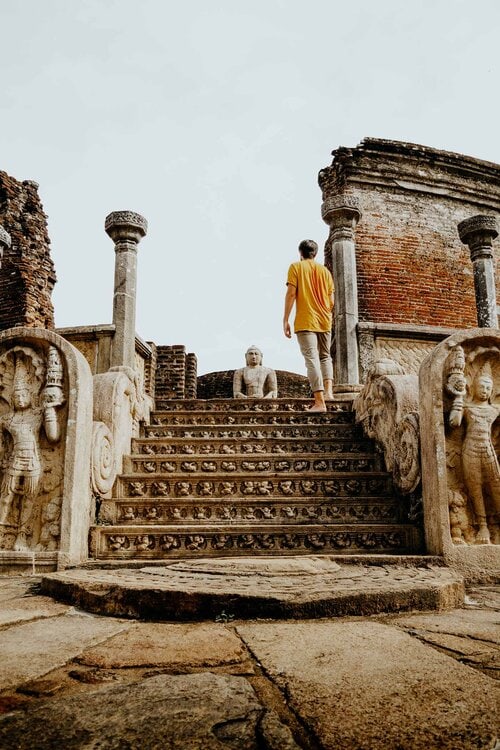
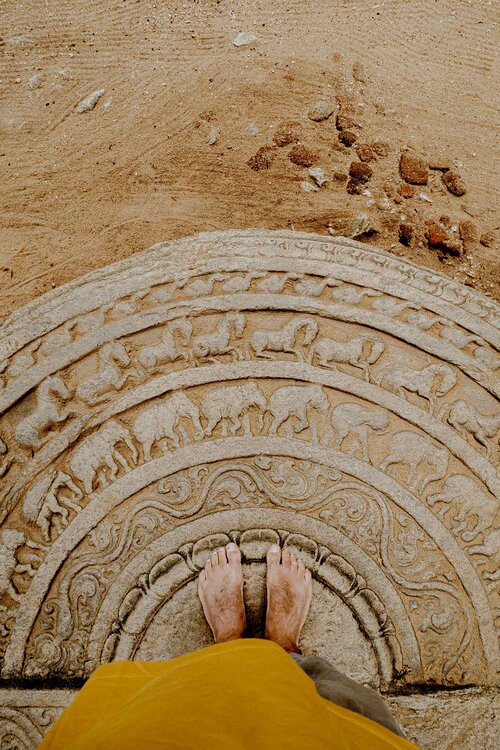
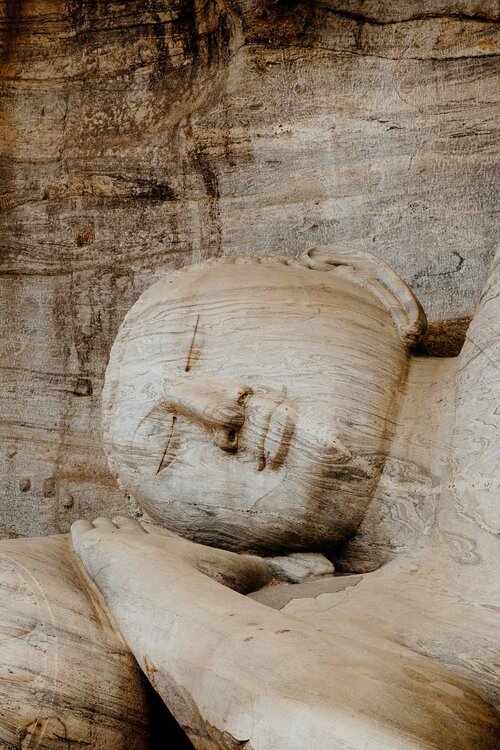
DAY 19 – 20 | TRINCOMALEE, SRI LANKA’S UNDISCOVERED EAST COAST
After soaking up all that Polonnaruwa has to offer, venture further east to the pristine, undiscovered beaches of Trincomalee and surrounds.
Trincomalee, often called Trinco by the locals, is a relaxed coastal town that is less frequently visited by travellers and backpackers alike. Even so, I sincerely feel that its beaches aren’t inferior to most of the must-see beaches on Sri Lanka’s beloved south coast.
But what really distinguishes Trincomalee is the fact that it’s deeply influenced by Tamil culture, resulting in a completely different atmosphere than elsewhere on the island. Trinco is thus, no stranger to vivid, breathtaking Hindu temples, and I would highly recommend attending at least one of them.
TRINCOMALEE | MUST-SEE ATTRACTIONS
Koneswaram Temple | The colourful Koneswaram Temple holds the upper area of Fort Frederick and is a must-see in Trincomalee. The fascinating temple is dictated by its main shrine, a large vivid statue of the Hindu god Shiva, and faces one of the world’s largest natural harbours. If you plan to visit, remember to respect religious customs.
Nilaveli Beach | Just 20 minutes north of Trincomalee you’ll find Nilaveli Beach, a secluded beach that is said to be among the best beaches in Sri Lanka. The sleepy town and its eponymous beach are still largely undiscovered to backpackers and houses an authentic local atmosphere. Nilaveli may be a little off the beaten path, but it is worth visiting, and a great place to grab a coconut while watching the world go by.
Sri Pathirakali Amman Kovil | Trinco may be renowned for its pristine beaches, it is the incredibly ornamented Hindu temples that amazed me the most. Established adjacent to the Trinco bus station is one of them, the Sri Pathirakali Amman Kovil, a work of art that is dedicated to the Hindu goddess Bhadrakali. To fully experience the temples, I’d recommend taking a peaceful walk in and around the buildings.
TRINCOMALEE | THE ESSENTIALS
Where | Trincomalee
Where to stay in Trincomalee | Trincomalee has excellent accommodations and I would highly recommend Surf Reef Dive Beach Palace and OYO 310 Sea Lagoon Beach Hotel. Alternatively, use booking.com to find accommodations in Trincomalee.
How to get from Polonnaruwa to Trincomalee | From Polonnaruwa’s main station, take the local bus to Habarana, before changing to a direct bus that heads for Trincomalee. The journey takes around 3.5 hours.
How to get around Trincomalee | If you’re looking to explore the surrounding area, I would highly recommend renting a scooter. Alternatively, go walking or hire one of the many tuk-tuks.
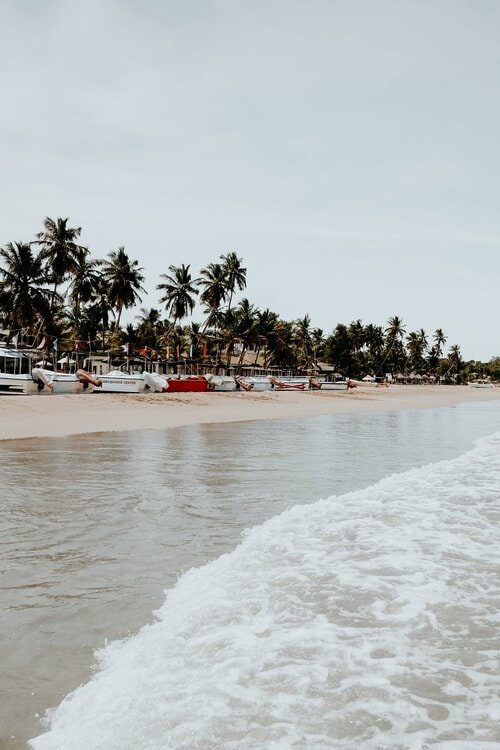
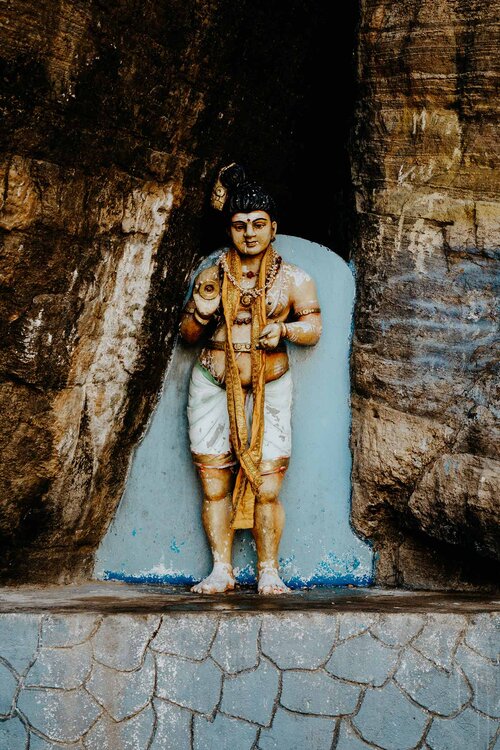
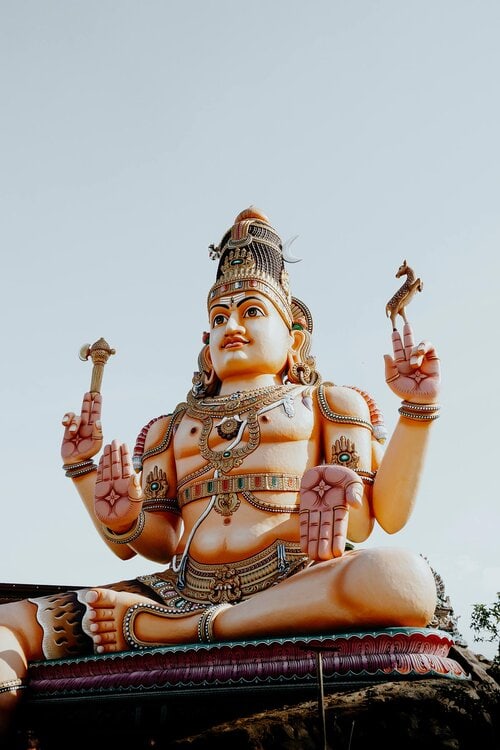
DAY 21 | NEGOMBO, TIME TO LEAVE SRI LANKA
It’s time to leave Trinco and board the train that brings you from Trincomalee to Negombo (departs once a day at 06:50).
This scenic train journey is the last glimpse you’ll have of this unique, captivating country. It’s a great moment to reflect and appreciate the fascinating adventures you’ve had during your 3 weeks in Sri Lanka.
To avoid unnecessary problems, make sure you arrive in Negombo one day prior to your return flight. By doing so, you ensure yourself a stress-free journey to the airport.
NEGOMBO | THE ESSENTIALS
Where to stay in Negombo | The last night before a flight, I always try to pick the most comfortable, budget-friendly accommodation possible. For Negombo, I would highly recommend Waves by Tranquil. Alternatively, use booking.com to find accommodations in Negombo.
How to get from Trincomalee to Negombo | Take the direct train from Trincomalee station to Gampaha station. From there, hire a tuk-tuk or arrange a taxi with the PickMe app to bring you to your accommodation in Negombo. The journey can take up to 9 hours.
Train times from Trincomalee to Negombo | Train departs once daily, 06:50. To avoid unnecessary problems, make sure you arrive in Negombo one day prior to your return flight.
SRI LANKA ITINERARY | TRAVEL ESSENTIALS AND TIPS
WEATHER IN SRI LANKA | BEST TIME TO VISIT SRI LANKA
Although Sri Lanka is just a small island, it is quite a challenge to figure out the best time to visit.
Sri Lanka’s weather is somewhat confusing and dictated by two individual monsoon seasons, and since they alternate, it’s important to plan where you want to go. Due to this distinct climate, there’s always a part with good weather, making Sri Lanka a year-round travel destination.
May to September | The absolute best time to go and visit Sri Lanka’s undiscovered northern and eastern areas.
December to March | Sri Lanka’s popular south and central areas have excellent weather this time of year.
I’d followed this itinerary in September and was fortunate to have the best of both worlds. That said, do be aware that travelling during the shoulder season does not always guarantee good weather.
MONEY ESSENTIALS | CURRENCY IN SRI LANKA
Sri Lanka’s official currency is the Sri Lankan Rupee, a currency that is indicated by LKR and Rs. The notes that are currently in circulation include Rs10, Rs20, Rs50, Rs100, Rs500, Rs1000, Rs2000 and Rs5000. Make sure you have enough notes in lower denominations, especially if you plan to stroll the markets and hire tuk-tuks.
Exchanging currency in Sri Lanka | I would sincerely recommend you to avoid buying Sri Lankan Rupees either ahead of time or at the airport. I made the mistake to buy upfront, and since the Rupee isn’t rated as a major currency, I ended up getting a bad exchange rate.
The exchange rate at the time of writing | $1 equals 189 LKR, and €1 equals 209 LKR.
For up to date exchange rates, visit the XE website.
ATM’s in Sri Lanka | ATM services are found throughout most popular tourist areas and work well. To avoid unnecessary costs, I’d highly recommend choosing the local currency when withdrawing money.
Fee-free ATM | I used The People’s Bank on many occasions, and had no commission or whatsoever.
STAY SAFE IN SRI LANKA | TRAVEL INSURANCE
Though Sri Lanka is perfectly safe for travellers, I always strive to sort out my travel insurance before arriving in a foreign country, and I highly advise anyone else to do the same.
Where we prefer that everything goes smoothly during our travels, something unfortunate can happen at any moment, whether it’s an injury or an accident on the road. When that happens, it is better to be safe than sorry.
Heymondo | Whether you’re going on a 3-week backpacking trip, or planning a long stay somewhere abroad, Heymondo has excellent insurance options either way – plus full covid-19 coverage and a handy app with 24-hour medical assistance. Readers of WTSW receive 5% off any insurance policy, more information here.
World Nomads | If you’re an adventure seeker, backpacker, or planning your once-in-a-lifetime world trip, make sure you check out World Nomads, they designed the perfect travel insurance to help you travel safer and smarter. Do note that they’re not covering covid-19 related claims.
PLAN YOUR SRI LANKA ITINERARY WITH THESE ESSENTIAL GUIDES
A travellers guide to Angkor Wat, Cambodia's majestic ancient kingdom
When you start planning your trip through Cambodia, you’ll probably be hyped to see the world famous Angkor Wat temple in person, and that’s for an excellent reason.
With over a thousand temples dotted throughout the complex, Angkor is considered the most important archaeological site in the whole of South-East Asia.
At the Angkor temple complex, located just outside Siem Reap, you will discover the beauty in temples like Bayon, Angkor Thom, Ta Prohm and of course Angkor Wat.
This guide provides everything you need to know about visiting Angkor Wat in Cambodia.
If you choose to use any of the links on this page, I may receive a small commission at no extra cost to you. By using these links, you’ll have a direct impact on WTSW and support my ability to continue to create free insightful travel content for you. If you find any of my tips useful, you can support me by buying me a virtual coffee here.
A travellers guide to Angkor Wat, Cambodia
A brief history of Angkor Wat
Angkor is the world’s largest religious monument with over a thousand temples. Most travellers call the whole complex Angkor Wat, but that is not entirely correct.
In fact, only the most famous temple of the complex is named Angkor Wat. The temple was originally built as a Hindu temple dedicated to Vishnu during the Khmer Empire. At the end of the 12th century and was gradually transformed into a Buddhist temple.
With over 2.5 million visitors yearly the temples of Angkor are the main reason for people to travel to Cambodia. With so many travellers it is wise to strategically plan your trip to the temples of Angkor.


Angkor Wat entrance fee
The entrance fee depends on the number of days exploring Angkor and which temples you are willing to visit. The Angkor Wat entrance fee comes in three options and has to be purchased in person at the official ticket office. The ticket office opens at 5 am, so arrive a bit earlier or buy your tickets a day in advance. It can be handy to bring a passport photo for your personal ticket, though they have the equipment to make them at the desk.
Angkor Wat ticket options
One-day ticket | $37
Three-day ticket | $62
Seven-day ticket | $72
If you are planning to follow this guide a one-day ticket is enough to see the highlights of Angkor. But with so many impressive temples it can be quite a good idea to spend three or seven days at the Angkor Archaeological Park.
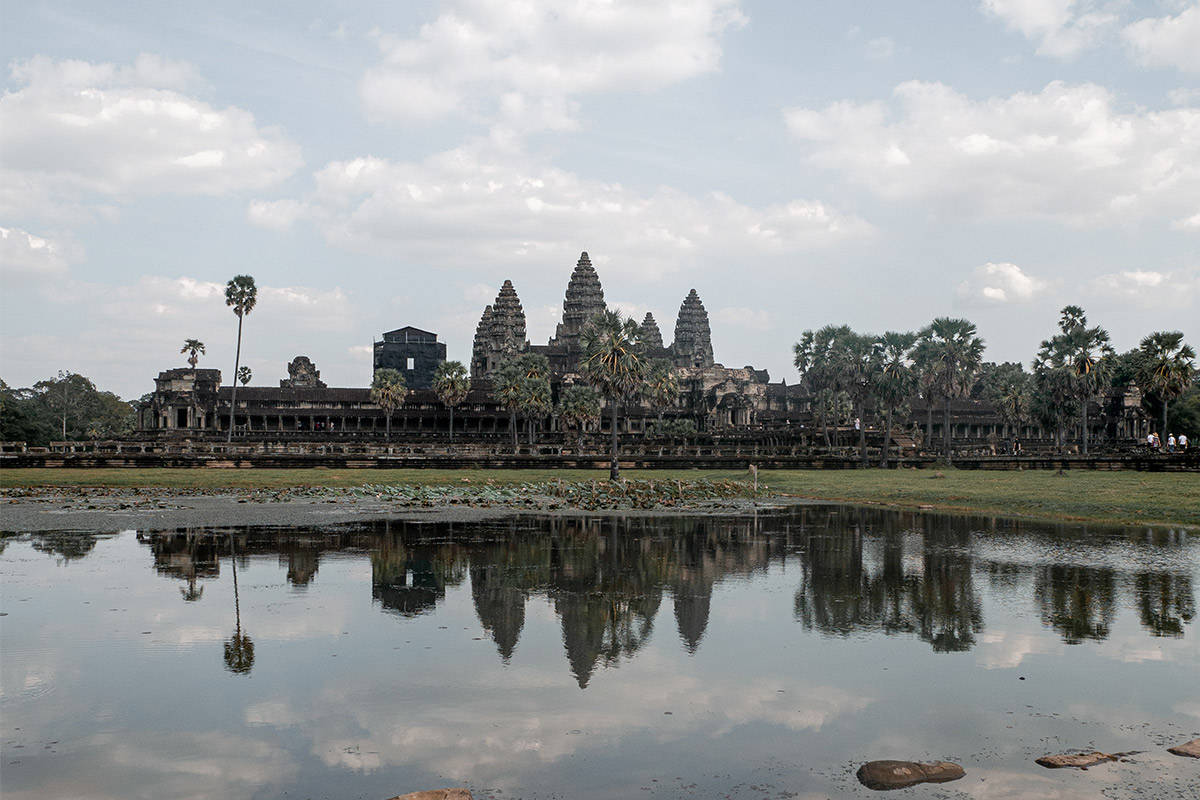
Getting yourself an Angkor Wat guide
To get the most out of your time in Angkor it is wise to get yourself a guide. When you reach out to a tuk-tuk driver, you will almost instantly receive advice and a route depending on the number of days you are willing to explore the park.
We really had a fun time with our driver named Johnny Chantha, a friendly guy that speaks English very well. We personally liked the fact that we could tell our preferences and it was easy to talk about alternative routes. Combining his advice with our plan gave us a lot of photography freedom which you would like to have as well I guess?
The cost for an 8-hour guide is $12 and visiting Angkor Wat at sunrise costs $5.
Our custom tour + sunrise at Angkor Wat cost us $20 for a full day of exploring. If you get yourself a tuk-tuk, try to aim for a price between $12 and $20.


The best temples in Angkor
With so many temples spread over an area of 400 square meters, it is good to know which ones are worth visiting. Below you can read about the temples we liked the most. All the temples below can be visited in a day if you make a custom route with your tuk-tuk driver.
Angkor Wat
Angkor Wat is the main temple of Angkor and that makes it the number one reason for people to travel to Cambodia. Angkor Wat, meaning ‘City Temple’ is the heart and soul of Cambodia and is most mesmerizing when visiting at sunrise.
The reflection on the water, when the sun rises above the temple, is such a great thing to witness if you forget about the other thousand people beside you. Although it is the largest temple at Angkor it isn’t the most spectacular if you ask me.


The Bayon Temple
The Bayon temple is most famous for having 54 towers with each four faces of Brahma on it. With a total of 216 faces, it isn’t strange that Bayon is also called the ‘Face Temple’. Plan your trip to the Bayon Temple around lunchtime as it will be less crowded. This allows you to have a lot of photography freedom.
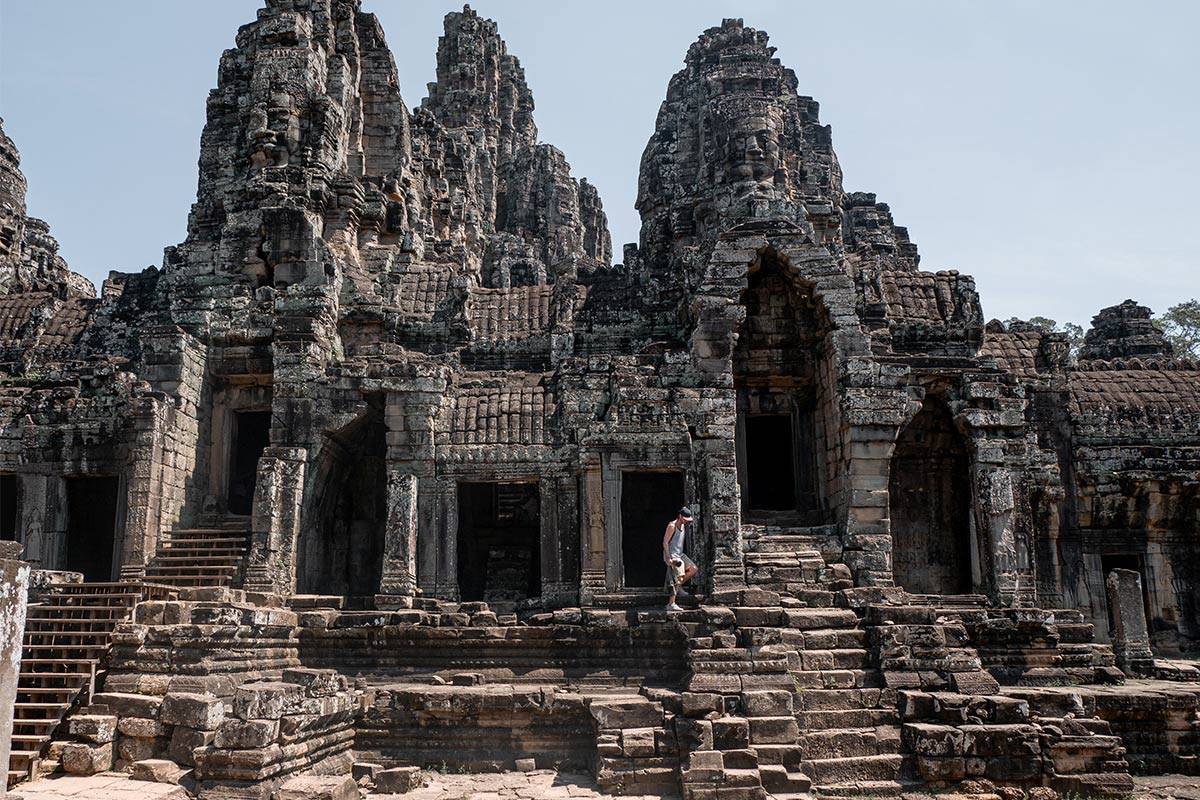
Ta Phromh
At Ta Prohm, it is nice to see how nature took over the temples. Try to plan this temple direct after you sunrise mission at Angkor Wat. Ask your tuk-tuk driver to take you there so you will arrive before it is officially opened. This temple was used as a filming location for the movie Tomb Raider and is one of the most authentic-looking temples you will come along when exploring Angkor.


Preah Khan
One of the biggest Cambodian temples is Preah Khan. It is the largest flat temple in Angkor meaning that all the parts of the temple are at ground level. Just like Ta Prohm, this temple is a good example of nature meets the temple. The decorated sandstone temple walls make a good contrast with the large tree trunks.


Ta Keo
Ta Keo is a pyramidal structured temple and is 21 meters high. Climbing to the top of this temple can be really hard as the stairs are really steep. With almost no decoration this temple stands out to the other temples with its simplicity. It is also the first temple in Khmer history that is built entirely out of sandstone.


Thommanon
Thommanon is located just outside Angkor Thom and is a single-towered temple. The carvings of this temple are really well preserved and the aged temple walls make a nice contrast with the surrounding jungle.
The Victory Gate
One of the two entrances of the eastern wall of Angkor Thom is named The Victory Gate. This gate was used to welcome soldiers that returned from battle when they entered the Khmer Capital.
Other interesting Temples at Angkor
Some other temples where we heard a lot of good stories about are Ta Sohm and Banteay Srei. Don’t mind putting these two in your itinerary for Angkor.
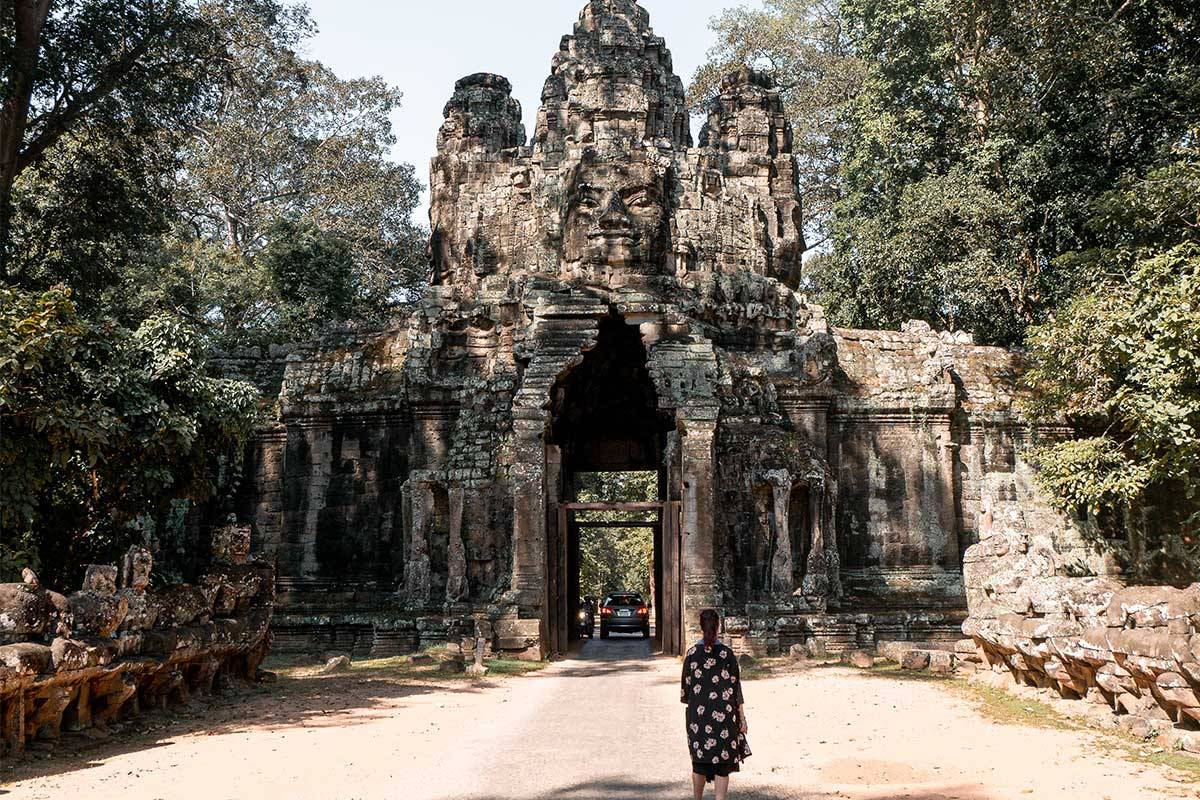
Things to know before visiting Angkor Wat
Start with sunrise at Angkor Wat
Start your visit with sunrise at Angkor Wat and let your tuk-tuk driver pick you up at your hotel around 4 AM. The feeling of hitting the road when it’s still dark and knowing what is to come is a great part of the experience and we would definitely recommend it.
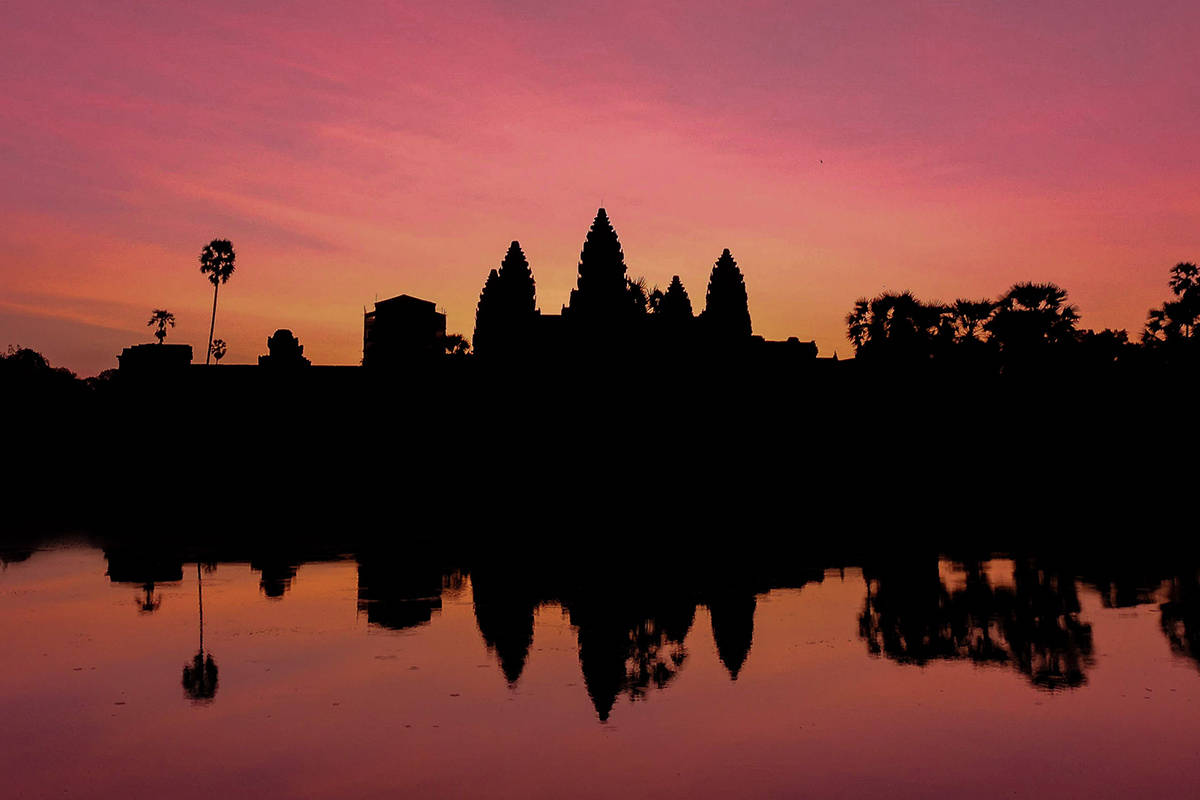
Using a drone in Angkor Wat
At the Angkor temple complex, it is not allowed to fly a drone without a permit. Getting a permit to fly at Angkor seems to be a difficult task. On this website, you can find more information about obtaining a drone permit.
What to wear in Angkor Wat
Although the weather in Siem Reap can be quite hot, wearing clothes like a tank top, a short or a skirt above the knees is considered very disrespectful in Buddhist culture. Women should cover their shoulders and to avoid any problems men should do this as well. Always try to bring a scarf when you are about to visit temples while on the road.
Another recommendation is to wear comfortable shoes, some stairs are steep and hard to climb. And in some cases, the temple floor can be really rugged.
It’s also good to take a hat with you, most temples are in the open sun and it can get really hot during the day. Don’t forget to use sunscreen with SPF, wear sunglasses and drink enough water to stay hydrated.
Respect the temples
When you visit the temples try to be quiet and avoid talking out loud. Touching the temples and their carvings is considered disrespectful and so is smoking.

Where to stay near Angkor Wat
When you plan to visit the temples of Angkor the chance is big you enter Cambodia through Siem Reap Airport. Staying in Siem Reap can be really laid back in between your time exploring the temples. We booked four nights at Bopha Residence and enjoyed relaxing by the pool after a long day of temple running.
One piece of advice, book your accommodation with free cancellation in advance on booking.com. Siem Reap is a popular destination for backpackers.
Stay safe in Cambodia | Travel insurance
Though Cambodia is perfectly safe for travellers, I always strive to sort out my travel insurance before arriving in a foreign country, and I highly advise anyone else to do the same.
Where we prefer that everything goes smoothly during our travels, something unfortunate can happen at any moment, whether it’s an injury or an accident on the road. When that happens, it is better to be safe than sorry.
Heymondo | Whether you’re going on a 3-week backpacking trip, or planning a long stay somewhere abroad, Heymondo has excellent insurance options either way – plus full covid-19 coverage and a handy app with 24-hour medical assistance. Readers of WTSW receive 5% off any insurance policy, more information here.
World Nomads | If you’re an adventure seeker, backpacker, or planning your once-in-a-lifetime world trip, make sure you check out World Nomads, they designed the perfect travel insurance to help you travel safer and smarter. Do note that they’re not covering covid-19 related claims.
Plan your Cambodia itinerary with these essential guides
My 3-week Cambodia itinerary | Uncover the absolute best of Cambodia
When people talk about Cambodia they probably instantly name up Angkor Wat. All tough visiting the temples of Angkor should be on the top of your list when travelling to Cambodia, there is so much more to explore in this authentic country.
We loved the diversity that it brings, name it and Cambodia will deliver. Jungle, beaches, culture, temples, islands to relax or party and lovely countryside. In 18 days we managed to enjoy all those lovely things.
In this guide, we hope to help you enjoy authentic Cambodia just as we did.
If you choose to use any of the links on this page, I may receive a small commission at no extra cost to you. By using these links, you’ll have a direct impact on WTSW and support my ability to continue to create free insightful travel content for you. If you find any of my tips useful, you can support me by buying me a virtual coffee here.
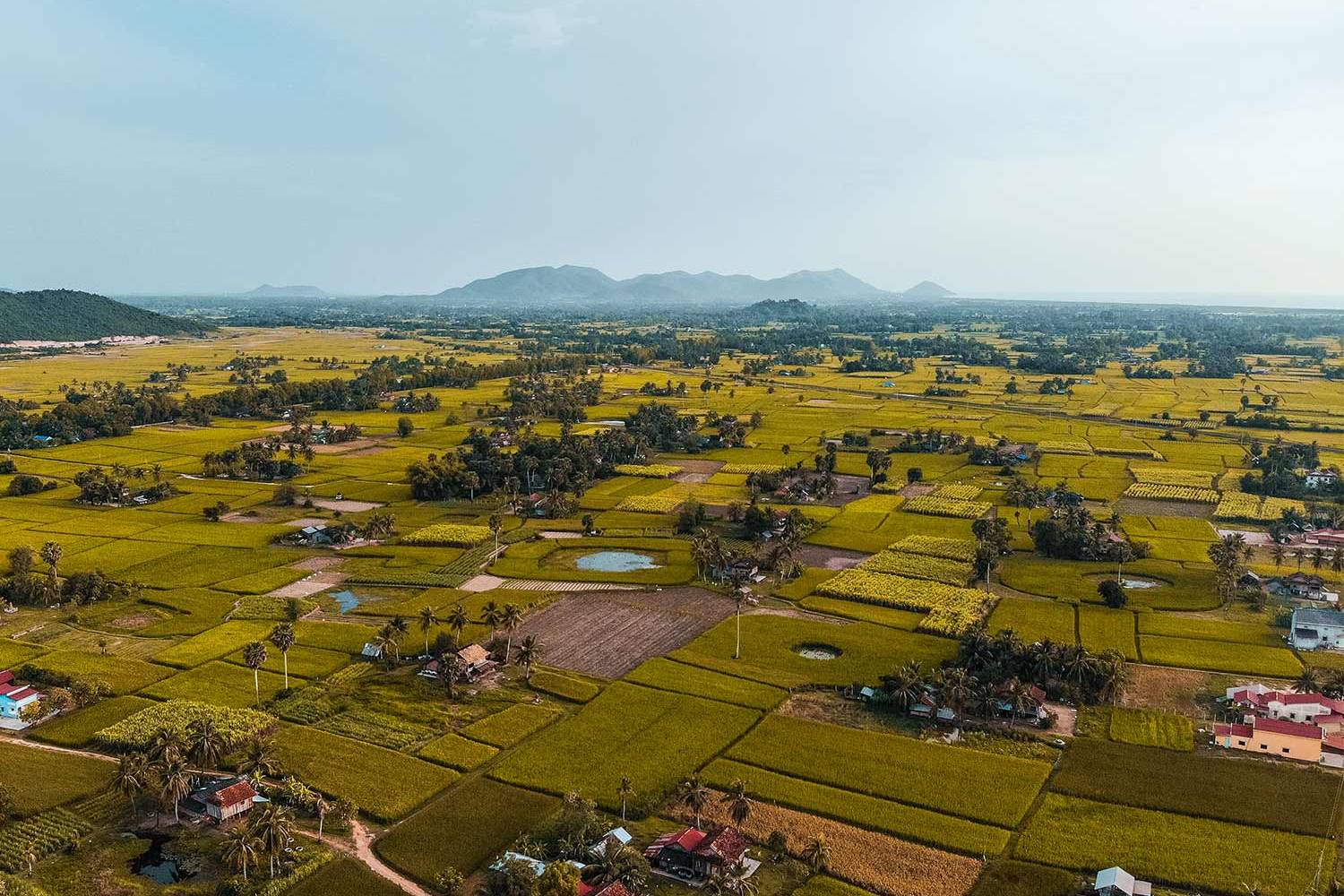
Where to start?
When planning your Cambodia itinerary, it’s good to know where you wanna start.
Our adventures through Cambodia started off in Siem Reap. In our case, a ticket to Bangkok was way cheaper than a flight directly to Siem Reap or Phnom Penh. So we choose to have a 2-day city trip in Bangkok before heading to Siem Reap with AirAsia. To see how we spent our 48 hours in Bangkok click here. In this Cambodia itinerary, we show you which places we visited and tell you all about our favourite sites.
BTW don’t forget to bring some dollars, when entering Cambodia you have to pay $20 for a 30-day visa. Also, keep in mind that you need some extra passport photographs for your visa and Angkor pass.


Travelling through Cambodia by public transport
Going from place to place in Cambodia is best done by bus. We used Camboticket to get our tickets for the bus, ferry or taxi. With the code CTAPP, you can get 10% off when booking tickets with their app. Another easy option is that you can get your tickets at almost any hotel or hostel. If that isn’t the case try visiting a Mekong Express office nearby or book online.
It can happen that they sell too many tickets and if that’s the case the bus can be really packed. Also, keep in mind that your bus driver usually tries to drop you off at the edge of the city centre, it looks like they are working together with the tuk-tuk drivers. They usually drop you at a place where you pay way too much for short-distance tuk-tuk rides. We used an app called Maps.me to pin a marker at the place where the bus driver should have dropped us. So when they were planning to drop us at the wrong place, we could show them the bus station. This app is a perfect offline alternative to Google Maps.
For short distances in the cities or just outside of them, a tuk-tuk is perfect. The price can vary between $1 to $3, never pay more. And don’t get fooled by the trick that the price is per person instead of per tuk-tuk. And always try to get a deal, it’s really common to do this in Cambodia.


Accommodation | Where to stay in Cambodia
When travelling through Cambodia there are enough options to get accommodation. We booked our accommodation one day in advance and that worked out pretty well. It gives you a lot of freedom and opportunities to change your itinerary. We always use booking.com and if you use this link you get a $15 discount. In some cases, you can even cancel your booking, if done on time, without being charged.
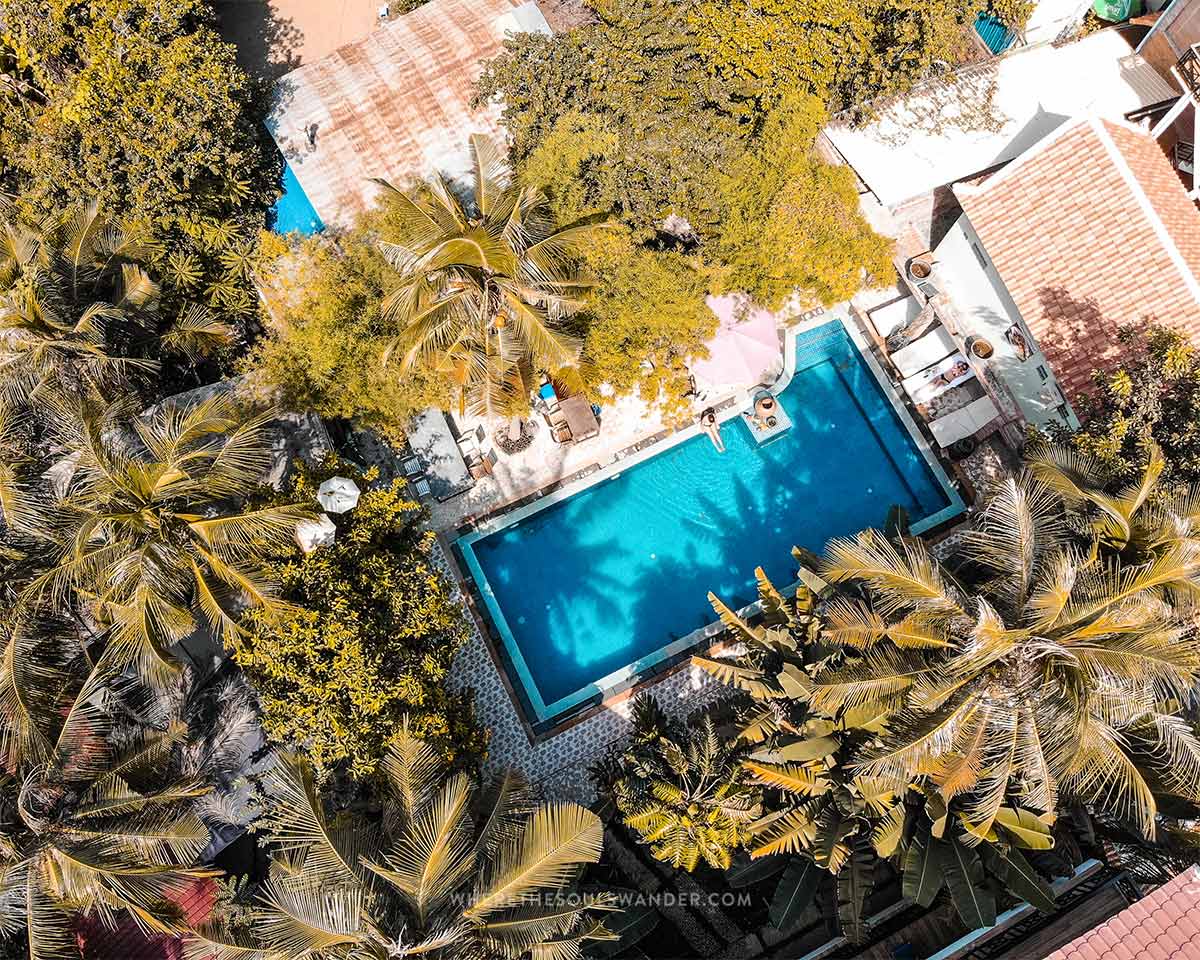
My 3-week Cambodia itinerary | Day-to-day overview
Day 1 – 4 | Siem Reap, the gateway to Angkor Wat
When travellers talk about Siem Reap they see it as a starting point to visit the world’s largest religious monument named Angkor Wat. If you are thinking about visiting Angkor and we know you do! You can have a look at our Temple running guide below. Besides the temples of Angkor, Siem Reap is a place rich in culture and history. It’s easy to spend 3 to 4 days here, including your visit to the temples. Enjoy the many lovely restaurants, and the exciting nightlife and have a visit to the night market. If you take Siem Reap as a home base you can take a trip to, Phnom Kulen also known as the ‘‘Mountain of Lychees’’. It’s one of the best waterfalls in Cambodia and totally worth a visit.
Joining a day tour from Siem reap to Angkor is easy and includes a visit during sunrise. For prices and availability check here.


Day 5 – 6 | Battambang, Cambodia’s underrated gem
The city that’s most famous for its Bamboo train. Driving through the rice fields with a traditional train is a fun thing to do. You can combine it with a visit to the killing caves of Phnom Sampeau which was used as an execution site. During the Red Khmer regime, they used this cave to kill their victims and threw the bodies into the cave afterwards. On the other side of the tragic cave, you have the Bat Cave. Every day around sunset thousands of bats leave the cave, an amazing show by Mother Nature. In the city centre of Battambang, you can see the French colonial influences. You can say that Battambang has something special, although there isn’t much to do in the city, the cosy restaurants and laid-back cafes make it worth your stay. We really enjoyed eating tapas at The Lonely Tree Cafe or getting lunch at About The World.


Transit | Sihanoukville
Once a sleepy beach town but it’s rapidly transforming due to Chinese investments, Sihanoukville has now, sadly, become a gambler’s paradise, with casinos popping up on just about every corner.
Not our favourite town, but that was no problem for us. We went straight to the ferry that brought us to Koh Rong. Sihanoukville is the best-known harbour city and you have to go here when you are going to visit Koh Rong or Koh Rong Samloem.
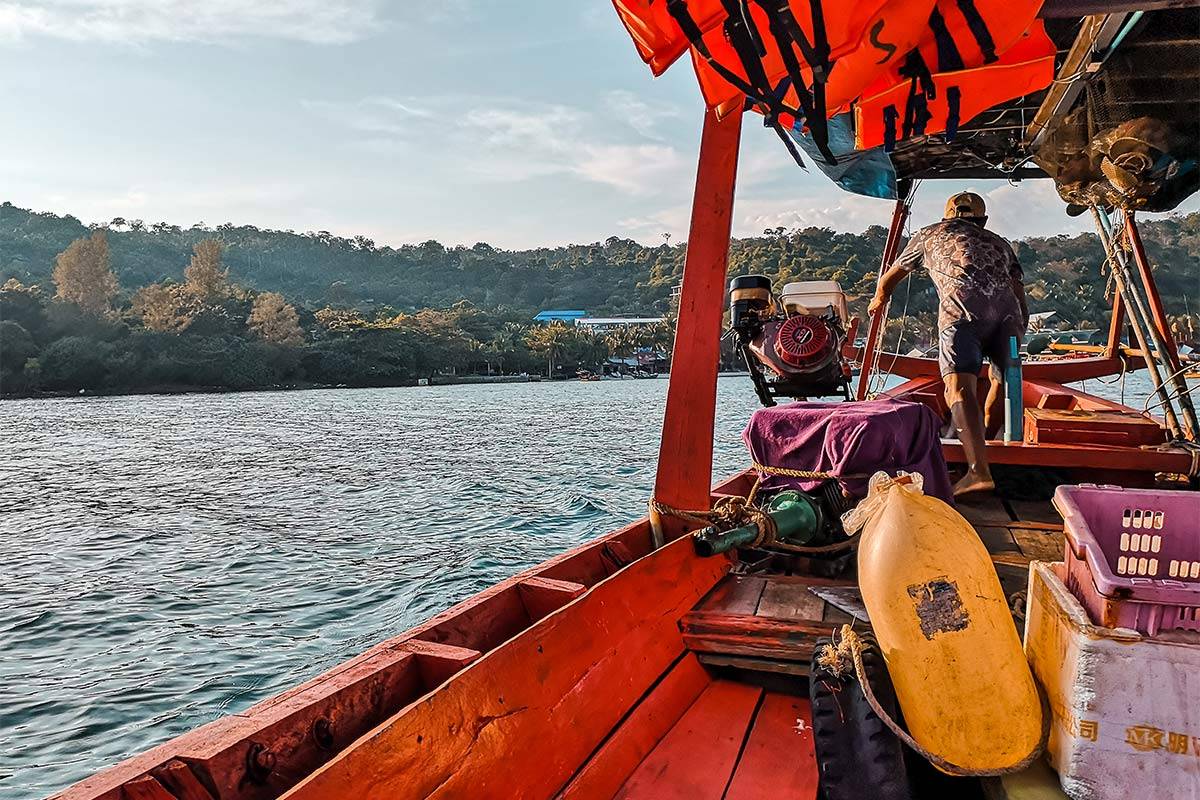
Day 7 – 11 | Koh Rong, Cambodia’s island paradise
If you like to have some time off at the white beaches or take a relaxing swim in the clear blue sea. Koh Rong is your place to go. When on the island you can choose to stay on the busy side to visit the bars and go partying. Or just pick a quiet beach on the other side of the island. We really liked our stay on the island and planned it in the middle of our itinerary. We even stayed a few days longer than planned.
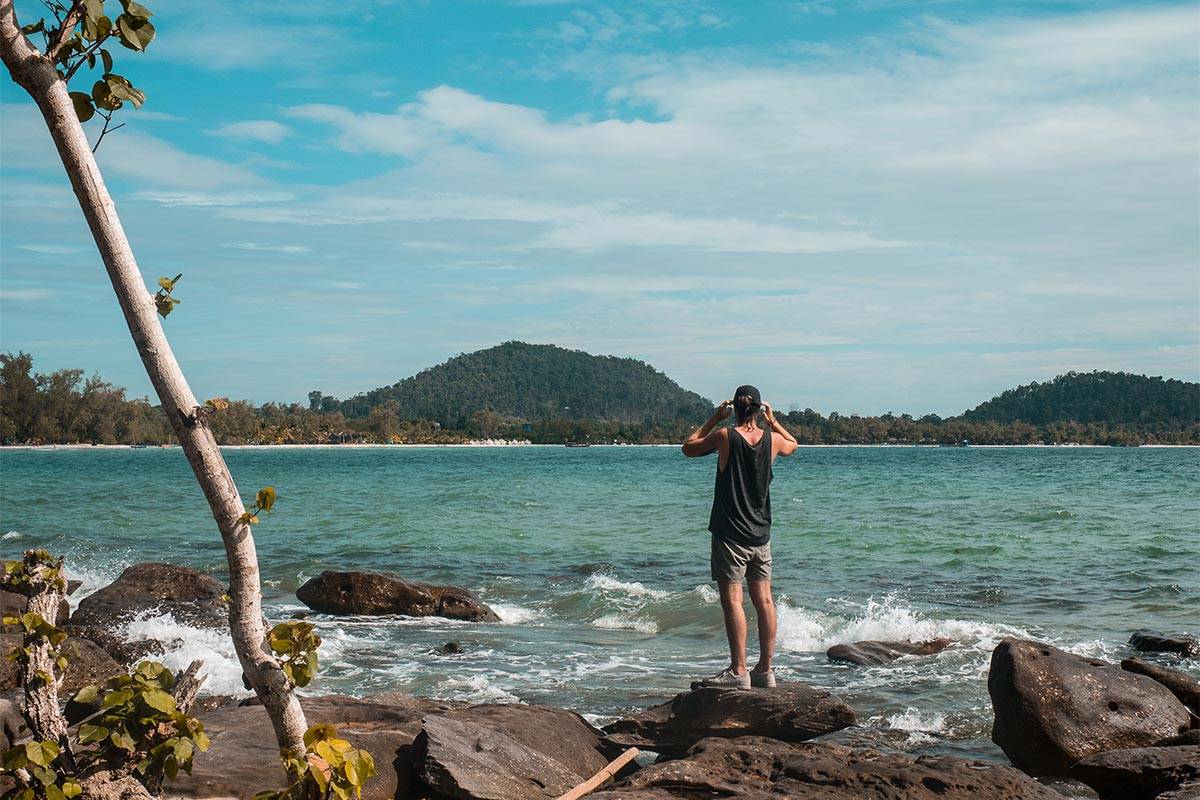
Day 12 – 14 | Kampot, Cambodia’s scenic riverside town
Kampot is a small city on the coast with a lovely relaxing vibe. One of the charms of Kampot is that life feels slow over here. We ended up staying there a bit longer because of the nice atmosphere and good restaurants. We had some awesome Khmer food at Rikitikitava and enjoyed some good burgers at Pepe and the Viking. A must-do when in Kampot is driving to the top of Bokor Hill, you can easily rent a motorbike and explore the mountain by yourself. On top of the 1,080 meters high mountain, you have a viewpoint that gives you the most amazing views of the region. Take a visit to the famous Catholic Church or just restored Bokor Hill Hotel, which is now a hotel. If you own a drone you should definitely take it with you to the top, the bird-eye view is just mesmerizing!
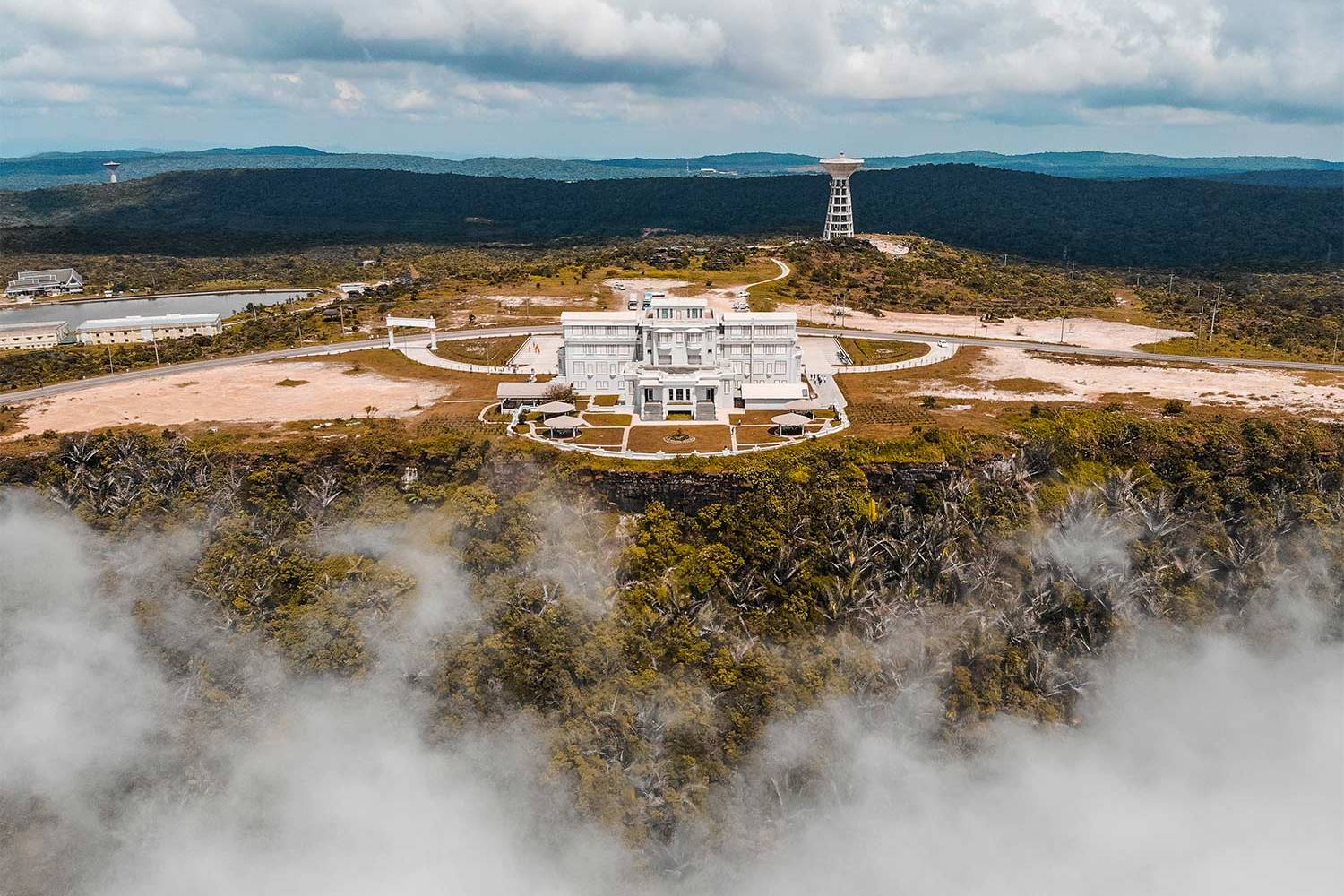
Day 15 – 16 | Kep, an authentic local town
If you love seafood make your way to Kep. This small coastal city is well known for its ‘’Crab Market’’. You can easily spend a day in Kep to rent a motorbike and explore the surrounding countryside. Take a look at La Plantation which is one of Cambodia’s famous pepper plantations. They provide you with a free guided tour and let you taste all different kinds of peppers. The dusty road brings you through local villages and lovely rice fields and you can even have a stop at Kampot’s “Secret Lake”.


Day 17 – 18 | Phnom Penh, Cambodia’s energetic capital
The capital of Cambodia is really overwhelming and definitely not our favourite place in Cambodia. But if you don’t know anything about what happened during the Khmer Rouge regime, then this is where you should go. Have a visit to the Tuol Sleng Genocide Museum and take a look at the tragic Killing Fields just outside of Phnom Penh. Keep in mind that visiting those places can be shocking and may need some time to settle. If you want to see some other cultural things in Phnom Penh pay a visit at What Preah Keo better known as The Silver Pagoda. Or maybe even try a traditional Khmer cooking lesson. At night you can have dinner or a drink at one of the many restaurants or rooftop bars.
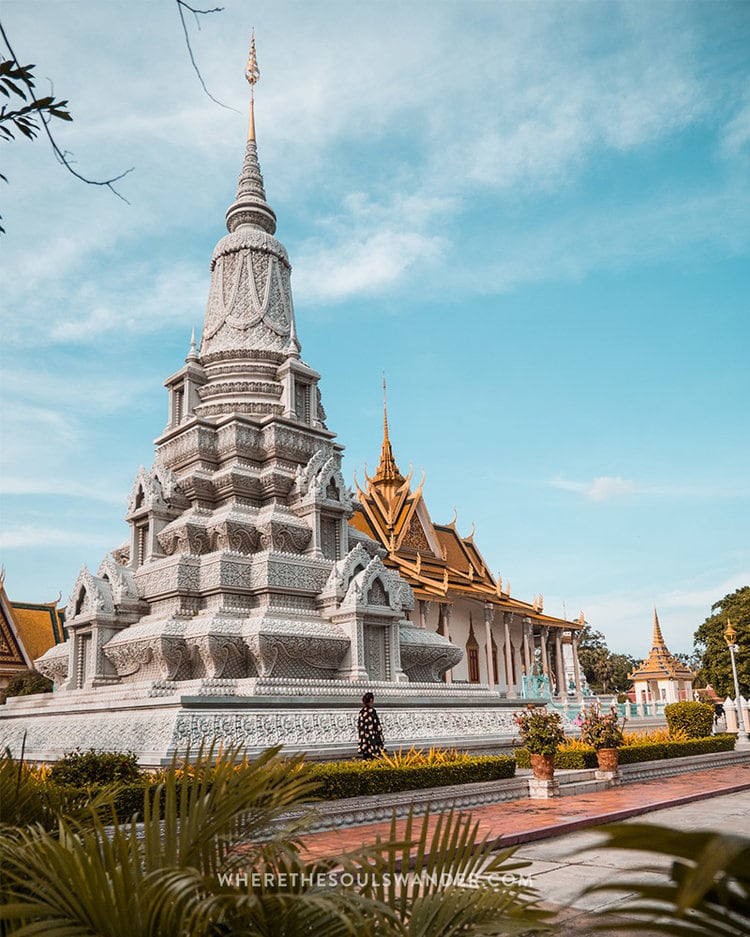
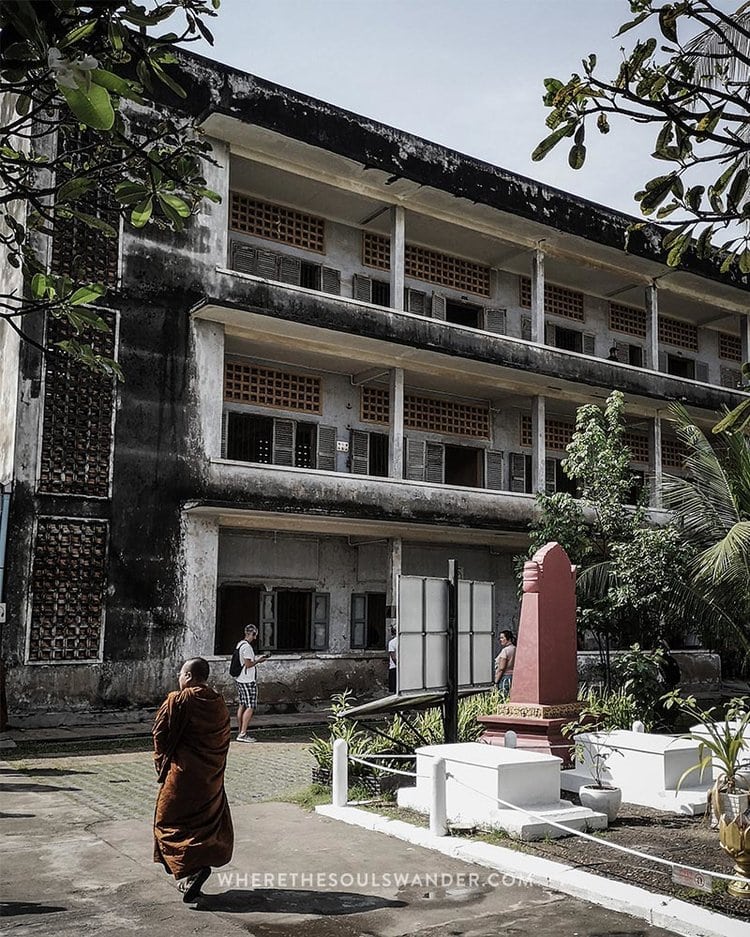
Stay safe in Cambodia | Travel insurance
Though Cambodia is perfectly safe for travellers, I always strive to sort out my travel insurance before arriving in a foreign country, and I highly advise anyone else to do the same.
Where we prefer that everything goes smoothly during our travels, something unfortunate can happen at any moment, whether it’s an injury or an accident on the road. When that happens, it is better to be safe than sorry.
Heymondo | Whether you’re going on a 3-week backpacking trip, or planning a long stay somewhere abroad, Heymondo has excellent insurance options either way – plus full covid-19 coverage and a handy app with 24-hour medical assistance. Readers of WTSW receive 5% off any insurance policy, more information here.
World Nomads | If you’re an adventure seeker, backpacker, or planning your once-in-a-lifetime world trip, make sure you check out World Nomads, they designed the perfect travel insurance to help you travel safer and smarter. Do note that they’re not covering covid-19 related claims.
Plan your Cambodia itinerary with these essential guides
Marrakech to Merzouga | My Incredible 3-day Morocco road trip itinerary
A 3-day Morocco road trip itinerary | From Marrakech to the Sahara
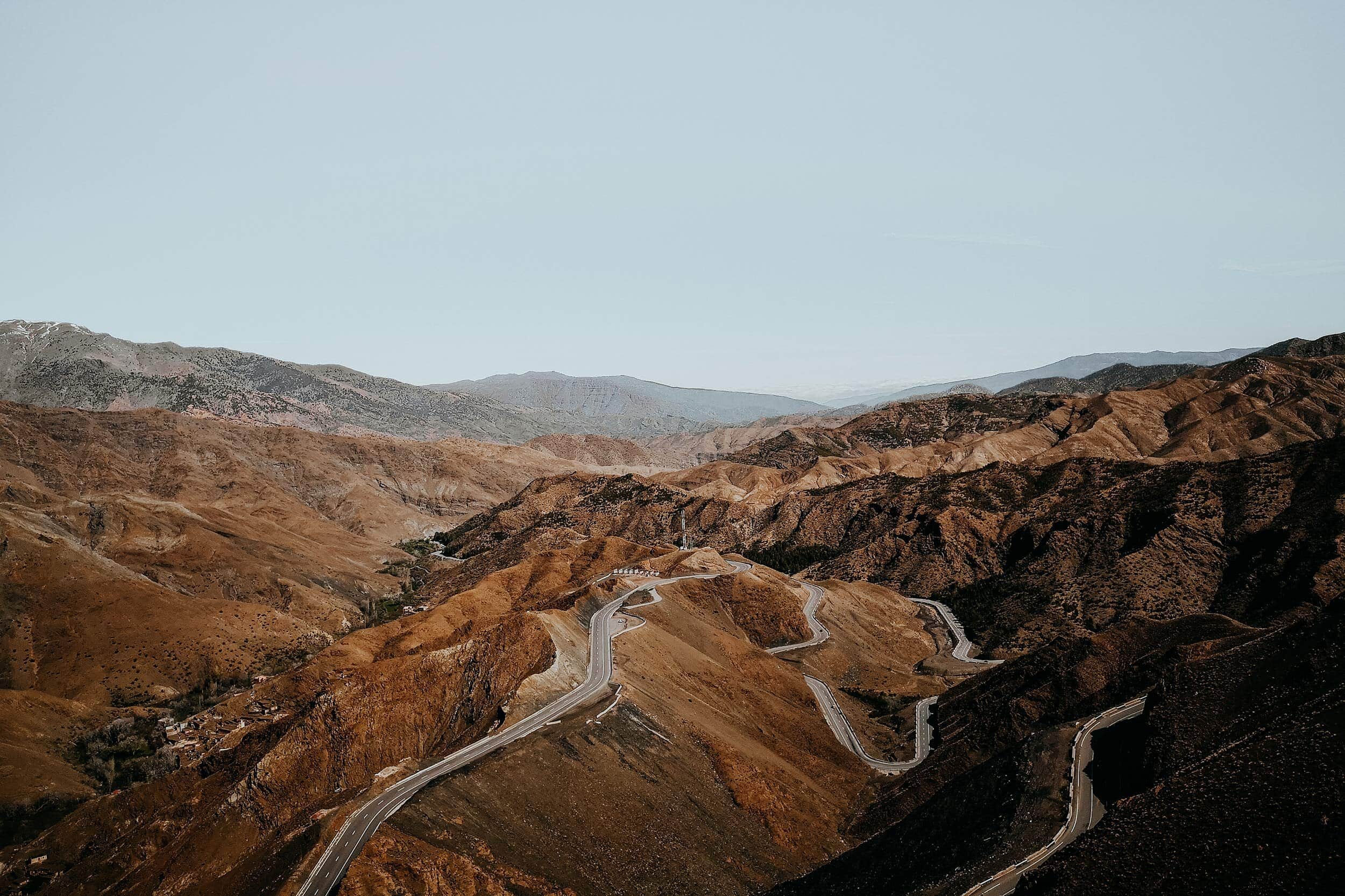
Morocco, with its oriental flair, is in many ways a country that you will not easily forget.
It’s a mix of captivating culture and incredibly picturesque landscapes, and to me, one of the best ways to experience its diverse beauty is by going on a 3-day road trip from Marrakech to Merzouga.
From the majestic Atlas Mountains to the tranquil dunes of the Sahara, the ancient fortified town of Aït Benhaddou to the hairpin roads of Tizi n’ Tichka, my brief, yet fulfilling Morocco road trip itinerary will take you along some of the country’s absolute highlights.
Where I normally sort out my own itineraries, I this time chose to join this 3-day guided road trip from Marrakech to Merzouga and had a brilliant time exploring this amazing part of Morocco.
In this post, I’ll talk you through my experience – plus a day-to-day route overview, accommodation suggestions, transportation advice and a few helpful tips for those looking to plan a Morocco road trip independently.
If you choose to use any of the links on this page, I may receive a small commission at no extra cost to you. By using these links, you’ll have a direct impact on WTSW and support my ability to continue to create free insightful travel content for you. If you find any of my tips useful, you can support me by buying me a virtual coffee here.
Transport | How to get from Marrakech to Merzouga
First things first, to follow this Morocco itinerary, it’s important to sort out how you plan to travel around the country.
If you ask me, there are two options that both have a few pros and cons. To help you out, I’ve researched both the use of a rental car and taking part in a guided tour from Marrakech to Merzouga – which I eventually ended up doing myself.
Join a multiple-day tour from Marrakech
If you’re not completely comfortable with driving in Morocco, don’t worry, there are plenty of excellent 3-day desert tours from Marrakech that will take in all the above highlights along the way.
Marrakech to Merzouga: 3-Day Desert Safari | Experience the Moroccan Sahara Desert, as well as Aït Benhaddou and the Todra Gorges on this 3-day group tour from Marrakech to Merzouga. This excellent tour includes transportation by a modern, air-conditioned minibus, 2 nights of accommodation with breakfast and dinner, and a camel ride in the dunes of Erg Chebbi. I opted for this tour and was pretty pleased with how the trip turned out. Prices and availability here.
Marrakech to Merzouga: 4-Day Private Desert Tour | If you rather prefer a private tour, opt for this 4-day private tour from Marrakech to Merzouga instead. Like the above, this tour also includes 3 nights of accommodation with breakfast and dinner, and a camel ride in the dunes of Erg Chebbi, but now the transport is exclusively for you and your party. Prices and availability here.
Rent a car
If you prefer more freedom to outline your own Morocco itinerary, it’s also possible to rent a car from the Marrakech international airport.
While driving in Morocco brings some challenges, it’s totally achievable to follow this road trip with a rental, given the infrastructure has improved a lot over the last few years.
However, to help you along the way, I highly recommend you to read this article as it’s packed with essential information on driving in Morocco.
For car rental in Morocco, I highly recommend Rentalcars.com, since they provide brilliant service, additional insurance options, and a wide range of cars, all at an affordable price.
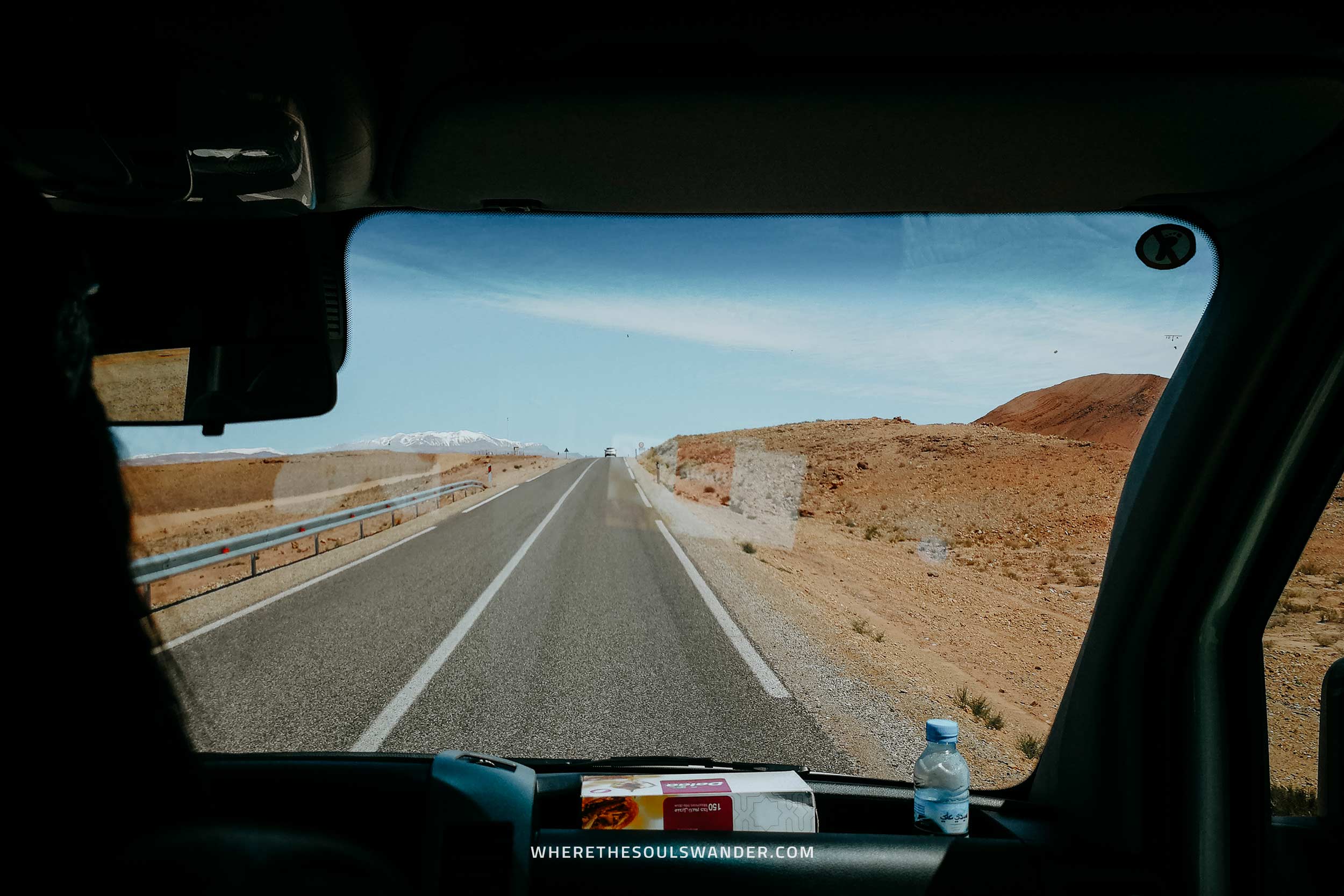
DAY 1 | Marrakech to Aït Benhaddou
Tizi n’ Tichka and the Atlas Mountains
After spending five days in Marrakech, it was finally time to start my incredible road trip from Marrakech to Merzouga (make sure you check this 3-day desert tour from Marrakech to Merzouga).
The day started early and was packed with interesting stops, including Tizi n’ Tichka, the Atlas Mountains, and Aït Benhaddou, before reaching my accommodation in Tinghir.
First things first, Tizi n’ Tichka is an impressive mountain pass that runs straight through the high Atlas Mountain, connecting Marrakech to Ouarzazat.
These winding roads are some of the most challenging roads in the country, and the viewpoint at the end makes for an epic first stop on this Morocco road trip adventure.
At the viewpoint, you’ll be welcomed by some of the most stunning views of Morroco’s highest mountain ranges; the snow-covered Atlas Mountains.
Once we reached the highest point of the journey, we had some trouble with snow blocking the roads, which is very common in the Atlas Mountains during the early spring months.
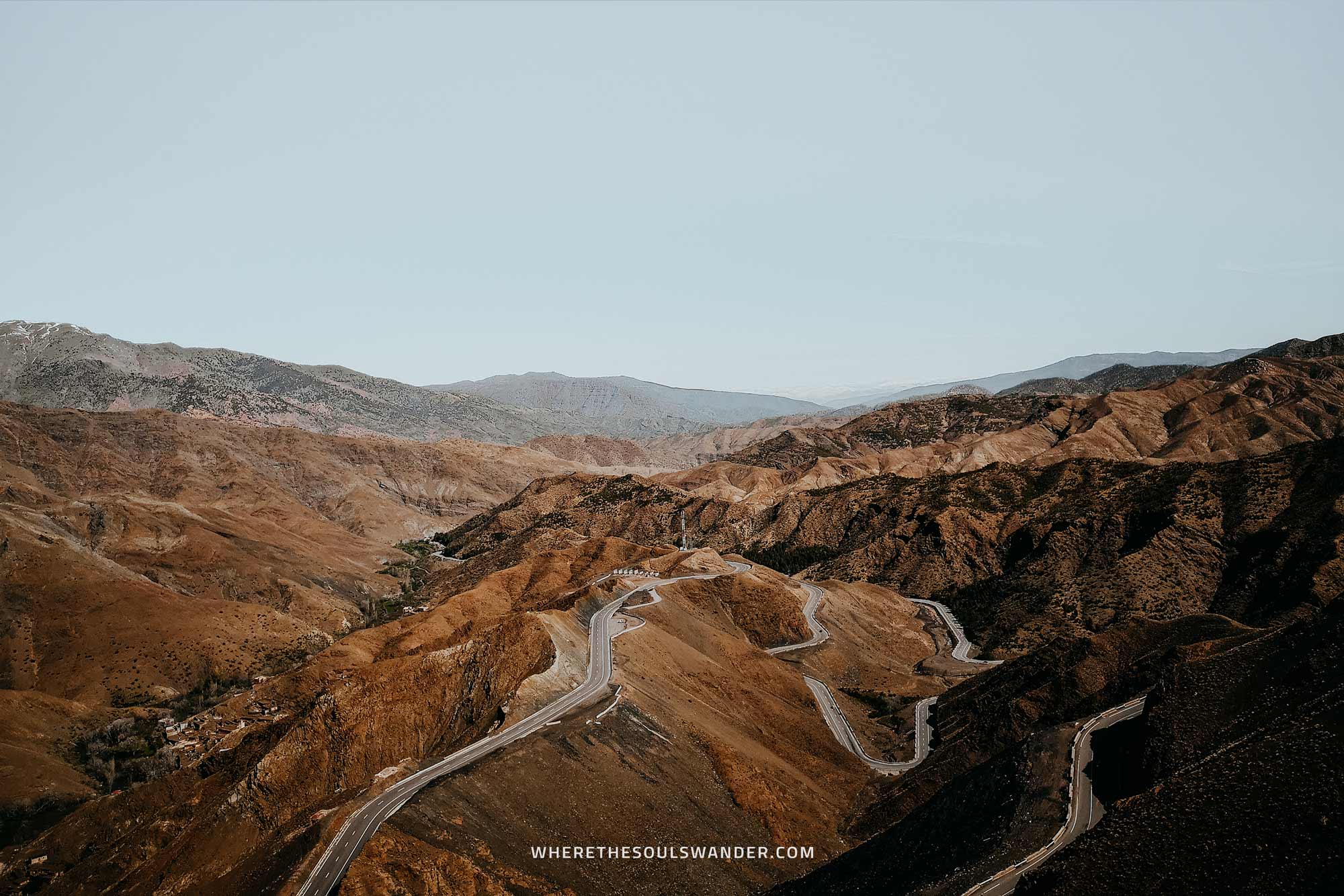
Aït Benhaddou
After crossing the High Atlas Mountains in roughly 4 hours from Marrakech, it was time to take the roads less travelled in the direction of the UNESCO World Heritage site of Aït Benhaddou.
Located in the foothills of the High Atlas along the former caravan route between the Sahara and Marrakech is Aït Benhaddou, an authentic Berber village marked by Kasbahs (earthen buildings) and a towering fortified wall, also known as a Ksar.
While most of its inhabitants are now long gone, the fortified village, with its traditional Kasbah’s, narrow laneways and friendly Berber people remains an utterly unique place to visit and I’m pretty sure that wandering along the distinctive architecture will be one of your absolute highlights on this Morocco road trip.
To me, the village is simply wonderful and it’s easy to see why movies such as Gladiator, Lawrence of Arabia, and Game of Thrones – one of my favourite series of all time, have been filmed here.
Where to stay | If you plan to do your Morocco road trip independently, make sure you check out Riad Caravane, an exceptional riad with Kasbah-style rooms at only 10 minutes from Aït Benhaddou.
Read more | Check out my Aït Benhaddou guide for inspiration, travel advice and all the essentials.
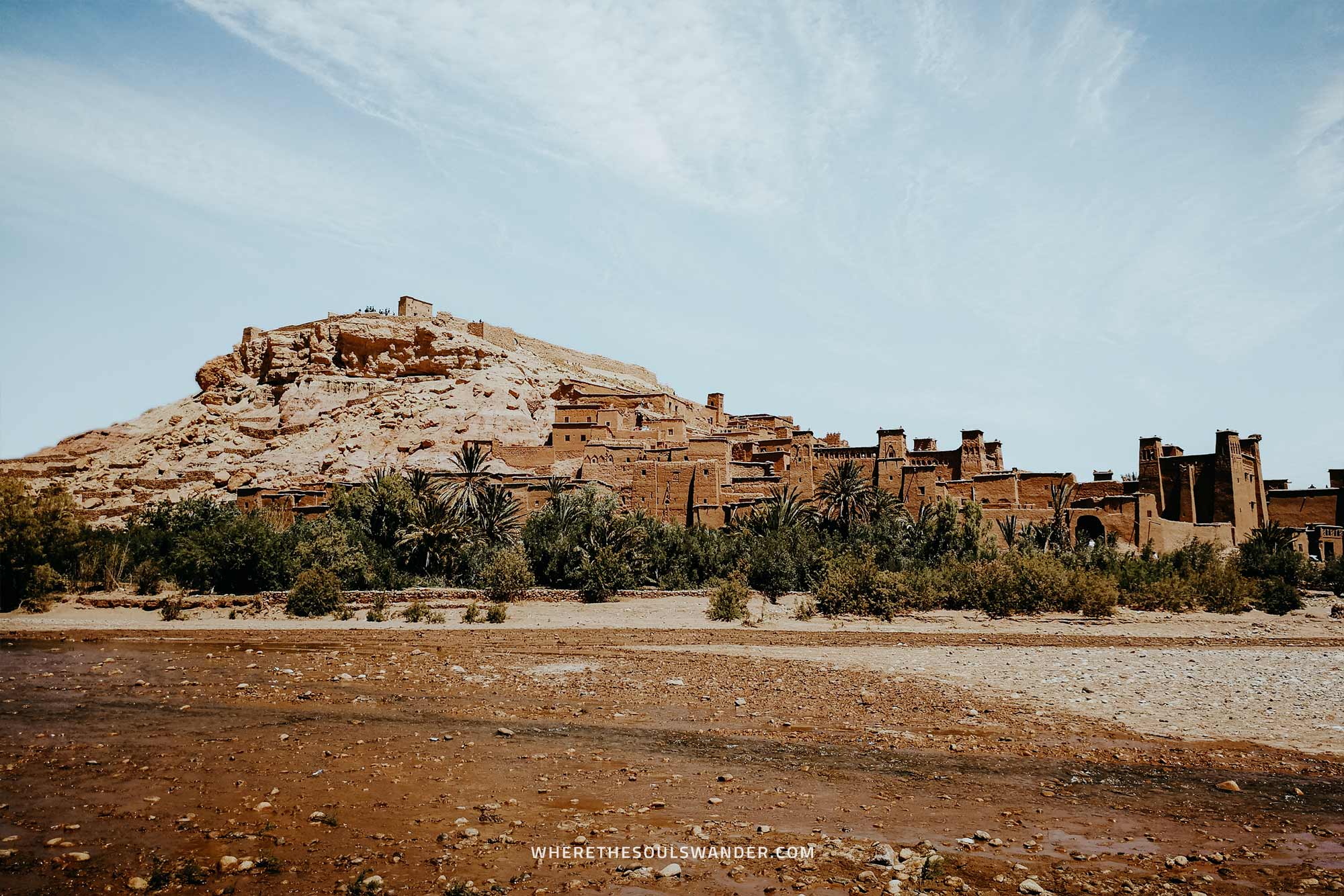
Boumalne Dades
The next stop on this road trip is Boumalne Dades, a quaint town in the midst of the eponymous Dades Valley at the heart of the Tinghir Province.
Encircled by a lush oasis, this region is home to one of the most picturesque stretches of land in the whole of Morocco, with hundreds of red-hued adobe houses lined up after the dense vegetation of the oasis.
During my time here, my driver guided us along the Route of a Thousand Kasbahs, a scenic route that runs straight through the Dades Valley, before enjoying a fresh mint tea in one of the many traditional carpet shops.
To complete the day, we drove further to Hotel Bougafer in Tinghir, where I settled down for a yum veggie tagine, before taking a good night’s rest.
Where to stay | For those travelling by car, I’d highly recommend Riad Dar Bab Todra as they offer well-designed rooms, a large outdoor swimming pool, and all the essentials to unwind after a long day of travelling.
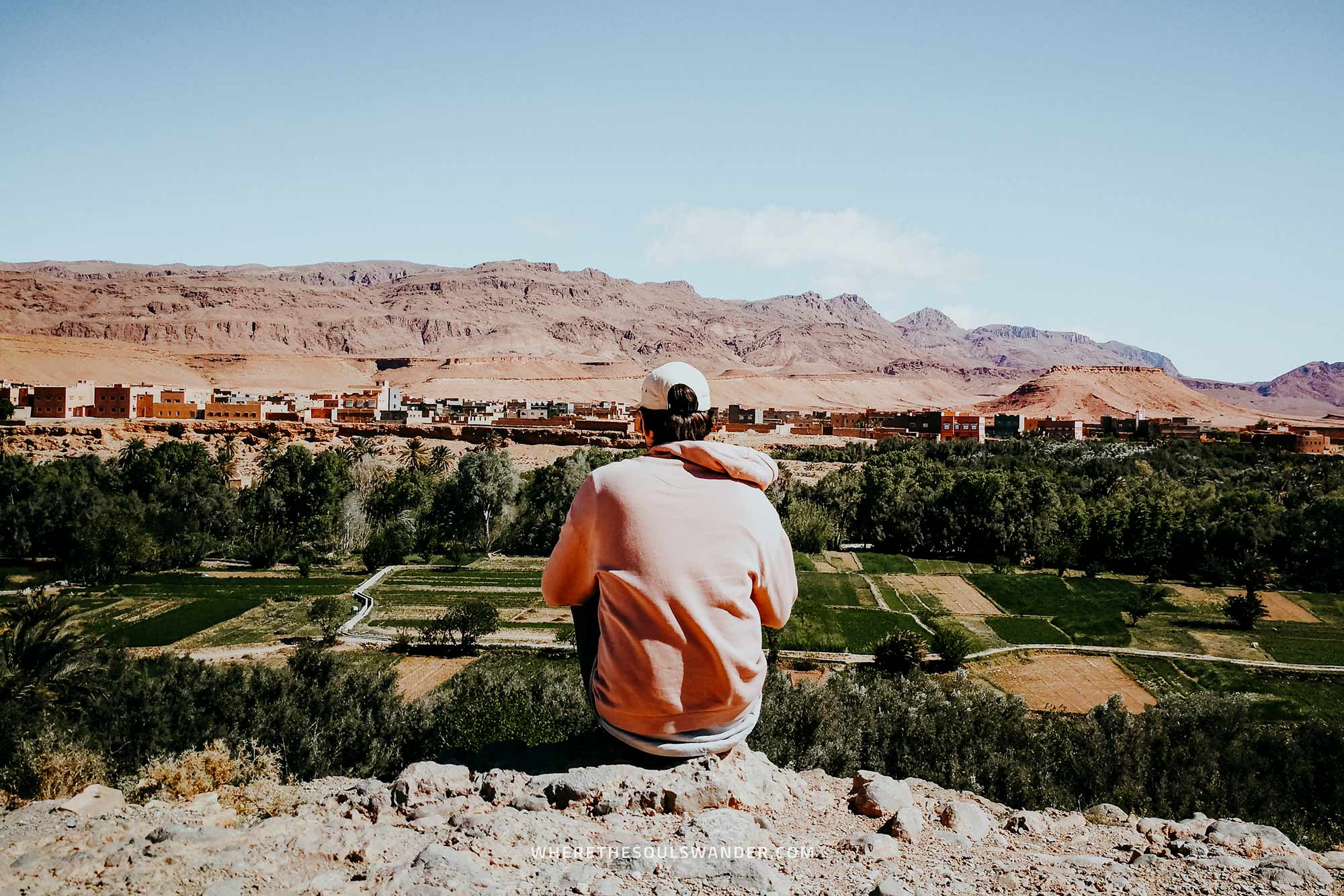
Day 2 | Tinghir to Merzouga
Todra Gorge
After an excellent breakfast, it was time to continue in the direction of our first stop of the day; the impressive Todra Gorge.
But before we reached Todra Gorge, we passed loads of verdant palmeraies, traditional Berber villages, and dramatic rock formations, making it one of my favourite stretches of road during this road trip.
Once entering Todra Gorge, I was welcomed by an incredible sight, with 400-metre high rock walls flanking either side of the narrow road that guided us into the gorge – it was an exceptional experience, and one you can’t miss when travelling in Morocco.
Unfortunately, our time here was limited, otherwise, I would have loved hiking the Todra Loop hike, a moderate 3-hour hike in the mountains above the gorge.
Where to stay | If you have more time since you’re making your own road trip, La Petite Gorge is an excellent hotel for those looking to spend the night close to Todra Gorge.
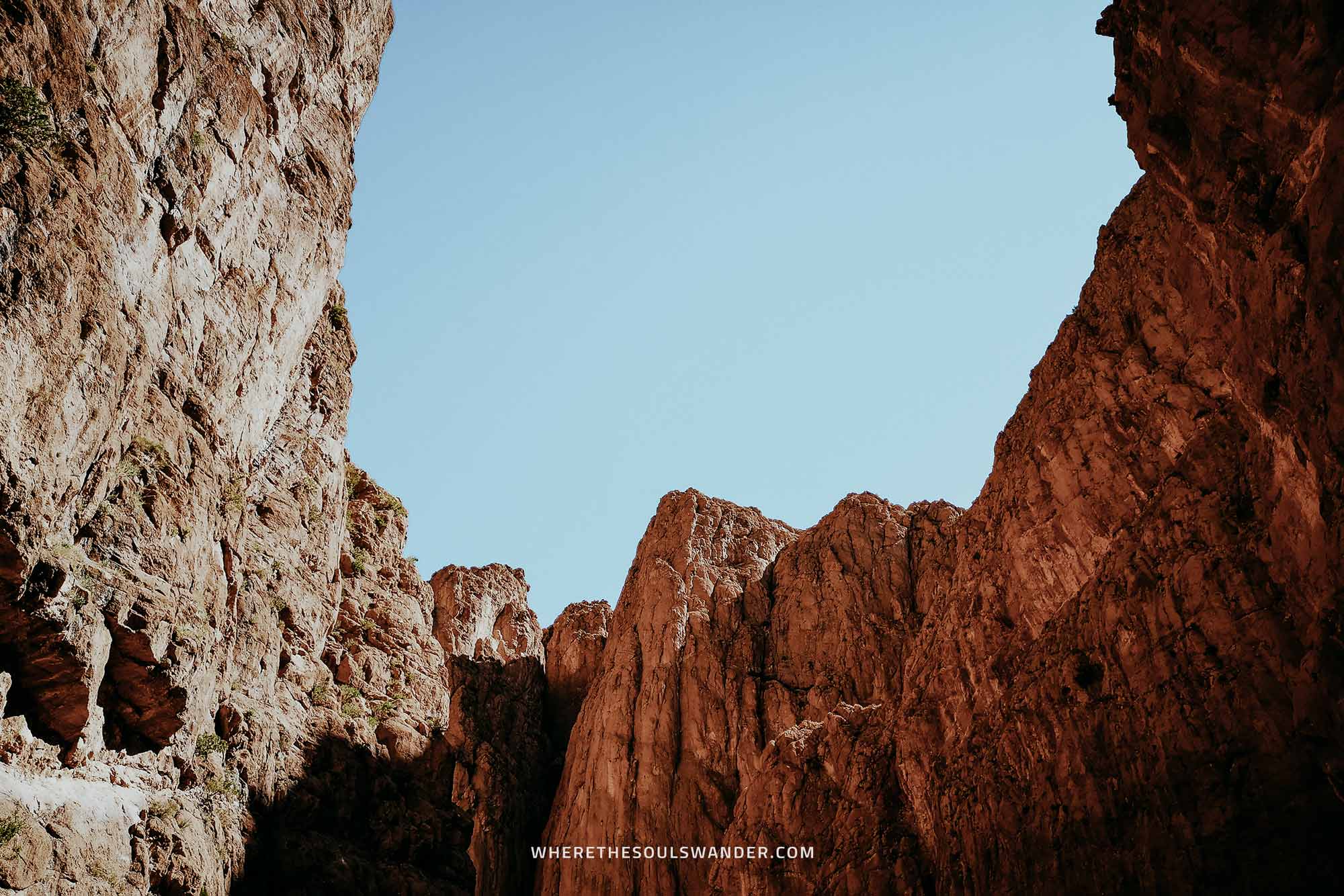
Merzouga
Then, after exploring Todra Gorge, it was finally time to venture to the absolute highlight of this Morocco road trip – Merzouga, a tiny remote village at the edge of the Sahara Desert that serves as the gateway to the Erg Chebbi dunes.
After a short break and another lovely mint tea in Merzouga, my means of transport changed, when I jumped on the back of a camel.
Bumpy and dusty as it was, the camel ride truly was an unforgettable experience, since we drove over the endless dunes while the sun slowly settled behind the horizon.
From Merzouga, it took about 50 minutes to reach my Sahara Desert camp in the heart of the dunes of Erg Chebbi and I’m pretty confident that the camels are well looked after.

Erg Chebbi – Sahara
Following the camel ride, I arrived at a small, yet cosy camp that was hidden between the sand dunes of Erg Chebbi.
Upon arrival at the camp, I immediately dropped my luggage in my tent and wandered around the dunes in complete silence, encircled by tangerine-coloured sand as far as the eye can see.
After taking in an incredible sunset from the top of one of the dunes, it was time to walk back to the common tent where I was served a lovely tajin and the Berber people played traditional music on their instruments.
On the way back to the tent, I took a moment to appreciate the deep blue sky that was filled with glittering stars, before I crawled under three layers of blankets to get a good night’s rest (the desert gets extremely cold during the nights).
Where to stay | For a unique experience in the heart of the desert, make sure you check out the Desert Heart Luxury Camp.
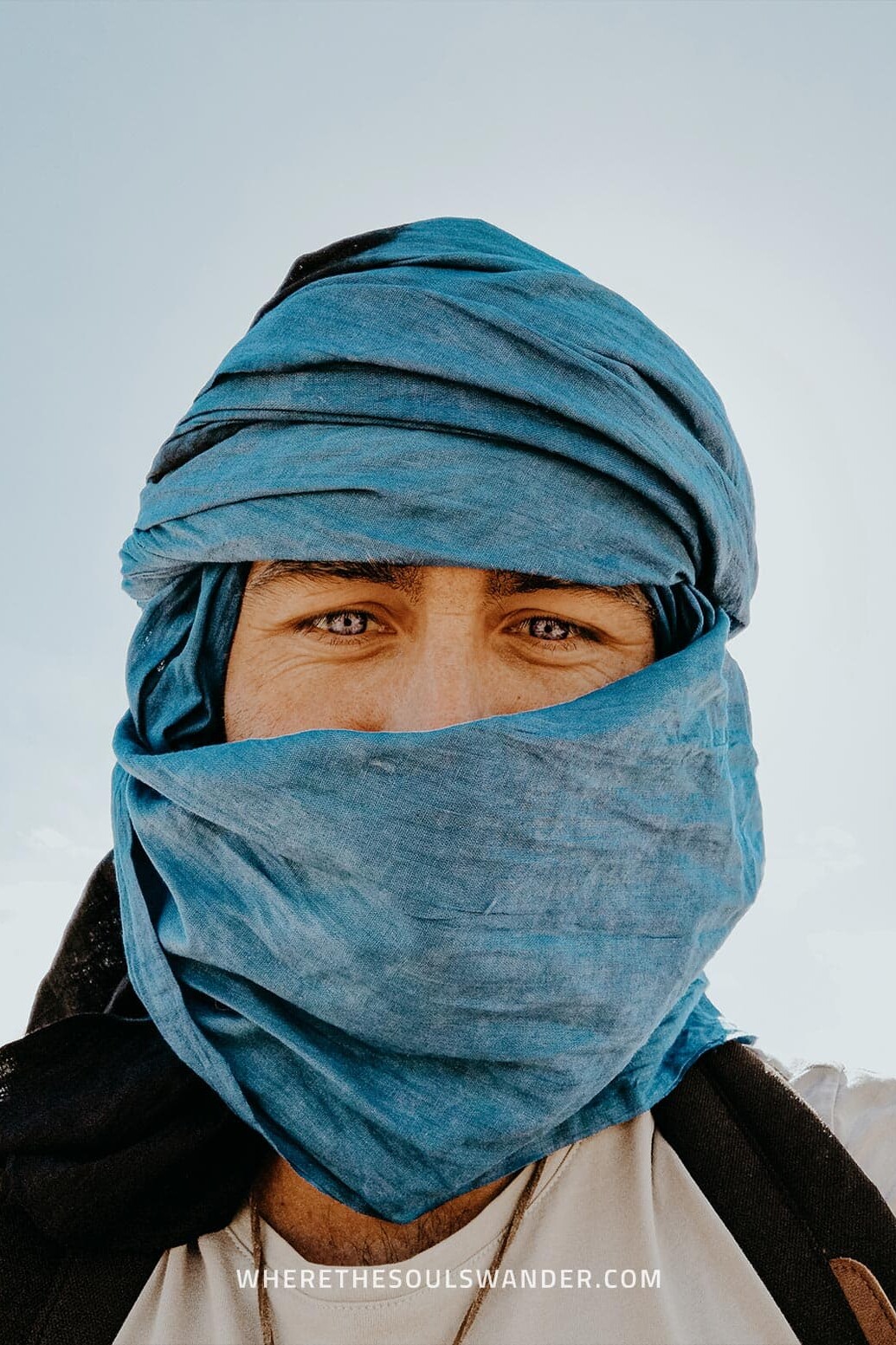
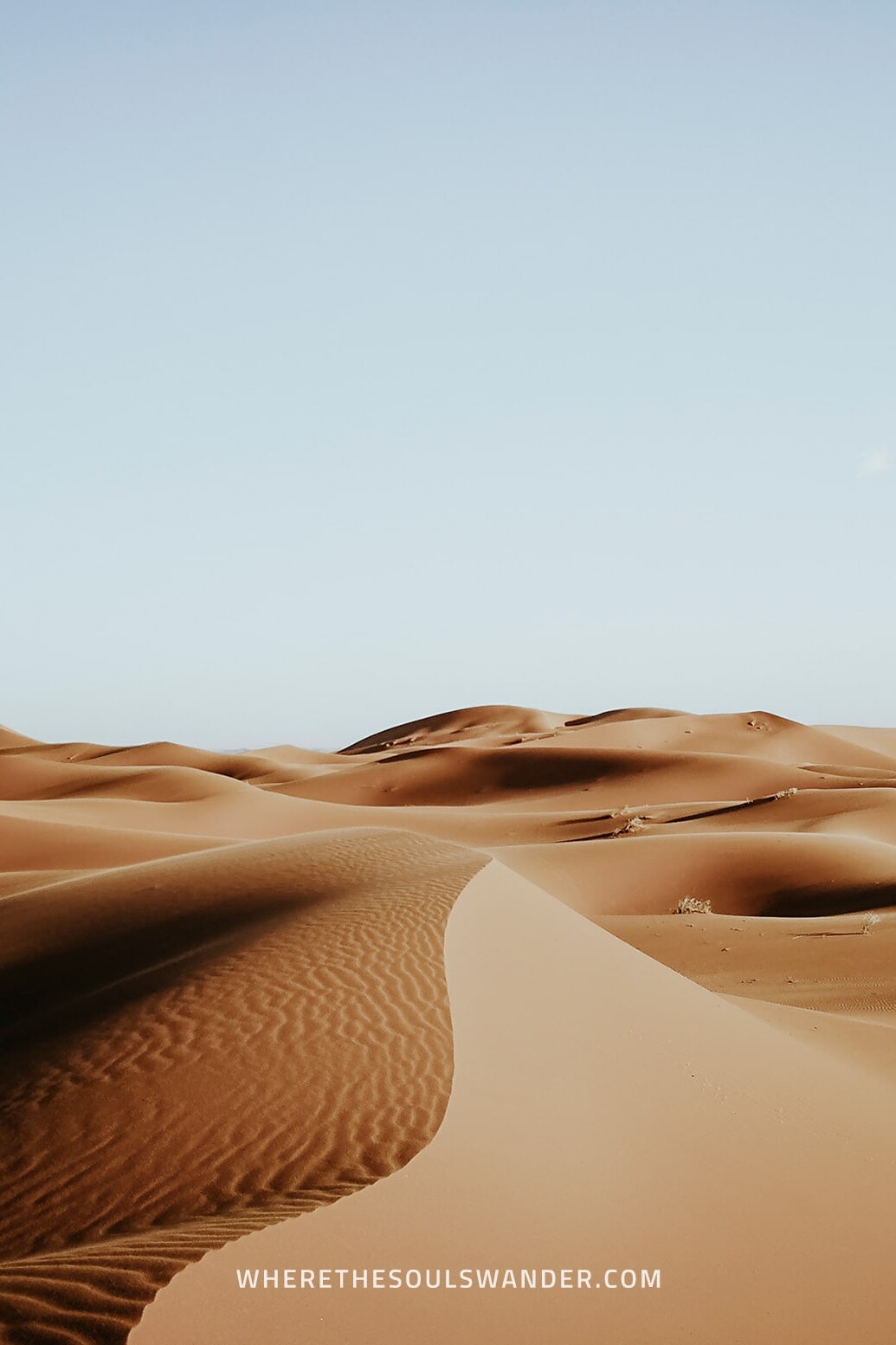
Day 3 | Back to Marrakech
The final day of my Morocco road trip was all about getting back to Marrakech, meaning we had a big day of driving ahead of us to make it back in time.
But before the 9-hour drive back straight to Marrakech, I still had time to watch an incredible sunrise over the rippling sand dunes, ate an excellent breakfast and drove back to Merzouga by camel – which was the perfect way to end this exceptional trip.
Then at around nine in the morning, it was, unfortunately, time to start the lengthy and exhausting journey back to Marrakech.
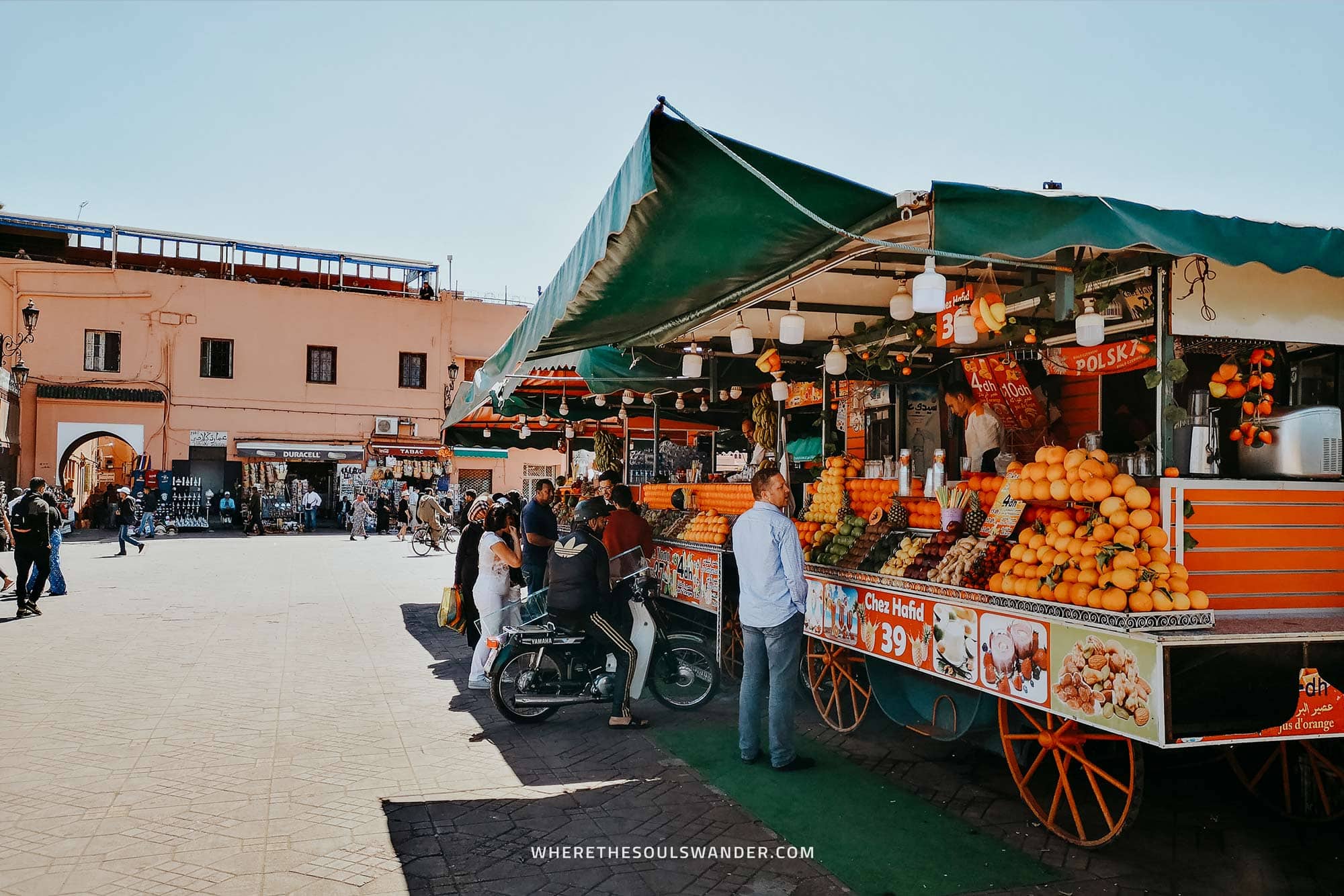
Best time to visit Morocco
Given Morocco’s location on the Northern tip of Africa, the country enjoys excellent weather year-round.
However, if you’re planning to follow this Morocco road trip in particular, I’d highly advise avoiding the peak summer months of June – early September, since most of the desert camps are closed due to the extreme heat.
For the above reason, I’d recommend planning your trip for the shoulder months of March – early May or September – November, when the temperatures are comfortable for explorations around the country.
I personally visited Morocco in early April and had perfect weather throughout my entire trip.
Safety in Morocco | Travel insurance
When travelling this big wide world, I never go on an adventure without my essential travel insurance sorted out, and though I felt safe in Morocco, I recommend anyone travelling here to do the same.
Though you rather don’t think about the things that could go wrong, there’s always a chance that something will happen, and when that’s the case, it is better to be safe than sorry.
To help you find the right policy, I’ve listed two of my favourite options below:
Heymondo | Whether you’re going on a 3-week backpacking trip, or planning a long stay somewhere abroad, Heymondo has excellent insurance options either way – plus full COVID-19 coverage and a handy app with 24-hour medical assistance. Readers of WTSW receive 5% off any insurance policy, more information here.
World Nomads | If you’re an adventure seeker, backpacker, or planning your once-in-a-lifetime world trip, make sure you check out World Nomads, they designed the perfect travel insurance to help you travel safer and smarter. Do note that they’re not covering COVID-19-related claims.


